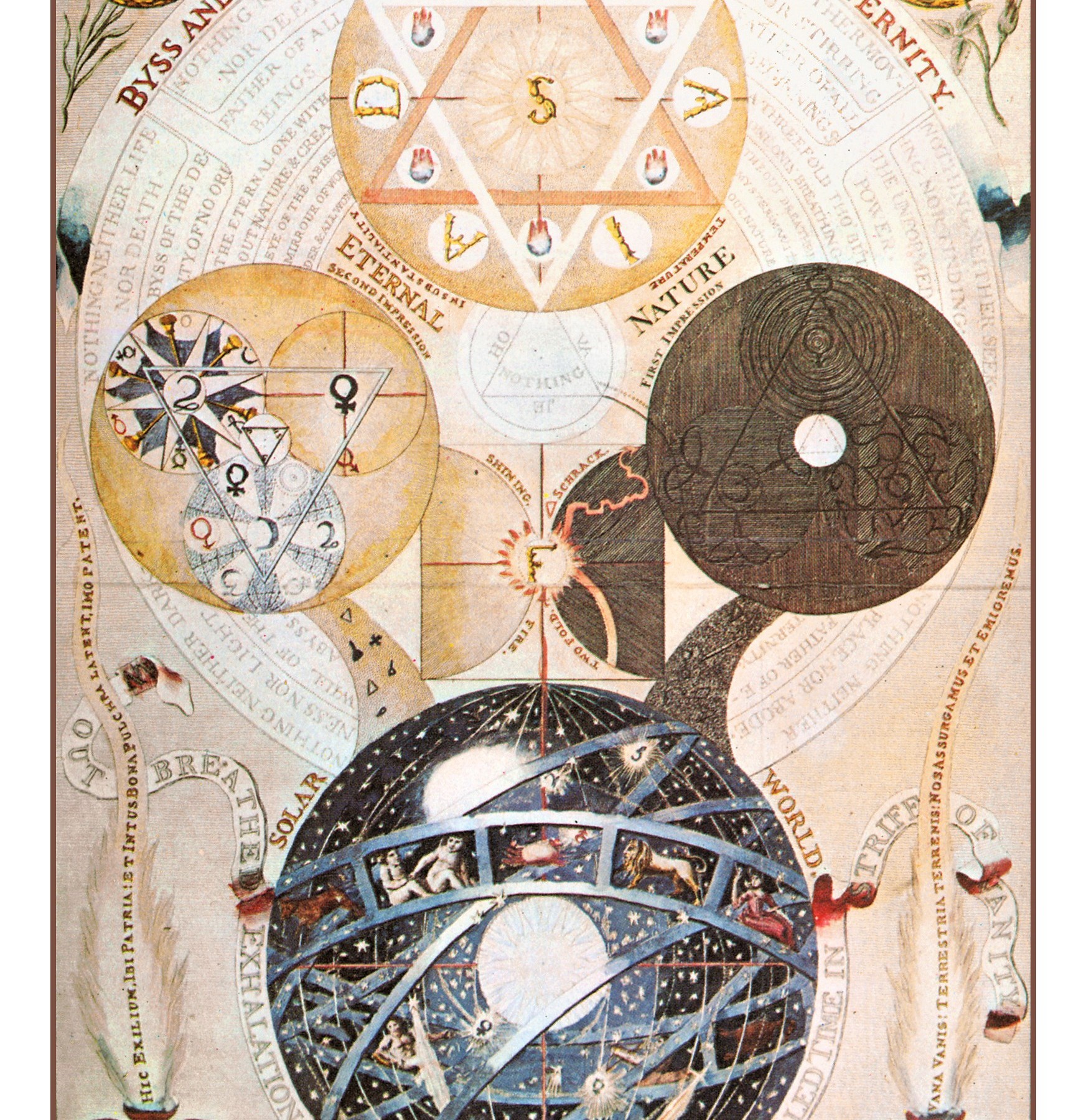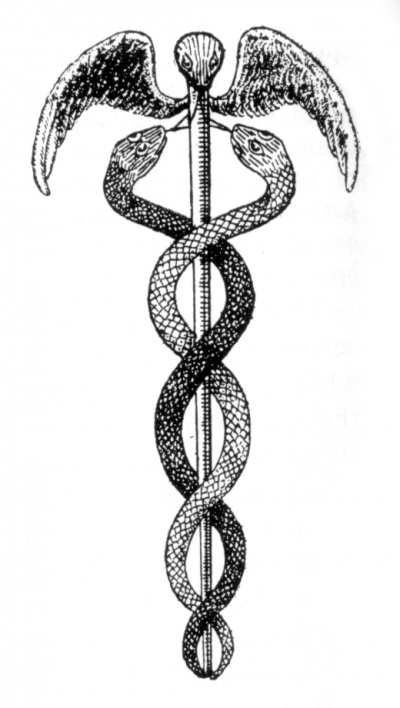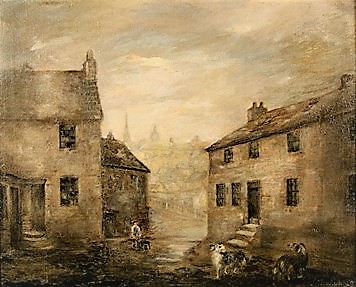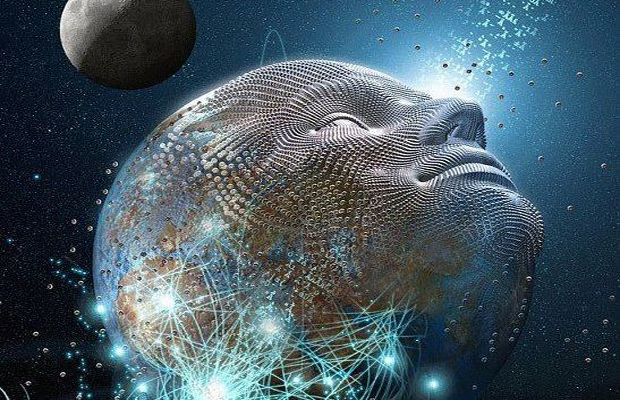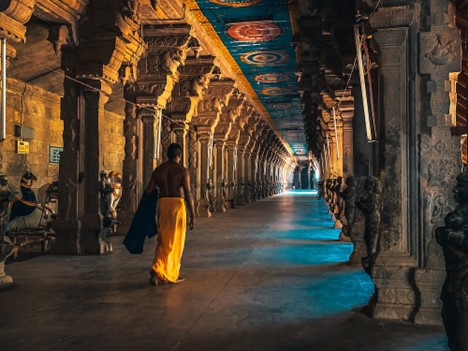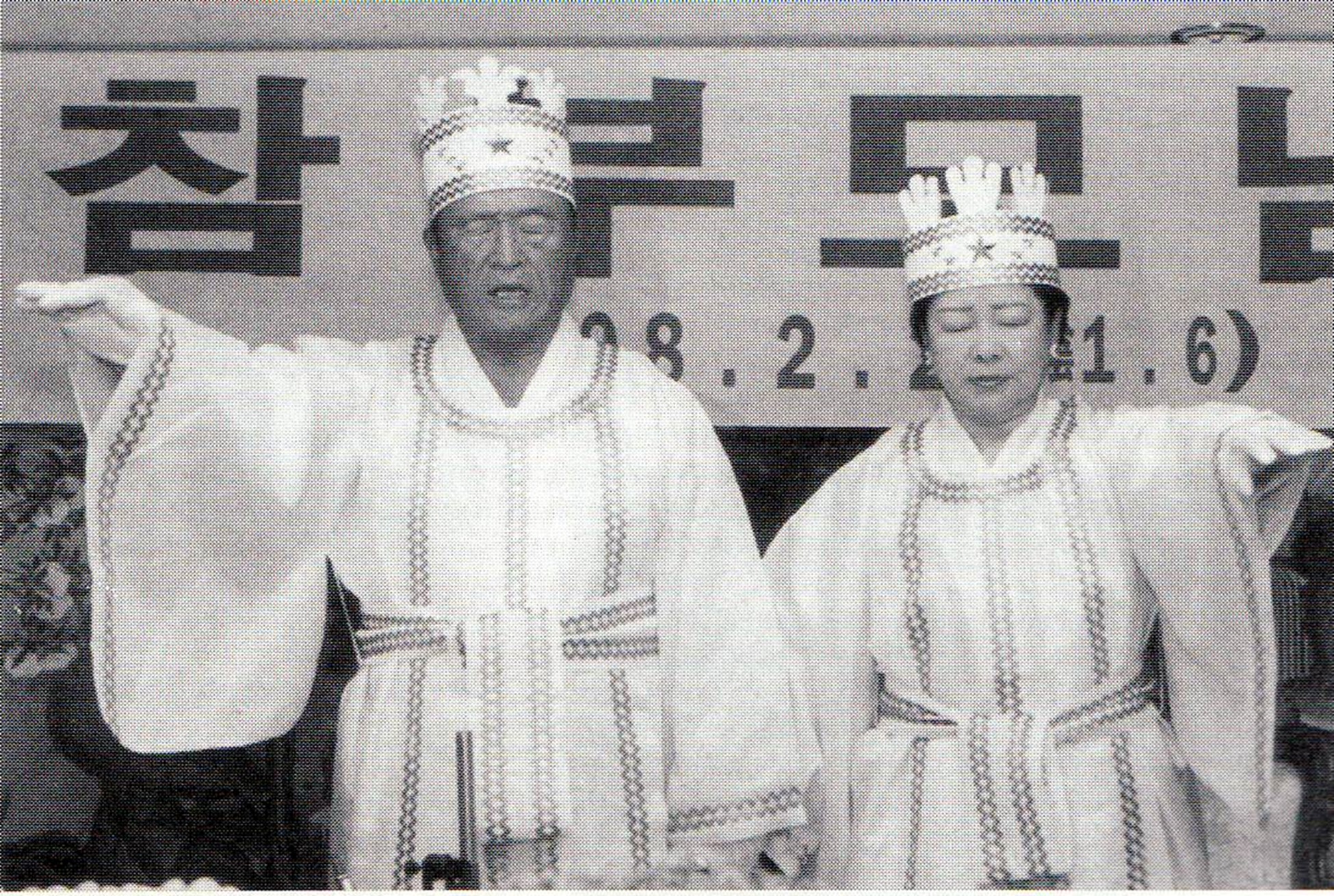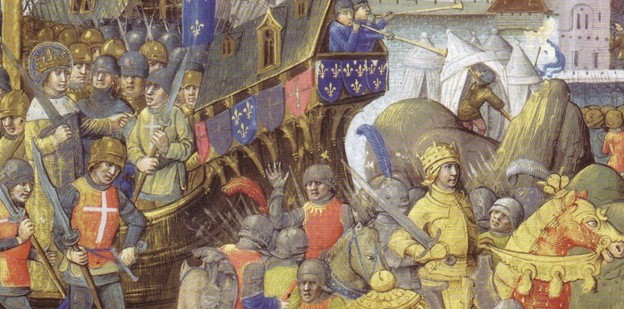Universal Freemasonry
TO THE GLORY OF GOD & THE PERFECTION OF HUMANITY
Theurgic Foundations of Freemasonry: Part 4
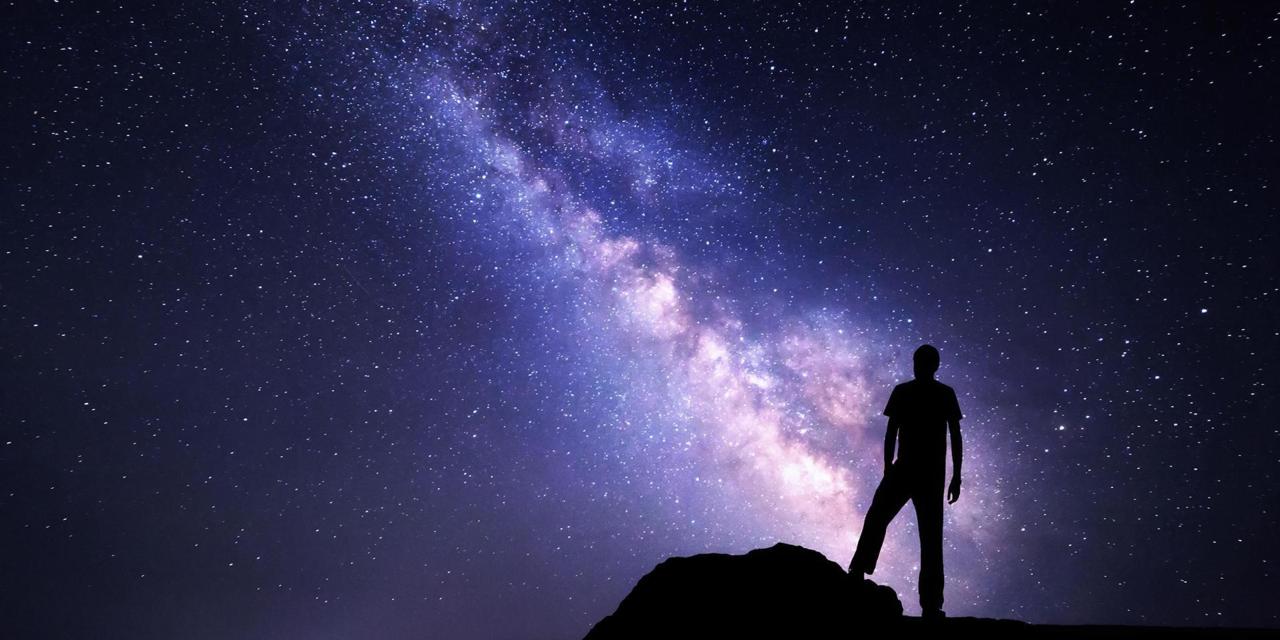
The third aim of Esoteric Freemasonry, as outlined in our first three posts, is that of henosis, or the unity of the human with the divine. To understand henosis, we need to briefly look at the Neoplatonist cosmology. The Spiritual Universe, according to Plotinus, results from a series of emanations from the Source, Divinity:
- To Hen – The Divine, the Deity without quality
- Nous – Mind and Universal Consciousness
- Psyche – The soul of the individual and of the World
- Physis – Nature, Matter
In this Neoplatonist Greek cosmology, there was no descent into an underworld as there was no underworld. For them, katabasis was the descent of the soul into a physical body upon incarnation. Hades was allegorized and viewed as the world that we, and all beings, inhabit. Therefore, there was no need to descend to understand divine consciousness. The only way to go was to ascend. Anabasis.

Consequently, to achieve unity with the divine, the human needed to raise himself through the emanations of the divine, anabasis, and theurgy was how this anabasis was and is achieved. The use of theurgy, in the practice of spells, incantations, invocations, and ritual movements was developed primarily by Porphyry, Iamblichus, and Proclus, but these developments were built off the earlier work of Empedocles, Pythagoras, and Plato.
Early Neoplatonist works, particularly the Chaldean Oracles, cited the many spiritual beings who traveled within and between these emanations, who lived within each realm. References to these beings have lingered until today albeit in different forms and achieving different purposes: examples are angels, daemons, devas, and elementals. These beings are invoked and requested to help the neophyte on their journey, so they make no missteps or misspeak. They guide the neophyte in the work at his request, and this is done in Freemasonry by the officers and attendees at an initiation ceremony.
Medieval theurgists took the writings from the Neoplatonists and moved them even further towards these spiritual beings becoming active intermediaries for the human toward the Source. With the advent of Christianity, the beings split into those that were for personal gain and those that were for humanity’s gain. Personal gain was considered evil and self-serving whereas those who worked for humanity, or Christianity, were for the betterment of all. Theurgists would summon angels to converse with and seek advice from so that they might receive God’s will. The theurgists would ask for prophecy, or scripture to be explained to them and to understand further the nature of the physical universe so that they may control it. It’s from this time that we see the idea of “magic” being “evil” growing in stature.

Looking at the doctrine of emanation from a Masonic point of view, Freemasonry has continued this tradition and taken back some of the ideas of achieving henosis that originated in antiquity. From the point that the neophyte has, in his initiation, traveled his journeys until he is poised on the threshold of a heavenly world. He has moved from his earthy existence and is within the realms of his “birth,” as a child of heaven. From here, a series of powerful actions take place to bring him through the final portal to the level of the next emanation – in this case, Psyche, the place of the personal and world soul. He is the presence of the beings who work at this level: the officers and columns of Freemasons within the Lodge. Also, present are those intermediaries that exist between the realm of Psyche and Physis, attending in a “temple not made with hands, eternal in the heavens.” He has achieved this anabasis through all of their theurgic efforts. One thing many neophytes experience during this time in the ceremony is the sense that the “room is full of people,” that there are many more beings in attendance than actually are. Couldn’t this portal, constructed within the center of the temple and opened by Divine, ritual magic be the reason for this feeling?
There are many, many more aspects to the Masonic ritual that could be considered theurgic and much more to explore throughout the degrees of Freemasonry. The Neoplatonist philosophy, which informs so much of Freemasonry, should not be considered only a mental pursuit. We derive much of the active principles of Freemasonry in these Neoplatonic works, and delving into these origins enrichens our ritual a hundredfold. In fact, to fully achieve the initiatory anabasis, every M.M. must consider themselves a theurgist. This is not to say that Freemasons should learn spell casting or create their own invocations, especially in the modern, uneducated, and profane sense of “theurgy.” The theurgy aspects of the ritual are already deeply embedded in all that we do before, during, and after a Lodge meeting. The theurgist is a practitioner of divine magic, not a practitioner of magic in the world of appearances. We are educated by employing charges, writings, and study to just begin to understand what is necessary for the improvement of all humanity. Active participation in Freemasonry educates the neophyte in what is necessary to journey from the practical aim of awakening our underdeveloped capabilities towards, I believe, henosis, the goal of Esoteric Freemasons for all of humanity.

Bibliography (For All Parts)
- Chiaradonna, R. a. (2023, Winter). Iamblichus. Retrieved from Stanford Encyclopedia of Philosophy: https://plato.stanford.edu/archives/win2023/entries/iamblichus/
- Curd, P. (2007, 03 10). Stanford Encyclopedia of Philosophy. Retrieved 12 02, 2023, from https://plato.stanford.edu/entries/presocratics/#WhoWerPrePhi
- de Biasi, J.-L. (2018). Esoteric Freemasonry: Rituals and Practices for Deeper Understanding. Llewellyn Publishing.
- Janko, R. (1984). Forgetfulness in the Golden Tablets of Memory. The Classical Quarterly, 89-100.
- Kupperman, J. (2014). Living Theurgy: A Course in Iamblichus’ Philosophy, Theology and Theurgy. United Kingdom: Avalonia.
- Newman, P. (2023). Theurgy: Theory and Practice: The Mysteries of the Ascent to the Divine. Rochester, Vermont: Inner Traditions/Bear & Company – Kindle Edition.
- Taylor, T. (. (1821). Iamblichus on the Mysteries. Walworth: Harvard University Press. Retrieved from Google Books.
- Various. (2023, December 28). Emanationism. Retrieved from Wikipedia: https://en.wikipedia.org/wiki/Emanationism
- Wescott, W. W. (2023, December 28). The Chaldean Oracles of Zoroaster. Retrieved from Sacred-texts.com : https://sacred-texts.com/eso/coz/index.htm
Theurgic Foundations of Freemasonry: Part 3
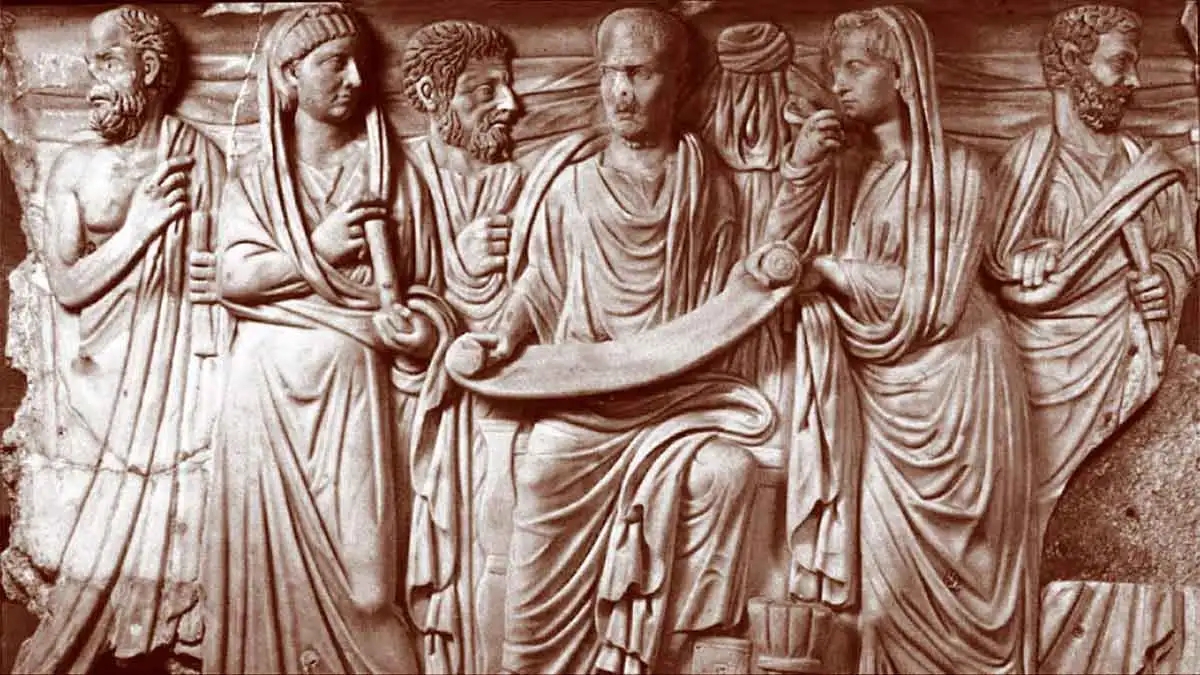
The second aim of Esoteric Freemasonry is to guide the neophyte to understand the cycle of life and death, and the physical/spiritual path we are all destined to take. This is achieved through what the Pre-Socratic philosophers called katabasis. The meaning of this word is to “march in descent.” The analogy used was the descent into the underworld, to gain knowledge, understanding, or a desired personal result. Many of the ancient mystery initiations were built on the myth of a human, demi-god, or god descending to the underworld to converse with Hades, for example. For Empedocles, his death in the crater of a volcano was indicative of his descent into Hades and was thereafter esoterically represented by a mixing vessel (krater), where the components of earthy and spiritual matter were separated. Like Freemasonry, these initiations were allegorical, with each aspect representative of a greater concept.
Katabasis is evoked in the pre-ritual ceremony for the Masonic neophyte. In many Masonic organizations, they use a chamber where the candidate must reflect on his life, and this chamber is symbolic of an underground cave. He must descend to commune with the spiritual voice inside. He is given instructions on what to do with materials that lay before him, and he is told “To Separate and Unite are the great processes of the universe.” Here the neophyte is surrounded by the reminders of his earthly life. Here he contemplates the ceremony he is about to undertake, his Initiation into Freemasonry. Figuratively, he descended into matter to achieve something beyond himself, to create something that is part of a whole. What that is of his own mind and making.

This descent into the bowels of the earth is found not just in the Orphic and Pythagorean mystery initiations but also in the Eleusinian and Dionysian mysteries. In each of these, the human or god must descend to find life once more. We can conceive of these like the Hero’s Journey, as outlined by Joseph Campbell. However, it’s not the singular journey of the earthly man’s heroics, but the heroism of becoming incarnate to further the evolution of humanity. The idea is not to reside forever in the earth, or on it, but to move through the necessary stages to the next level.
The neophyte continues his katabasis when he is asked to prepare himself for induction. This is reminiscent of the pools of Lethe and Mnemosyne, forgetfulness and memory, respectively. To drink from the pool of Lethe (lee-thee), forgetfulness, is to forget past lives, lessons learned, and our divine nature. In the Orphic or Pythagorean mysteries, the neophytes were directed to drink from the cup of Mnemosyne (neh-mow-zeen), or memory, so they may be able to get off the “wheel of reincarnation into matter” and commune with the gods. This direction to drink, in these ancient ceremonies, comes after the neophyte declares that “I am a child of the earth and starry heaven, but the heaven is my birth.” This is answered with the following dialogue, “…when you have drunk, traverse the holy path which other initiates and bacchants tread in glory. After that, you will rule amongst the other heroes.” Here, in Freemasonry, our neophyte is given a similar challenge: to fall not in the struggle but to conquer.

The would-be Freemason must continue this katabasis until he reaches the point where he has given up his physical, emotional, mental, and spiritual substance and become his pure self. This process is enacted by the entirety of the officers and Lodge for all initiations and the divine magic, theurgy, is guiding the candidate. In this instance, the officers are the theourgoi, those that perform the divine magic in the vehicle of the entire ritual. Why can’t one simply experience katabasis on their own? We in fact do experience it on our own, if we see that we enter this Earthly life alone. We remove ourselves from the entirety of consciousness, a veritable pool of thought, to become singular and individual. This is the human experience, after all. However, to remember our ancestor’s words, our “heavenly birth,” we need to remember what it is like to work together with all consciousness. We require others who have traveled the path, remember, and are trained in the ways of communing with divinity, via theurgy, to help us along the way. While we may be a world of individuals, we are not seeking to stay here. We’re seeking to achieve henosis, which we will discuss in Part Four.
Theurgic Foundations of Freemasonry: Part 2

I believe that theurgy is not commonly understood in the wider modern world. To define it in modern terms, we call it “divine magic.” Jeffrey Kupperman, author of Living Theurgy: A Course in Iamblichus’ Philosophy, Theology and Theurgy., noted it’s origin is “god-working.” While theurgic practices and practitioners had been in place for thousands of years previous, it wasn’t until the 4th C.C.E. writing of the Chaldean Oracles that we have written evidence of theurgy. “For the theourgoi do not fall under the fate-governed hand.” From this 2000-year-old fragment of writing, we understand that those who practiced theurgy were considered in charge of their own destinies.
Through societal and cultural shifts throughout thousands of years, the knowledge and use of the term “magic” has become personal, individual, and disassociated with religion and holiness. There are many reasons for this alteration. However, as members of a modern mystery school that developed from Neoplatonic philosophies, Freemasons must remember the original source of this power, as mentioned above: divine, omnipotent power was and is magic.
To achieve understanding with the gods, a process of spells, invocations, rituals, and usage of divine symbols was necessary to bring about divine communion. This is done today, still, in most major religions and in some of our secular off-shoots from religion. We have eggs at Easter, lights at Hannukah, and the Sufi dervish. Communion is symbolism in theurgic form, as is the use of the classical physical elements in any initiatory ritual.
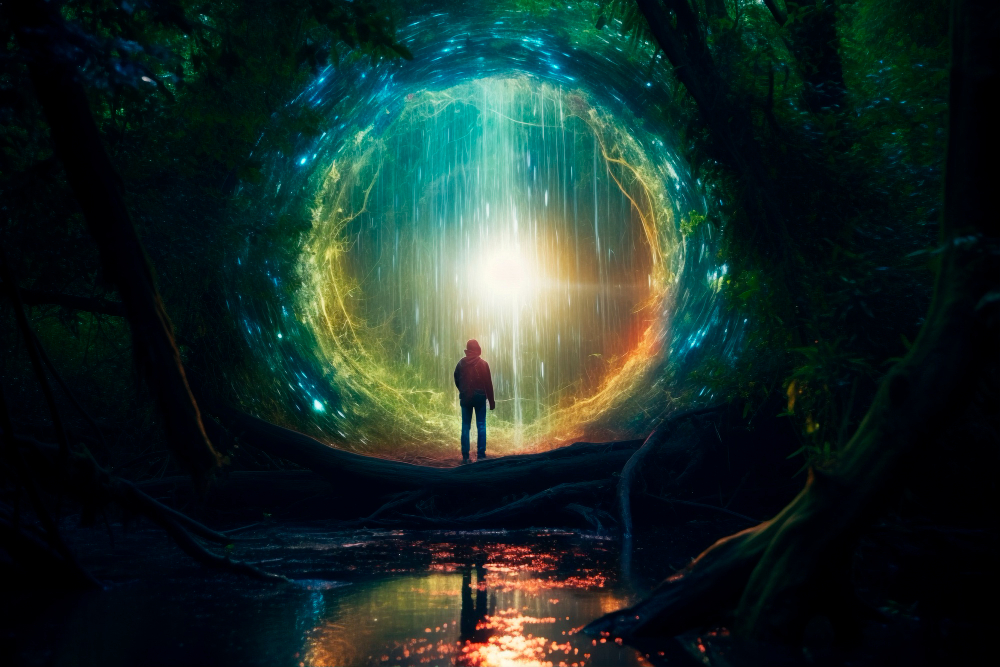
The desired results of “perfecting humanity” come about because Freemasonry is an experiential process that “quickens the evolution” of the individual. This, in turn, develops the whole of humanity. The first aim of Esoteric Freemasonry is to develop unused and underdeveloped talents and capacities. Why is that the goal? To what end?
The neophyte is told that “…the facts of the invisible world were revealed to the pure, and thus within each religion men were found, who, knowing the secrets of this world, could explain and defend religion.” How does one become adept enough to be able to grasp the facts of the invisible world? We do this through a series of allegories and the contemplation of symbols found in our Initiation, and all other Masonic rituals. The process of Freemasonry is not to relate or instruct what symbols mean as it is adogmatic. However, there are guideposts, and landmarks, that tell the neophyte that this is Freemasonry. To gain the ability to work as an officer in ritual, the initiate must spend time after their initiation learning the rules, regulations, mores, customs, and hierarchy that Freemasonry outlines. Neophytes are required to study and to act on those studies with questions and contemplation, to cultivate their own cosmology.
More than this, the neophyte is instructed to develop the ‘gifts’ with which God has endowed him, amongst many other improvements to his character. These are well-laid out in the First-Degree Traditional Charge, one which every Apprentice must listen to before taking other degrees. The foundation of these teachings is not to force someone to “follow the rules.” It is a structure laid out whereby the neophyte is guided to find their own path through the darkness, to have their own revelations, and to make “crooked things” straight. This is done through observation, silent contemplation, and asking questions. This method is the basis for our Masonic work and should be applied throughout our Masonic career. Perhaps this is why it is often said that all Masons, regardless of the degrees they pass through, are always in the “First Degree.”

I want to be clear that Freemasonry can’t explain to the individual every pattern, every symbolic meaning, or every allegory contained within its rituals. Freemasonry provides opportunities for its adherents to exercise and grow the capabilities required to develop those “unused and underdeveloped talents.” While this specific objective of Esoteric Freemasonry is not exactly theurgy, it is required to be able to move into the next two theurgic aims as listed above.
It should be noted here that this is the reason, I believe, that philosophers were the first theurgists. To comprehend Divinity, we need to appreciate and revere Nature, to read the symbols and patterns there which inform us of the Divine’s Will. Ancient philosophers studied all parts of the human experience and thus came to understand the divine nature of the entire universe to develop their cosmology. Only then could they seek to commune with Divinity, and further the knowledge of the human race.
In Part Three, we will delve into the second objective of Esoteric Freemasonry, that of fathoming the cycle of life and death.
Theurgic Foundations of Freemasonry: Part 1
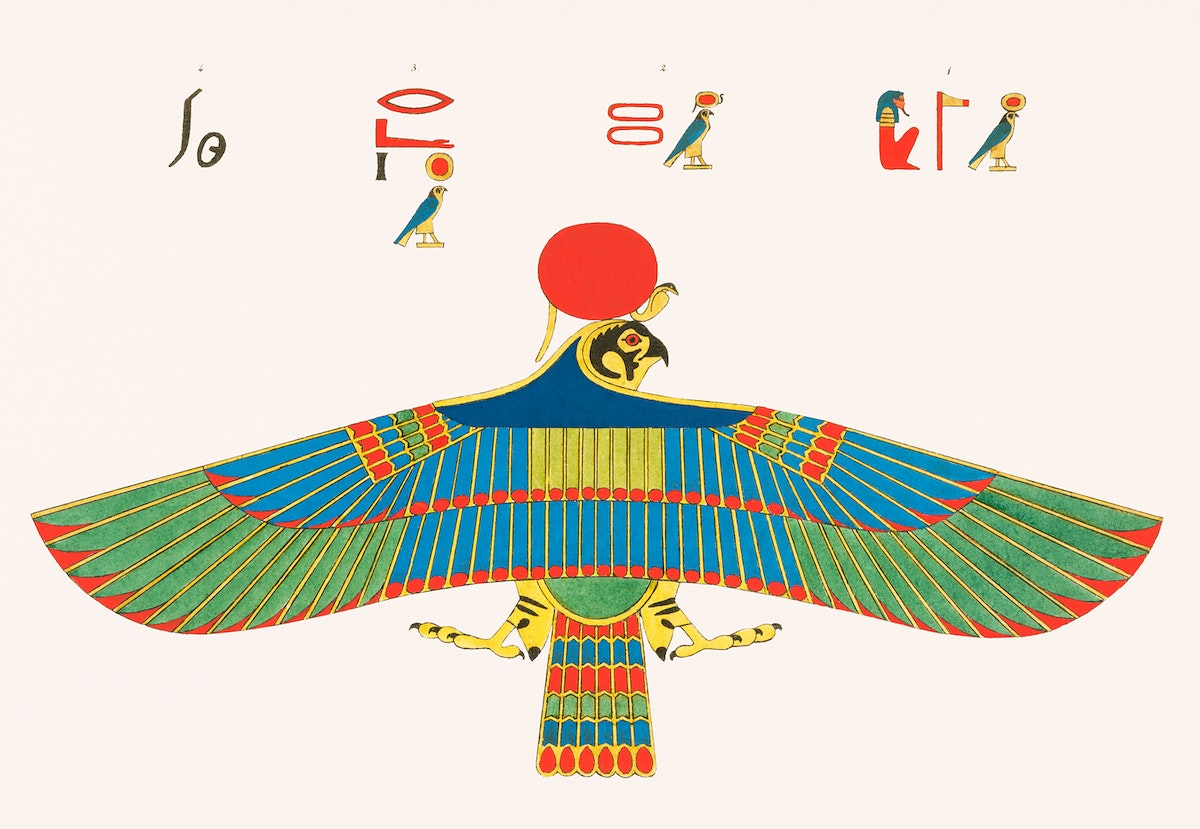
“The sun god (Atum) Ra was described as the ba which “came forth from Nun,” the ba “which Nun created.” In these terms, the ba is a potentiality which is actualized. According to these statements, Chaos produced Order. Nun, primordial Chaos, generated the god (Atum) Ra who then made the ordered cosmos. This is actually extremely similar to science’s version of Big Bang theory. Randomness – primordial Chaos, formlessness or non-existence (non-being) – miraculously produced its opposite: a formed, ordered cosmos. In truth, science hasn’t moved on at all from Egyptian mythology. It has no better explanation for how the cosmos was produced than ancient Egyptian priests spinning mythological webs did.”
Think Like an Egyptian: How the Ancient Mind Worked, Steve Maddison
This Egyptian myth of creation is not often repeated, and it has no name, but its theme of the power of divine magic and duality is, I believe, a principal narrative on the path of humanity’s perfecting. To understand this beginning, we first need to comprehend humanity’s early understanding of the word “divinity” and the word “magic.” To the Egyptians, most especially in the Old and Middle Kingdoms, these two words were synonymous. Magic is the power of divine creation, although its characteristics were not defined in any translated texts. In the creation, noted in the quote above, what was not noted was that in attendance at this divine birth was the god Heka. Heka was considered the power, omnipotence, and wisdom, that allowed Atum Ra to manifest. Thus, Heka and heka meant the same thing: divine magic.
“I am he whom the Lord of all ((Atum or Ra) made before duality had yet come into being … the son of him who gave birth to the universe … I am the protection of that which the Lord of all has ordained … I am he who gave life to the Ennead of the gods … come to take my position that I may receive my dignity. Because to me belonged the universe before you gods had come into being. You have come afterward because I am Heka.”
Heka: The Practices of Ancient Egyptian Ritual and Magic, David Rankine
This fusing between the concepts of magic and divinity is a state that the modern mind, with its baggage of the past three thousand years, cannot quite grasp. “To appreciate the Egyptian view of magic, we need to accept that to the Egyptians magic was not considered strange or eccentric, but a part of daily life, to which everyone resorted. Magic blended seamlessly with religion and medicine, being seen as part of a holistic worldview.”
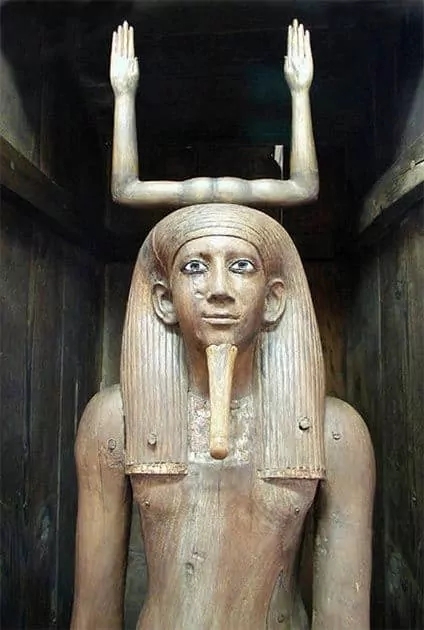
An example of this mingling is the Egyptian Book of the Dead or The Book of Going Forth By Day. These papyrus scrolls were placed in the sarcophaguses of the dead so they could accurately recite the necessary spells and invocations to commune with the gods and to make the appropriate responses necessary to ferry their souls toward the afterlife. Spells in this context should not be interpreted as working to further personal gain or create a materialistic outcome; these were ritual texts set as guides to enable the dead to converse with the gods and goddesses and progress the human soul toward its journey to support the continuation of the world. The Egyptians did not see the realm of death, the Duat, as separate from the earthly realm, insomuch as they are one “world” to be traveled. Both realms were inhabited by the gods and their intermediaries. The only difference is that one involved a body and the other did not.
These funerary texts were created around 5000 years ago, and were in use up through the Hellenistic period, throughout Egypt and northern Africa. One might say we’ve “gone past the need for that kind of thinking.” However, it seems that to understand the genesis of magic in our present construct of Freemasonry, we must understand the syncretic traditions that have been incorporated into our rituals. To understand where we are starting with the idea of “magic,” we need to be aware that to the ancient human mind, magic and divinity were one and the same.
What is the magic we see within Freemasonry? To understand this, we must really look at Freemasonry’s mission and purpose. To call Universal Freemasonry an esoteric Masonry would be very fitting. Indeed, the Universal Freemasonry website (https://universalfreemasonry.org) has a statement about Esoteric Freemasonry:
Esoteric Freemasonry is not mere speculation or frivolous imaginings; it is the fulfillment of the work that Freemasonry itself charges us with. Our work is the creation of a Universal Religion, a solid foundation upon which all human beings can build. This can only be done in unity and the keys to this unity can be found just beyond the gates that are guarded by the symbols of Freemasonry.
To break this down, and for the purposes here of discussing the magic involved in Freemasonry, we can say that Esoteric Freemasonry has three unique and specific objectives:
- Awaken the unused and underdeveloped inner human abilities, so its adherents can understand the symbols, allegory, and patterns delivered in its ritual.
- Teach its adherents about the cycles of life and death, in their small world and the universe as a whole, through the process of katabasis.
- Stress the importance of the unity of humans and divinity, which is known as henosis, the product of anabasis. (author amended, de Biasi, 2023)
These objectives or aims are not done in any particular order or fashion but are developed through the years of working together in a Lodge, where the ritual is taken seriously and executed with thought. Development takes place through contemplation of symbols and using theurgy (Greek, “god-working”). Theurgy is also known as divine or ceremonial magic.
Theurgy may be seen as the framework of our Masonic ritual. The lessons contained in these three objectives of Esoteric Freemasonry are cyclic in nature, much like the upward spiral we see within King Solomon’s Temple. Thus, they cannot be learned in a linear stream but by repeated trials and approbations.
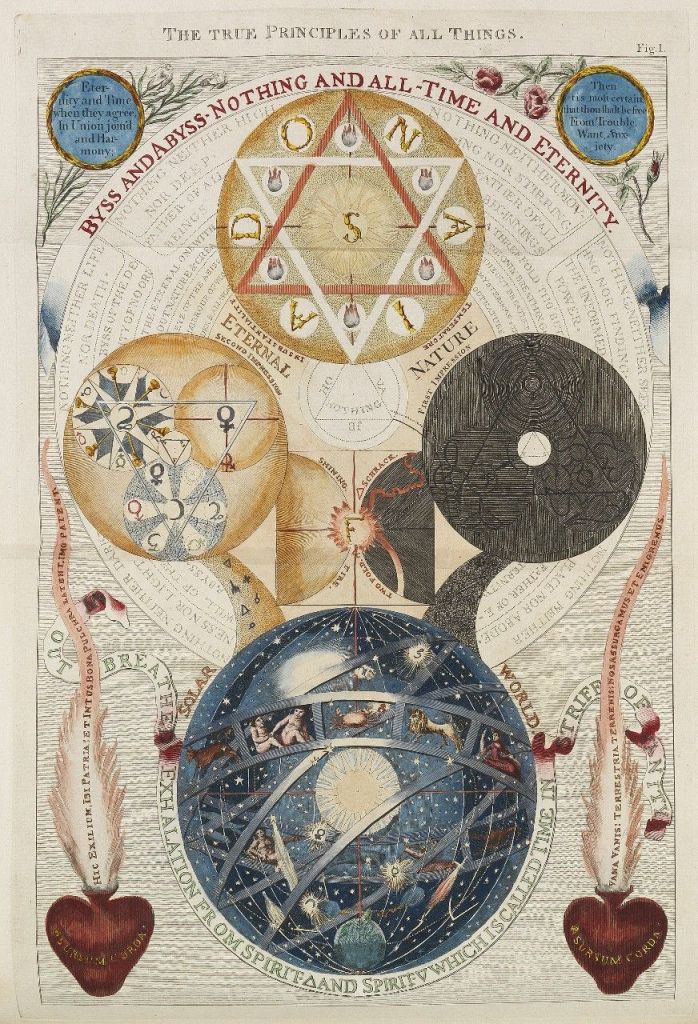
As we move through this series, it will be important to remember that the modern mind and the ancient mind do not think the same way about cosmology. As Esoteric Freemasonry is built on many traditions, including theurgy, it is important to remember the distinction in the way of thought. From Oxford, we have this definition of theurgy:
- The operation or effect of a supernatural or divine agency in human affairs.
- A system of white magic practices by the early Neoplatonists.
We will see in Part Two how the history of Freemasonry is infused with theurgy, in much the same way that the ancient world is infused with magic in everyday life.
Freemasonry: Home of the Mysteries

“It’s a funny thing coming home. Nothing changes. Everything looks the same, feels the same, even smells the same. You realized what’s changed is you.”- Eric Roth
Have you ever wondered what the true meaning of “home” is? The easy interpretation would be to equate home with the physical space we live in. But does “home” suggest something different than the four walls of the building? What elements, might we ask, do in fact constitute a “home?” My sense here is that our homes serve as vessels of a remarkable history that tie us to our ancestors through profound and ancient threads of meaning. We may not know where these customs and symbols come from or what they mean but their presence enriches the tapestry of our lives. Similarly, Freemasonry is often hailed as the “Home of the Mysteries.” What, then, makes the Temple a “home” and what are the mystic ties that bind freemasons to the Mystery Traditions?
To answer these all-important questions, a brief journey into the story of the craft’s evolution is in order.
Where does Freemasonry come from?
The probe into masonic origins and evolution remains among the most perplexing of subjects. Historical accounts state that on June 24, 1717, A.D., Freemasonry emerged in London as a visibly organized entity, seemingly out of nowhere. Though all scenarios are possible, certain discerning historians question whether this event unfolded exactly that way.
To pick up the threads of the origin of the craft, many scholars agree that you have to start with exceedingly ancient origins. Freemason Brother Manly Palmer Hall goes so far as to say that the masonic order is believed to have originated “in the infancy of mankind,” a date that remains a subject of debate within scientific circles but is positioned by esotericism at approximately 18.5 million years ago. According to his viewpoint, Himalayan Esotericism played a crucial role in bestowing Egypt with its legendary wisdom that later found its way into Freemasonry. In his writings, he cites classical Greek historians who reported explicitly that certain mystical concepts were brought to Egypt from India. These mystical concepts refer to a body of knowledge about the cosmos, the divine, and the human being. They deal with the visible aspects but, more predominantly, the invisible, metaphysical, or spiritual dimensions.
Considering “the infancy of mankind” as the potential birth period of the masonic edifice, we are dealing with a very senior citizen, an ancient sage who has traversed vast distances far and wide through the passage of time.
This ancient path begins with the concealed Esoteric Wisdom of the Himalayan Brotherhood, where is found the origin of the Vedas and Upanishads, writes Brother H.P. Blavatsky. It then unfolds to Egypt, progressing through the Greek and Roman Mysteries and Pythagoras, culminating in the later Gnostics. The transmission of occult knowledge in the Western tradition then continues through the Gnostic sects and the Arabs, evolving into alchemy, and eventually reaching the Templars. From there, it was passed on to groups such as the Rosicrucians and their contemporaries, including the Freemasons.

All of this suggests an intricate legacy bequeathed by the mysteries to future generations via a chain of interconnected metaphysical doctrines. The uneducated with no interest in mystical traditions and the esoteric may regard the mystery schools, like those in Egypt, merely as sites of pagan rituals, adorned with weird hieroglyphics and huge structures built by countless laborers. However, individuals with a deeper understanding, particularly those who have undergone the masonic initiation rituals will recognize a connection between these metaphysical traditions and modern mystery schools, of which Freemasonry is one.
We are given an astounding statement in the book “Rays & Initiations” that the ancient Mysteries, including Freemasonry, “contain the clue to the evolutionary process, hidden in numbers and in words; they veil the secret of man’s origin and destiny, picturing for him in rite and ritual the long, long path which he must tread.”
What signs does the masonic teaching have to warrant such a crucial responsibility as an agent for the advancement of world evolution? Where do we stand today?
Brother C.W. Leadbeater’s seminal book “Glimpses of Masonic History” describes four main schools that exist in current times that have acted as “homes” of masonic thought. Each has its own unique approach towards the Mysteries.

The Four Schools of Masonic Thought
- Authentic School – Views Freemasonry as an aspect of research, scholarship, and philanthropy.
- Anthropological School – Applies the discoveries of anthropology to the study of masonic history such as signs and symbols in ancient wall-paintings, carvings, sculptures, and buildings of the principal races of the world.
- The Mystical School – Declares that the degrees of the Order are symbolic of certain states of consciousness which must be awakened in the individual initiate if he aspires to win the treasures of the spirit.
- The Occult School – Trains the whole nature, physical, emotional, and mental, until it becomes a perfect expression of the divine spirit within and can be employed as an efficient service instrument for the evolution of mankind.
These four schools (and others) seek to uncover elements of the mystery traditions and restore them to their original beauty, intent, and pristine nature. In the Theosophical Literature, we are told there is envisioned a three-fold process for this restoration. The first phase encompasses a widespread elevation of consciousness and awareness across all aspects of human existence. Following this, a comprehensive economic reorientation will unfold as the second phase. The third phase, intimately linked to the Mysteries, will involve the public presentation of the Third Initiation as a significant rite.
Why is it so hard to imagine a world where the ancient mysteries carry us far beyond the borders of the everyday grind? Perhaps it is because many masonic groups are impervious to spirituality in general. But, we are told, when the wrong emphasis is set aside, the symbolism, rituals, and lessons of masonry will hold great instructive value to mankind. Spiritual awakening is the ultimate homecoming. It is the discovery of a home that you can never leave and the realization that you have never been anywhere but home all along.
“That which is a mystery shall no longer be so, and that which has been veiled will now be revealed; that which has been withdrawn will emerge into the light, and all men shall see and together they shall rejoice.” – Ancient Aphorism
The Only Sin is Forgetting
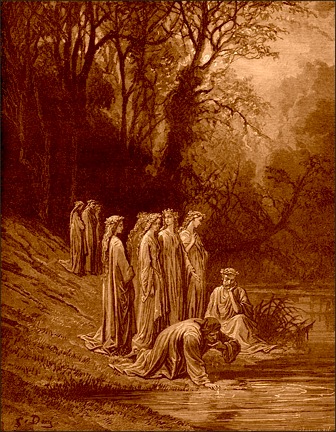
Forgetfulness and Remembering: one of our human triumphs and failings. The triumph of memory is that we have the ability to know time, and our place in it. With accumulated knowledge, we work toward wisdom. Memory gives us this and much more. The failing of memory is that it is imperfect. Our memories are highly error-prone and sometimes warped with emotion. We can be absolutely sure of something, only to find out later how wrong we were. Details may be clear and accurate but our minds string them together into events that are, on average, 75% inaccurate.
The other failing of memory is that in the struggle with the ego, we choose the worst possible path for ourselves. It wasn’t really that bad, was it? We convince ourselves that everything is okay, and make up some wonderful fiction about what really happened. If you’ve ever talked with people who went through the same experience as you, at the same time, the stories may be vastly different.
So, if memory is so fallible for us and practically guaranteed, why is it sinful?
What is the Sin of Forgetting?
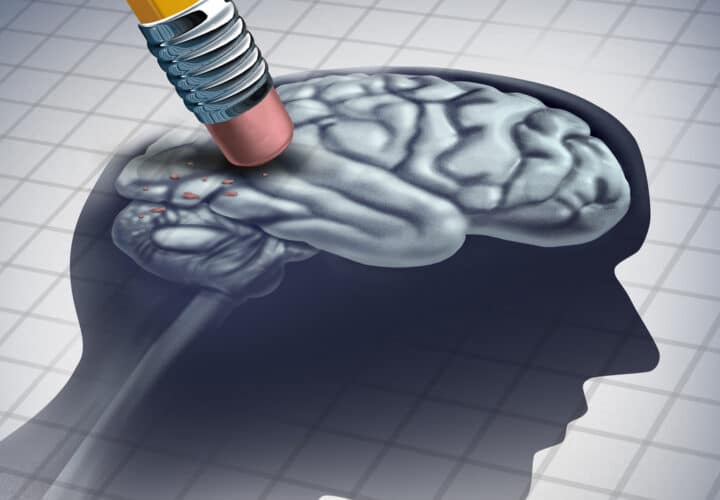
Let’s first talk of Sin… The definition of sin is “an immoral act considered to be a transgression against divine law..” This seems to be overly strong talk about the act of forgetting, which most of us do. However, religious texts seem to infer that the sin of forgetting really belongs to not being one with the divine. That is, forgetting is human whereas remembering is the purview of God. God cannot forget, and in our quest to be more God-like, we need to work on our memory. The Bible, both Testaments, is abundant with examples of “not forgetting.”
Proverbs 3:1 – My Son, do not forget my teaching, but let your heart keep my commandments.
Isaiah 65:11-12 – But you who forsake the LORD, who forget my holy mountain… I will destine you to the sword…
Luke 22:19 – And he took bread, and when he had given thanks, he broke it and gave it to them, saying, “This is my body, which is given for you. Do this in remembrance of me.”
Biblegateway.com, retrieved October 16 2023
There’s one more biblical answer: Deuteronomy 4:9: “(NIV) Only be careful, and watch yourselves closely so that you do not forget the things your eyes have seen or let them fade from your heart as long as you live. Teach them to your children and to their children after them.” The idea in Deuteronomy is that forgetfulness is a sin because you are forgetting who you really are in the spiritual sense of the word.
Lethe and Eunoe

This brought me to Dante’s Purgatorio and the twin rivers of Lethe and Eunoe. Lethe is the river of forgetfulness that sits atop Mount Purgatory and its twin, Eunoe, also is on the top of Mount Purgatory. These rivers are always used in tandem: Lethe means “forgetfulness” and Eunoe means “good mind.” Dante indicated that on the spiritual journey before one can enter Paradise (or Heaven), one must be washed in these two rivers so that one’s soul (including memory) will be pure and clean. It’s no accident that these two rivers seem to emerge from the Garden of Eden, a place of purity and clarity. The source of humanity, maybe?
When one is washed in the river Lethe, one forgets all memory of sins of your past life. You have passed through Hell, according to Dante, and you have ascended through Purgatory. You can’t take it with you, in all senses of the meaning. Perhaps it means that you shouldn’t take it with you. You need to make space for the divine within you.
Once you have washed in Lethe, you are guided and washed in Eunoe. The implication of Eunoe, “good mind,” is that not only are past good works enhanced in your mind but that your will for continuing good works is also enhanced. It is speculated that the forest at the top of the mountain, as noted above, is The Garden of Eden and that the entirety of Purgatory is actually the “terrestrial paradise.” Could this be the necessary step for all of us to enter Paradise?
Dante’s implication is that Matelda, who is Dante’s guide at the top of Purgatory, is akin to many of the judges of humans, such as Anubis, Ma’at, Astraea, or Persephone. Matelda seems to be the guide who does the judging – do you end up moving on or returning through the underworld. The idea of this passing through the rivers before ascending to Paradise seems to be that in order to remember our divinity, we need to forget our sins. Or, perhaps we need to recognize our sins but then forget the earthliness of our nature and ultimately remember our divine natures.
Virtue and Vice

This is reminiscent of a Masonic phrase, “erect Temples to Virtue and dig dungeons to Vice.” This isn’t only an admonishment to dedicate your work to the divine and betterment of humanity but also to build up the “good mind” and positive qualities within ourselves. In digging dungeons to Vice, I believe this could be the forgetfulness that is implied by Lethe. That is, we need to dig and bury those appetites and addictions that keep us tethered to the material world, we need to “forget” the animal and material nature of who we are. Alternatively, we need to do the work that builds the will in us to be the best we can be.
If we are fallible humans, how can this be? This appears to be the reason that Eunoe or the “good mind” or virtue exists. It provides us the divine strength for us to continue to move toward better. So, the sin of forgetting is when we forget our divine natures; we forget that we can sink low without memory and effort to move forward. Forgetting is a willful ignorance of our natures. Despite our frail human capacities, we need to continue to forget our vices and remember our virtues. For Masons, to stay on the path of perfecting humanity is to remember the divinity that IS us.
What is an Ark?

Symbols, especially of the commonly-accepted-but-never-thought-of-kind, can be highly engaging. They may even drive us down rabbit holes. One such, for me, is an “ark.” I wondered, what it meant to be in an ark, why are there three arks in the bible, and yet, not many anywhere else? What is the significance of an ark, and what is its purpose? What is the symbol attempting to say?
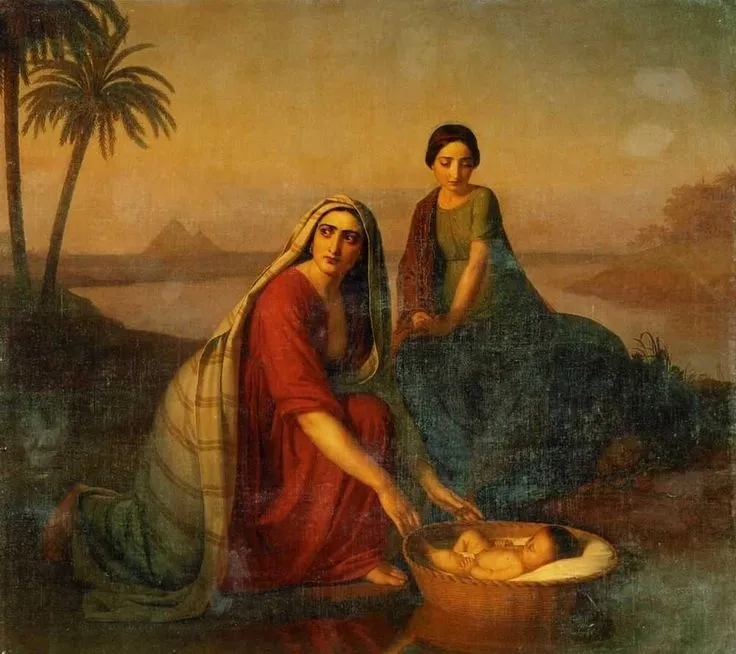
Let’s start with a definition: an ark is a place of safety and protection. Whether it’s a boat, chest, or cabinet, it protects something precious. The arks in the Bible are all in the Old Testament and as such, are related to Jewish events. The first is the Ark of Noah, in which all holy and righteous life on Earth was rescued from the Lord’s flood. The second is the Ark of the Covenant, which is also known as the Ark of Samuel, the Ark of Testimony, and the Ark of God. Inside it were placed three items: the tablets of the Ten Commandments, a pot of manna, and Aaron’s Rod. The last ark is the Ark of Moses, also known as the ark of bulrushes. This is the papyrus (bulrush) basket in which Moses was placed when he was sent away by his birth mother. The word in Egyptian (teb) translates to the same word used for ark (aron) in Hebrew.
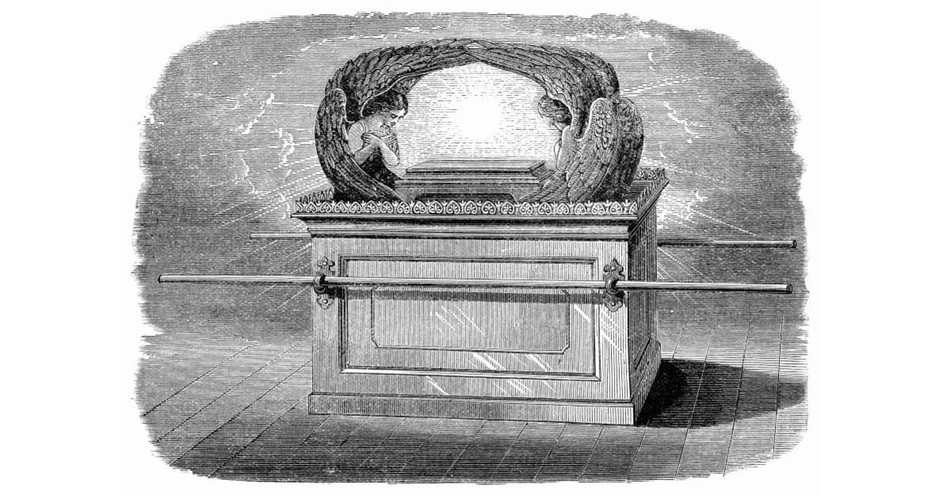
There is also one more ark, not specifically noted as such in the bible, and might not be known to those who do not practice the Jewish faith. This ark is “a repository traditionally in or against the wall of a synagogue for the scrolls of the Torah.” Among the Ashkenazim, it is known as the “aron kodesh” or “Holy Ark,” which comes from Chronicles II 35:3, which indicates where the ark in the temple should be located. This location is the wall that resides closest to the Temple Mount. There are many traditions and customs associated with this particular ark. The most interesting is that the ark may never be empty; on holy days like Rosh Hashanah, when the scrolls are removed from the ark, a lit candle is placed in the ark to represent the light of the Torah.
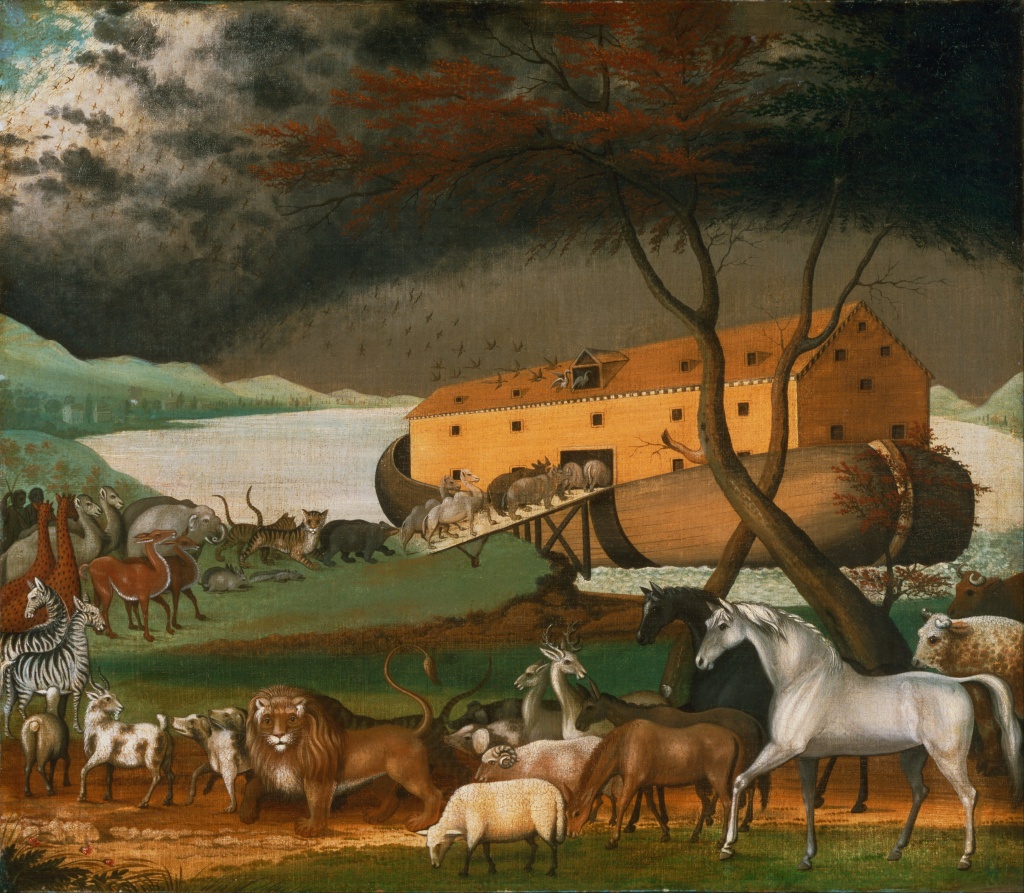
In Freemasonry, there is a specific degree tied to the Ark of Noah, named the Royal Ark Mariner degree. This degree is speculated to have been used prior to Blue Lodge Masonry and is considered by some to be an influence on Craft Freemasonry. The presence of the Ark and Anchor within Craft Masonry is what causes this theory to surface. There is no known date from when this degree originates and in Masonic literature, it is only first mentioned in the 18th C. The degree is worked in Scotland, England, and the United States (as an Allied Degree) by different masculine orders and is part of the Universal Freemasonry rite.
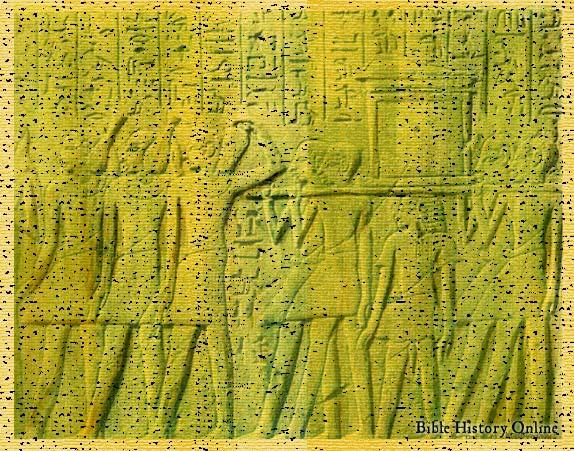
Moving back to the symbolism of the ark in Freemasonry, the ark of Noah and the ark of the covenant are the symbols most seen in ritual. If we look back towards the mysteries of Egypt, archeologists are now finding that arks like that described as the Ark of the Covenant were carried in “the Procession of the Shrines.” The Egyptians are believed to have used their arks as places of sacred worship and to dispense the will of the Divine. In the Procession, these arks were carried to the appropriate Temple, and ceremonies were performed on or next to them. They also carried precious objects of a mystical nature, such as statues of Gods or other relics. The “angels” on the Egyptian arks were said to be of gods or goddesses to whom the ark “housed.” Some have speculated that the beings on the ark represented Truth and Justice, such as the goddess Ma’at. One site mentions the goddess Theme but there does not appear to be a goddess in ancient Egypt with this name.
The common theme amongst all of the arks is the protection of something precious. Be it the word of God, the prophet of God, relics, or the righteous life on Earth, the items inside were of a mystical and divine nature. It’s necessary that these precious items be protected from desecration and destruction, but the question is from whom or what? Do we protect them from the profane? That begs many questions, especially about the Ark of Noah. The arks are greater symbols, to be sure, of several esoteric concepts, like Brotherhood, Fidelity, and Reverence. It bears exploring these symbols in the context of the Masonic rituals in which they appear, and look deeper than the surface meaning of protection.
The Stewards

Freemasonry is a solar ritual, designed to mark the sun’s movement throughout the year. While other esoteric and religious institutions track the moon, Freemasonry uniquely ties with the Sun. The Principal Officers of a Masonic Lodge mark the times of the day, and with their moving counterparts, their deacons, they mark the times of the year. This is very specific to the officers in the East and West, where one marks the Summer Solstice (East) and one marks the Winter Solstice (West). The South also marks the Sun but in the Equinoxes of the year, the sun is directly overhead at Noon.
This is where I believe the Stewards come into play. While the Officers in the East and West have their moving counterparts, so does the Officer of the South – the J.W. In his Principles of Masonic Law, Bro. Albert MacKay stated that the Stewards are appointed by the J.W. and sit to the right and left of him in the South. This makes sense if they represent Capricorn and the Tropic of Capricorn which is in the south. This is further evidenced by the symbol associated with the Steward, the cornucopia.
Cornucopias and Capricorn
In antiquity, the cornucopia was called the “horn of plenty.” It symbolized abundance and nourishment, commonly a large horn-shaped container overflowing with produce, flowers, or nuts. Traditionally, the horn was a goat’s horn, as noted above, and is associated with Capricorn.
Despite its faintness, the constellation Capricornus has one of the oldest mythological associations, having been consistently represented as a hybrid of a goat and a fish since the Middle Bronze Age, when the Babylonians used MULSUḪUR.MAŠ “The Goat-Fish” as a symbol of their god Ea.[7][6]
In Greek mythology, the constellation is sometimes identified as Amalthea, the goat that suckled the infant Zeus after his mother, Rhea, saved him from being devoured by his father, Cronos. Amalthea’s broken horn was transformed into the cornucopia or “horn of plenty”.
Wikipedia, “Capriconrus”, March 2023

The Stewards sit on opposite sides of the J.W. but are not to the extremes of being in the West or the East. This indicates that they are a midway point between the two, marking the Solstice periods. The reason for this may become a little clearer if we look deeper into both the astrological sign of Capricorn, materially and esoterically.
The sign of Capricorn has three flavors – that of the river goat, the land goat, and the mountain goat. Together they represent the cycle of life: I believe this is the spiritual life, not simply the physical life. Starting in water, the emotional realm, we move to subdue those emotions as we begin on an esoteric path. We move toward the land; however, this is the land of all men, not the land of those on the path. The mountain goat represents the man who is striving, yearning for that higher “self” and for continued improvement. He is still “of earth” but he has lifted himself beyond the simple ideas of the physical and emotional worlds.
The female goat generally represents nourishment and abundance while the male goat often is a sign of stamina and virility. Both are representative of abundance and fecundity. The horn, traditionally represents the masculine, when it is point-side up, representing the giving of abundance, and point-side down representing the feminine and receptive principle.
Capricorn is also an earth sign, representing practicality and the life-giving nature of Earth. It is grounded and rich with the cycle of the entire Earth – birth, life, and death. The sign is ruled by Saturn.
Solstices and Tropics
Cancer and Capricorn begin their cycles on the Summer Solstice and Winter Solstice, respectively and it’s appropriate to discuss a little of the “Tropics” they represent. The tropics are the longitudinal lines on Earth where the sun can be seen directly overhead, on their respective days. In the area between the tropics, the sun has little movement and may generally be seen “directly” overhead at any time of the year. This tropical zone is considered also the most temperate place on Earth, and seemingly where human life on Earth began.

Here, let’s turn back to Freemasonry. In all of these discussions regarding light and the sun, it is important to remember that Freemasonry is a northern hemisphere-focused ritual, and as such is focused primarily on the symbolism of the northern hemisphere. This is not to say Freemasonry isn’t practiced or relevant to the southern hemisphere. I mention it here only to inform readers that some of this terminology may need to be reversed to be applicable.
The J.W. has a responsibility to mark the sun at “high noon,” according to some. This is both a physical place and an emotional one. The physical is clear – when the sun is directly overhead. This seems obvious. However, it is also the place of “no shadow.” and clearest vision. Everything is visible and illuminated. This leads to the emotional meaning of the phrase, which is “a crisis or event that is likely to decide finally what is going to happen in a conflict or situation.” It appears to be the place in which the ultimate decision of that which is made manifest is decided. Could this be the link between the J.W. and the I.G.?
Let’s also look at the South as a place of Beauty. Beauty can be felt and seen but it is generally seen. One needs Light to see Beauty made manifest. Therefore, it seems logical that Beauty would reside in the place of greatest light – that where the sun is always overhead. I think there is also something to the point that the Tropic of Capricorn is the southernmost point of least light to people of the northern hemisphere. This appears to represent the moment before sunset, where darkness begins, which seems to be under the influence of the West, or the S.W.

Consequently, we see the idea of the North as a place of potential, a place of the antithesis of light. While the Stewards frame the place of greatest light, their mirrored selves frame the place of greatest darkness. But this is not pure darkness. It is the darkness that is visible to all, which shows us the contrast to the positivity of the Light. In other words, we all need to have a point that we can understand: what is Dark, and where do we need to tread to stay in the Light.
Abundance and Perpetuity
Lastly, the Stewards represent the idea of abundance and plenty within the realm of thought and ideal. That is, there is a universal plentitude that is there to help us empower our higher consciousness and spiritual attributes. Awareness, the ability to see and experience more beyond this physical realm, is perpetual, just as the Cornucopia is perpetual in its plenty. I am not speaking about material goods but about the Light that lifts us to a better humanity.
The Stewards mark and do much esoterically for the Lodge and the ritual. While they might seem like a minor role in the ritual at play, they have a greater purpose to the solar meaning and symbols within our Work. They encourage us to look to our inner steward, the one who reminds us of the Abundance of the Divine and of the Universe, and that which guides us on a path of Light.
Stars in Freemasonry: Why should we always look up?
“Remember to look up at the stars and not down at your feet. Try to make sense of what you see and wonder about what makes the universe exist. Be curious.” – Steven Hawking
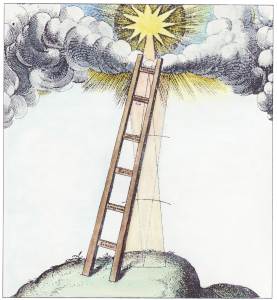
For countless generations, humanity has gazed upon the heavenly abyss with awe. Looking up at the night sky gives us a glimpse of the Universe beyond our terrestrial concerns. In Freemasonry, some of the most sublime moments in our rituals occur when we are asked to look up. The whole Lodge space is symbolically placed under a celestial canopy. Why? Perhaps one reason is that when we look up, we are led to the handiwork of the Great Architect. We realize how a far-away star can somehow connect us to the One who made it. Let us explore, then, the relationship between Freemasonry and Stars.
The Philosophy of Stars
“Know that the philosopher has power over the stars, and not the stars over him.” ― Paracelsus
In ancient times, philosophers approached the relationship between stars and humans from different perspectives, but all recognized a certain connection or influence between the celestial and terrestrial realms.
- Plato, the ancient Greek philosopher, believed in a cosmic harmony and the celestial bodies exerted an influence on earthly affairs, shaping human destinies and reflecting the order and beauty of the cosmos.
- Plotinus, a philosopher of the 3rd century CE, viewed the stars as emanations from the One, the ultimate divine source. He believed that the stars, as celestial beings, possessed a higher level of being and intelligence than humans. However, he also emphasized that the human soul had the potential to transcend its earthly limitations and reunite with the divine through contemplation and philosophical ascent.
- Hermes Trismegistus taught that the stars were infused with divine energies and intelligence, and they transmitted spiritual knowledge and influences to humanity. The stars were seen as intermediaries between the divine and the earthly realms.
Of course, these early thinkers did make a few mistakes. For instance, Ptolemy, an astronomer during the 2nd century BC, ended his world in the middle of China because his perception of the Mediterranean was off by about 30%. All in all, he was forgiven for his mistakes because his observations of the celestial heavens were remarkedly recorded only with the naked eye.
What Masonic symbols might correlate with some of these ancient philosophical ideas?
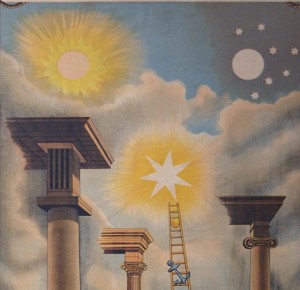
The Blazing Star in the Masonic Lodge
Those who have had the good fortune to have actually seen the inside of a Masonic Lodge will know with what prominence the Blazing Star is displayed. It presents itself soon after a brother first enters the lodge and begins participating in rituals and degree work. On the John Harris 1st Degree Tracing Board in the Masonic Lodge, it is illustrated as a seven-pointed star with the sun and moon and stars displayed around it. While each of the luminaries have significant meanings, the Blazing Star outshines them all, as the apex of a brother’s journey up Jacob’s Ladder. The sun and moon and stars are the “lesser lights,” or subordinate luminaries, through which the supernal Light of the Blazing Star is mediated.
It is taught that the Blazing Star is a symbol of Deity, of Omnipresence (the Creator is present everywhere), Omniscience (the Creator sees and knows all) and Omnipotence (the Creator is all powerful). Masonic Scholar Brother Albert Mackey wrote that the Blazing Star appears differently in several of the Scottish Rite Degrees, symbolizing the guiding light of the Divine, which points the way of Veritas or truth. For example, in the Third Degree it is first seen as a “glimmering ray” but then breaks forth in full splendor as “that Bright Morning Star whose rising brings peace and salvation to the faithful and obedient.” The lesson is that as the Freemason perfects himself by pursuing truth, he becomes like a Blazing Star, shining brightly in the midst of darkness. Along his journey, he always receives the guidance of a star, before becoming a light in the world himself. The quest for “that which is lost” is not only a journey outward, to seek Divinity beyond the horizon, it is a journey inward, to let Light illumine the heart.
One of the most intriguing theories of the Blazing Star is found in Brother Albert Pike’s Morals and Dogma where he writes: “Sirius still glitters in our Lodges as the Blazing Star.”
The Star Sirius and Anubis

The Blazing Star is one of the three key ornaments in a Masonic Lodge, along with the Mosaic Pavement and Indented Border. According to Brother Pike it originally identified with not only Sirius, but the Egyptian jackal- headed god Anubis, guardian, and guide of souls. He said, “The Blazing Star in our Lodges represents Sirius, Anubis, or Mercury, Guardian and Guide of Souls.”
Anubis was the Egyptian God of the underworld who was the guide of the deceased in the afterlife state. He has the head of a jackal, with pointed ears and snout, with strong indication that he is actually a dog. He was charged with assisting Horus with tending the scales upon which were weighed the hearts of the dead, making sure that the weighing was fair. In this symbolism, the scales are suggested to be the scales of karma.
Figures such as Anubis, Thoth, Hermes, and Mercury all stand for and symbolize superior knowledge and the tools that Humanity will need to build its Spiritual Temple. It was thought that proper use of these tools, making further progress in the arts and sciences, would lift mankind closer to the status of the Gods.
In the simplest of terms, it can be said that the Egyptians linked the nature of Sirius and Anubis with key esoteric doctrines:
- The reality of the Soul and its recurrent incarnations
- The centrality of karma as a determining factor in the life of the inner man, and
- The relevance of celestial influence to the evolution of human consciousness.
Brother Pike professes that all the mystery teachings and traditions of classical antiquity show telling signs of origin in the Egyptian initiatory tradition and Sirius. In fact, Brother H.P. Blavatsky, in her Secret Doctrine calls Sirius “the great instructor of mankind. “If Sirius is indeed the Blazing Star in our Lodges, such a genesis would endow the inner spiritual kernel of Freemasonry with the mark of sanctification.

In closing, exploring stars and the Lodge’s celestial canopy adds further insight into where a Freemason comes from and where he is going. It seems to reveal a message that there exists a perennial philosophy, moving through a vast lineage of initiates. These teachings ever bear witness to the presence of a wisdom tradition holding firm at the core of evolution on this planet. Although we may not be able to ever know through our human minds where Freemasonry’s true celestial home is, it is worth searching for. And on the journey, we must remember to look up!
After the East
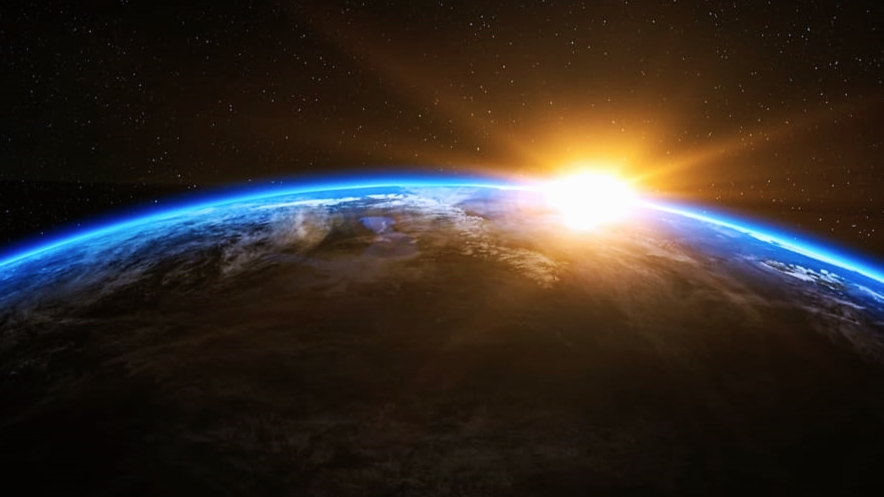
PRIOR to becoming the Master of a Lodge, seated in the East of the Temple, the Freemason may begin their career in any number of offices, depending on the Masonic Obedience to which they belong. In some Orders, Lodges are small and the new Freemason may be required to perform several offices at the same time.
In my Order, my first few years were filled with floor work, secretarial work, music, and a host of different roles. I learned a lot about the needs of the individual offices as well as how they work in conjunction with others. Was it optimal? It suited me, and while some might disagree, it was what we had. I was grateful for the opportunity to serve and to learn so much so quickly.
That service was rewarded with a growing Lodge. We soon were able to fill offices with individuals, each one learning in-depth their position and place. This too had its treasures, as each member was soon able to grasp the whole essence of working together to a harmonious end. It wasn’t until I was installed as the second of the Lodge that I contemplated moving to the East and having to be “in charge.” The “second” in the Lodge sits in the West, and is typically called a Warden. The terrifying and ominous prospect of eventually taking over the care and feeding of the Lodge had also filled me with questions: What would I do differently? What plans did I have? What would be my legacy?
QUICKENING EVOLUTION
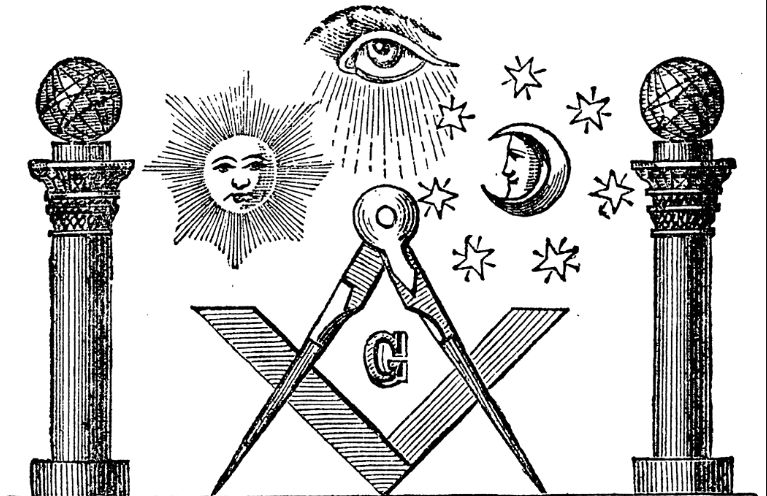
IT is said that Freemasonry quickens the evolution of man. What this means is that the circumstances of the Lodge change and undulate, causing the Masonic Officer to shift and change to the best of their abilities. One should note that the Lodge is not the temple or building where Freemasons meet; rather, it is the body of Freemasons that come together for the ritual purpose. It is the group, not the place. Therefore, the Lodge (a group of people) is the catalyst for the evaluation of the individuals that are part of it. At least, this is what I see that it means.
In practical terms, it means that all the planning in the world can’t prepare you for everything. As the “second,” I remember sitting across from the Master, to whom I was supposed to be supporting and helping, and feeling a sense of annoyance and frustration: Why is she doing it THIS way? Why not “that way?”
I had to learn to break down, tear apart, and dismantle. This can be overwhelming for some: if their Master would just move out of the way, the “real” work can begin. How utterly naive and how utterly appropriate (if a bit out of control…)
ARRIVING IN THE EAST

THE first thing that comes to one, upon arriving in the East, is the notion that perhaps you weren’t as good a Mason as you thought you were. I do not mean that you don’t know how to rule a Lodge; we know this comes with practice. Some may be born to leadership and find their path easy while others need to cut through the weeds and jungle to make their way.
The Master in the East learns how to file the paperwork and execute the ritual; they may be able to train and educate others in the Art of Freemasonry. There is always a lot of work and myriad questions to answer. However, sitting in the East causes one to reflect on their own Masonic career to this point. How did they treat their Masters before them? How did they respond to requests for help either from Officers or from their fellow Brothers? Did they treat Freemasonry with the reverence it deserves?
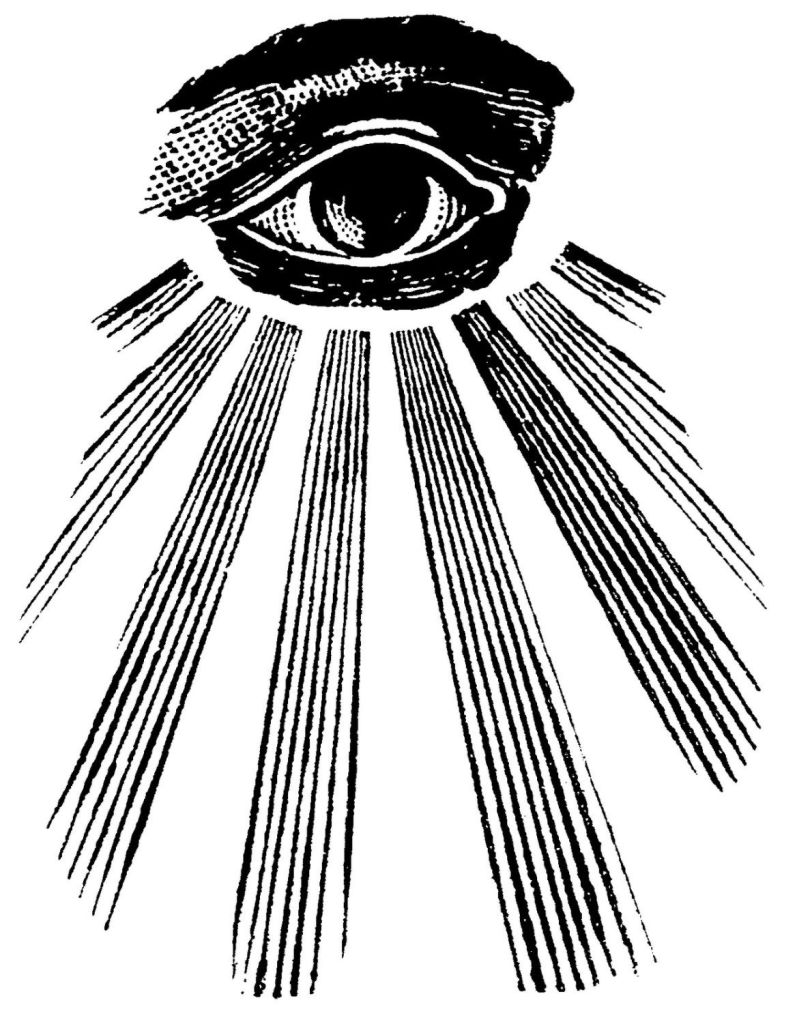
Many times, the answer is that we know we could have done better. Some Masters overcompensate and try to be even better, whatever that might mean. They swing too far one way, a pendulum swinging wildly out of control. They leave their Lodge perhaps more chaotic than they found it. They might also swing the opposite way, realizing that the job was a lot more complicated than they believed. They devolve to letting others run the Lodge, assume their officers know their jobs, and eventually chaos infiltrates. Luckily, both of these outcomes are rare occurrences.
Sitting in the East is a lot harder, and in some ways easier, than we believed. Masters rise to the occasion through humility, determination, grit, and compassion. They learn to let go, delegate, and follow up. Caring for your members goes a long way to success. Are they perfect? No. But, generally, they know it. And they know they can always do better.
THE SILENT WATCHER
THEN, in a woosh, they are done. Over. They now sit to the left of the Master, assisting as needed but they become the silent watcher. They become the shadow, and perhaps, to some, they think they are irrelevant. They feel the Lodge move on, move forward, with a new captain at the wheel. It is the rare Master who moves back into an officer’s role in their own Lodge.
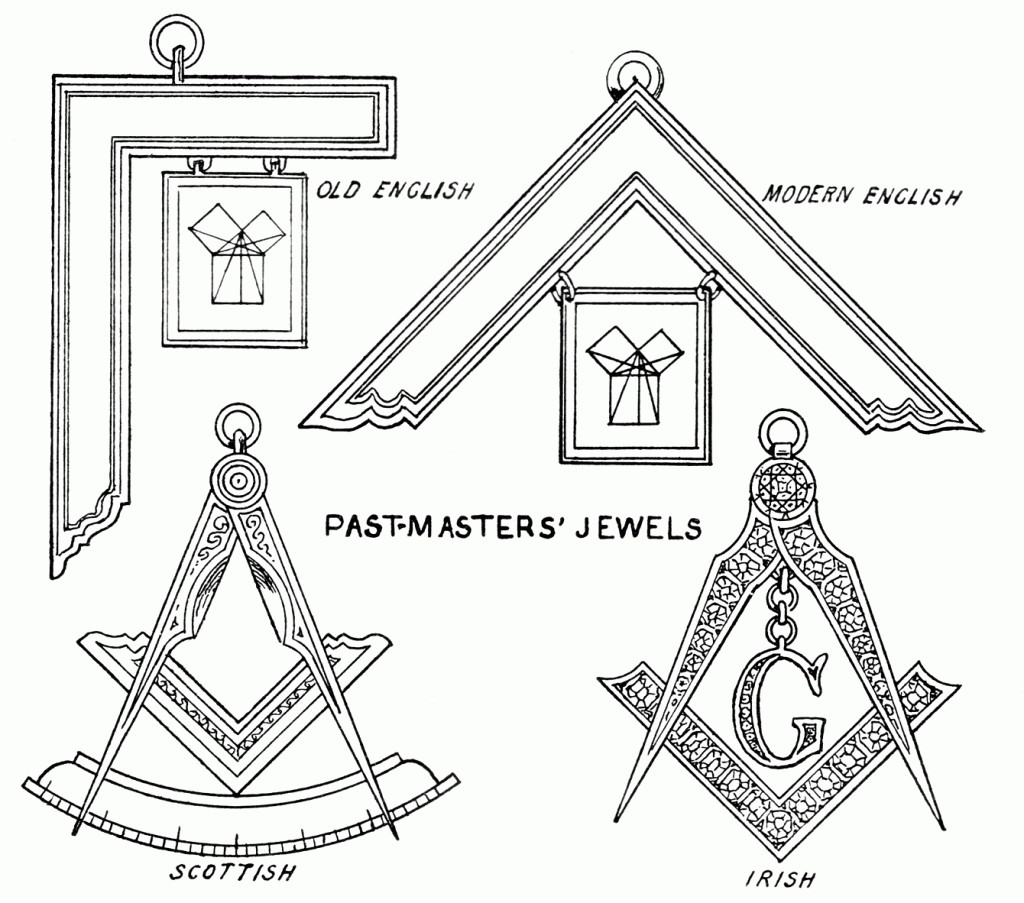
In some Masonic jurisdictions, the Mastership may only be one year and in others, it may be as long as four or five years. In most cases, the effect is still the same – there is a loss and mourning period where the Master might not feel as relevant as he did the day before.
This position of immediate Past Master is, to me, one that relates to the apprentice, someone who is newly initiated into Freemasonry. It’s the octave above the apprentice, creating a chord of harmony, relationship, and continuity within the Lodge. There are seven regular officers in the Lodge and the Past Master completes the cycle to bring the work to the next level. They connect with experience, history, and ritual – to bring careful insights to the next generation.
CALL FOR VASTER SERVICE
IN real practical terms, the Past Master is the memory of ritual and procedure. There are certain positions within the Lodge meeting that are ideal for a Past Master to fill, certain officers that require that experience and knowledge to execute correctly and create continuity. Their knowledge helps the new Master run things smoothly and harmoniously. While “three rule the Lodge,” the Past Master is truly a “left hand” for the Master: a confidant that may provide whispers of the immediate past.

Yet, most Lodges, Districts, and Jurisdictions need so much more. They require the pillars of the columns to remain strong, vibrant, and active. The Past Master may be a stabilizing force for not only their Lodge but also may be for others in the area. They may be writers and builders, able to support Freemasonry from the depth of their experience. They may contribute to their overall Order, or to a wider set of Lodges, if they feel so inclined.
If anything, the Past Master has a wider range of service than ever before; there’s a world of Freemasonry that requires their experience, much as we need the Masters of crafts to mentor and teach new workers. Life for the Past Master is not fading, not at all. If anything, the world becomes far vaster than they could ever imagine.
Yggdrasil

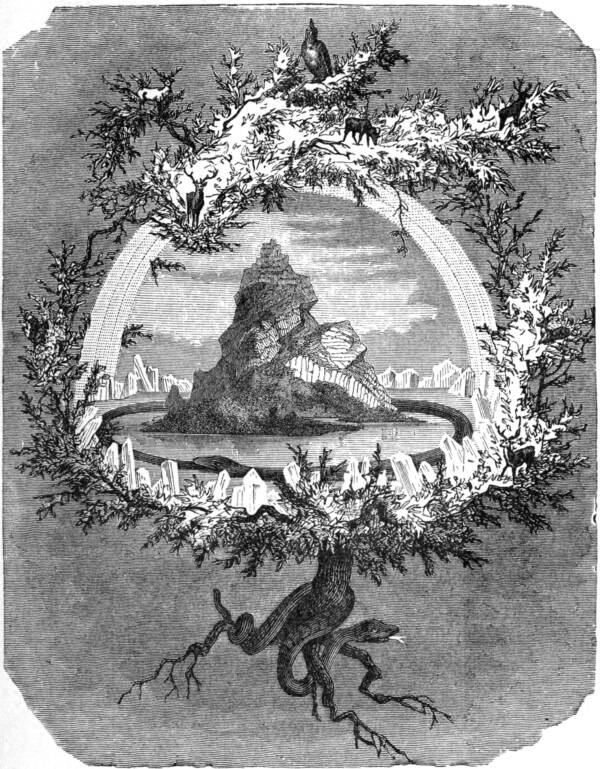
HUMANS have been long fascinated with the World Tree, or in Norse Mythology, Yggdrasil. Yggdrasill (Old Norse: Mimameidr) in Norse mythology, the world tree, is a giant ash tree supporting the universe, which is comprised of nine worlds. One of its roots extended into Niflheim, the underworld; another into Jötunheim, land of the giants; and the third into Asgard, home of the gods. In the midst of all of these were the other realms where, at least in one, humans dwelt: Midgard. Yggdrasil is mentioned in both the Prose Edda and the Poetic Edda, and its story has been recently retold, beautifully, by Neil Gaiman. There are dozens of myths regarding The World Tree, from the northernmost reaches of the Earth towards the south, where the Hindus revere Ashvattha or the Bodhi Tree.
WORLD TREES: from Wikipedia, “Specific world trees include égig érő fa in Hungarian mythology, Ağaç Ana in Turkic mythology, Andndayin Ca˙r in Armenian mythology, Modun in Mongol mythology, Yggdrasil in Norse mythology, Irminsul in Germanic mythology, the oak in Slavic, Finnish and Baltic, Iroko in Yoruba religion, Jianmu in Chinese mythology, and in Hindu mythology the Ashvattha (a Ficus religiosa).”
– Wikipedia, Cited 21 February 6022
The World Tree
THE World Tree has been closely linked to the Tree of Life, and in some cultures, the two may be one and the same. The World Tree, throughout the millennia, has housed realms of beings, larger-than-life creatures, sacred knowledge, springs and founts of wisdom, and the life of the universe. In most of these myths, the roots reach the underworld and the branches, the heights of heaven. In one reference, the tree’s branches reach into the earth, and the roots rise toward heaven. Often involved in these myths are snakes, women, or others who need rescuing, and the hero who must reach the top of the tree, either to kill the snake, save the needy, or learn a piece of hidden knowledge from the mythical creature. The snake may be a large snake or even a dragon, such as Níðhöggr, who gnaws at the roots of Yggdrasil.

What is interesting to me is that in most of these stories, the tree is the source of universal life or the home of worlds and regions far more numerous than our own. Trees have their own ways of communication, via mycorrhizal networks, and communicate often. They rely on other species of trees to provide information and in some cases, security and wisdom. They feel and think, albeit not like humans, of course. The tree has been the source of life here on earth, and it stands to reason that it is a symbol for all universal life.
As above, so below… maybe?
The Tree of Freemasonry
WHAT, the curious Freemason asks, has this to do with Freemasonry? In the first instance, it is a symbol of something, and we Freemasons enjoy a good romp through symbol dissection. Second, Freemasons have their own tree, and it is interesting the symbolism that coincides and collides when we look at the two motifs.
The Tree of Freemasonry is the acacia (Western), or in Latin, Acacia Vera or vachellia tortilis. The tree is an evergreen tree, common in warmer climates, and is found in Africa, the Middle East, and other temperate climates. The tree’s wood is used to build weapons and furniture, and its resin is used in incense and perfumes. Biblically, it is referred to as the shittah tree and was the wood Moses used to build the Ark of the Covenant, and it was used in the construction of the Tabernacle. While it has many practical uses, I see there is one reason it is such a symbol of immortality: it is an evergreen.
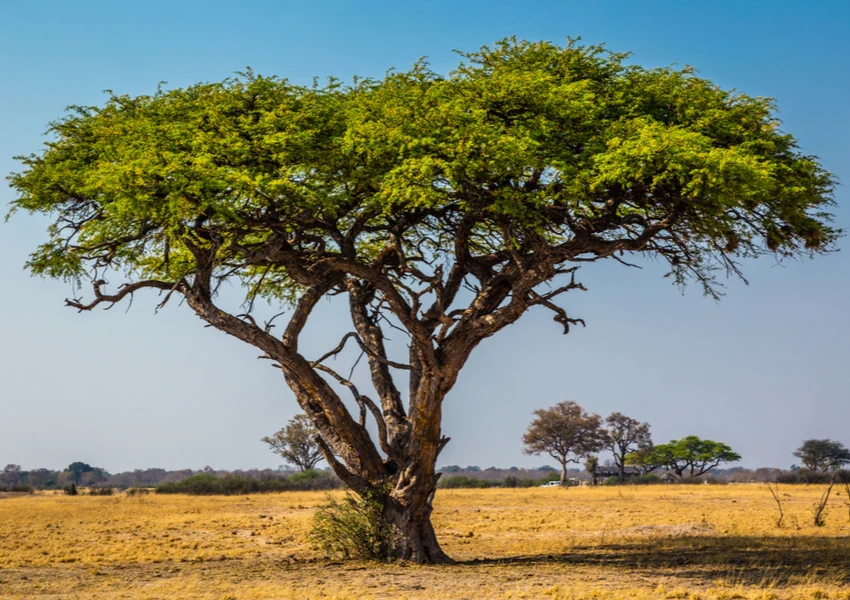
This may seem like a simple fact to the majority of the people that live in the Northern Hemisphere. In the Americas and Northern Europe, you can’t travel for any length without seeing or being in a forest of evergreen trees. But, in arid and desert landscapes, evergreen trees are far rarer. The desert evergreen has to pace itself; it has to be strong and flexible. It provides hope where life is literally a drop of water away.
Is the acacia the World Tree of Freemasonry? Perhaps. According to the Grand Lodge of Ohio:
“Like the ancient Egyptians and Israelites, the sprig of acacia primarily symbolizes the immortality of the soul… The evergreen quality of the tree reflects the human spirit, the immortal part of us which can never die.”
– The Grand Lodge of Ohio
The idea is that the human spirit never dies, and in the everlasting life, continues to feed the tree of Humanity. A World Tree. It is different in the aspect that it does not identify a cosmology of the world in the detail of something like Yggdrasil; however, it simplifies the cosmology down to a simple concept: we are all one, and we are eternal.
Dharma and Freemasonry
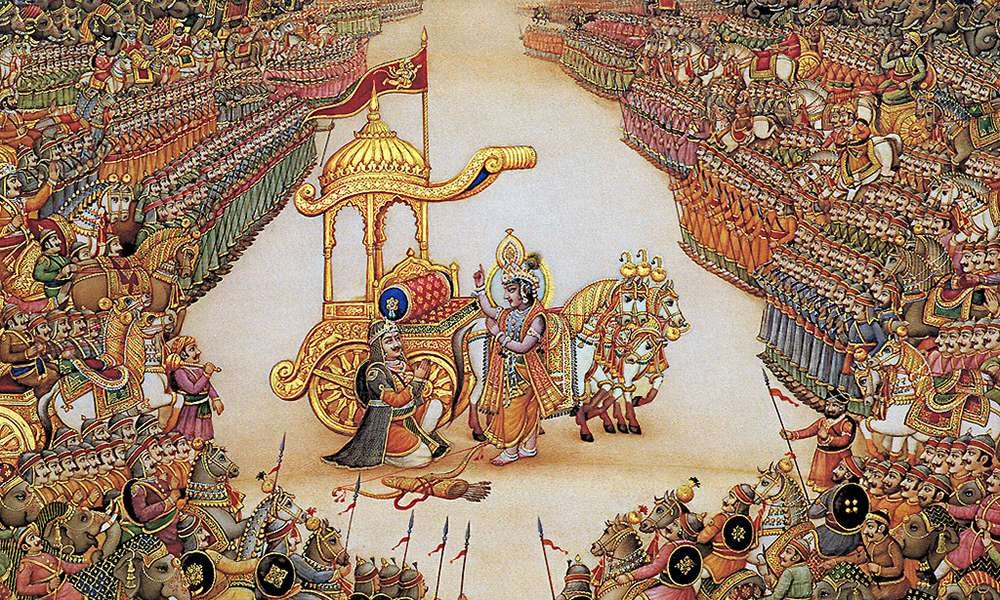
Nosce te Ipsum is a phrase we all know to mean “know thyself.” We are told at the very beginning of our Masonic journey, that our every movement forward will be directed by divine wisdom, by the motto “NOSCE TE IPSUM – Know Thyself.” Once we begin this journey and discover ourselves, then we will know the Universe and God. Throughout the ages, this axiom has been a term of self-acknowledgment, self-awareness, and moderation. This is an ancient Greek motto, which we have accepted for ourselves. What does this mean to us as Freemasons and seekers of Truth?
The apprentice to Freemasonry is directed again and again to look into that which feeds their nature and to let Wisdom and Virtue guide them. They must look into their very heart as well as their mind. To know a thing means to understand its True nature.
The first thought that many may have is that this means to know who we are in this life, what we like and dislike, and what talents or foibles we have. I see this as an undeveloped or basic use of the idea, a knowledge of the material self, or what we might call familiarity with our physical bodies and minds. When we say, “I like chocolate,” we have the awareness that I, this person, this body and mind like chocolate. We use our senses to perceive the world around us and make judgments about it, exclaiming that we like or dislike a thing or circumstance. We decide in the course of our experiences that “I am Catholic” or “I am a doctor.” We may say “I am a Republican” or “I am spiritual.”
Is that knowing yourself?
Some may then say, oh, of course, I am the divine, I am a manifestation of Divinity, the spirit-in-matter. They look to philosophy or religion to gain insight into the idea of who they are. While this might not be wrong, the leap from one to another ignores much awareness in-between. The seeker jumps from the idea of physical being to the idea of divinity incarnate. To me, this feels incomplete and honestly, a little too easy. It lacks an innate awareness of “who I am.” I believe there is a middle step to this evolution of the spirit, and that is the understanding or knowledge of our Dharma. While we don’t use this term explicitly in our rituals, apart from one, I believe Freemasonry has something to say about this path of learning our dharma in order to complete the full idea of “knowing thyself.”
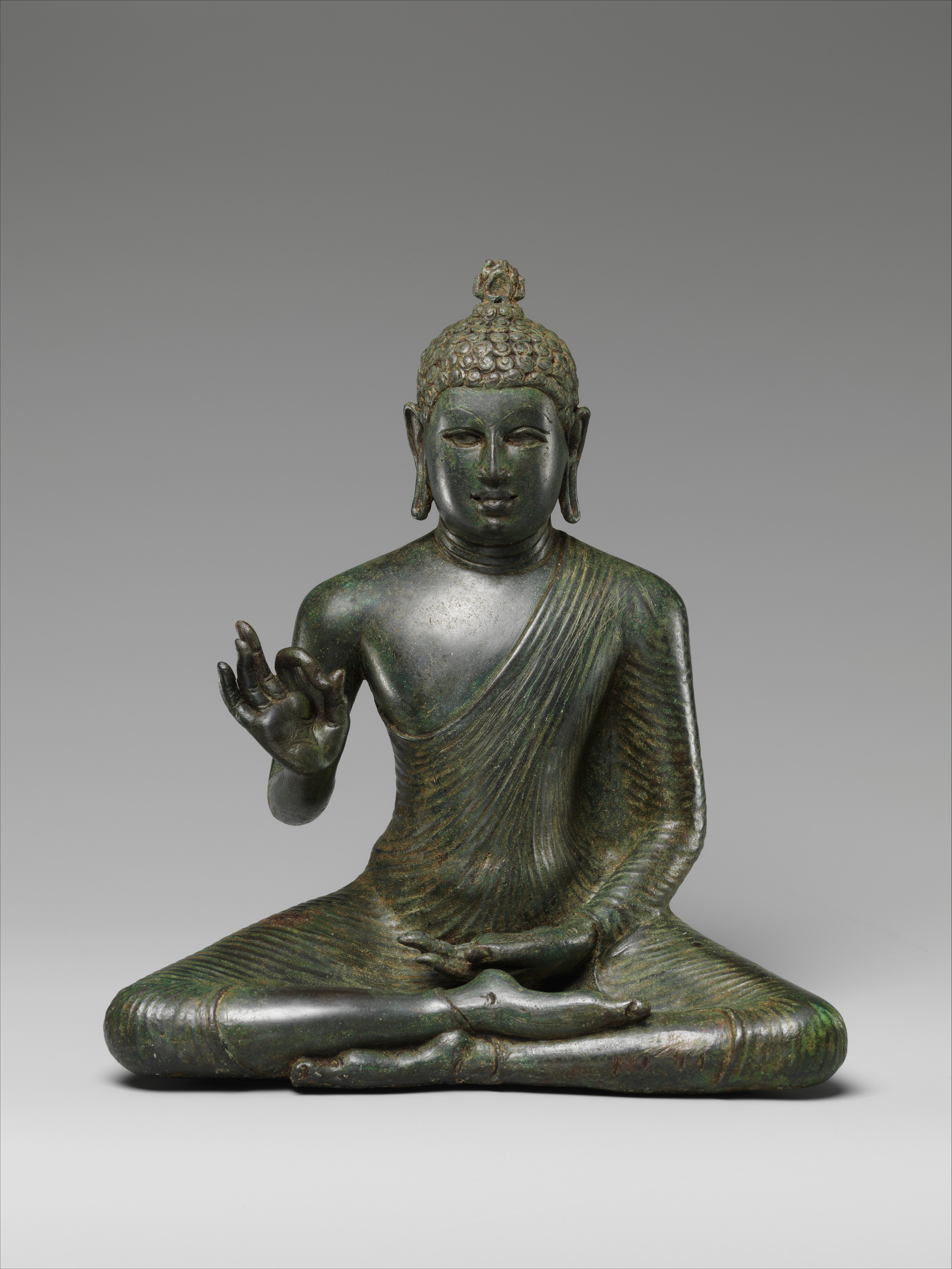
Dharma is, according to the ancient Sanskrit, “to hold, to maintain, to preserve.” In the early Vedas and other ancient Hindu texts, Dharma referred to the cosmic law that created the ordered universe from chaos. According to theosophy, Dharma [from the verbal root dhṛ to bear, support] means equity, justice, conduct, duty; right religion, philosophy, and science; the law per se; the rules of society, caste, and stage of life.[1] This definition of Dharma ties immediately to what we know is the goal of Freemasonry: Ordo ab Chao – Order from Chaos.
In the book Dharma, Bro. Annie Besant tells the story of Bhishma and his life of Duty. In this story, which derives from the Mahabharata, Bhishma, the embodiment of Dharma, explains the characteristics needed and the virtues we must cultivate to begin to understand our Dharma after he himself has lived a life of duty and his Dharma. In his monologue, he explains to the other princes and gods what dharma is and how it relates to morality and action. Besant explains it thus:
Morality…cannot be understood without a knowledge of what is meant by Dharma – with regard to morality, some think that it is a simple thing. So it is in its broad outlines. The boundaries of right and wrong, in the common actions of life, and clear, simple, and definite. For a man of small development, for a man of narrow knowledge…morality seems simple enough…for those with deep knowledge… morality is difficult.[2]
Bro. Besant goes on to state, unmistakably, that a single morality is not for everyone. That is, each of us has our own morality:
“…morality is not as simple as one would think, one and the same for all; because it varies with the Dharma of the individual.”
~ Bro. Annie Besant
Morality, Besant maintains, is based on the Dharma of the human who is acting and not on some idea of absolute right and wrong. Why does Dharma have an individual nature?
It is because “Dharma is the inner nature, which has reached in each man a certain stage of development and unfolding.”

If we consider that we are working toward the evolution of humanity, toward the perfecting of humanity, we must first come to understand our differences. We must understand that there is a different Dharma for one than there is for another, and in understanding the duty, our personal duty, we come to the beginning of understanding what our path may be. The full definition of Dharma, according to Bro. Besant is “the inner nature marked by the stage of evolution (of the individual) plus the law of growth for the next stage of evolution.” If we consider that evolution is the totality of the universe consisting of all its individual parts marching toward their own perfection (which includes each of us), each of us has our own evolution to work on to contribute to the completeness of the universe.
This idea ties directly to the exhortation made by the Master to the new Apprentice, upon receiving their clothing and tools: As an Apprentice in Masonry, you are in search of Light. You represent both an individual and Humanity. We continue to learn that we have a duty to sacrifice for the welfare of the People and to build up in men’s minds the idea of Evolution. This evolution is the restoration of the Human with the Divine – the individual with the Divine but for all of Humanity.
According to Hindu and Buddhist texts as derived by early theosophists, Dharma also means an essential or characteristic quality or peculiarity, approaching close to the meaning of Svabhava.[3] What do we mean by ‘essential character?” Let’s dig deeper then: what is Svabhava?
Svabhava, (Sk: svabhavat) in short, may be called the essential individuality of any monad, expressing its own characteristics, qualities, and type, by self-urged evolution. It roughly translates to “own-being” or “own-becoming.” “From it, all nature proceeds, and into it, all returns at the end of life cycles.”:
“The essential self, like a sun, sends a ray from itself into manifestation, and the vehicles formed by this ray express its own unique individual essence and path of evolutionary growth and experience. Every entity, in all ranges of its being, reflects its own essential individuality which is stamped on its inmost essence.[4]”
~ The Theosophical Glossary
Extrapolated, this means that we cannot produce or be anything that is not “us.” What we are is ingrained in our very being, the divine manifestation that is yet to be discovered. In fact, it is our duty, our Dharma, to be who we are meant to be.
Put differently, as Bro. Oscar Wilde said, “Be yourself. Everyone else is taken.”
If we apply the idea of self-urged evolution, this is certainly supported in Freemasonry. Our path in Freemasonry is solely ours. It isn’t for anyone else to “push” you to go this way or that – it is truly an individual path in a community of like-minded people. Freemasonry provides the opportunity to work, to learn the skills of working externally and internally, with a goal of continuous improvement. No Freemason will force the path on another; it is up to the individual to freely walk their own journey.
This is continuous striving. This is growth. We seek a path to “know ourselves,” and for us, we’ve chosen Freemasonry. Why? Because it fits best with who we are, at our core. Something speaks to us in a beautiful and harmonious way, leaning into our natures in a way that nothing else has. In this philosophy, we are finding our Dharma. Freemasonry doesn’t concern itself with your religion or your dogma; it concerns itself with being the builder of Universal Religion and this is the foundation of the philosophy of Freemasonry. All religions, all philosophies, and all Mysteries have Truths that are shared and common amongst people.
Buddha said: “The mind is everything. What you think is what you become.” This is a lesson that we hear again and again during the course of being a Freemason. Freemasonry does not teach us what to think but how to think, how to dig dungeons to vice and build temples to virtue. Why? Because it serves not only us but Humanity. We will work on our own crude natures, not to make our individual selves better but to cooperate with the Supreme Will in Evolution. How? By understanding what our individual contributions are and providing them selflessly to whatever needs to be done.
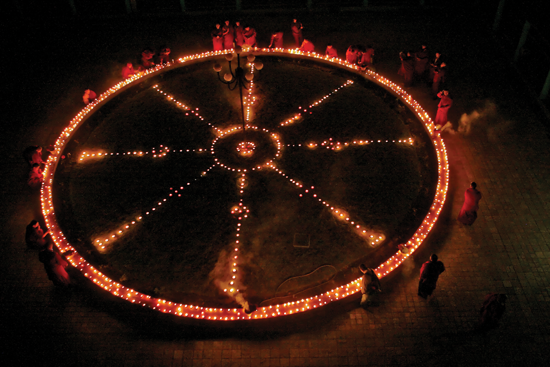
Dharma reminds us that each of us has a path; that path is our own to walk and that we walk it with the entirety of the Universe. The exploration of our Dharma also bridges the gap of knowing thyself superficially to understanding that we play a part in the unfolding Evolution of the whole cosmos, of the Supreme Will in Evolution. As we wind down the road of Freemasonry, regardless of the degree, we could look to the lessons of the ritual to weave all these meanings together. Freemasonry provides us a multitude of opportunities to work with ourselves and Humanity at the same time. We need each other. Certainly, we need time alone to know who we are, yet there are some things about ourselves that we can only learn in interaction with others.
I believe that in this weaving of experience with our fellow Brothers, the Truth of our Dharma is revealed. From there, the path continues toward a greater understanding of Nature – the Divine Universe. By living our Dharma, “we’re all just walking each other home.”[5]
[1] The Theosophical Glossary
[2] Dharma, pp21-22, Annie Besant, Masonic Publishing Company, 2017
[3] The Theosophical Glossary
[4] The Theosophical Glossary
[5] Ram Das quotation
The Luxury of Anger

IN a recent conversation, I was talking with a fellow Freemason from another Order about hate. He was telling me about how one of his members, of a fairly high degree, harbored deep resentment toward another of his members. In an organization built upon discipline and education, this seems uncharacteristic. After all that we’re learning as Freemasons about holding our brethren in high regard and affording them every “kind office,” how can anyone be angry at another Brother for any length of time? It seems irresponsible.
Then it struck me, equally as deeply, that the more you stay on this path of Freemasonry, you do not have the luxury of anger or hatred, nor the privilege of animosity or of fear of any kind. You learn that the divisions of people, of whatever kind they might be, are meaningless and unnecessary, and that we Freemasons are dedicated to the eradication of division and strife. Our personal quarrels and piques do not matter one whit to our work as Freemasons.

So, why does anger at another Brother happen? We learn from our earliest steps in the Craft that personal issues should be taken care of outside of the meeting, so that the order and harmony of the Lodge is not disturbed by this quarrel.
This is the first step in solving our issues, and this process can be very different than how the rest of humanity deals with things. “Normal” people resort to gossip, back-stabbing, shunning, yelling, or out-and-out violence. A Freemason stands apart, or should. We know better. A Freemason’s instructions are clear: Figure it out between you, get over your issues, and come together. Now.
THE PATH OF FREEMASONRY: TAKING THE HIGHER ROAD
THIS direction never changes and in fact, grows. Not only must you not be at odds with other members but you must not be at odds with the Lodge decisions, the head of your Lodge, your District, or your overall Order. Still further on the path, you are a representative of a higher calling, your Mystery School as it were. You represent a path of taking the higher road; eventually, in order to promote the welfare of humanity and Freemasonry as a whole, you cannot afford to be wrapped up in self-obsessed emotion; otherwise, the Great Work can never happen.
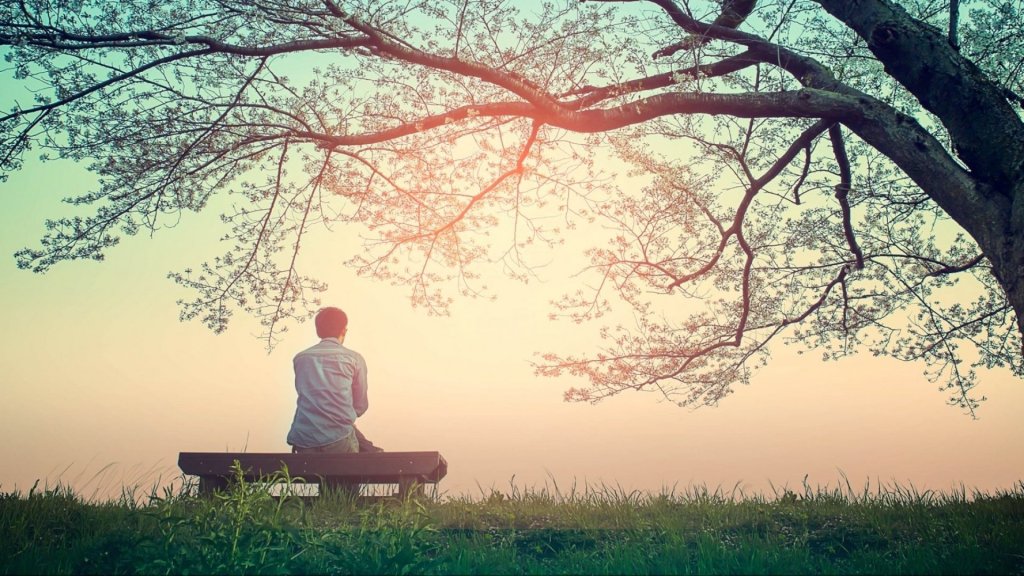
You may disagree with a decision and work toward orderly change but you do not have the luxury of having anger. You can fight to right a wrong, fight for the oppressed, or strive for change. You just can’t foment hate or anger. The base nature of this emotion has no place in Freemasonry.
And so, it comes round that the Brother who cannot transcend their anger will be swallowed up by it, and another good person will slowly sink into their lower nature. It is a simple step to realize that it is hubris to harbor resentment, and humility to let it go. I say simple but in fact, the act is about letting go of our deeply ingrained behavior and learning a new way of being. It takes practice. As Freemasons, we wake to a higher calling: it is on us to remain awake and never sleep.
[Featured Image: “Fallen Angel” by Alexandre Cabanel (1868)]
The Flaming Sword
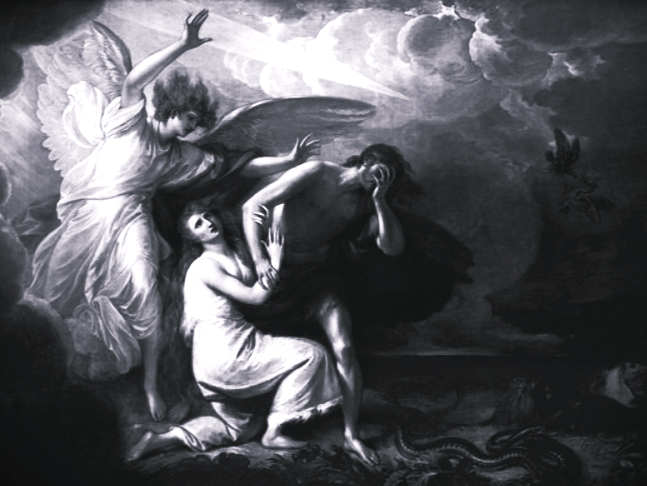
FOR many Freemasons, the Flaming Sword is a common symbol used to guard the entrance to the Masonic Temple, wielded by the Tyler of the Lodge. This is a full-sized sword, unsharpened, carried by the guardian to denote the entrance to Masonic work is under his care and jurisdiction. What is a Flaming Sword, and what is its significance to Freemasons?
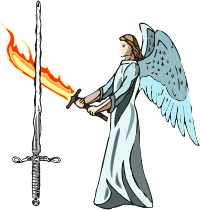
History of the Sword
FROM Mackey’s Masonic Dictionary, we learn that the flaming sword is representative of the sword carried by the cherubim who guarded the entrance to the Tree of Life, in the Garden of Eden, and who also drove Adam and Eve from the Garden due to their transgressions. However, this may only be the tip of the iceberg when it comes to the symbolism of the flaming sword.
“After he drove the man out, he placed on the east side of the Garden of Eden Cherubim and a flaming sword flashing back and forth to guard the way to the tree of life.”
– Genesis 3:24
However, this may only be the tip of the iceberg when it comes to the symbolism of the flaming sword.
For a brief historical look, swords were first produced around 3300 B.C.E., in the Bronze Age, first being produced in the Middle East. They were created from the manufacture of bronze, and generally about two feet long (24 inches or 60 cm). The sword developed naturally from the knife (single sharp edge) and dagger (dual sharp edges.) Sword development in China was of a similar time period and shape, while the Indian sub-continent developed these weapons about 1500 years later. The weapon didn’t really gain prominence until the Iron Age and the early Medieval period in Europe, where it became more sophisticated and a more vivid symbol of potency and domination. During the 11th century, Normans developed the use of quillons or cross-guards, which also gave rise to its connection with Christian iconography (the Cross of the Christ.)
There is an existent short article on the history of the Tyler / Tiler’s Sword, with some of the same references as noted above, found here. I would like to add to some deeper background, looking beyond the traditional Christian traditional story to perhaps uncover some additional symbolism.
Norse Gods and Sumeria

MUSPELHEIM is the home of the Fire Giants, in the Norse religion, and Surtr is the Guardian of this world. This realm is known as the “World Destroyers,” and Surtr, its guardian, is armed with a flaming sword. This sword features prominently in the creation and the destruction of the world, owing to the creative and destructive properties of fire. The sword is said to have created the Sun, the Moon, and the Stars, the light-givers in Earth’s sky. The sword is also said to be the death of Freyr, who represents peace and fertility, and the sword also contributes to the destruction of Bifrost. Written prior to Christianity coming to Iceland, the story comes from the Poetic Edda, specifically the Voluspa. Sections can also be found in the Prose Edda.
“Surtr moves from the south, with the scathe of branches: there shines from his sword, the sun of Gods of the Slain.”
– The Poetic Edda
In Ancient Sumeria, the god Asaruludu is noted as having a ‘flaming sword, ensuring the most perfect safety.’ He’s known as “light of the Gods” and the “Shining God who Lights our Path.” He has been seen as one of the gods who holds “the fate of man” and has been discovered in some Ancient Sumerian incantation manuscripts. In Ancient Hebrew texts, the sword appears to be related to two angels – Uriel and Jophiel, both having a similar import with regards to Truth, Wisdom, and Judgement. Additionally, according to Eastern Orthodox liturgy, the Flaming Sword placed by the unnamed cherubim, in the Garden of Eden, was removed after the Christ’s resurrection in order that humans may once again enter paradise.
An Esoteric View

THE Flaming Sword, more popular in literature than perhaps in actual use or fact, seems to be symbolically related to several key concepts, all appropriate to the office of the Tyler, or guardian of the Temple entrance. It may represent that only those that hold Truth or Wisdom may enter holy places or stand in the presence of that Truth. It also seems represent the power of that Truth, perhaps in the form of Spirit manifested in earthly realms by Fire.
In the light of the fire, it seems that impurities might be burnt away so that only what is “real” may be seen. In Freemasonic ritual, the Tyler’s place in the procession of members indicates that he is “lighting the path of the gods” and perhaps establishing that barrier, like the Norse believed, of creation and destruction. The Flaming Sword creates the sacred space and is also its destruction.
Swords also typically represent strength and virtue; it is a symbol of the strength of mind and clarity of reason. The Flaming Sword, with its addition of the fire element, indicates there is a living mind that oversees the actions of the universe. This living mind creates the ring-pass-not, the circumscribed ring of the material world, separating us from the rest of the manifested universe. Extrapolated, this indicates that the Lodge within the temple, as created by the procession of the Tyler, is a universe unto itself: as above, so below. Thus, the Tyler begins the process of establishing the Freemasonic ritual energetic boundary, as well as deconstructing it once the actual Lodge meeting is closed. In this way, the Tyler is unique in that he is separated from the ritual workings, but uniquely responsible for their beginning and their ending.
What Is Evil?

IN a recent conversation with a Brother, the question was asked of me, “How do you define evil?” This is a very loaded, deep, and profound question. It strikes on our religious, ethical, and moral doors, asking to join in a thousands-year-old conversation. What is evil? You might as well ask, “why does humanity exist?” Not for the off-the-cuff answer, right? Freemasonry delves into this moral dilemma, not only in symbol and allegory but also in ritual. These rituals come from not only the Mystery Schools of antiquity but also the philosophers through the ages. How have they informed the question of good and evil for the Freemason? Let’s dig.
Ancient Egypt

In Ancient Egypt, good could not exist without evil; a dualism that shows up in many cultures. From Reflections on Osiris, “The sun-god Ra came from the primeval mound of creation only after he set his daughter Maat in place of isfet (chaos). Kings inherited the duty to ensure Maat remained in place, and they with Ra are said to “live on Maat”, with Akhenaten (r. 1372–1355 BCE) in particular emphasizing the concept to a degree that the king’s contemporaries viewed as intolerance and fanaticism.” Thus, Isfet was chaos, disharmony, and upheaval. It was the duty of the pharaoh to maintain Ma’at and remove chaos from his realm. Evil, it seems, was all that was disharmonious and chaotic. Kings were there to create Order out of Chaos. Good out of evil, in other words. The motto of Freemasonry is “Order out of Chaos,” with its counterpart, “Chaos out of Order.”
Ancient Greece and Early Christianity

Socrates said, “There is only one good, knowledge. And there is only one evil, ignorance.” As Plato recounts in Protagoras his own views of Evil, through Socrates when discussing judgment. Socrates states that anyone with a well-formed judgment cannot do ‘evil;’ that an evil-doer is one who must not be thinking clearly. Virtue can be taught, and it is only in misinformation and “mal-education” that evil takes root. Correct the ignorance and you can correct the evil.
Marcus Aurelius said the same in meditations, taking it to more of a “modern” approach:
“When you wake up in the morning, tell yourself: The people I deal with today will be meddling, ungrateful, arrogant, dishonest, jealous, and surly. They are like this because they can’t tell good from evil.”
– Marcus Aurelius
Knowledge is good; Ignorance is evil. For the Freemason, Education is key to creating a better human and a better world.
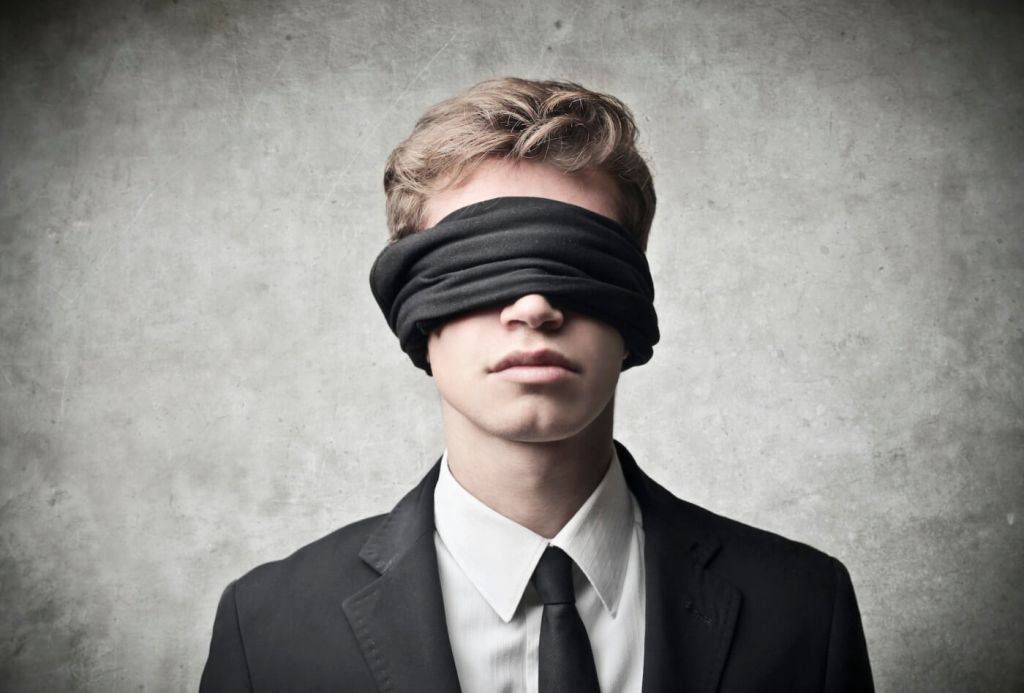
Christians didn’t always see evil as the personification of Satan, at least not until this was brought to the fore by the Christian fathers of the early Middle Ages in Europe. However, philosophically, after Plato, evil was generally seen as the absence of good. That is, anything that was called evil was in turn defined by its opposite, a positive outcome. If celibacy was good, sex was evil. If charity was good, greed was evil. Evil at this stage got mixed up with the word “bad” and became intertwined within Christian and Neo-Platonic philosophy. This became the tool for Western religious scholars to mold a moral philosophy into religious scripture, and begin to muddy the waters for all who were touched by it. God is good; anything Not-God is evil.
Freemasons are encouraged to find their personal religion and follow it to the best of their abilities. In fact, all regions are embraced and accepted within membership because they are, ostensibly, multiple facets of positive, divine morality. They do not look at good and bad as necessarily hard and fast rules but seek the deeper values that transcend God, thus transcending the simple of view God / Not-God.
Buddhists and The Postmodern Age
For Buddhists, the human being can create negative actions and feelings which in turn give rise to evil. While the Buddhist might not believe that the human being is evil, these actions and emotions of anger, hate, and avarice lead to suffering which is evil. These emotions arise from the fact that the human being sees himself as separate from others.
By oneself, indeed, is evil done; by oneself is one defiled. By oneself is evil left undone; by oneself, indeed, is one purified. Purity and impurity depend on oneself. No one purifies another.
– The Dhammapada, Chapter 12, Verse 165

Evil is not some external force, being, or spirit: evil to the Buddhist is an internal manifestation of not seeing oneself as part of the greater “body” of humanity. Unity and peace are good; separateness and suffering are evil. Freemasons strive to do their work to the perfecting of Humanity, to follow the Natural Law, and seek Truth. There is no segregation between race, creed, religion, and gender, especially in Co-Masonry. The ideal of Solidarity, not Charity, is the way the Freemason seeks to alleviate suffering.
Indeed, in our Postmodern age, we find that evil cannot be found. Moral Nihilists believe that there is neither good nor evil because it cannot be found in Nature. Morality per se is a fiction created by human beings, and thus, the terms and classifications of good and evil are irrelevant. To a strict moral nihilist, murder and rape are not evil – they are simply actions that one human took against another. A bear killing another bear (the classic definition of murder), regardless of whether he eats him or not, is just nature taking its course. While the Moral Relativist will see good and evil as applying to a local culture or set of mores, moral nihilists see no such distinction – good and evil do not exist. This is a tough aspect for the Freemason, I think, because Freemasons have accepted that there is a moral code they must follow. However, the Freemason must learn tolerance and accept that something that goes against their own moral compass might be acceptable in a culture other than their own.
Divisiveness

It’s interesting how human existence has run the gamut of evil’s origin – external, internal, and now non-existent. While it might be easy to fall into any of these various thoughts noted above, I reflect back to the question asked of me, personally: “What is Evil to you?” I fall to Hegel and what I believe is where he was going (which may have later been misinterpreted by modern minds.) Hegel said, “Evil effectively occurs when ‘subjectivity declares itself absolute’.” That is, evil comes from the internal choice to either see oneself as part of a greater society (humanity) or see oneself as a closed system, sovereign only to our personal natures. It is the internal voice that divides rather than unites.
Evil is division, and Good is unification. This is not at the base physical level but at the level of humanity where the human form is irrelevant – the higher concept that we are a part of a natural world, far more vast than we know. When we divide ourselves from this, we create chaos, ignorance, suffering, and separateness. We create evil. For me, as a Freemason, I see the lessons of the degrees I have as all pointing to this one truth: In order for humanity to achieve its potential, we all need to work to erase that which divides and work to create a mental, physical, emotional, and spiritual state where we are all One.
Freemasons, I think, have a lot of work ahead of them.
PART II: What Esoteric Knowledge lies veiled in Classical Art?

AS Discussed in PART I, Classical Art builds on the cultural ideals of Ancient Greece and Rome, as demonstrated in painting, sculpture, and architecture. Founded upon the virtues of harmony and divine proportion, these artists sought to elevate the human form by adorning it with the highest, illuminating humanity’s evolution, and depicting man’s relationship with the Divine. Moreover, the term, Esoteric, has been defined as “known only to the few,” and is derived from the Greek root Esō, meaning “within.” To study Esotericism, often requires communing with a small inner circle of learned fellows in order to embark on a journey of self-discovery.
We continue the discussion by considering the following pieces of Classical Art…
MAGDALENE WITH THE SMOKING FLAME BY GEORGES DE LA TOUR

BORN in 1593, Georges de La Tour was a painter, mostly of candlelit subjects. La Tour became a master painter and eventually settled in Lunéville (modern day France). La Tour’s paintings are marked by a startling geometric simplification of the human form and by the depiction of interior scenes lit only by the glare of candles or torches. His religious paintings done in this manner have a monumental simplicity and a stillness that expresses both contemplative quiet and wonder. Magdalene with the Smoking Flame is a 1640 oil-on-canvas depiction of Mary Magdalene by the French Baroque painter.
MELENCOLIA I BY ALBRECHT DÜRER

MELENCOLIA is one of three large prints known as the German Master, Albrecht Durer, Meisterstiche (Master Engravings). Created in 1513-1514, Melencolia I a depiction of the intellectual situation of the artist and is thus, by extension, a spiritual self-portrait of Dürer. In medieval philosophy each individual was thought to be dominated by one of the four humors; melancholy, associated with black gall, was the least desirable of the four, and melancholics were considered the most likely to succumb to insanity. Renaissance thought, however, also linked melancholy with creative genius; thus, at the same time that this idea changed the status of this humor, it made the self-conscious artist aware that his gift came with terrible risks.
THE ANCIENT OF DAYS BY WILLIAM BLAKE

SERVING as the frontispiece to Blake’s book, Europe a Prophecy (1794), The Ancient of Days illustrates Urizen, a mythological figure created by the poet. Representing the rule of reason and law, Urizen was Blake’s depiction of God as described in the Book of Proverbs: the one who “set a compass upon the face of the earth.” Viewed an old man with white beard and hair, Urizen is in an illuminated orb and surrounded by a circle of clouds. There, God crouches, his left hand extends a golden compass over the darkness below, creating and containing the universe. With classical anatomy and an energetic, bold composition, Blake’s work evokes a vision of divine creation.
In The Book of Urizen (lines 31-40), Urizen makes the following statement:
“Lo! I unfold my darkness, and on this rock place with strong hand the Book of eternal brass, written in my solitude … One command, one joy, one desire, one curse, one weight, one measure, One King, one God, one Law.”
– William Blake
THE TOWER OF BABEL BY PIETER BRUEGEL THE ELDER

PIETER Bruegel the Elder, aka: Pieter Bruegel I (1525–1569), brought a humanizing spirit to traditional subjects and boldly created new ones. He was an astonishingly inventive artist; whose impact was widespread and long lasting. The Tower of Babel was the subject of three paintings by Pieter Bruegel the Elder. The (Great) Tower of Babel has a group in the foreground, with the main figure thought to be the Tower’s creator, Nimrod.
The painting depicts the construction of the Tower of Babel, which, according to the Book of Genesis (Chapter 11, Verse 4), was built by a unified humanity, which spoke a single language, as a mark of achievement built to prevent humanity’s scattering:
“Then they said, ‘Come, let us build ourselves a city, and a tower with its top in the heavens, and let us make a name for ourselves; otherwise we shall be scattered abroad upon the face of the whole earth.”
– Book of Genesis, Chapter 11, Verse 4
THE SCHOOL OF ATHENS BY RAPHAEL

MASTER Artist of the Italian Renaissance, Raphael Sanzio achieved success and rose to fame early in life; In his twenties, he was invited by the Pope to live in Rome as an artist, where he would spend the rest of his days. Starting in 1509, he began decorating the first of four rooms in the Papal Palace. Raphael’s fresco, The School of Athens, has come to symbolize the marriage of art, philosophy, and science that was a hallmark of the Italian Renaissance. Painted between 1509 and 1511, it is located in the first of the four rooms designed by Raphael, the Stanza della Segnatura.
The School of Athens is considered a powerful and prophetic work of Art: illustrating the evolution of consciousness, the role of Christ and Christianity in human evolution, and the path of individual inner development. Spadaro shows how Raphael’s paintings depict, with precision and in detail, the spiritual, cosmic, and physical situation of humanity, through which it must grow to fulfillment.
IS FREEMASONRY’S GREAT WORK BOTH ESOTERIC AND EXOTERIC?
“Of interest, exoterically, is the fact that the Soul passes through experiences before, during and after Initiation into Freemasonry which are symbolically portrayed within the Temple. The application for membership, interviews, voting, acceptance, payment of dues, preparation, admission, Initiation… these represent at the physical level precisely the same processes through which the Soul has gone or will go at the Causal level.”
– Bro. Geoffrey Hodson
DESCRIBED by some as a fraternal group, an esoteric organization, a charity, a cult, or a religion: What exactly is Freemasonry? Regardless of how it is labelled, Masonry’s goals and mission remains constant. Masons work to create a better world by improving humanity, both at an individual and collective level. “Remember always that all Masonry is work,” wrote Bro. Albert Pike, and Masons are sculpted by ritual for exoteric labors: activities conducted for the welfare of mankind according to Masonic principles.
It is in this mysterious, hidden ritualistic work where much of the speculation of what Freemasonry does and does not do begins. As Bro. Kristine Wilson-Slack 33o writes:
“In at least one Masonic Order, and probably many others, it is specifically stated that Freemasons have a special charter to input esoteric knowledge into the Masonic members. By esoteric, let’s use the basic form of the word, meaning “knowledge meant only for a few.” Freemasonry, being a select organization, is “esoteric” in this way.”
– Bro. Kris Wilson-Slack
Masons constitute a minute percentage of the approximate Eight Billion Human Beings currently alive on our planet. Esoteric, in its uncomplicated form, does not connote anything spiritual, religious, or occult.
While some aspects of Freemasonry may be considered “esoteric,” other important work is actually “exoteric” in nature. According to the Masonic scholar and author, Geoffrey Hodson:
“A Great Work therefore remains to be done for exoteric Freemasonry… it is essential that it be reoriented towards its true purpose, which is both to aid the spiritual evolution of mankind and to establish Brotherhood of mankind and to establish Brotherhood without distinction of race, creed, sex or color on Earth… it is greatly to be desired that the Order be revealed as a recognizable expression of, and channel for, the true Wisdom.
– Geoffrey Hodson
It is toward the fulfillment of these goals that the Brothers of Universal Co-Masonry labor. Whether aware or unaware, all members assist in these endeavors and bring Humanity, step-by-step, ever closer to its ideal and perfected state.
Judge and Jury

In a recent conversation, many Freemasons were discussing the idea of Justice. What is Justice? How does a Freemason view Justice? There were, as always, a few different points of view about this topic. The core of the conversation ended on the action of judgement and who, or when, does the Freemason judge? Must we be the judge of another’s actions and character? Or, must we “judge not our Brother, lest we be judged?” There are always two sides of a passionate discussion (maybe more), and they are interesting to explore how some Freemasons view the idea of judgement.
Freemasonry has its own jurisprudence; this is a fact that many Freemasons don’t know or understand until they have been members for some time. This jurisprudence covers all aspects of a Freemason’s career, including actions taken outside of a Lodge room. This is an interesting aspect of Freemasonry’s jurisprudence and something, again, people do not necessarily understand. You don’t suddenly become a non-Freemason when you’re not in Lodge with your fellow members; you are a Freemason always, and this jurisprudence covers every aspect of your life.

Another interesting aspect of Freemasonry is that Freemasons are told they should exercise their own morality, and that this morality is personal. Freemasons will not tell one another what morality they should hold, only that they should hold to it. That being the case, we cannot judge another’s morality; we can only judge whether their actions are in accordance with their words. Do we judge intentions? Can we judge intentions? This was another topic of debate: some say yes, other’s say no.
Albert Mackey, 19th Century Freemason and author, wrote several books on Masonic Jurisprudence, and they may be found through most book sellers, if one is tenacious enough. Project Gutenberg has posted Mackey’s Principles of Masonic Law at this link. This book covers Masonic crimes, qualifications of candidates, history of Masonic law, and Law as it applies to both Grand and subordinate Lodges. Quite comprehensive, it serves as the foundation for many Masonic Orders today. If one reads the text, particularly under Masonic Crimes, there are many offenses which would, by some today, be considered not crimes:
“If such, then, be the meaning of the moral law, and if every Mason is by his tenure obliged to obey it, it follows, that all such crimes as profane swearing or great impiety in any form, neglect of social and domestic duties, murder and its concomitant vices of cruelty and hatred, adultery, dishonesty in any shape, perjury or malevolence, and habitual falsehood, inordinate covetousness, and in short, all those ramifications of these leading vices which injuriously affect the relations of man to God, his neighbor, and himself, are proper subjects of lodge jurisdiction.”
How many of us Freemasons would live up to these precepts today? Freemasons, this one included, might do themselves a great favor if they continue to review these ideals often, and ask ourselves if we live up to them. I also put forth, would we have the right to judge our fellow Freemasons if we don’t first judge ourselves? What are our intentions in the judgement? What do we hope to achieve in our thoughts and actions?
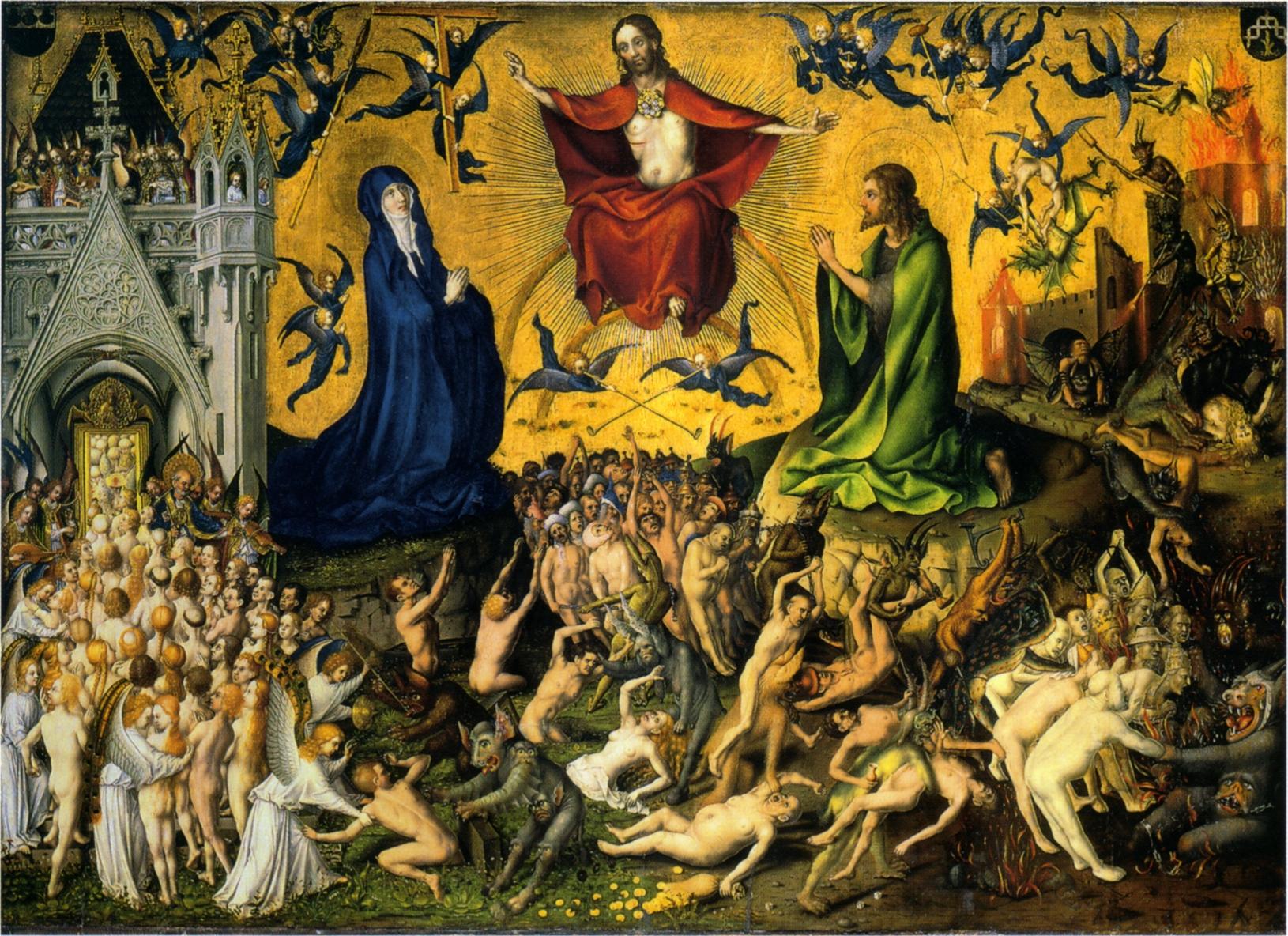
Do Freemasons actively and thoroughly judge another human? Yes, of course. In the first sense, Freemasonry is not an open-to-everyone organization. We have the duty to ensure that the Landmarks of Freemasonry are kept, and that if we suspect anyone of being dishonest, immoral, or subversive, we have a duty to call it out before that person is ever admitted to a Temple. How does the Freemason judge a neophyte? That is on the individual Freemason to find a way; asking questions of other Freemasons, inquiring with the neophyte’s friends and relations, reference checks should all be followed; background checks even are possible avenue. The point is that the voting Freemason must make a personal judgement about the character of both the candidate as well as the data provided by his fellow members.
Every time a member takes a step to the next degree, their actions are balloted upon by the Lodge. Do they fulfill the requirements as the individual Freemason sees them? That is a judgement. We just not only the actions of the Freemason but also their intentions. When I say intentions, I say the actions that expose the bent of their mind and inclination. Someone can follow the letter of the law and yet still be found wanting. The strength of Freemasonry is built on the membership’s ability to discern, discriminate in a positive way, and vote their conscience. This is far easier said than done, as in this current age we try to be ‘nice’ and ‘polite’ to everyone. It serves no one to pass a false judgement on a member; it is detrimental to the aspiring member as well as the Lodge integrity.
Simply, every Freemason has the duty and obligation to vote or ballot. Always. Each time this occurs, the Freemason casts a judgement.

Perhaps the question is not “Does or Should a Freemason judge another” but “How or What should a Freemason judge?” To cast doubt on someone because they don’t believe or act as you do seems to me to be a false judgement.
Remember that to judge something is to form “an opinion or conclusion” about someone. We do harm when we consider that everyone should be like us or think like us. If a person believes in honesty and yet lies, we may certainly judge this. If a person believes in honesty and is very vocal with her honest opinions, who are we to judge their delivery if the words are intended to build?
Their methods may be different but they are following their own morality. Judging others by their outward trappings is another false judgement. When we make assumptions about another, without even talking with them, we have done a terrible disservice to ourselves and to humanity as a whole. It should be noted that in order to form an opinion, we are saying we are “expert” in our knowledge. How expert may a judgement be if we haven’t even gotten to know another?
Masonic jurisprudence exists for a reason and in its existence lies the very fact that a Freemason must be a judge. How and why, to what ends they judge, and the knowledge to become discerning judge are part of the Freemason’s journey.
In Memoriam: David Lettelier
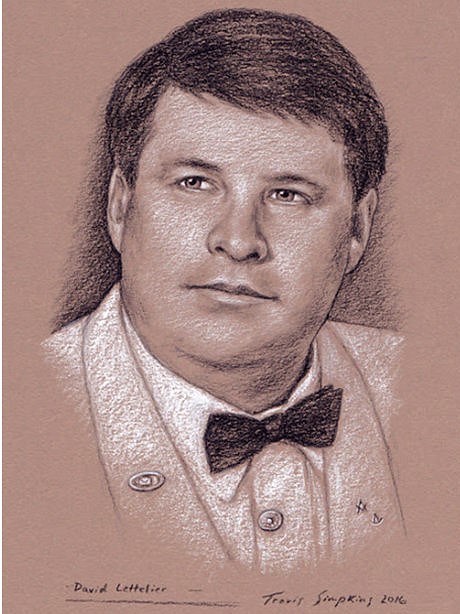
WOR. Bro. David Lettelier was a life-long Mason. Born March 21st, 1959, his was a life spent in service to the expansion of the Craft he loved so dearly. A Past Master of Northside Lodge No. 283, in St. Petersburg, Florida and member of numerous appendant bodies, Bro. David lived and breathed for Freemasonry.
Bro. Lettelier recognized the importance of the Internet to the future of Freemasonry. In April of 1999, a time when the use of computers and the Web was still in its infancy, Bro. David started the Phoenix Masonry Online Museum and Library.

Phoenix Masonry would grow from a small personal website to one of the largest and most complete repositories of Masonic Light on the Internet and blazed the way for other Masonic websites to follow.
At its height, it earned 60,000 visits per day and was the largest and most-visited Masonic website on the Internet. Phoenix Masonry’s catalog of essays, architectures, books, and ancient documents has served the Masonic academics of the 21st Century in their quest to understand our Craft and will stand as a monument to the collective knowledge of Freemasonry. [Image: Bro. David as Museum Curator – 1997]
Its digital museum, containing over 3,500 objects, can still be viewed today and will stand as an enduring record of the physical products of those that have loved the Craft throughout the ages. The welcome page reads…
It is here at our website, the cornerstone of Phoenixmasonry, that we fulfill our obligations to the service of humankind through education and enlightenment. The mission of Phoenixmasonry is dedicated to facilitating a spiritual rebirth and resurrection in the philosophy of Freemasonry: “To take good men and women and make them better!”

Bro. David was himself a Masonic writer of great symbolic understanding. His now-famous lecture on the symbolism of George Washington’s Masonic Apron remains on Phoenix Masonry and has been recorded for posterity on YouTube. In it, he demonstrates the fruits of a lifetime of Masonic, symbolic, and esoteric research and study.
A long-time ally of the efforts of Co-Masonry in particular and esoteric Freemasonry in general, Bro. David believed Freemasonry to be much more than an “old boys” club for fraternalizing and conducting business. Instead, to him, Freemasonry’s work was the…
…glorious purpose of spreading the cement of brotherly love and affection; that cement which unites us into one sacred band, or society of friends and brothers, among whom no contention should ever exist.
Wor. Bro. David Lettelier was an ordinary man of extraordinary accomplishments. His museum, to him, was much more than a mere collection of objects but the physical evidence of the transcendent ideals of Freemasonry spreading throughout society.
There are pleasures in the act of accumulation: the thrill of the hunt, the joy of the find. But true collecting is more. It’s listening for the hum of history in things, finding connections among art and objects of different times and cultures, and gathering images so that, as in poetry, they reveal new meaning.
David James Lettelier March 21, 1959 - April 19, 2021
But more than his stunning collection, more than his monumental website, Bro. David Lettelier leaves behind friends and Brothers who count themselves lucky to have known him. His warmth of character, generosity and palpable devotion to the sacred cause of Freemasonry will forever be remembered in the safe and sacred repositories of those that had the good fortune to have met him on the Level.
As he passes from the transient, material realm, to the Temple Not Made With Hands, he will surely be gratefully received and properly applied in the Eternal Work of his beloved Craft.
Well done, good and faithful servant. Thou has been faithful over a few things, I will make thee ruler over many things and enter thou into the joys of thy Lord.
– The Gospel of St. Matthew: Chapter 25, Verse 23
In accord with Bro. David’s request, the PhoenixMasonry Museum has been relocated to Colorado, ensuring the preservation of his diligent service and masonic legacy. Now a permanent exhibit at UCM’s Headquarter Campus in Larkspur, David’s work, and masonic legacy will be preserved for future generations.
UCM’s Masonic Library and Museum are free and open to the general public year-round. For more information about the Library, directions, or to schedule a tour, please contact Library Staff via email or phone as listed below.
UCM MASONIC LIBRARY AND MUSEUM
9070 S. Douglas Blvd.
Larkspur, CO, 80118
Phone: (303) 681-2028
The Music of the Spheres

Freemasonry is filled with music. Many organizations use hymns and the like to inspire their members. Classical music and modern aesthetic music can fill Temple rooms these days, provoking emotion or thought, based on the hearer. Music is so important that it has its own officer, one who consciously chooses the soundscape of every Lodge meeting. Lodge meetings may be some of the first occasions of some members being able to hear classical music, applied to ritual and oration. As we progress through the degrees of Freemasonry, we begin to apply a deeper meaning to the reason for the sounds we hear, the lessons we learn. We understand that, if the Lodge room is a blueprint of the universe, music is the harmony of that universe, connecting our brains to a larger realm.
How did music become so integral to ritual and important to Freemasons?

It started with Pythagoras. It always does. Pythagoras is the name that springs to the lips of students and teachers alike, when the question of origin is involved. It had to start somewhere. Here, though, the germ of the idea really did start with Pythagoras. Like Lucretius, another man ahead of his time, Pythagoras conceived of the bodies of the universe having a resonance and harmony that created what was called, later, as “Musica Universalis.”
Pythagoras proposed that our celestial bodies had a district hum to them, based on their orbits. While no surviving works by Pythagoras exist, we know that he conceived of the harmony of rational numbers. Based on this harmony, he extrapolated that the Sun, Moon, planets, and Earth all produced a vibration that may not be heard by the human ear; yet, for all intents and purposes, it did produce a sound.
Plato took this farther, combining music and astronomy as different methods by which to conceive, with human senses, the ideas of numbers. Other philosophers took up the idea, including Pliny the Elder (referencing Pythagoras) and Aristotle. Aristotle did not believe the music was audible to the human ear and truly, that it did not exist at all; his rationale was that the bodies in question were so great that if they did make a sound, we would surely hear it and die from it.

These ideas, especially between mathematics, astronomy, and music were so great and consistent that they eventually made their way into the classical lessons of the Quadrivium, where the concepts of the Music of the Spheres was taught. Boethius, a 6th Century C.E. Roman philosopher and neoplatonist, wrote De institutione musica and based on the ideas of Plato and Pythagoras, reawakened the ideas of numbers/mathematics and astronomy being critical to the understanding of the cosmos. This work was used by medieval and early renaissance scientists in understanding why the Greeks found these harmonies to be so important.
We fast forward to 1619 and Johannes Kepler. In this year, Kepler published a book Harmonices Mundi – meaning “The Harmony of Worlds.” After publishing Mysterium Cosmigraphicum, Kepler continued to pursue the ideas that were put forth by these early Greek Philosophers.
However, he, like Aristotle before him, did not believe this music could be heard by the human ear. What Kepler did believe is that the human soul could feel and/or hear this music produced by the universe and be soothed by its harmonies. Kepler dove deep into the past (Proclus, Pythagoras, Aristotle, even Boethius) and not only enlivened a new generation of scientists to the conjunction of music and astronomy, but bolstered his heliocentric theory of our Solar System.

As we move solidly into the 21st Century, we now have recorded some of these sounds being created. Radiation produced by the celestial bodies can be converted into sounds that the human ear may hear. They are not musical to our sensibilities; yet, from them one can see how music can be created. From orbits and spacing, one can also create music for the human ear – not just with our solar system but with many solar systems. One man, Matt Russo, has done just that. For an interesting TED Talk on all of this, access this link.
Freemasonry is a proponent of the Trivium and the Quadrivium, ancient foundational teachings that are the source of much of what we know today. The ideas of these ancient philosophers are the stones by which the Trivium and Quadrivium were established. Lucretius conceived of atoms and molecules. Pythagoras conceived of the harmony and relationship of strings and notes. Hypatia conceived of the idea of elliptical planetary orbits. Aristotle gave us the idea matter being made of fire, earth, air, and water.
All of these, simplistic and common as we now know them to be, began somewhere. That ‘somewhere’ is ancient thought, refined and brought forward to the modern age. Why does Freemasonry care so much about this knowledge? These philosophers?
It is not just because they are foundational knowledge; Freemasons care because they are curious. The curious explore and discover. The curious are the ones that create new modes of thinking, of being, and living. They debate and discuss and expand thought based on this curiosity and this knowledge. They ask themselves, how did ritual and music become so inextricably entwined?

Knowing that these ordinary humans may conceive of extraordinary ideas, and further progress of humanity give us modern humans that same license — a license to be curious and create; a license to build a better life for us all.
“Music is the language of the spirit. It opens the secret of life bringing peace, abolishing strife.”– Kahlil Gibran
What Esoteric Knowledge lies veiled in Classical Art?

AN enduring cornerstone of Western Civilization, Classical Art builds on the cultural ideals of Ancient Greece and Rome, as demonstrated in painting, sculpture, and architecture. Founded upon the virtues of harmony and divine proportion, these artists sought to elevate the human form by adorning it with the highest, illuminating humanity’s evolution, and depicting man’s relationship with the Divine. For more than a Millenia, classical artistic expression has been shaped by the reverence of the virtuous, the good, and the beautiful. In Manly P. Hall’s work, The Secret Teachings of All Ages, we learn:
“Symbolism is the language of the Mysteries; in fact, it is the language not only of mysticism and philosophy but of all Nature, for every law and power active in universal procedure is manifested to the limited sense perceptions of man through the medium of symbol… By symbols men have ever sought to communicate to each other those thoughts which transcend the limitations of language.”
~ Manly P. Hall
Does symbolism transcend the limitations of language? Is a picture worth a thousand words?
CRYPTIC, ABSTRUSE, MYSTERIOUS: WHAT DOES “ESOTERIC” REALLY MEAN?

THE term, Esoteric, has been defined as “known only to the few,” and is derived from the Greek root Esō, meaning “within.” To study Esotericism, often requires communing with a small inner circle of learned fellows in order to embark on a journey of self-discovery. The opposite of esoteric is exoteric, meaning “suitable to be imparted to the public,” and historically linked to the ancient philosopher Aristotle. Those deemed worthy to attend Aristotle’s private discussions were known as his “esoterics,” or confidants.
Whereas, the “exoterics” were individuals who only attended Aristotle’s popular evening lectures. Because such information is largely incomprehensible to the general population, esoteric is sometimes erroneously equated with that which is difficult to understand. Instead, esoteric scholars are typically empowered by exceptional methods of education, such as hyper-specialized training, private tutoring, intensive study, or initiation.
Most religions provide exoteric or fundamental teachings, as well as, a path of esoteric study for those who seek it. Perhaps it could be said that once a fundamental understanding of the tenants of a religion is obtained, a door swings open providing the seeker a deeper level of wisdom and understanding. In Christianity, the Apostle Paul wrote:
“And I, brethren, could not speak unto you as unto spiritual, but as unto carnal, even as unto babes in Christ. I have fed you with milk, and not with meat: for hitherto ye were not able to bear it, neither yet now are ye able.”
~ 1 Corinthians 3: 1-2
This dichotomy of basic and advanced study exists within other religions such as Islam, where Sufism serves as the esoteric branch of the religion. Freemasonry provides similar esoteric instruction to members of all religious faiths. What is the difference between esoteric and exoteric knowledge? Does one need to be an initiate to study esotericism?
WHAT LIES HIDDEN? VIEWING ART THROUGH AN ESOTERIC LENS
IN this series, we seek to uncover the hidden meaning found in the artistic works of numerous Masters, including Michelangelo, Pieter Bruegel the Elder, William Blake, Georges de La Tour, and Raphael. Let us begin the discussion by outlining a basic structure for analyzing art through an esoteric lens; thereby, we will utilize both observation and intuition, symbolically represented by the concrete and abstract minds.
OBSERVATION: Observe the work of art and search for the following:
- Inconsistencies
- Patterns
- Clues
INTUTION: What does your intuition tell us about this art?
Many people think of intuition as instinctual or even magical. Our intuitive hunches, however, are assumptions formed based on experience and cumulative knowledge. They tend to arise holistically and quickly, without conscious awareness of the underlying mental process of information. Intuition is nonconscious thinking; essentially, the brain on autopilot. Scientists have repeatedly demonstrated how information can register on the brain without conscious awareness and positively influence decision-making. How are observation and intuition different? Does each correspond to a different hemisphere of the brain?
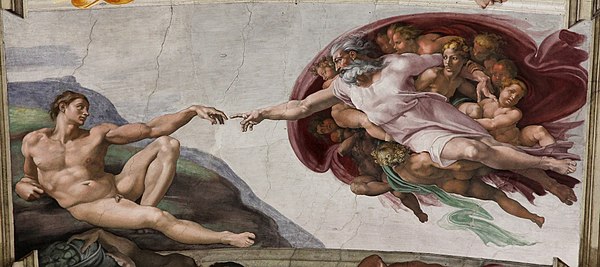
THE CREATION OF ADAM BY MICHELANGELO
To begin, The Creation of Adam has long been recognized as one of the world’s great art treasures. From 1508 to 1512, the Italian Renaissance Master, Michelangelo Buonarroti, painted glorious frescoes, including The Creation of Adam, on the ceiling of the Vatican’s Sistine Chapel, as commissioned by Pope Julius II. Michelangelo wrote the following describing the artistic process:
“After the divine part has well-conceived,
Man’s face and gesture, soon both mind and hand,
With a cheap model, first, at their command,
Give life to stone, but this is not achieved
By skill. In painting, too, this is perceived:
Only after the intellect has planned
The best and highest, can the ready hand
Take up the brush and try all things received.”
~ Michelangelo
What can be unveiled regarding The Creation of Adam through observation and intuition?
To be continued in Part II….
A Stupid Atheist?
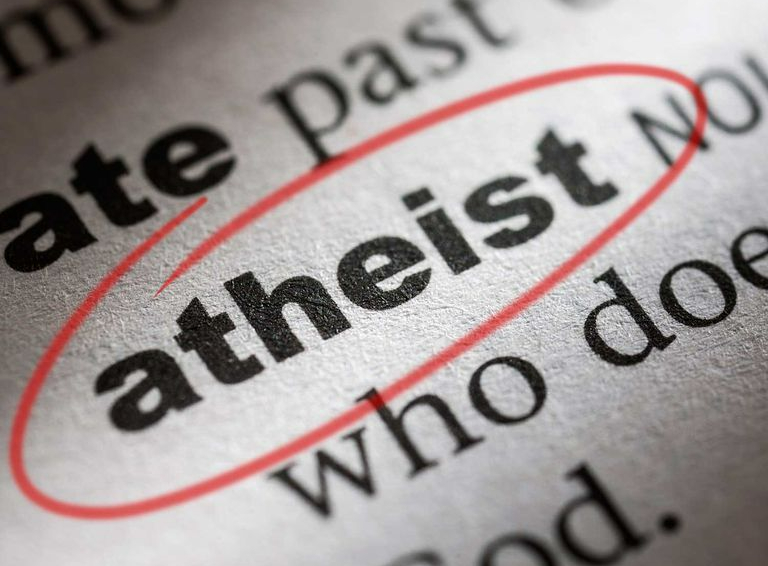
THE first of the Old Charges, “Concerning God and Religion” begins:
“A Mason is obliged, by his tenure, to obey the moral law; and, if he rightly understands the art, will never be a stupid atheist….”
That all petitioners for the degrees express a belief in Deity is a fundamental requirement. That all elected candidates who receive the entered Apprentice degree publicly express a belief in deity is a fundamental requirement. No lodge would accept the petition of any man unwilling to profess his faith in Deity.
We are taught that no atheist can be made a Mason, and the reason usually assigned is that, lacking a belief in Deity, no obligation can be considered binding. The real reasons for the non-acceptance of atheists into the Fraternity goes much deeper. We are not entirely accurate when we say that no obligation can be binding without taking an oath. Our courts of law permit a Quaker to “affirm” instead of taking an oath to tell the truth, inasmuch as a Quaker’s religious belief does not permit him to swear.

Yet, a Quaker who tells an untruth after his affirmation is as subject to the penalty for perjury as the devout believer in God who first swears to tell the truth, and then fails to do so. The law holds a man truthful who affirms, as well as one who swears to tell the truth.
No atheist can be made a Mason, far less from lack of binding power of the obligation taken by such a disbeliever, than from Freemasonry’s knowledge that an atheist can never be a Mason “in his heart.” Our whole symbolism is founded on the erection of a Temple to the Most High. Our teachings are of the Fatherhood of God, the brotherhood of man founded on that fatherhood, and the immortality of the soul in a life to come. A disbeliever in all these could by no possible chance be happy or contented in our organization.
WHAT IS AN ATHEIST?
IT is possible to spin long-winded theories about the word, draw fine distinctions, quote learned encyclopedias and produce a fog of uncertainty as to the meaning of “atheist” as hopeless as it is stupid, From Freemasonry’s standpoint an atheist is a man who does not believe in Deity. Which immediately brings out the far more perplexing question:
THE question has plagued many a Masonic scholar and thousands of men less wise. It is still a matter of perplexity to many a man who fears that the friend who has asked him to sign his petition is an atheist.
“What is this Deity in which a man must believe?”

Such an anthropomorphic God, derived from descriptive passages in the Bible, added to by the drawings of artists and crystallized in an age of simple faith, have given such a conception to many who find it adequate.
Here is where all the trouble and the worry comes on the scene. Man’s idea of God differs with the man, his education, his early religious training. To some, the mental picture of God is that of a commanding, venerable figure with flowing white hair and beard – the great artist Dore so pictured God in his marvelous illustrated Bible. Such a conception fits naturally in a heaven of golden streets, flowing with milk and honey. White clothed angels make heavenly music on golden harps, the while Deity judges between the good and the evil.
Others conceive of Deity as a Bright Spirit, who moves through the universe with the speed of light, who is “without form” because without body, yet who is all love, intelligence, mercy and understanding. The man who believes in the anthropomorphic God describes his conception, then asks the brother who believes in a Bright Spirit:
“Do you believe in my God?”
If the answer is in the negative, the questioner may honestly believe him who answers to be an atheist. The Deity of a scientist, a mathematician, a student of the cosmos via the telescope and the testimony of geology, may be neither anthropomorphic nor Bright Spirit, but a universally pervading power which some call Nature; others Great First Cause; still others Cosmic Urge.
Such a man believes not in the anthropomorphic God, not in God as a Bright Spirit. Shall he call his brethren who do so believe, atheists? Have they the right so to denominate him?
CAN GOD BE DEFINED?
TO the Geologist, the very handwriting of God is in the rocks and earth. To the fundamentalist, the only handwriting of God is in the Bible. Inasmuch as the geologist does not believe in the chronology of the life of the earth as set forth in the Bible, the fundamentalist may call the geologist an atheist. Per contra, the geologist, certain that God has written the story of the earth in the rocks, not in the Book, may call the fundamentalist an atheist because he denies the plain testimony of science.

One is a right, and each is as wrong, as the other! Neither is an atheist, “because each believes in the God which satisfies him!”
You shall search Freemasonry from Regius Poem, our oldest document, to the most recent pronouncement of the youngest Grand Lodge; you shall read every decision, every law, every edict of every Grand Master who ever occupied the Exalted East, and nowhere find an ukase that any brother must believe in the God of some other man. Nowhere in Freemasonry in England, its Provinces, or the United States and its dependent Jurisdictions, will you find any God described, cataloged, limited in which a petitioner must express a belief before his petition may be accepted.
For Masonry is very wise, she is old, old and wisdom comes with age! She knows, as few religions and no other Fraternity has ever known, of the power of the bond which lies in the conception of an unlimited God.
A witty Frenchman was asked once: “Do you believe in God?” He answered:
“What do you mean by God? Nay, do not answer. For if you answer, you define God. A God defined is a God limited, and a limited God is no God!”
From Freemasonry’s gentle standpoint, a God defined and limited is not the Great Architect of the Universe. Only God unlimited by definition; God without meets and bounds; God under any name, by any conception, is the fundamental concept of the Fraternity, and to believe in Whom is the fundamental requirement for membership.
LOGIC AND UNDERSTANDING
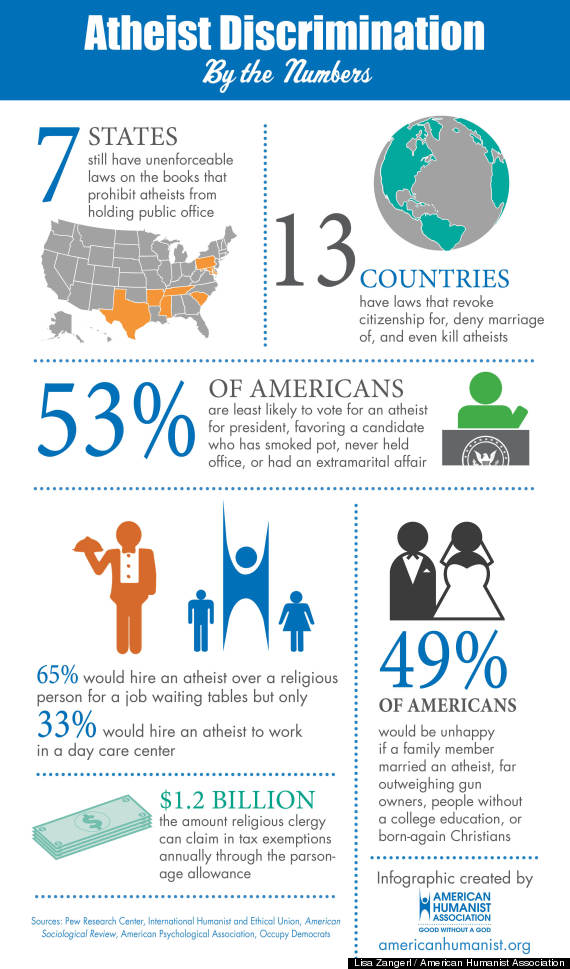
IN her Fellowcraft Degree, Freemasonry teaches of the importance of Logic. It is perfectly logical to say that the finite cannot comprehend the infinite; a truism as exact as to say that light and darkness cannot exist in the same place at the same time, or that sound and silence cannot be experienced at the same moment. A mind which can comprehend infinity is not finite. That which can be comprehended by a finite mind is not infinite. Therefore, it is logical to say that no man can comprehend God, since the only mind he has is finite.
But, if a man cannot comprehend the God in Whom he must express a belief in order to be a Freemason, it is obviously the very height of folly to judge his belief by any finite comprehension of Deity. Which is the best of reasons why Freemasonry makes no attempt at definition. She does not say: “Thus and such and this and that is my conception of God, do you believe in HIM?” She says nothing, allowing each petitioner to think of Him as finitely or as infinitely as he will.
The agnostic frankly says:
“I do not know in what God I believe, or how he may be formed or exist. I only know that I believe in something.”
Freemasonry does not ask him to describe his “something.” If it is to him that which may be named God, no matter how utterly different from the God of the man who hands him the petition, Freemasonry asks nothing more. He must “believe.” How he names his God, how he defines or limits Him, what powers he gives Him – Freemasonry cares not.
It is probable that the majority of those who profess atheism are mistaken in their reading of their own thoughts. An atheist may be an honest man, a good husband and father, a law abiding, charitable, upstanding citizen. If so, his whole life contradicts what his lips say. In the words of the poet:
“He lives by the faith his lips deny, God knoweth why!”
Many a man has reasoned about faith, heaven, infinity, and God until his brain reeled at the impossibility of comprehending the infinite with the finite, and ended by saying in despair: “I cannot believe in God!” Then he has taken his wife or his child in his arms and there found happiness, completely oblivious to the most profound, as the most simple fact of all faiths and all religions; where love is, there is also God!
DECLARATION OF BELIEF
BUT, Freemasonry does not go behind the spoken or written word. With a full understanding that many a man who defiantly denies the existence of God is actually not an atheist “in his heart” our Order nevertheless insists upon a plain declaration of belief. There is no compromise in Freemasonry;1 her requirement are neither many nor difficult, but they are strict.

Having accepted the declaration, however, Freemasonry asks no qualifying phrases “Nor should any of us question a declaration.” It is not for us to let our hearts be troubled, because a petitioner’s conception of Deity is not ours. It is not for us to worry because he thinks of his God in a way which would not satisfy us. Freemasonry asks only for a belief in a Deity unqualified, unlimited, undefined. Her sons cannot, Fraternally, do less.
When the great schism in Freemasonry ended in 1813, and the two rival Grand Lodges, the Moderns (who were the older) and the Antients (who were the younger, Schismatic body) came together on St. John’s Day to form the United Grand Lodge, they laid down a firm foundation on this point for all time to come. It was later declared to all by this, the primary, Mother Grand Lodge of all the Masonic World:
“Let any man’s religion or mode of worship be what it may, he is not excluded from the Order, provided he believes in the glorious Architect of Heaven and Earth, and practices the sacred duties of morality.”
What a Mason thinks about the glorious Architect, by what name he calls Him. how he defines or conceives of Him, so far as Freemasonry is concerned may be a secret between Deity and brother, kept forever, “in his heart!”2
1 While traditionally this is the case, some Masonic Obediences do not require candidates to profess a belief in God.
2 Originally published, SHORT TALK BULLETIN – Vol. X April, 1932 No.4
3 Ways to Improve the Civility of Our Conversations Online

IS it possible to have civil discourse online today regarding a controversial topic? I have to say, there are times that I feel it is not, or at least it’s extremely challenging. This is particularly true of online discussions via social media, which make up more and more of the political conversations going on these days. In fact, this is an understatement; the truth is that I often feel like the world has gone totally insane.
Why is this the case? There are various ideas floating around in the ether about why it’s gotten tough to talk to each other politely, mostly having to do with the lack of face-to-face interaction and the empathy that entails while interacting online, plus the echo-chamber effect of surrounding ourselves with only those who see the world as we do. I would even add certain cultural developments, particularly the idea that we are actually obligated to be outraged by certain ideas. This seems related to the idea of taboo, that some topics or opinions are simply forbidden, a pattern that has existed in virtually all human societies, although what is taboo in those various societies may be very different.
However, the current climate might be explained, what can each of us do to increase the civility of our own interactions? These are a few of my thoughts on what each of us can do to make our discussions more civil and ultimately more rewarding.
Recognize Civil Discourse as a Skill
 It’s not easy to keep your cool when someone disagrees with you. Much of our identities are tied up in our opinions and worldviews, and when someone questions that, it can sometimes feel like shaking our foundations. Of course, beneath every angry response is the hidden fear that we may actually be wrong, may have not properly thought something out, and might end up looking like a fool. It’s happened to us all at least once, and it could certainly happen again.
It’s not easy to keep your cool when someone disagrees with you. Much of our identities are tied up in our opinions and worldviews, and when someone questions that, it can sometimes feel like shaking our foundations. Of course, beneath every angry response is the hidden fear that we may actually be wrong, may have not properly thought something out, and might end up looking like a fool. It’s happened to us all at least once, and it could certainly happen again.
It’s important to recognize that overcoming this inner “trigger mechanism” is essentially a skill, one that has to be practiced and honed; in Freemasonry, this references the work of subduing one’s passions and is a key step in progressing in the Craft. Self-control, restraint from excess, and moderation in all things are some of skills which should distinguish a Freemason.
We all know that children lack the self-control necessary to always regulate their emotional outbursts, and so, those who are able to do it must have learned it along the way. Ideally, this would be a part of our standard education, at least at the college level, but sadly, many college students and graduates are still lacking in this department, especially since college campuses are increasingly becoming “safe spaces” where disagreement on some topics is not permitted.
Therefore, if you find yourself getting angry when you encounter those who disagree with you, be aware of what is unfolding within you, take a step back, and understand that you are practicing a skill, as you choose to respond more skillfully. Also, don’t be too hard on yourself when you fail, as some failure is required in the learning process of every skill.
Recognize Civil Discourse as Desirable
This might seem like a no-brainer, but oddly enough, in many cases it isn’t. There are various cultural movements which are almost opposed to the very idea of civil discourse, or at least have come to think that one should not be calm in discussing some “sacred cows.” My experience has been that this is true on both sides of the aisle.
A great example of how this is the case is the classic divisive political issue: abortion. On both sides of this issue, there is a general sense that you should be outraged at the other side. If you’re “pro-life,” then you believe people are murdering babies, and what sort of monster would be able to calmly discuss that? If you’re “pro-choice,” you believe that religious zealots are attempting to control people’s medical choices about their own bodies, and so what kind of psychopath could see that as justifiable?

I’m actually somewhat on the fence on this issue, which may be why it’s so apparent to me that these two camps are both being so unreasonable. The point here is not the ethical dilemma of abortion, but the fact that we can hardly seem to have a civil discussion about it. Insert any similarly divisive issue, and it’s more-or-less the same story.
This is why we absolutely must learn the skill of civil discourse. As President Abraham Lincoln once said, “A house divided cannot stand.” If we are ever to make progress and have any semblance of harmony and peace in society among various groups of people who see the world so differently, it will only be if we are able to communicate and see one another’s point of view. The only way that will happen is by civil discourse. [Image: Lincoln photographed by Preston Brooks in 1860. Library of Congress Collection.]
Learn to Be Comfortable With Uncertainty
One of my favorite quotes is from Robert Anton Wilson, when he said, “The totally convinced and the totally stupid have too much in common for the resemblance to be accidental.” This is not to accuse anyone of being stupid, but rather, to make us aware that our absolute conviction about certain things is very frequently a less intelligent way of operating. Even if we feel relatively sure about something, we should always understand that the information we have at our disposal is incomplete, and therefore leave a little room for doubt.
One pattern that I have observed, and luckily managed to avoid more often than not, is the swinging pendulum effect. Essentially, someone is very adamant about a topic, and then someone argues them well enough into the ground to make them feel foolish, and they swap positions, becoming even more adamant against those who hold their previous views. I speculate that this antagonism after a paradigm shift towards those who hold one’s old paradigm is a neurotic expression of one’s own shame at having been revealed as (apparently) foolish.
The key idea here is that if we never learn to be comfortable with uncertainty, then we tend to swing from dogmatism to dogmatism, waging ideological war against anyone we disagree with, perhaps subconsciously motivated by our shame at having had to admit we were wrong in our previous dogmatism.
Unity, Equality, and Temperance
Freemasonry upholds the virtues of Temperance and Equality; its principles remind us of the inherent Unity of all of Humanity: One Brotherhood of Mankind united under God. The Craft instructs its initiates to avoid extremes by finding a middle path and to practice the Golden Rule with our fellows. All of this rage is really, I believe, misplaced fear of uncertainty, and our own fundamental discomfort at being a tiny human in the vast universe that can never know reality completely. That is an essential truth of our existence which we must be aware of enough to grow accustomed.
With that, let us conclude with these relevant words from a former U.S. Congressman and Freemason:
“We are one people with one family. We all live in the same house… and through books, through information, we must find a way to say to people that we must lay down the burden of hate. For hate is too heavy a burden to bear.”
– The V. Ills. Bro. John Lewis 33°

* Above Image: Bro. John Lewis – U.S. Capitol Rotunda October 2019 [Image Credit: Pablo Martinez Monsivais / AP Photo]
* Brother Lewis was a Scottish Rite Mason in Atlanta Consistory No. 24-A, Orient of Georgia (PHA). He was coroneted a 33° SGIG in 2011 at the United Supreme Council Session in Atlanta. And he was a Shriner in the Prince Hall-associated Khedive Temple No. 16, and later in Mecca Temple No. 10, in the Ancient Egyptian Arabic Order Nobles of the Mystic Shrine.
Conduits
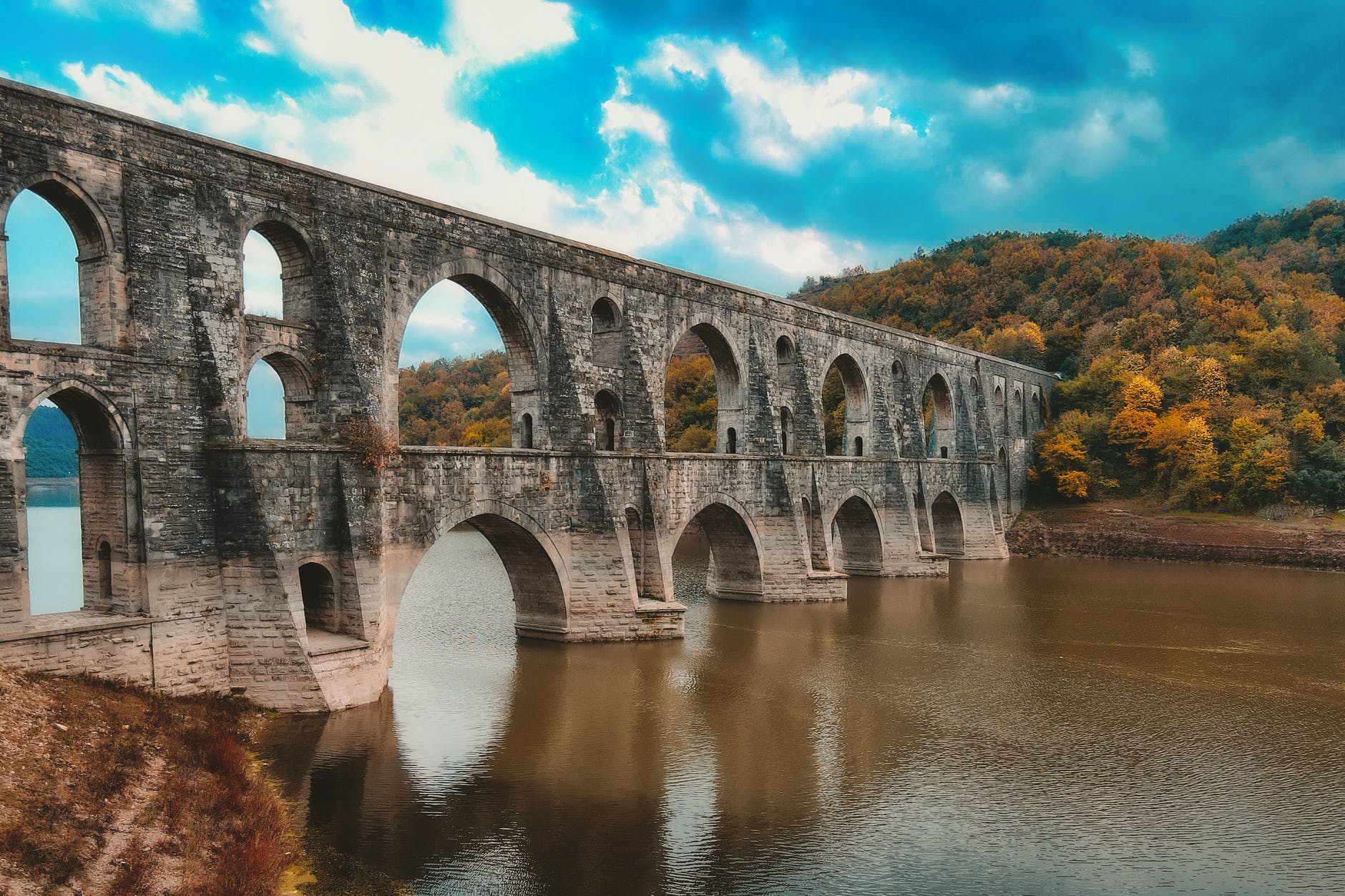
A CONDUIT is a tube that runs from one place to another, to channel water or other fluid, or electrical wires, or wires that connect ‘things.’ Think, a farm to a water supply, or power lines buried underground, going to homes. Conduits provide not only a safe enclosure to run these essential elements but they also contain them. Without this containment, they would disperse. Their energy would be diffuse and fall toward entropy, only to have to regenerate somewhere else anew. Likewise, the conduit protects these elements from being corrupted by outside forces.
Let’s take this a step further: a conduit must be kept in excellent condition in order for it to perform its function. It has to be free from the things that corrode it or threaten to break it. It must be kept in the proper shape and alignment, in order to conduct the elements to their proper locations. It also must be made out of the proper materials to support and safely deliver their goods. You do not run water through cardboard or lead conduits, as one breaks down and loses its form and the other poisons the water.
RIGHT FORM, RIGHT MIND, & RIGHT SPIRIT
IN a recent group presentation, a fellow Brother stated that the human body needed to be able to be in top physical condition in order for it to be a conduit for the most effective spiritual work. This was part of a larger discussion regarding martial arts and the physical form, linking the whole to the work of the Freemason. Many martial arts are built on the totality of the human form – mental, spiritual, physical – moving in alignment with the will of the Divine. The masters of martial arts are the synthesis of Right Form, Right Mind, and Right Spirit. So, too, is the Freemason admonished to take care of his body, his senses, his mind, and his spirit, caring for each to the best of his abilities and offering the proper amount of focus to each. This means getting enough sleep and exercise, meditation and study, action and work.

During the course of the conversation noted above, it was indicated the flow of energy was coming from the Divine to the Human, the connection running both ways but the energy itself running only one, like water running in a pipe to a cistern. This would indicate to me that the energy is converted by the human into useful creations; ideas or dreams, revelations, and intuition are flowing all the time into our lives, 24×7. We would then have the ability to turn on the “faucet” so to speak, and have a ready supply of Divinity. Every single moment. The human form, being itself of a honed, pristine nature, is then able to use this energy consciously toward a higher purpose, toward the evolution of humanity.
If only this were so.
FREEMASONS & THE HUMAN STRUGGLE
FOR the Freemason, and any ritualist, it should be the first thing we wrangle. Oh, but we humans struggle. We struggle to control our desires and wants, from temperature to the hardness of chairs or the stiffness of our clothing. We are hungry; we are cold; we are sleepy. We lack the exercise our bodies need, the quality of food our cells require, and the mental stimulation of an excellent book or enlivening debate. We do not look for the work that challenges us to change and grow but to the work that is just a little easier on our bodies. Even those of us who are the most disciplined struggle to maintain this homeostasis in a world filled with temptations. We could ask the question, “If I were God, would I channel through me?”
But, here’s the rub, I think: God, in whatever form you imagine it to be, does channel though us. Like a TV with an antenna that isn’t quite in tune with a signal, the Divine does make its way to us, through us maybe a little scrambled and yet still escapes in what we do. The signal is always there. The light that pours through the flawed prism is pure light – it is the imperfections in the glass that stunt the beauty. The Sun is always shining, regardless of our ability to see it. The God-Human-Connection not an all or nothing situation. It’s an always-on condition. The question is, with our earthly shackles, can we hear It?
And, can It hear us?
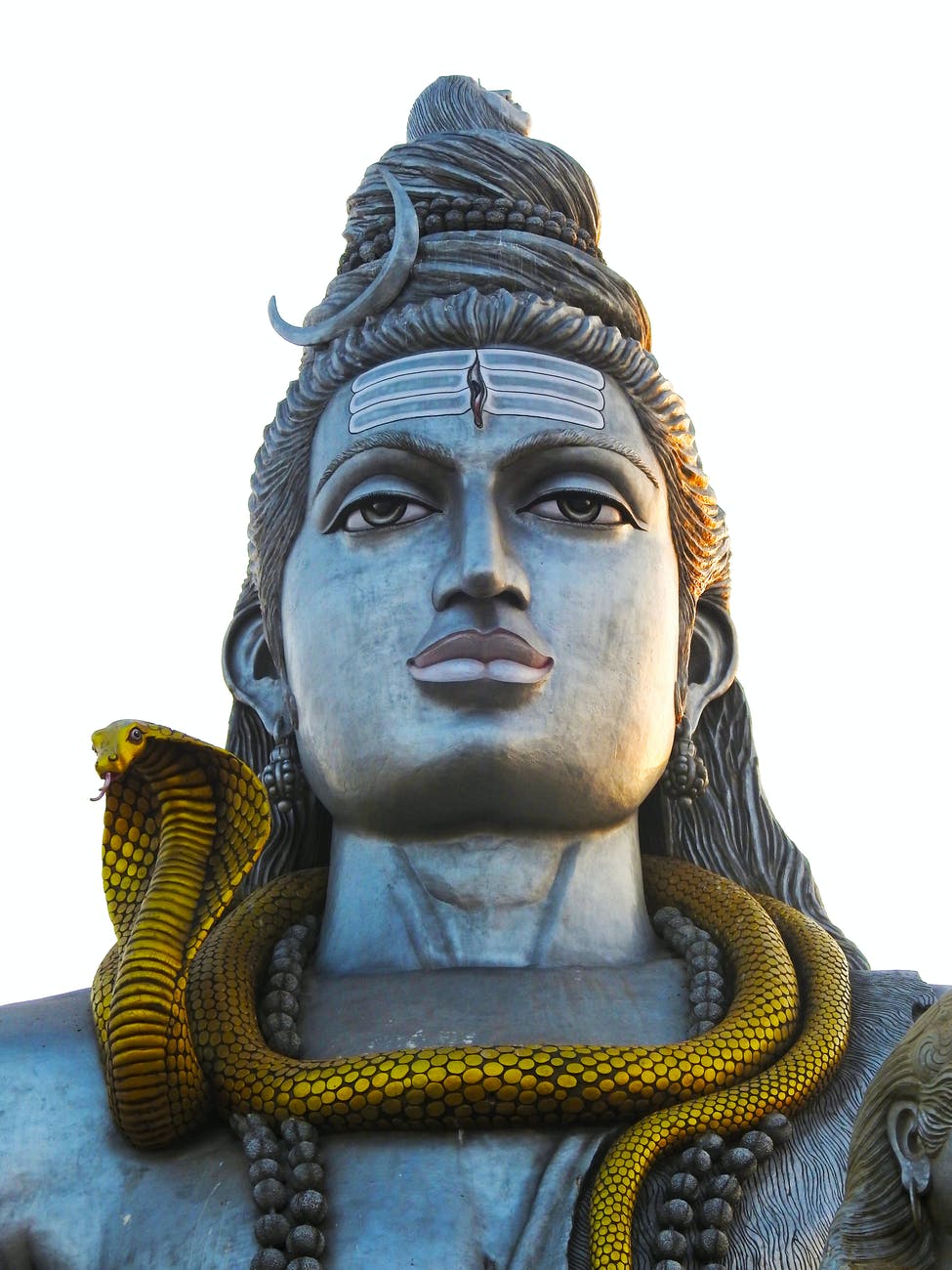
It’s said that ritual is the interface between human and God. That interface, I believe, runs both ways. Like a conduit of fiber-optic cable connects us to the cyber world, we are an energy source for the Divine. Upload and Download. Many believe that
“…the dust returns to the ground it came from, and the spirit returns to God who gave it.”
[Ecclesiastes 12:7]
That being the case, it seems to me that we come back to the Divine, luggage in hand, ready to unpack our lifetime of learning. Again, much like the internet, we take bits of energy from the greater bucket of knowledge and in turn, upload some of the same. We contribute, mindfully or not, to the consciousness of the Divine. This Universal Consciousness doesn’t just pick up the perfect signals, the light from the perfect prism. The Divine picks up the flaws and corruption, the occlusions and excrescences that cause variations in the communication.
UNIVERSAL CONSCIOUSNESS & THE PERFECTING OF HUMANITY
I AM even going to stretch this further and say that the Divine, in concept, might be Universal Consciousness, which is the unfoldment of the universe. In metaphysical circles, this universal mind is “a metaphysical concept suggesting an underlying essence of all being and becoming in the universe.” This concept was first brought out by Anaxagoras, an early 5c B.C.E. philosopher who believe that the growth of all living things only comes about by the mind within the organism, being part of a larger conceptual “Mind.” Indeed, modern philosopher Philip Goff has coined the term “panpsychism” as an all-pervasive consciousness. In his terms, consciousness is “experience” and all forms of matter have experiences, regardless of the complex or simple structure of the being. The rock, the sun, the moon, the human, and the mouse all have experiences unique to their being, all contributing to what we might call Universal Mind, or perhaps God.
Therefore, we may be conduits of the Divine, with the goal of It, Divinity or the Universe, becoming manifest in this reality. However, it is not unreasonable to assume that we too are conduits of experience filling the pool of the Universal Mind. And what if, simply, we contribute to the betterment of humanity by the pure act of filling the pool with the best we have to offer? In other words, the quality of our conduit equates to the quality of our experiences, and those experiences are ultimately adding to the “Perfecting of Humanity.” In actuality, they add to the perfection of all of the universe if matter is all-connected. This may be the legacy we leave to those who follow us, and perhaps to ourselves, if we return again. If we truly want to work toward the perfection of Humanity, then it begins, as always, with our own self – body, mind and spirit. It means becoming the best versions of ourselves, whoever we are and whatever we may be, living our dharma.
The Sun, Moon, and Stars

WE have more right to be astonished that the astronomical references are so few, rather than to be surprised that there are so many! We are taught that geometry and Masonry were originally synonymous terms and geometry, fifth of the Seven Liberal Arts and Sciences, is given more prominence in our Fellowcraft degree than the seventh, Astronomy. Yet, the beginnings of astronomy far antedate the earliest geometrician. Indeed, geometry came into existence to answer the ceaseless questionings of man as to the “why” of celestial phenomena.
In these modern days, it is difficult to visualize the vital importance of the heavens generally, to early man. We can hardly conceive of their terror of the eclipse and the comet or sense their veneration for the Sun and his bride, the Moon. We are too well educated. We know too much about “the proportions which connect this vast machine.”
ANCIENT IMPORT OF THE HEAVENS

THE astronomer has pushed back the frontiers of his science beyond the inquiries of most of us; the questions which occur as a result of unaided visual observations have all been answered. We have substituted facts for fancies regarding the sun, the moon, the solar system, the comet, and the eclipse.
Albert Pike, the great Masonic student “who found Masonry in a hovel and left her in a palace” says:
WE cannot, even in the remotest degree, feel, though we may partially and imperfectly imagine, how those great, primitive, simple-hearted children of Nature, felt in regard to the Starry Hosts, thereupon the slopes of the Himalayas, on the Chaldean plains, in the Persian and Median deserts, and upon the banks of the great, strange River, the Nile. To them the universe was alive – instinct with forces and powers, mysterious and beyond their comprehension. To them it was no machine, no great system of clockwork; but a great live creature, in sympathy with or inimical to man. To them, all was a mystery and a miracle, and the stars flashing overhead spoke to their hearts almost in an audible language. Jupiter, with its kingly splendors, was the Emperor of the starry legions. Venus looked lovingly on the earth and blessed it; Mars with his crimson fires threatened war and misfortune; and Saturn, cold and grave, chilled and repelled them. The ever-changing moon, faithful companion of the sun, was a constant miracle and wonder; the Sun himself the visible emblem of the creative and generative power. To them, the earth was a great plain, over which the sun, the moon, and the planets revolved, its servants, framed to give it light.
Of the stars, some were beneficent existences that brought with them Spring-time and fruits and flowers – some, faithful, sentinels, advising them of coming inundations, of the season of storm and of deadly winds some heralds of evil, which, steadily foretelling. they seemed to cause. To them, the eclipses were portents of evil, and their causes hidden in mystery, and supernatural. The regular returns of the stars, the comings of Arcturus, Orion, Sirius, the Pleides, and Aldebaran; and the journeyings of the Sun, were voluntary and not mechanical to them. What wonder that astronomy became to them the most important of sciences; that those who learned it became rulers; and that vast edifices, the pyramids, the tower or Temple of Bel, and other like erections elsewhere in the East, were builded for astronomical purposes? – and what wonder that, in their great childlike simplicity, they worshipped the Light, the Sun, the Planets, and the stars; and personified them, and eagerly believed in the histories invented for them; in that age when the capacity for belief was infinite; as indeed, if we but reflect, it still is and ever will be?
– Bro. Albert Pike
Anglo-Saxons usually consider history as their history; science as their science; religion as their religion. This somewhat naive viewpoint is hardly substantiated by a less egoistic survey of knowledge. Columbus’s sailors believed they would “fall off the edge” of a flat world, yet Pythagoras knew the earth to be a ball. The ecliptic was known before Solomon’s Temple was built. The Chinese predicted eclipses long, long before the Europeans of the middle age quit regarding them as portents of doom!
FREEMASONRY’S ANCIENT ASTRONOMICAL LORE
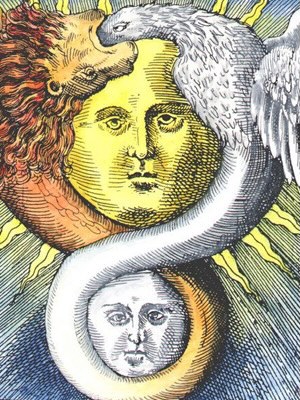
THE Astronomical lore of Freemasonry is very old. The foundations of our degrees are far more ancient than we can prove by documentary evidence. It is surely not stretching credulity to believe that the study which antedates “Geometry, the first and noblest of sciences,” must have been impressed on our Order, its ceremonies and its symbols, long before Preston and Webb worked their ingenious revolutions in our rituals and gave us the system of degrees we use – in one form or another – today.
The astronomical references in our degrees begin with the points of the compass; East, West, and South; and the place of darkness, the North. We are taught the reason why the North is a place of darkness by the position of Solomon’s Temple with reference to the ecliptic, a most important astronomical conception. The Sun is the Past Master’s own symbol; our Masters rule their lodges – or are supposed to! – with the same regularity with the Sun rules the day and the Moon governs the night. Our explanation of our Lesser Lights is obviously an adaption of a concept which dates back to the earliest of religions; specifically, to the Egyptian Isis, Osiris, and Horus; represented by the Sun, Moon, and Venus.
Circumambulation about the Altar is in imitation of the course of the Sun. We traverse our lodges from East to West by way of the South, as did the Sun Worshipers who thus imitated the daily passage of their deity through the heavens. Measures of time are wholly a matter of astronomy. Days and nights were before man, and consequently before astronomy, but hours and minutes, high twelve and low twelve, are inventions of the mind, depending upon the astronomical observation of the Sun at Meridian to determine noon, and consequently all other periods of time. Indeed, we are taught this in the Middle Chamber work, in which we give to Geometry the premier place as a means by which the astronomer may “fix the duration of time and seasons, years and cycles.”
PILLARS AND GLOBES OF THE LODGE
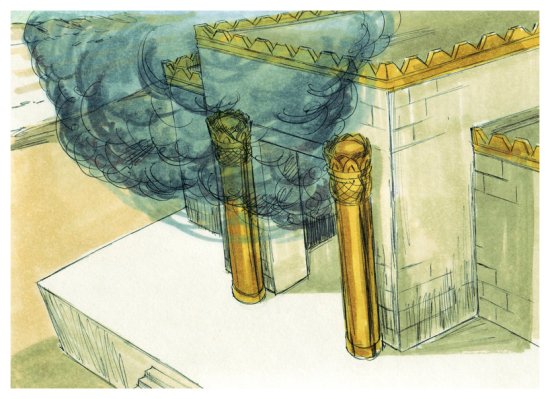
ATOP the Pillars, representing those in the porch of King Solomon’s Temple, appear the terrestrial and celestial globes. In the Fellowcraft degree, we are told in beautiful and poetic language that “numberless worlds are around us, all framed by the same Divine Artist, which roll through the vast expanse and are all conducted by the same unerring law of nature.”
Our Ancient Brethren, observing that the sun rose and set, easily determining East and West in a general way. As the rises and sets through a variation of 47 degrees north and south during a six-month period the determination were not exact. The earliest Chaldean stargazers, progenitors of the astronomers of later ages, saw that the apparently revolving heavens pivoted on a point nearly coincident with a certain star. We know that the true north diverges about from the North Star one and one-half degrees, but their observations were sufficiently accurate to determine a North – and consequently East, West, and South. The reference to the ecliptic in the Sublime Degree has puzzled many a brother who has not studied the elements of astronomy. The earliest astronomers defined the ecliptic as the hypothetical “circular” plane of the earth’s path about the sun, with the sun in the “center.”
As a matter of fact, the sun is not in the center and the earth’s path about the sun is not circular. The earth travels once about the sun in three hundred and sixty-five days, and a fraction, on an “elliptic” path; the sun is at one of the foci of that ellipse. The axis of the earth, about which it turns once in twenty-four hours, thus making a night and a day, is inclined to this hypothetical plane by 23 and one-half degrees. At one point in its yearly path, the north pole of the earth is inclined towards the sun by this amount. Halfway further around in its path the north pole is inclined away from the sun by this angle. The longest day in the northern hemisphere – June 21st – occurs when the north pole is most inclined toward the sun.
Ant building situated between latitudes 23 and one-half north and 23 and one-half south of the equator, will receive the rays of the sun at meridian (high twelve, or noon) from the north at some time during the year. King Solomon’s Temple at Jerusalem, being in latitude 31 degrees 47 seconds north, lay beyond this limit. At no time in the year, therefore, did the sun or moon at meridian “darts its rays into the northerly portion thereof.”
As astronomy in Europe is comparatively modern, some have argued that this reason for considering the North, Masonically, as a place of darkness, must also be comparatively modern. This is wholly mistaken – Pythagoras (to go further back) recognized the obliquity of the world’s axis to the ecliptic, as well as that the earth was a sphere suspended in space. While Pythagoras (510 B.C.) is much younger than Solomon’s Temple, he is almost two thousand years older than the beginnings of astronomy in Europe.
UNIVERSALITY AND SYMBOLISM
THE “world celestial and terrestrial” on the brazen pillars were added by modern ritual makers. Solomon knew them not, but contemporaries of Solomon believed the heavens to be a sphere revolving around the earth. To them the earth stood still; a hollow sphere with its inner surface dotted with stars. The slowly turning “celestial sphere” is as old as mankind’s observations of the “starry decked heavens.”

It is to be noted that terrestrial and celestial spheres are both used as emblems of universality. They are not mere duplications for emphasis; they teach their own individual part of “universality.” What is “universal” on the earth – as for instance, the necessity of mankind to breathe, drink water, and eat in order to live – is not necessarily “universal” in all the universe. We have no knowledge that any other planet in our solar system is inhabited – what evidence there is, is rather to the contrary.
We have no knowledge that any other sun has any inhabited planets in its system. Neither have we any knowledge that they have not. If life does exist in some other, to us unknown world, it may be entirely different from life on this planet. Hence, a symbol of universality, which applied only to earth would be a self-contradiction.
Real Universality means what it says. It appertains to the whole universe. While a Mason’s Charity, considered as giving relief to the poor and distressed, must obviously be confined to this particular planet, his charity of thought may, so we are taught, extend “through the boundless realms of eternity.” Hence “the world terrestrial” and “the world celestial” on our representations of the pillars, in denoting universality means that the principles of our Order are not founded upon mere earthly conditions and transient truths, but rest upon Divine and limitless foundations, coexistent with the whole cosmos and its creator.
We are taught of the “All-Seeing Eye whom the Sun, Moon, and Stars obey and under whose watchful care even comets perform their stupendous revolutions.” In this astronomical reference is, oddly enough, a potent argument, both for the extreme care in the transmission of ritual unchanged from mouth to ear, and the urgent necessity of curbing well-intentioned brethren who wish to “improve” the ritual.
The word “revolution” in this paragraph (it is so printed in the earliest Webb monitors) fixes it as a comparatively modern conception. Tycho Brahe, progenitor of the modern maker and user of fine instruments among astronomers, whose discoveries have left an indelible impression on astronomy, made no attempt to consider comets as orbital bodies. Galileo thought them “emanations of the atmosphere.” Not until the seventeenth century was well underway did a few daring spirits suggest that these celestial portents of evil, these terribly heavenly demons which had inspired terror in the hearts of men for uncounted generations, were actually parts of the solar system and that many if not most of them were periodic, actually returning again and again; in other words, that they revolved about the sun.
Obviously, then, this passage of our ritual cannot have come down to us by a “word of mouth” transmission from an epoch earlier than that in which men first commenced to believe that a comet was not an augury of evil but a part of the solar system. The so-called “lunar lodges” have far more a practical than an astronomical basis.

In the early days of Masonry, both in England and in this country, many if not most lodges, met on dates fixed in advance, but according to the time when the moon was full; not because the moon “Governed” the night, but because it illuminated the traveler’s path! In days when roads were but muddy paths between town and hamlet, when any journey was hazardous and on black nights dangerous in the extreme, the natural illumination of the moon, making the road easy to find and the depredations of highwaymen the more difficult, was a matter of some moment! One final curious derivation of a Masonic symbol from the heavens and we are through. The symbol universally associated with the Stewards of a Masonic lodge is the cornucopia.
According to the mythology of the Greeks, which goes back to the very dawn of civilization, the God Zeus was nourished in infancy from the milk of a goat, Amalthea. In gratitude, the God placed Amalthea forever in the heavens as a constellation, but first gave one of Amalthea’s horns to his nurses with the assurance that it would forever pour for them whatever they desired! The “horn of plenty,” or the cornucopia, is thus a symbol of abundance. The goat from which it came may be found by the curious among the constellations under the name of Capricorn. The “Tropic of Capricorn” of our school days is the southern limit of the swing of the sun on the path which marks the ecliptic, on which it inclines first its north and then its south pole towards our luminary. Hence there is a connection, not the less direct for being tenuous, between out Stewards, their symbol, the lights in the lodge, the “place of darkness” and Solomon’s Temple.
Of such curious links and interesting bypaths is the study of astronomy and its connection with Freemasonry, the more beautiful when we see eye to eye with the Psalmist in the Great Light:
“The Heavens Declare the Glory of God and the Firmament Sheweth His Handiwork.”
* Originally Published: SHORT TALK BULLETIN – Vol.VIII, March 1930, No.3.
Masonry and Business

ALL great moral forces in men’s lives permeate, and to some extent affect, their business careers. A Sincere Christian will endeavor to live by the golden rule. A Consistent church member will not be honest because it is the best policy, but because he believes in honor. A real philosopher will apply the principles of his study to his daily relations with trade and commerce. A real Mason will act Masonically in business as well as in the lodge.
It is idle to say that Masonry is only for Masons. It is not. Masonry, if it is to fill its promise, must be, in its esoteric aspects, as much for the profane as for the Mason. Still, more must Masonic principles be applied when dealing with Masons. But there are many abuses committed in the name of Masonic business, against which the newly made Mason may well guard himself. Chief of these is the demand, in the name of Masonry, for business favors that would never be asked or granted without a Masonic background.
MASONIC CONDUCT IN BUSINESS MATTERS
THERE is no real excuse for the stranger who comes to you pleading for your indorsement on his note because of your common Masonry, and you are not acting un-Masonically if you refuse it. It is far less Masonic to get than to give, to ask than to offer, to demand than to propose. The Mason who uses his Masonry as a means of getting, when without the Masonry he would have no excuse, is not acting in a truly Masonic manner.
Therefore, it is not at all necessary that he who is asked should respond as he would to a legitimate Masonic request. To a man who says to you:
“You should do this because we have a common brotherhood.”
You can well reply:
“You should not ask it because we have a common brotherhood.”
Your real brother will not ask you to do that in the name of brotherhood which he would not ask you to do in the name of friendship.
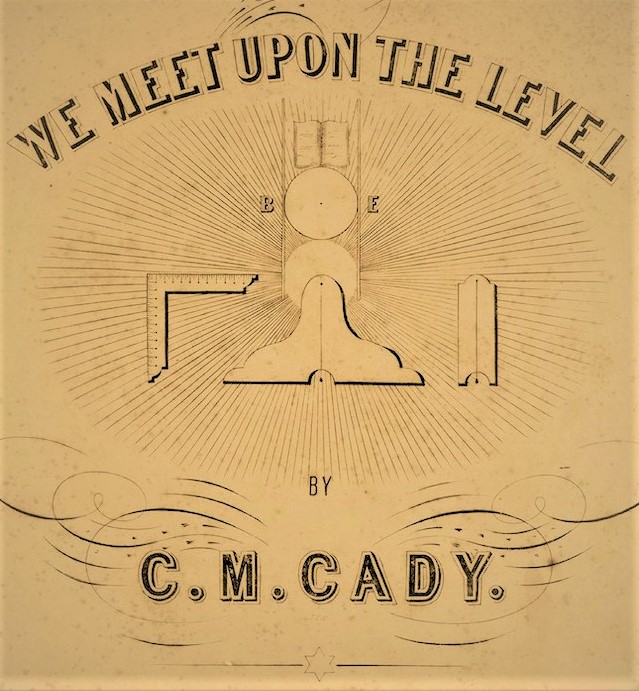
Yes, there are exceptions many of them. The tales which might be written of the instances in which the Masonic brotherhood feeling has saved men from disaster are legion. A man in deep trouble may turn to his brethren for help, when the man who only wants an accommodation in business is outlawed before he starts. There was a Mason whom we will call Tim Jones because that was not his name. Tim was about to fail in business, through no real fault of his own. Tim laid the matter before the Master of his lodge. The Master called a couple of bankers into consultation, and the loan needed was made, not as bankers to client, but as Masons to a Mason. Five Masons signed the notes, and every note was paid.
Here was a case where a man had exhausted his commercial credit and had to call on his Masonic credit it was a wise thing to do, and the Masonic aid was beautifully given. But when Tim’s neighbor, Smith, was ready to fail and asked the same remedy for himself, he met with no success. He professed himself as unable to understand why, if Masonry could help Jones, it could help Smith. But the reason was patent to all who knew of the cases Jones was in danger through no fault of his own and Jones had a reputation, both in business and Masonry, which made him a good risk. Smith was in trouble because he lacked judgment and ability, and his reputation was good in neither business nor Masonry.
We quote these little instances because it is difficult to phrase a rule as to when Masonry may be used in business and when not. In general, it should never be used when any other means is available. Masonry does not contemplate that its followers lean on each other but expects them to stand upon their own feet. Masonry does not contemplate that the strong shall carry the weak, the able supply ability for the feeble. Masonry is not a panacea for social or business ills. A blood brother will help one while he will help himself, will love one while he is lovable, and defend one while he is weak, as long as he knows his brother will give him of his own strength when he recovers it. But blood brothers will not, because of mutual parentage, support one is he is a wastrel lend to one if he is dishonest or prop one up if he stumbles, if one is not man enough to learn to walk alone.
The Masonic brotherhood is modeled upon the tender relation of blood-brother. Its most optimistic altruists do not believe it should go further.
If a rule be necessary, let it be this: Give, when you can, help sought ask help only when all other means fail. Offer the helping hand as often as you have the strength to spare use Masonry for a crutch only when its absence will mean disaster.
Lest some say that this seems to draw back from giving aid, rather than pressing forward to give it, let us reply that we truly believe it is better to give Masonic help where it should not be given, than to deny it where it should be given. But, we have great regard for Masonry and are jealous of its reputation we hold it too high and too holy to look equanimity upon its exploitation. We believe there is no more heart-stirring appeal than that made in the name of Masonry when it is proper to be made as a consequence, we must believe there is no more despicable act than abusing Masonry for personal ends when the appeal is made and granted improperly.
Help your brother all you may but never let your brother abuse your help, your heart, or your Masonry. For Masonry is far, far greater than the individual, and its purity and its preservation far more important than, that we give ourselves the pleasure of saying “Yes,” when the only Masonic answer we can give is “No!”
The young Mason is faced with a question, almost as soon as he becomes a Master Mason: “Must I trade only with Masons is it un-Masonic to trade with the profane?” He will submit this to older Masons and receive almost as many different answers as the questions he asks.
We give here an answer which seems to us to be correct. But it should be noted that others have rights to their opinions. In all questions which have two sides, there is room for argument and differing viewpoints. Since this question is not of law, but of ethics, there is probably more than one correct answer.
IS MASONRY A MUTUAL BENEFIT SOCIETY?

MASONRY is not a mutual benefit society, in the sense that the Rochdale Corporative Society is one. That and similar organizations are formed for the purpose of promoting trade among members they offer financial inducements to trade with their members.
There is nothing like that in Masonry!
There is no Masonic obligation taken at the Altar which even hints that a Mason must deal only with Masons. There is no Grand Lodge law, nor any lodge by-law, which compels such trading. It is, therefore, not a violation of any Masonic law or obligation not to trade with a Brother Mason. Anyone who believes the contrary is misinformed. Nor is there any unwritten law on the subject.
But there is an obligation of brotherhood. How far that is here to be applied, every individual brother must decide for himself. If one has a blood brother for whom one possesses a sincere affection, and that brother sells, let us say, coal. That is, one would do so as long as the brother sold good coal on its merit, and for as fair a price and with as good of service as one could get from some non-relative. But if one’s brother took advantage of the relationship to charge a dollar more a ton, or to keep one waiting and cold while he filled non-relatives’ orders, one would speedily change one’s coal merchant!
It would seem that the same principle should apply in regard to one’s Masonic brethren. As between two merchants, one a profane, the other a Mason, both giving the same goods at the same price and rendering the same service, the Mason should receive the Mason’s trade. But as between a Mason selling at a high price and a profane selling at a lower one, as between a Mason giving poor service and a profane giving good service, the choice should be the other way.
This is not only good business, and good common sense, but good Masonry. For Masonry should encourage progress and weed out the drones it should make its membership love Masonry for what it is, not for what it brings. It should fight hard against any attempt to commercialize the Order and resent bitterly the use of its teachings for the making of money.
The Mason who says:
“Trade with me because I am a Mason is seldom a good merchant.”
Certainly, he has no pride in calling or willingness to stand on his own feet.
The Mason who says:
“Trade with me because I give good goods at an honest price.”
…is upholding the dignity of his calling and scorning to take advantage of his Masonic brotherhood for the sake of making more money.
The man who must depend on Masonry to enable him to keep his store open is not a good Mason.
It is a Masonic obligation to do one’s best by one’s family, to work hard and honestly, and to get, as well as to give, the value received for one’s labor. Paying more to a Mason than is necessary to pay to a profane is injurious to one’s family since it deprives them of something in order to benefit a Mason who has no right to it.
MORAL RECTITUDE
AS a general rule Masons are not the type and kind of men who wish to take advantage of their Masonic brotherhood. The greater part of them scorn to use Masonry to further business ends. The vast majority of Masons revere their Masonry they hold it high and sacred, and far apart from the money changers and the marts of trade.
But there are exceptions who ask and expect to receive special consideration because they are Masons. This is very sad and very bad!

No Mason has a right to ask or expect a discount from another Mason because of mutual brotherhood. To use Masonry – the Fatherhood of God, the Brotherhood of Man, the Religion of the Heart, the Philosophy of Life – to get a ten percent discount on a purchase of garden hose, is to abuse Masonry.
Give your trade to your Masonic friends because you like them because you know them to be good men and true, because they sell goods at honest prices hunt out the lodge member among the Masons to deal with because you like him and want to help him. But deal with him because you want to help him, not because you expect him to help you. If you sell instead of buy, give the Mason the best you can in service, because you like him and wish to help him, not because you feel you have any moral or Masonic right to trade to which your name, your business methods, and your standard of ethics would not entitle you.
Hold Masonry high keep its dignity, its reputation, unsullied. Do not mix it up with money and with barter. For it was written:
“Render therefore unto Caesar the things which be Caesar’s and unto God the things which be God’s.”
Money and trade belong to Caesar. Masonry in our hearts belongs to God!
* Originally published – “Masonry in Business” – SHORT TALK BULLETIN – Vol. II, October 1924, No.10.
Effects of Anti-Masonry on the Fraternity
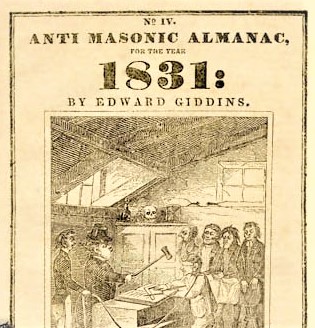
By Bro... Erik McKinley Eriksson
IT is inevitable that the Masonic Institution should have been seriously affected by the great wave of anti-Masonry which followed Morgan’s disappearance. However, during the years which have intervened little has been done to determine just what happened to the Fraternity, though there has been much generalizing. Anti-Masons, even at the present time, glibly dispense the information that organized Freemasonry was exterminated and point to the disappearance of Masonry in Illinois as proof. They might also point to the fact that the Grand Lodge of Michigan became defunct for a time and that the Grand Lodge of Vermont was practically suspended for ten years. But setting forth such facts does not prove their contention for there were twenty-three other Grand Lodges which did not become defunct and which did not suspend.
Masonic historians have also failed, thus far, to make a thorough study of the effects of anti-Masonry. They, too, have been content with generalizations such as “[anti-Masonry] was disastrous to the growth and progress of the Institution.” What apparently happened in a few Grand Jurisdictions has been accepted as sufficient evidence to prove that anti-Masonry almost exterminated the Masonic Fraternity in the United States. They have pointed to the decrease in the number of lodges represented at the annual communications as illustrative of the devastation wrought by the anti-Masonic movement. But, in so doing, they have failed to consider that there might have been other factors than anti-Masonry operating to bring about a decline in Masonic strength during the period following the Morgan affair [See Image – Sketch of Morgan Affair Controversy]
When one studies the situation in each Grand Jurisdiction, separately, he becomes convinced that anti-Masonry, though a factor of great importance, was not by any means solely to blame for the low state to which the Masonic Institution fell during the decade of the thirties. In some jurisdictions, Masonry was in a low state before 1826 due to internal troubles of various kinds. In the case of most of the Grand Lodges, the percentage of lodges represented at the various communications before 1826 was not high. The development of anti-Masonry, of course, brought about a further decline in attendance.

Furthermore, in explaining the situation, especially in the thirties, there was a factor that seems entirely to have escaped the historians, and that was the prevalence of cholera in the country. During the period beginning about 1830, the whole western world was swept by an epidemic of cholera that brought death to many and created great fear among the people. It is impossible to determine just how much effect this epidemic had in causing lodges to die because the members feared to congregate. Nor can its influence in causing non-representation at the communications of the Grand Lodges be determined. Conversely, it is impossible to think that cholera did not have a harmful effect on the Institution, aiding in producing conditions which have heretofore been attributed to anti-Masonry alone.
Still another factor that must be given consideration was the financial depression and panic which occurred during the period. Whether due to the “removal of the deposits” from the Second Bank of the United States or to manipulations of the Bank, the fact remains that, beginning late in 1833 and extending into the spring of 1834, there was a widespread depression. Then followed a few years of “good times” characterized by an orgy of speculation. In 1837 a panic occurred which gripped the whole country. In some localities, its effects were felt well into the decade of the forties. The resultant difficulty of securing money must be recognized as a factor in aiding Masonry’s decline and delaying its recovery. Members could not pay their dues to local lodges, and these lodges could not discharge their obligations to the Grand Lodges.
IMPACT OF ANTI-MASONRY IN NEW YORK STATE
AN examination of the Grand Lodge Proceedings as early as 1817 reveals an unhealthy condition existing at that time in the Masonic Institution in the state. There were 293 lodges on the list but of these, only 30 were represented at the annual communication on June 4, 1817. There were 10 lodges listed as having “Ceased to Work” while 16 were listed under “Warrant Surrendered.” There were listed 47 suspensions for non-payment of dues and 5 expulsions of un-Masonic or immoral conduct. At least 17 warrants for new lodges were issued during the year, indicating that even that early an over-rapid expansion was taking place.
In 1818 only, 28 lodges were represented, and it was apparent that some action was necessary. Therefore in 1819, the “dead timber” was eliminated and the lodges were renumbered. So rapidly had new lodge been created that there still remained 323 on the list of which 82 were represented. By 1821 the lodges were again in a low state. While 79 were represented, 179 others were reported as in arrears for two years or more! In 1822 there were represented 110 lodges, and in 1823, there were 112 represented. In the latter year, internal dissensions came to a head and the Grand Lodge was split. The result was the formation of a City Grand Lodge and a Country Grand Lodge, whose rivalry in the following years was a factor of prime importance in preparing the ground for anti-Masonry.
Each Grand Lodge tries to outdo the other in chartering new lodges with the result that in some localities too many lodges were created to be properly supported. Likewise, as a result, unworthy candidates were admitted who were among the first to secede from the Fraternity after the anti-Masonic excitement began. The Country Grand Lodge, the stronger of the two, at its annual communication in 1824, granted warrants for 30 new lodges. In the same year, at its annual communication, the City Grand Lodge created 11 new lodges. At the communications the following year the Country Grand Lodge granted 46 new warrants while the City Grand Lodge granted 12.
Meanwhile, efforts were being made to reunite the Grand Lodges with the result that on June 7, 1827, they were merged. The interest aroused in the proposed merger resulted in an extraordinarily large representation, for at the communication of the merged Grand Lodges there were present the representatives of 228 lodges. It is significant that, at this merged communication, 14 petitions for warrants for new lodges were granted.
POLITICAL ENEMIES OF CRAFT

FROM the evidence presented, it should be clear that anti-Masonry alone did not bring about the decline in Masonic strength in New York. There can be no question but that anti-Masonry, once organized so as to combine religious fanatics and political opportunists, such as Thurlow Weed, William H. Seward, and Millard Fillmore [See Image – Portrait of President Fillmore] exercised a devastating effect on the Fraternity, but it is just as certain that the Masons of New York were, to some extent, to blame for their own troubles.
By early 1828, it was apparent that the anti-Masonic movement was having an effect on the Masonic Institution. In fact, from the time of the beginning of the Morgan investigations and trials, there had been public renunciations of Masonry by members in western New York. A group of these gave encouragement to political anti-Masonry by holding conventions at Le Roy on Feb. 19 and July 4, 1828.
WITHIN THE FRATERNITY
THE attendance at the Annual Communication of 1828 was only slightly affected, as there were 130 lodges represented, as compared with 142 represented in the two Grand Lodges in 1825. However, during the year 1828, only 3 warrants for new lodges were issued and these were the last for some years. There were 103 suspensions for non-payment of dues and 8 expulsions for un-Masonic conduct as compared with 38 suspensions and 9 expulsions in the combined lodges in 1825.
After 1828, the effects of anti-Masonry, on the individual Masons, on the local lodges, and on the Grand Lodge began to be more apparent. Early in 1829 occurred the first organized movement looking to the surrender of the local lodge charters. On Feb. 20, a circular was issued by 76 Masons of Ontario County recommending to the lodges and chapters of western New York “the expediency of returning their charters.” On March 13, six lodges of Monroe County, including that at Rochester, surrendered their charters to the Grand Lodge in “acquiescence to public opinion.” However, contrary to a rather general opinion, this example was not widely followed. On May 5, 1829, delegates from 19 lodges in Cayuga and Onondaga Counties held a meeting. Instead of adopting the course taken by the Monroe County Masons, they drew up an address disclaiming all knowledge of the Morgan affair prior to Morgan’s disappearance and denying all the charges made against the Fraternity. They declared:
We venerate Masonry for its antiquity, we admire it for its moral principles, and we love it for its charity and benevolence.
The following resolution was also adopted:
Resolved, That in the opinion of this convention it would be inexpedient and improper to take measures for the surrender of Masonic charters, and that our brethren be respectfully advised to adopt no measures in relation to that subject.
Similar action was taken by a convention of 114 delegates representing 14 lodges and 5 Royal Arch Chapters of Chenango, Cortland, and Madison Counties, held Sept. 2, 1829. Complete figures show that, during the whole period of the anti-Masonic excitement, only 76 lodges, out of the 484 existent in 1825, surrendered their charters.
Forty-three fewer lodges were represented at the 1829 Annual Communication than were represented the previous year. The fact that the dues of 23 lodges were remitted, shows that many Masons were not paying their dues, though only 22 individuals were reported during the year as suspended for that reason. It should be noted in passing that in 1829 the anti-Masons made unsuccessful attempts to secure the passage of laws by the New York legislature forbidding “extra-judicial oaths” and barring Masons from serving on juries when one party in a case was a Mason and the other was not.
THE GRAND LODGE VISITORS
At the 1831 session, the Grand Lodge hesitated to take drastic action against delinquent lodges. It contented itself with passing a resolution declaring that lodges which had not met for a year or more should forfeit their warrants if they did not meet before June 1832. A resolution was also passed requiring lodges in arrears for ten years or more to make returns by the time of the next annual communication or forfeit their warrants.
In June 1832, communication of the Grand Lodge, the threatened drastic action was taken. The warrants of 5 lodges were forfeited because a “citation” of the last annual communication had not been answered; 84 lodges which had made no returns since 1822 also had their warrants forfeited. The Grand Secretary was likewise instructed to demand the warrants of 23 lodges which had not met for over a year. This form of procedure was also followed in later communications so that, by 1836, no less than 338 lodges had had their warrants forfeited by the Grand Lodge; 45 of these later forfeitures occurred in 1833, 89 in 1834, and 92 in 1835. While this drastic action cleared out the dead lodges, it was not without its complications, for, out of all the warrants ostensibly surrendered or forfeited, only 54 had been collected by the Grand Secretary in 1836. The scattering about of the old warrants presented an excellent opportunity for the development of clandestine Masonry and for a time constituted a serious problem.
THE TURNING OF THE TIDE
SO far as anti-Masonry was concerned, the year 1836 marked the turning point for the Masonic Fraternity in New York. At the communication in June of that year, the Grand Secretary, James Herring, made a significant report in which he reviewed the events of the past ten years. He called attention to the fact that anti-Masonry in the state was rapidly dying out and that “the revival of Masonic labors and usefulness begins to be manifest.” As concrete evidence of this there was presented the petition of Ark Lodge, No. 160, to be restored, which petition was granted. Later in the year, two other lodges were revived.
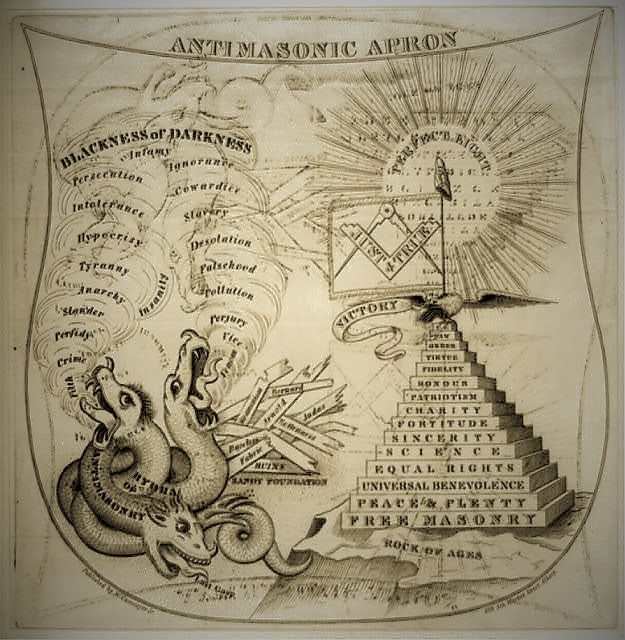
In 1837, Masonry in New York was well on the road to recovery when its progress was interrupted by another split in the Grand Lodge growing out of an attempt to discipline certain Masons of New York City for promoting a Masonic procession on St. John’s Day (June 24, 1837) without authority. From this time on, the lack of prosperity in the New York Grand Lodge cannot be blamed on anti-Masonry but must be attributed chiefly to the strife among the Masons themselves. However, the Panic of 1837 must not be overlooked as a factor in hindering the recovery of Masonry in New York. But in spite of these factors, additional lodges were restored, and in 1839 the first new lodge since 1828 was granted a warrant. By 1843 there were 93 lodges in the state and the number was increasing rapidly.
In reviewing the anti-Masonic period in New York, several facts stand out as especially interesting. Out of 53 counties in the state, the lodges in 29 counties were entirely extinct in 1836, either through surrender or forfeiture of warrants. Even in New York County, where anti-Masonry made little headway politically, only 22 out of 43 lodges were alive in 1836. Altogether, there were at that time only 71 lodges left in the state, and 14 of these were not in good standing. As a result of the decline in the lodges the Grand Lodge resources dropped from $5,301 in 1827-1828 to $1,631 in 18351836. It is apparent that hundreds of Masons in the state, if they did not openly secede, at least allowed their membership to lapse. But many others dared to defy their persecutors and kept many local lodges, as well as the Grand Lodge, alive and functioning during the period. Great credit must be given to General Morgan Lewis, a veteran of the Revolution, who was Grand Master, 1830-1843, and to James Herring, the Grand Secretary, 1829-1845. The leadership of these two men during the period was of inestimable benefit to the New York Masons.
ANTI-MASONRY IN VERMONT
FROM New York, as has been pointed out,2 anti-Masonry spread to the neighboring states. In no state were its effects more noticeable than in Vermont. By 1828 the excitement had produced enough effect to reduce the Grand Lodge attendance from 52 in 1827 to 39 in 1828. When the annual communication was held at Montpelier, in October of 1829, 40 out of the 68 lodges then under Charter, were represented. In only 13 of them had there been any initiations during the year.
At this communication, two important things were done. One was to elect Nathan B. Haswell of Burlington as Grand Master and Philip C. Tucker of Vergennes as Deputy Grand Master. The former served continuously until 1847 with Tucker as his Deputy and then was succeeded by the latter. It was these two men who were chiefly instrumental in bringing the Masonic Institution in Vermont through the period of anti-Masonic persecution. The other important action was to issue the famous “Appeal to the Inhabitants of Vermont . . .”
THE POLITICAL FACTOR

THE bitterness with which the presidential campaign of 1832 was fought in Vermont was probably responsible for the decline in the representation at the annual communication from 39 in 1831 to 10 in 1832. It was noised abroad that at the next session of the Grand Lodge in 1833 another attempt would be made to secure its dissolution. This resulted in 34 lodges being represented. On Oct. 9, 1833, a preamble and resolution calling for the surrender of the local charters and the dissolution of the Grand Lodge was introduced. Again, there was heated debate, but when the vote was taken, the resolution was defeated 79 to 42.
After the adjournment of the Grand Lodge, the Grand officers, on Oct. 21, 1833, published an address to the people of the state. They reviewed the history of Masonry in Vermont and pointed out that of 73 charters issued since 1794, there were 68 still in force. They charged that those who sought to secure the surrender of charters were not animated by “an honest intention to pacify public opinion,” but had “far less honorable motives.” They denied that the Masonic Institution had interfered with politics or religion, and closed by warning the people of the dangerous precedent that would be established by the success of the movement to exterminate Masonry.
Only 7 lodges were represented in 1834. The chief business consisted of drawing up and adopting six resolutions, including a reaffirmation of a resolution passed at the previous communication giving lodges permission to surrender their charters, “a measure calculated to relieve [those] who wished to retire from Masonry.” At this session the time of the annual communications was changed from October to January, and, as a result, no meeting was held in 1835.
EMERGENCY MEASURES TAKES BY GRAND LODGE
ON Jan. 13 of 1836, the Grand Lodge met at Burlington, with only nine Grand officers present. These proceeded to elect officers and then passed the following resolution:
Resolved, That the Grand Master, Grand Treasurer and Grand Secretary, with such of the Grand Lodge as may make it convenient, be and they are hereby authorized to attend at the hall of such Lodge on the 2nd Wednesday of January, A. L. 5837 and adjourn said Lodge to the 2nd Wednesday of January, A. L 5838, and thereafter biennially.
This instruction was complied with, and the form of the Grand Lodge organization was preserved until Jan. 14, 1846, when a convention was held at Burlington on the invitation of Grand Master Haswell, sent privately to trusted Masons in the state. Forty-three delegates attended the meeting on the date set. After the convention had considered the matter of reviving the Grand Lodge, the meeting was dissolved, and the Grand Lodge was declared to be opened, with ten lodges represented. With this beginning, the recovery of the Masonic Institution in Vermont proceeded slowly but surely.
RESPONSE IN MAINE AND NEW HAMPSHIRE
UP to 1829, there was no tangible evidence that Freemasonry in Maine had been affected by anti-Masonry. Between 1825 and 1829 there were ten new lodges chartered, raising the total from 48 in the first-mentioned year to 58 in 1829. At the annual communication at Portland, Jan. 15, 1829, it was reported that three new charters had been issued within the past year. However, at this communication, the Grand Lodge representation was only 23 as compared with 38 in 1828. Further evidence that anti-Masonry was making itself felt is seen in the fact that 18 lodges were reported to have “unsettled accounts” as compared with one so reported in 1827. At the 1830 communication, official notice was for the first time taken of anti-Masonry when a report was submitted by a committee on “the subject of the peculiar duties of Masons at the present time.” The committee advised against the issuance of a public address for the purpose of vindicating Masonry and urged Masons to “quietly let the tempest take its course” endeavoring “to vindicate the sincerity of their profession by a well-ordered life and conversation.”
IN 1831, the Grand Lodge by-laws were amended so as to provide for holding the annual communications at Augusta, in the hope that the decline in representation would be halted. In this hope, the Masons of Maine were doomed to disappointment, for the representation declined until in 1837 only the representatives of one lodge together with the Grand officers were present at the annual communication on Jan. 19. At this session, the Charter of one Lodge was declared forfeited. But the lowest point of Masonic activity in Maine had not yet been reached.
When the time arrived for the annual communication on Jan. 20, 1842, not one lodge was represented. Neither was the Grand Master present, so the various Grand offices with the exception of that of Grand Secretary were filled by Grand officers pro-tem.
It was not until 1844 that Freemasonry in Maine may be said to have definitely started on the upgrade. At the annual communication at Augusta on Jan. 18, there were represented 19 lodges. Among these were one which had surrendered its charter in 1836 and the one whose charter had been forfeited in 1837. As the representatives of both were allowed to vote this amounted to virtual restoration, though formal restoration did not take place until later. It was decided to again hold the annual communications at Portland Action was also taken to restore such lodges as desired it. Thereafter, satisfactory progress toward complete recovery was made, though quite slowly at first. When the Grand Lodge, on July 4, 1845, broke the ground for the “Atlantic and St. Lawrence Railroad,” it was evident that the spirit of persecution in Maine had melted away.
NOTES
1 J. Hugo Tatsch, THE BUILDER, August 1926.
2 Erik McKinley Eriksson, THE BUILDER, December 1926.
3 Article originally published – “Effects of Anti-Masonry on the Masonic Fraternity, 1826-1856” by Erik McKinley Eriksson, THE BUILDER, February 1927, Vol. 8. No. 2.
The Lesser of Two Evils: A Masonic Perspective

Written by Bro... Marcus Radiant
I WRITE not to persuade anyone to vote one way or another, nor to condemn or venerate one’s decisions in life, but to examine the reason why we choose. In my Masonic circle of friends, there are those that lean conservative and those that lean liberal, and every four years, I hear the same argument from both sides:
“We must choose the candidate that is least evil.”
Nobody ever seems satisfied with the choices, so they opt for the age-old logical fallacy, choosing the lesser of two evils. No doubt, this supposed logical decision is the source of comfort for many. The problem with this line of logic is that the choice between the lesser evil and greater evil is still evil. This type of decision making is an abdication of choice. It forces a person into a conundrum of choosing between two options are neither desirable.

We certainly do not apply this logic (I hope) to choosing a relationship, a spouse, a friend, or even a career. Do we raise our children to seek the least bad or the greatest good?
In Masonry, we are directed to follow the “undeviating line of righteousness.” Aided by the Level, Plumb, and Square, we are always to make choices that are morally correct, ones that measure up and conform to the system of morality which we ascribe.
More to the point, every crime against Humanity was justified by this argument of choice. Genocide, slavery, conquest, and every form of coercion is firmly planted on the argument that the oppressor represents the lesser evil, fighting the greater evil. Hitler, Stalin, and Mao all used this line of thinking to align their people into the path of destruction.
THE APPLICATION OF MASONIC VIRTUES
A person who chooses the lesser of two evils forfeits the Masonic Virtues of Prudence, Fortitude, Temperance, and Justice. These cardinal ideas mark the path of every Freemason throughout the world being the foundation of a Masonic system of Morality and cannot be ignored in times of ease or trouble. When we make choices out of fear, we fail to live up to our Masonic obligations.
Prudence is ignored when we make decisions on fear, rather than wisdom. Fortitude is lost when we make the easiest decisions. Temperance is neglected when we make decisions without moderation. Finally, Justice can never be achieved while we choose the lesser of two evils.
In this final virtue, there is no compromise, for if the rights of one person are violated, then the rights of all are violated. Anything less than perfect justice is tyranny, and this notion should be repugnant to any Freemason. This choice, though it may seem obvious, is indeed the root of all evil. For in any choice that one pardons ill based on the frailty of human perspective, evil has advanced.

In our delusion, we believe that we have not compromised our values, our morality, that by taking the “lesser” road we have done good and promoted righteousness.
Yet, for all the power of justification, we have surrendered the only power that each of us truly possesses, our moral rectitude. With every compromise, the integrity of the Temple of Humanity is degraded; every time we look the other way we debase the fabric of society. How can the perfection of Humanity ever be achieved with such inferior logic?
Machiavelli wrote in his famous book The Prince:
“Wisdom consists of knowing how to distinguish the nature of trouble, and in choosing the lesser evil.”
Not only is this quote insidious; it is immoral in light of Humanity’s achievements. It is a description of the impulse of our reptilian mind, of our primitive self, once needed to navigate the tumultuous landscape of the wilderness, but now an obstacle to overcome. We have evolved in cooperation and mutual support. We have grown and prospered by the moral imperative of noble thoughts and courageous actions. If we are deserving of the title human, then we should act like one, choosing only that which follows the plumbline of our moral values. If the choice requires us to deviate from what is right, then we have marked ill.
TAKING THE HIGHER ROAD: THE DUTY OF A MASON
Before the balloting of a candidate into Freemasonry, we are told by the Master of the Lodge to vote our conscience.
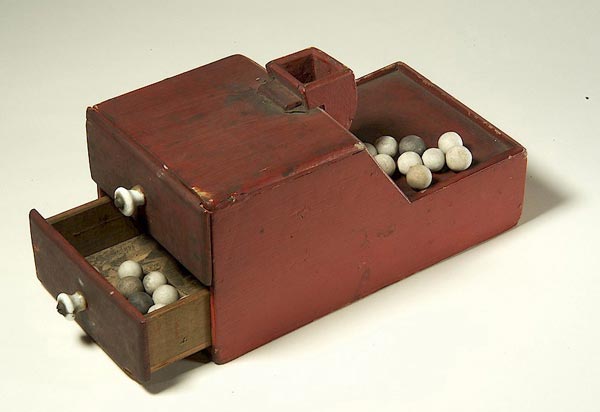
This simple truth should be the guiding star of our political decisions. Each must vote according to their moral compass, choosing leaders and policies that appear good, not a compromise of values, but as a choice of what is right.
Do your duty, no matter the consequences. These sweet words of Freemasonry still fill my mind every time I am confronted with a hard decision. Choosing the lesser of two evils is half a choice, or at worst, no choice at all. Always vote your conscience. And if the right choice does not appear, continue to look, for in the search you may find exactly that which you seek.
As Masons, we are directed to take the higher road, always and everywhere. It is a fallacy that there only exist: two choices, two destinations, two forces. The insidious powers of duality are always narrowing our senses into two opposite and extreme choices. But isn’t choice a spectrum rather than a fork in the road? Did not our ancient Brethren, whether Alchemist, Hermeticist, or Gnostic, teach us that life is a mosaic pavement of options? The material world is a trap of choices, always leading downward into the cynical abyss of “forced” choice.
Ancient Free and Accepted Masons
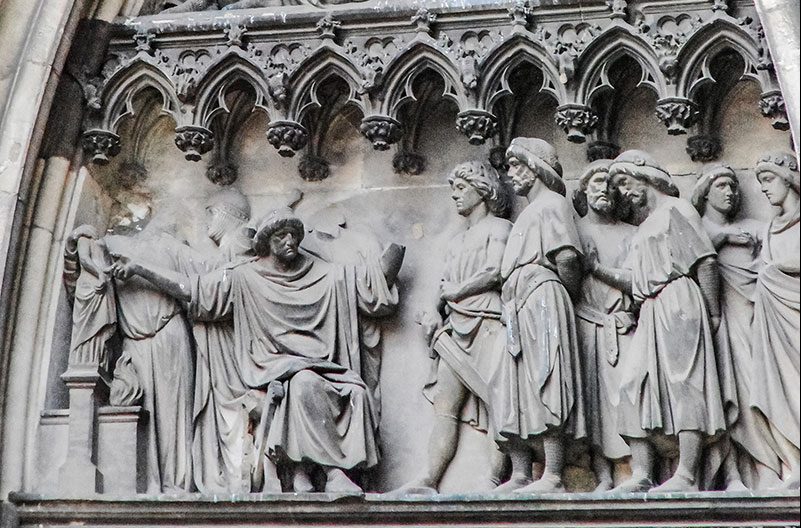
THE word “Mason” has been defined in many fanciful ways, as when one writer derives it from a Greek word meaning “in the midst of heaven,” and another finds in it an ancient Egyptian expression meaning “children of the sun”; but it is almost certain that the term came into existence during the Middle Ages to signify a man engaged in the occupation of building. Originally it had merely this trade significance; it was only after Masonry became a secret society that it took on a wider significance. Of course, there were builders long before the Middle Ages, but they went by other names, just as today we often speak of them as “architects,” a term that came into use in the time of Queen Elizabeth.
Builders of the Middle Ages, like all other workmen, were organized into societies, somewhat similar to, but by no means to be identified with, our trade unions, known as guilds. These guilds were permitted to make their own rules, and they were given a monopoly of the work done inside their own territory. The builder guilds were usually more important than others because their work was more difficult and required a high degree of skill and intelligence; such of them as had in hand the erection of the great cathedrals possessed among their membership the outstanding geniuses of the times and wrought such works as to this day remain our wonder and despair.
The art of building was, according to the customs of the time, held as a trade secret. Therefore the young men entering a guild of builders were solemnly obligated to divulge no secrets of the craft. Inasmuch as the work was difficult, these young men were given a long course of education under the direction of a Master Mason, in which, so it is believed. The tools and processes of Building were used symbolically and to impress certain truths on the mind of the member. In this way, and because the builders were in close touch with the church, which employed systems of symbolism as today we use books (the people could not read, but they could understand pictures), the builder guilds came in time to accumulate a great wealth of symbolic teaching and an elaborate ritual. In the eighteenth century, this symbolical element completely displaced the original craft of actual building, and Masonry became “speculative,” as we know it now, so that we are Masons only in a symbolical sense.
We are called Masons therefore because we are members of an organization that harks back to the time when builders and architects were bound together in closely guarded guilds. But why are we called “Free” Masons? This is a more difficult question to answer, as all our Masonic scholars have discovered, for in spite of a great amount of careful research, they have never vet agreed among themselves as to how the question should be answered. We have records of the word as having been used six hundred years ago, but it is evident that even then, “freemason” was a term of long-standing, so that its origin fades away into the dimness of a very remote past.

One of the commonest theories is that the freemason was originally the mason who worked in “free-stone,” that is, stone ready to be hewn and shaped for the building in contrast to the stone lying unmined. Such a mason was superior in skill to the quarrymen who dug the stone from the quarry, and this is in harmony with the fact that in early days freemasons were deemed a superior kind of workmen and received higher wages than “the rough masons”; but it does not explain why carpenters, tailors, and other workmen were also called “free.”
Another common theory has it that the early Masons came to be called “free” because they were exempted from many of the tiresome duties that hemmed in the laborer of the Middle Ages and enjoyed liberties such as the right to travel about (forbidden to most workmen of that period) and exemption from military service, etc. It is held by some writers that the early Popes granted bulls to Masons that freed them from church restrictions, but no amount of search in all the libraries of Europe, or in the records of the Roman Church (that church did not issue bulls against Freemasonry until 1738 and afterward). Has ever succeeded in unearthing a single such bull or any record thereof.
There are other theories. One has it that a Mason was free when out of the bonds of apprenticeship and ready to enjoy the full privileges of membership in his guild. Another, that there were grades of workmen inside building guilds and only the highest type were permitted all such privileges, and that these were called “free” in contrast to their less advanced brethren.

One of the most acceptable of all these theories is that so brilliantly advanced by G. W. Speth in the past century, in which that learned brother held that in the Middle Ages, there were two types of builders’ guilds, those that were stationary in each town and those that were employed in the cathedrals and were therefore permitted to move about from place to place, or wherever cathedrals might be in course of construction. Inasmuch as cathedrals represented the highwater mark of skill and learning in that day, such workmen were very superior to those that were employed on the humbler structures in the community, such as dwellings, warehouses, docks, roads, etc. so that Freemasonry descended from the aristocracy of medieval labor.
I have never been able to make up my mind between these various theories, except that it appears to me that Speth’s is the most plausible. It may be that several of them are true at one and the same time; such a thing would not be impossible because Freemasonry developed over a large stretch of territory and through a long period of time.
There is no doubt that, in some cases, this word has its face meaning and serves to remind us that our Craft is very old. The first Grand Lodge of Speculative Masons was established in London in 1717, but Masonry, even of the Speculative variety, was very old by that date. Boswell was accepted into the Craft in 1600, Moray in 1641, and Ashmole in 1646. Our oldest manuscript, usually dated at about 1390, looks backward to times long anterior to itself. There is no telling how old Masonry is; perhaps they are not so far wrong after all who date it in antiquity. In any event, it is “ancient” and has every right to the use of that word.
But in the majority of cases, this word doubtless refers to the Grand Lodge that came to be organized in England shortly after 1750. When the first Grand Lodge (that of 1717) was formed, it was planned that it should have jurisdiction only over a few lodges in London; but as these lodges increased in number, it extended its territory to include the county, and later on to include the whole country. A large number of lodges remained independent – they were often called St. John’s lodges – many in the north of England, and others in Scotland and Ireland. As time went on there grew up a feeling among the brethren of several of these independent lodges that the new Grand Lodge was becoming guilty of making innovations in the body of Masonry; therefore, after a deal of agitation had been made, a rival Grand Lodge was formed, and because its older sister Grand Lodge had made changes they dubbed it “Modern,” and because they themselves claimed to preserve the work according to its original form, they called themselves “Ancient.” This Ancient Grand Lodge was fortunate in securing as its Grand Secretary Laurence Dermott, who had such a genius for organizing that in the course of time, this newer lodge began to overshadow the older. The rivalry, often bitter enough to be described as a feud, lasted until 1813 when the first step toward a union was effected; out of this effort at reconciliation, there came at last “The United Grand Lodge of England.”

Meanwhile, the Ancients had chartered a great many lodges in the colonies of America. These, a large number of them, carried on the name long after American lodges had severed all relations with the Grand Lodges across the sea. In this wise, the word “Ancient” came into general use and remains today imbedded in the official titles of about half the Grand Lodges in this land.
Much mystery still hangs about the word “Accepted,” but in a general way, we may feel pretty safe in thinking that it refers to the fact that after the ancient builders’ guilds began to break up and to lose their monopoly of the trade, they began to “accept” into their membership men who had no intention of engaging in the actual building, but who sought membership for social purposes, or in order to have the advantage of the rich symbolism, the ritual and the philosophy of the Order. Thus, the first man admitted of whom we have a record is Boswell, who was made a Mason in 1600, as already noted, but it is fairly certain that others had been similarly accepted long before. Indeed, there is good reason to believe that non-operatives had been taken into membership from the earliest times. It is possible that the word was also applied to those members who devoted themselves to superintending and planning, but not to physical work. Throughout the seventeenth century, the number of accepted increased until the beginning of the eighteenth century. Many lodges were almost wholly made up of such members, and in 1717 the whole Craft was transformed into. A speculative science, though it is true that many operative lodges remained in existence, and some are still functioning and claiming for themselves the ancient lineage.
We shall have to wait with patience until all problems concerning these various words are cleared up, but meanwhile, we can use them with a satisfactory degree of certainty as connecting us historically with a process of growth and development that began far back in the Middle Ages, or earlier, and has continued until now. Verily it has been a history filled with wonders, and even now, there are few who have a full appreciation of the height and depth and length and breadth and exceeding riches of Freemasonry.
* Originally published, “What means Free and Accepted Masons? in THE BUILDER, 1923.
What is the Truth behind the 47th Problem of Euclid?

Containing more real food for thought, and impressing on the receptive mind a greater truth than any other of the emblems in the lecture of the Sublime Degree, the 47th problem of Euclid generally gets less attention, and certainly less than all the rest. Just why this grand exception should receive so little explanation in our lecture; just how it has happened, that, although the Fellowcraft’s degree makes so much of Geometry, Geometry’s right hand should be so cavalierly treated, is not for the present inquiry to settle. We all know that the single paragraph of our lecture devoted to Pythagoras and his work is passed over with no more emphasis than that given to the Bee Hive of the Book of Constitutions. More’s the pity; you may ask many a Mason to explain the 47th problem, or even the meaning of the word “hecatomb,” and receive only an evasive answer, or a frank “I don’t know – why don’t you ask the Deputy?”
The Masonic legend of Euclid is very old – just how old we do not know, but it long antedates our present Master Mason’s Degree. The paragraph relating to Pythagoras in our lecture we take wholly from Thomas Smith Webb, whose first Monitor appeared at the close of the eighteenth century. It is repeated here to refresh the memory of those many brethren who usually leave before the lecture:
The 47th problem of Euclid was an invention of our ancient friend and brother, the great Pythagoras, who, in his travels through Asia, Africa and Europe was initiated into several orders of Priesthood, and was also Raised to the Sublime Degree of Master Mason. This wise philosopher enriched his mind abundantly in a general knowledge of things, and more especially in Geometry. On this subject he drew out many problems and theorems, and, among the most distinguished, he erected this, when, in the joy of his heart, he exclaimed Eureka, in the Greek Language signifying “I have found it,” and upon the discovery of which he is said to have sacrificed a hecatomb. It teaches Masons to be general lovers of the arts and sciences.
Some of facts here stated are historically true; those which are only fanciful at least bear out the symbolism of the conception. In the sense that Pythagoras was a learned man, a leader, a teacher, a founder of a school, a wise man who saw God in nature and in number; and he was a “friend and brother.” That he was “initiated into several orders of Priesthood” is a matter of history.
That he was “Raised to the Sublime Degree of Master Mason” is of course poetic license and an impossibility, as the “Sublime Degree” as we know it is only a few hundred years old – not more than three at the very outside. Pythagoras is known to have traveled, but the probabilities are that his wanderings were confined to the countries bordering the Mediterranean. He did go to Egypt, but it is at least problematical that he got much further into Asia than Asia Minor.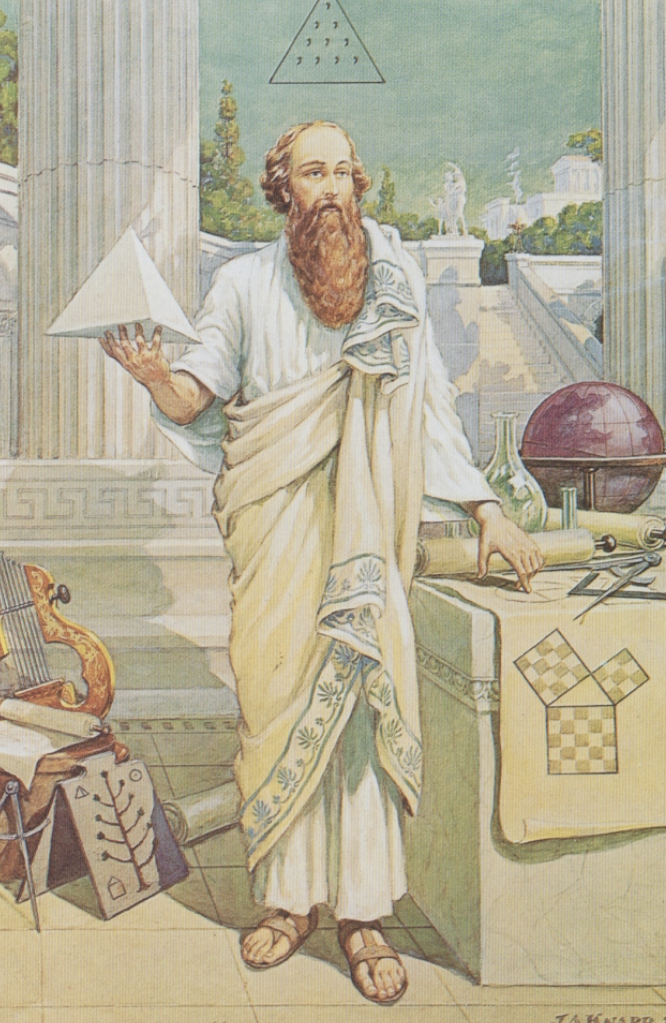
He did indeed “enrich his mind abundantly” in many matters, and particularly in mathematics. That he was the first to “erect” the 47th problem is possible, but not proved; at least he worked with it so much that it is sometimes called “The Pythagorean problem.” If he did discover it he might have exclaimed “Eureka” but he sacrificed a hecatomb – a hundred head of cattle – is entirely out of character, since the Pythagoreans were vegetarians and reverenced all animal life.
Pythagoras was probably born on the island of Samos, and from contemporary Grecian accounts was a studious lad whose manhood was spent in the emphasis of mind as opposed to the body, although he was trained as an athlete. He was antipathetic to the licentiousness of the aristocratic life of his time and he and his followers were persecuted by those who did not understand them. Aristotle wrote of him: “The Pythagoreans first applied themselves to mathematics, a science which they improved; and penetrated with it, they fancied that the principles of mathematics were the principles of all things.”
It was written by Eudemus that: “Pythagoreans changed geometry into the form of a liberal science, regarding its principles in a purely abstract manner and investigated its theorems from the immaterial and intellectual point of view,” a statement which rings with familiar music in the ears of Masons.
Diogenes said “It was Pythagoras who carried Geometry to perfection,” also “He discovered the numerical relations of the musical scale.” Proclus states: “The word Mathematics originated with the Pythagoreans!”
The sacrifice of the hecatomb apparently rests on a statement of Plutarch, who probably took it from Apollodorus, that “Pythagoras sacrificed an ox on finding a geometrical diagram.” As the Pythagoreans originated the doctrine of Metempsychosis which predicates that all souls live first in animals and then in man – the same doctrine of reincarnation held so generally in the East from whence Pythagoras might have heard it – the philosopher and his followers were vegetarians and reverenced all animal life, so the “sacrifice” is probably mythical.
Certainly, there is nothing in contemporary accounts of Pythagoras to lead us to think that he was either sufficiently wealthy or silly enough to slaughter a hundred valuable cattle to express his delight at learning to prove what was later to be the 47th problem of Euclid.
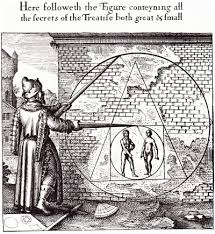 In Pythagoras’ day (582 B.C.), of course, the “47th problem” was not called that.
In Pythagoras’ day (582 B.C.), of course, the “47th problem” was not called that.
It remained for Euclid, of Alexandria, several hundred years later, to write his books of Geometry, of which the 47th and 48th problems form the end of the first book. It is generally conceded either that Pythagoras did indeed discover the Pythagorean problem, or that it was known prior to his time, and used by him; and that Euclid, recording in writing the science of Geometry as it was known then, merely availed himself of the mathematical knowledge of his era.
It is probably the most extraordinary of all scientific matters that the books of Euclid, written three hundred years or more before the Christian era, should still be used in schools. While a hundred different geometries have been invented or discovered since his day, Euclid’s “Elements” are still the foundation of that science which is the first step beyond the common mathematics of every day. In spite of the emphasis placed upon geometry in our Fellowcrafts degree our insistence that it is of a divine and moral nature, and that by its study we are enabled not only to prove the wonderful properties of nature but to demonstrate the more important truths of morality, it is common knowledge that most men know nothing of the science which they studied – and most despised – in their school days.
If one man in ten in any lodge can demonstrate the 47th problem of Euclid, the lodge is above the common run in educational standards!
And yet the 47th problem is at the root not only of geometry, but of most applied mathematics; certainly, of all which are essential in engineering, in astronomy, in surveying, and in that wide expanse of problems concerned with finding one unknown from two known factors. At the close of the first book Euclid states the 47th problem – and its correlative 48th – as follows:
47th – In every right angle triangle the square of the hypotenuse is equal to the sum of the squares of the other two sides.
48th – If the square described of one of the sides of a triangle be equal to the squares described of the other two sides, then the angle contained by these two is a right angle.
This sounds more complicated than it is. Of all people, Masons should know what a square is! As our ritual teaches us, a square is a right angle or the fourth part of a circle, or an angle of ninety degrees. For the benefit of those who have forgotten their school days, the “hypotenuse” is the line which makes a right angle (a square) into a triangle, by connecting the ends of the two lines which from the right angle.
For illustrative purposes let us consider that the familiar Masonic square has one arm six inches long and one arm eight inches long. If a square be erected on the six-inch arm, that square will contain square inches to the number of six times six, or thirty-six square inches. The square erected on the eight-inch arm will contain square inches to the number of eight times eight, or sixty-four square inches. The sum of sixty-four and thirty-six square inches is one hundred square inches.
According to the 47th problem the square which can be erected upon the hypotenuse, or line adjoining the six and eight-inch arms of the square should contain one hundred square inches. The only square which can contain one hundred square inches has ten-inch sides, since ten, and no other number is the square root of one hundred. This is provable mathematically, but it is also demonstrable with an actual square. The curious only need lay off a line six inches long, at right angles to a line eight inches long; connect the free ends by a line (the Hypotenuse) and measure the length of that line to be convinced – it is, indeed, ten inches long.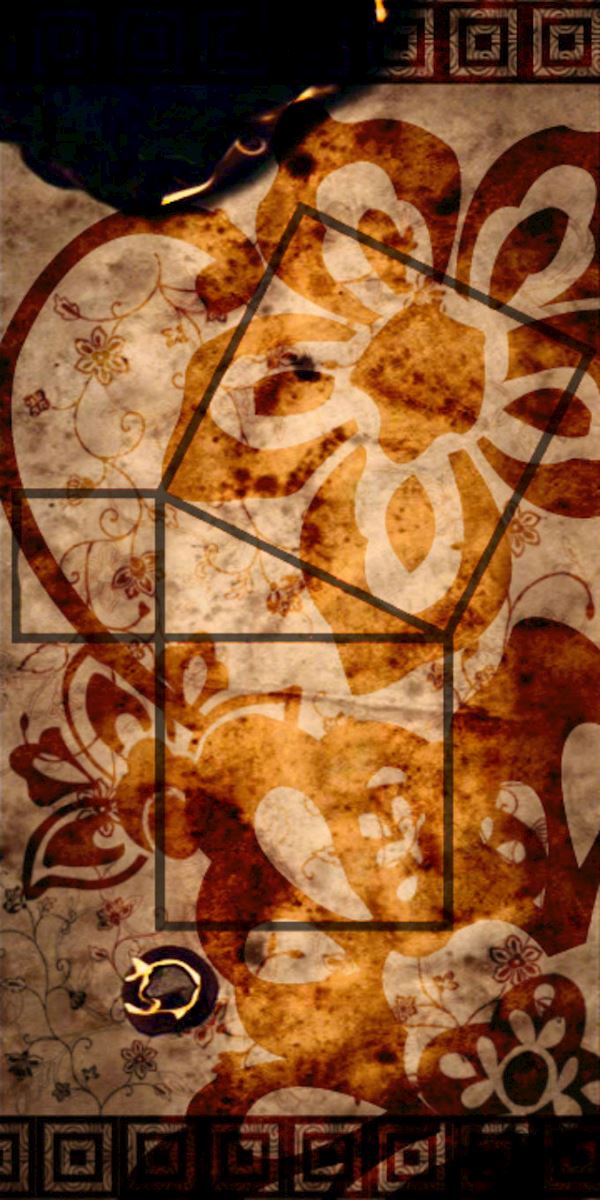
This simple matter then is the famous 47th problem. But while it is simple in conception it is complicated with innumerable ramifications in use.
It is the root of all geometry. It is behind the discovery of every unknown from two known factors. It is the very cornerstone of mathematics. The engineer who tunnels from either side through a mountain uses it to get his two shafts to meet in the center. The surveyor who wants to know how high a mountain may be ascertains the answer through the 47th problem.
The astronomer who calculates the distance of the sun, the moon, the planets, and who fixes “the duration of time and seasons, years and cycles,” depends upon the 47th problem for his results. The navigator traveling the trackless seas uses the 47th problem in determining his latitude, his longitude, and his true time. Eclipses are predicted; tides are specified as to height and time of occurrence, land is surveyed, roads run, shafts dug, and bridges built because of the 47th problem of Euclid – probably discovered by Pythagoras – shows the way.
It is difficult to show “why” it is true; easy to demonstrate that it is true. If you ask why the reason for its truth is difficult to demonstrate, let us reduce the search for “why” to a fundamental and ask “why” is two added to two always four, and never five or three?” We answer “because we call the product of two added to two by the name of four.” If we express the conception of “fourness” by some other name, then two plus two would be that other name. But the truth would be the same, regardless of the name. So it is with the 47th problem of Euclid. The sum of the squares of the sides of any right-angled triangle – no matter what their dimensions – always exactly equals the square of the line connecting their ends (the hypotenuse). One line may be a few 10’s of an inch long – the other several miles long; the problem invariably works out, both by actual measurement upon the earth and by mathematical demonstration. [Image Credit: 47th Problem of Euclid by Peter Savant]
It is impossible for us to conceive of a place in the universe where two added to two produces five, and not four (in our language). We cannot conceive of a world, no matter how far distant among the stars, where the 47th problem is not true. For “true” means absolute – not dependent upon time, or space, or place, or world or even universe. Truth, we are taught, is a divine attribute and as such is coincident with Divinity, omnipresent.
It is in this sense that the 47th problem “teaches Masons to be general lovers of the art and sciences.” The universality of this strange and important mathematical principle must impress the thoughtful with the immutability of the laws of nature. The third of the movable jewels of the Entered Apprentice Degree reminds us that “so should we, both operative and speculative, endeavor to erect our spiritual building (house) in accordance with the rules laid down by the Supreme Architect of the Universe, in the great books of nature and revelation, which are our spiritual, moral and Masonic Trestleboard.”
Greatest among “the rules laid down by the Supreme Architect of the Universe,” in His great book of nature, is this of the 47th problem; this rule that, given a right angle triangle, we may find the length of any side if we know the other two; or, given the squares of all three, we may learn whether the angle is a “Right” angle, or not. With the 47th problem, man reaches out into the universe and produces the science of astronomy. 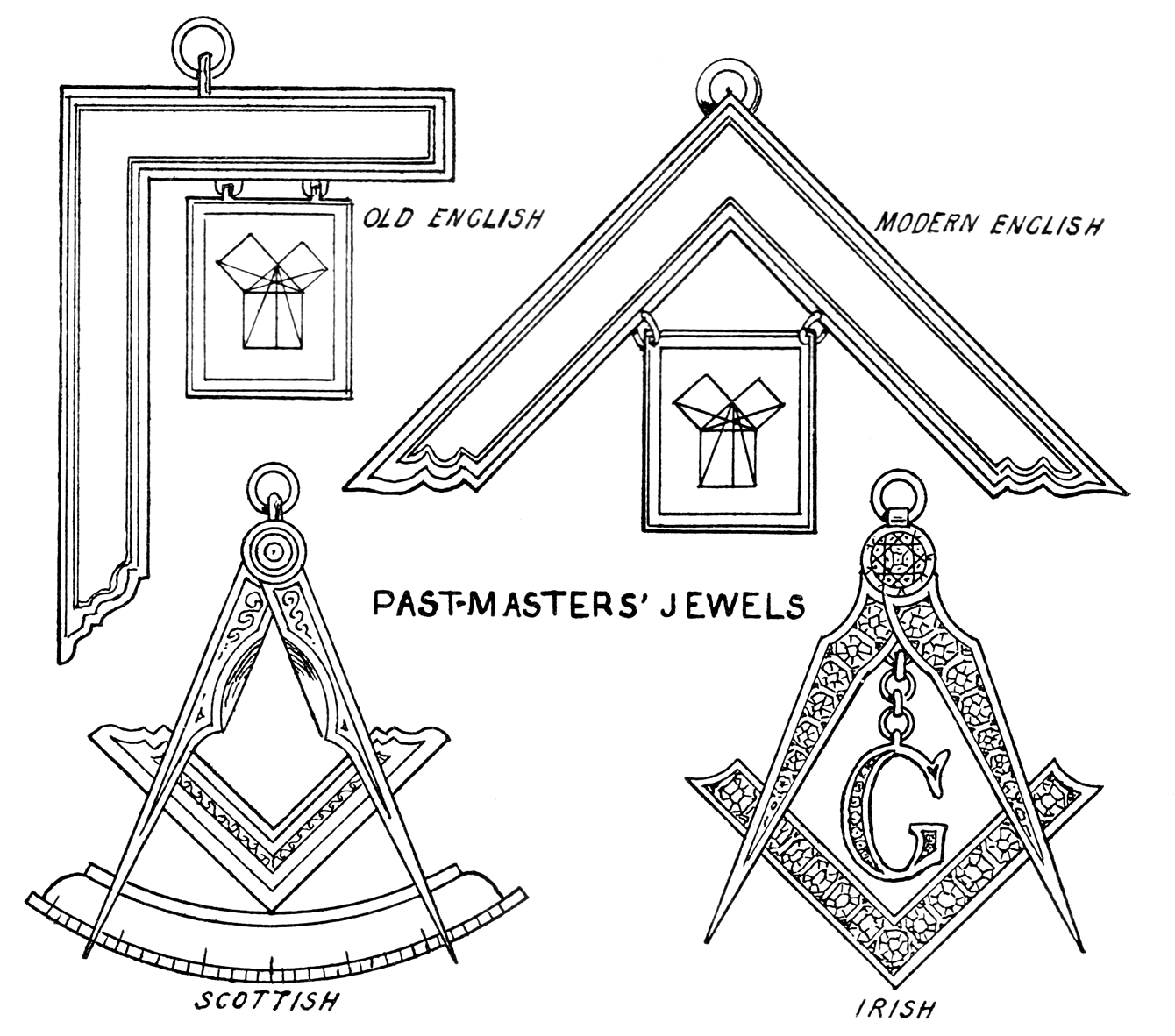
With it, he measures the most infinite of distances. With it, he describes the whole framework and the handiwork of nature. With it, he calculates the orbits and the positions of those “numberless worlds about us.” With it, he reduces the chaos of ignorance to the law and order of intelligent appreciation of the cosmos. With it, he instructs his fellow-Masons that “God is always geometrizing” and that the “great book of Nature” is to be read through a square.
Considered thus, the “invention of our ancient friend and brother, the great Pythagoras,” becomes one of the most impressive, as it is one of the most important, of the emblems of all Freemasonry, since to the initiate it is a symbol of the power, the wisdom and the goodness of the Great Artificer of the Universe. It is the plainer for its mystery – the more mysterious because it is so easy to comprehend.
Not for nothing does the Fellowcraft’s degree beg our attention to the study of the seven liberal arts and sciences, especially the science of geometry, or Masonry. Here, in the Third Degree, is the very heart of Geometry, and a close and vital connection between it and the greatest of all Freemasonry’s teachings – the knowledge of the “All-Seeing Eye.”
He that hath ears to hear – let him hear – and he that hath eyes to see – let him look! When he has both listened and looked, and understood the truth behind the 47th problem he will see a new meaning to the reception of a Fellowcraft, understand better that a square teaches morality, and comprehend why the “angle of 90 degrees, or the fourth part of a circle” is dedicated to the Master!
~ From, SHORT TALK BULLETIN – Vol.VIII, October 1930, No.10.
Aphorisms of Freemasonry

Selected aphorisms from The Book of the Lodge by George Oliver (1782-1867)
I: Freemasonry is a beautiful system of morality veiled in allegory and illustrated by symbols.
II: If you remain silent when Freemasonry is attacked, you condemn by your actions what your conscience approves.
III: As you are a Christian Mason, you must on all occasions study to perform the duties of Christian morality, which are comprehended under the triple category of God, your neighbour and yourself.
IV: The benefits to be derived from Masonry are well described by Ovid and Horace, when they say, “Ingenuas didicisse fideliter artes emollit mores. Asperitatis et invidiae corrector et irae,” which may be translated thus: “To have learnt the liberal arts faithfully, softens the manners and operates as a fine corrector of ill-nature, envy, and anger.”
V: To subdue the passions has been the universal aim of all mankind. All have placed their hopes upon it; and hence sprang the first idea of the Γνωθι Σηαυτον,* which was inscribed on the portal of heathen temples, that it might prove a stimulus to virtue, of which it was the first lesson, and lead to the desirable consummation, in which all excellence was blended, of subduing the passions.
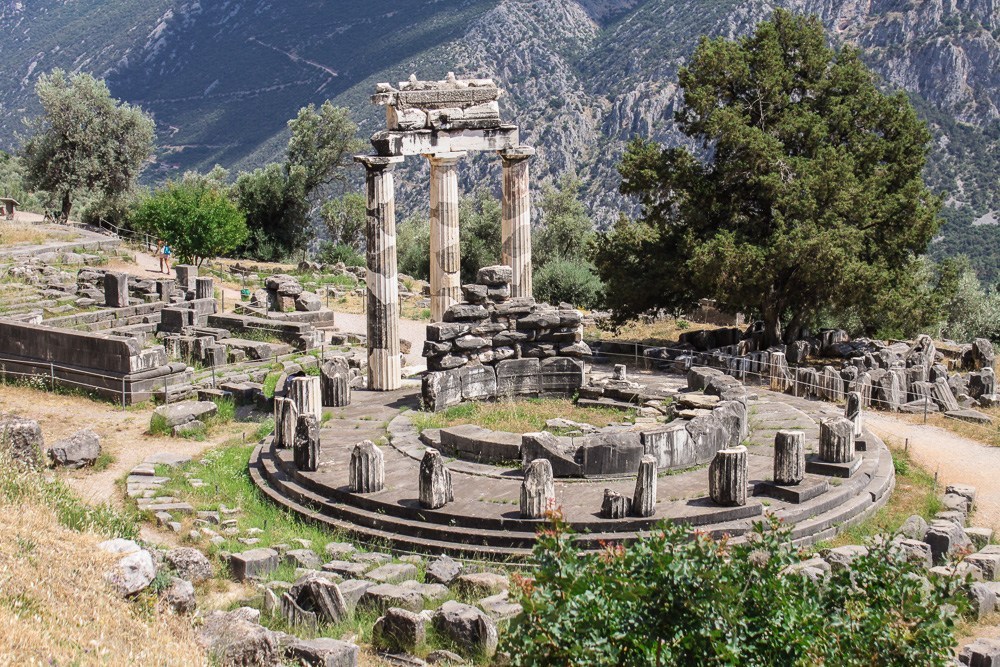
VI: If you intend to pursue the study of Masonry to any beneficial result, it is indispensable that you attend the Lodge regularly. This is your apprenticeship, and without it, you will never become a bright Mason. There is no royal road to science. (Image: Oracle at Delphi – Temple of Apollo, which bears the inscription “Γνωθι Σηαυτον”)
VII: A Lodge is not to be understood simply as a place where Masons assemble for the dispatch of business, but of the aggregate body of its members. The latter is, strictly speaking, the Lodge; the former is only the Lodge-room.
VIII: An incompetent person in the chair of the Lodge, is like a hawk on the wing, from which all the inferior birds hasten to escape, and leave him the sole tenant of the sky. In the same manner, such a Master will cause the Lodge to be deserted by its best Members, and be left alone in his glory.
IX: If you mean to attend your Lodge, be there at the hour mentioned in the summons. Whoever is late, disturbs the Brethren, and interrupts the business of the Lodge.
X: When seated, recollect your situation. If you are an Officer, do your duty, and nothing more. If you are simply a Brother, your business is to hear, and not to speak. An officious interference is unbecoming in a Mason: it may do harm, and cannot, by any possibility, be productive of good.
XI: Be always obedient to the Chair. Obedience is a virtue of the greatest importance to your own character as a Mason and to the general welfare of the Lodge. Without obedience Wisdom would be inoperative, Strength would lose its power, and Beauty its grace; and confusion and discord would soon banish the occupants of the holy ground.
XII: Never by any chance or persuasion suffer yourself to be inveigled into a party hostile to the Officers in charge of the Lodge. If you do, you will be a marked man, and your progress in Masonry will be rendered doubtful, if not altogether prevented.

XIII: During the period when serious business occupies the attention of the Brethren, you must not leave your seat, or engage in conversation with your neighbors, not even in whispers; neither should you move the chair or bench on which you are seated, or make any other noise to disturb the Master or his Officers in the orderly execution of their respective duties. Silence is the leading characteristic of a well-regulated Lodge. I have known many good Lodges spoiled for want of due attention to these trifling particulars.
XXV: Never enter into a dispute with a cowan. Like the deaf adder he will stop his ears, and refuse to hear the voice of the charmer, charm he never so wisely. No matter how clear are your facts, or how convincing your arguments, still he will turn an incredulous ear to your reasoning. Though you anxiously cry out, Oh… hear us, and even cut yourself with knives and lancets to bespeak his attention, there will be neither voice nor any answer, nor any that regardeth. You may as well endeavor to extinguish the sun by pelting it with snowballs or to cut rocks in pieces with a razor, as to make any genial impression on the mind of a professed cowan.
XXVI: What is the reason, Bro. ____ makes so little progress in Masonry? Indolence. Why did Bro. ____ fail to establish a good character as the Master of his Lodge? Because he was not an industrious person. Do you inquire why Bro. ____ never passed to the Second Degree? I answer because he was constitutionally idle. Indolence is the prolific parent of numerous other vices. Bad habits may be subdued, selfishness may be reformed, and passion held in check, but indolence is rarely if ever, conquered.
XXX. Silence, secrecy, and calmness of temper, are the unmistakable marks of a genuine Mason. If you hear anyone make an incessant boast of his knowledge, you may set him down as an empty chatterer. Noise is not wisdom. Those who ostentatiously proclaim their own merits may for a time enjoy the satisfaction of deceit, yet in the end, their pretensions are sure to be unmasked.
XXXII. Do you hear a man boast of his abilities, his attainments, his dignity, or his position in life? Intrust him not with your secrets.
XXXIV. When in the Lodge, beware of contentions brethren. Truth is as little an object with them as brotherly love. They will wrangle against truth as freely as against error, whether defeated or victorious, they will still argue and quarrel, question and dispute until they have banished every right-minded Brother from the Lodge.
LVII: How many disputes arise out of trifles! And how greatly would they be diminished if everyone would deliberately ask himself this question: whether is it better to sacrifice a point which is of no value, or to lose a friend more precious than rubies?
LIX: Before you pronounce a man to be a good Mason, let him pass the Chair. That is the test which will infallibly display both virtues and failing, mental imbecility and moral strength. If he passes through his year of apparent honor, but real trial, creditably, he will have nobly earned the character of a worthy and intelligent Mason.
LXII: When a cowan criticizes the science, answer him not but listen attentively to his words. They may perchance recall some point, part, or secret to your recollection, which has escaped your notice, for the castigations of the cowan are not without their use and benefit; “Like the toad, ugly and venomous, which wears a precious jewel in its head.”
LXV: Esteem the Brother who takes pleasure in acts of charity, and never babbles about it; take him to your bosom, and cherish him as a credit to Masonry and an honor to mankind.
LXIX: Be very cautious whom you recommend as a candidate for initiation; one false step on this point may be fatal. If you introduce a disputatious person, confusion will be produced, which may end in the dissolution of the Lodge. If you have a good Lodge, keep it select. Great numbers are not always beneficial.
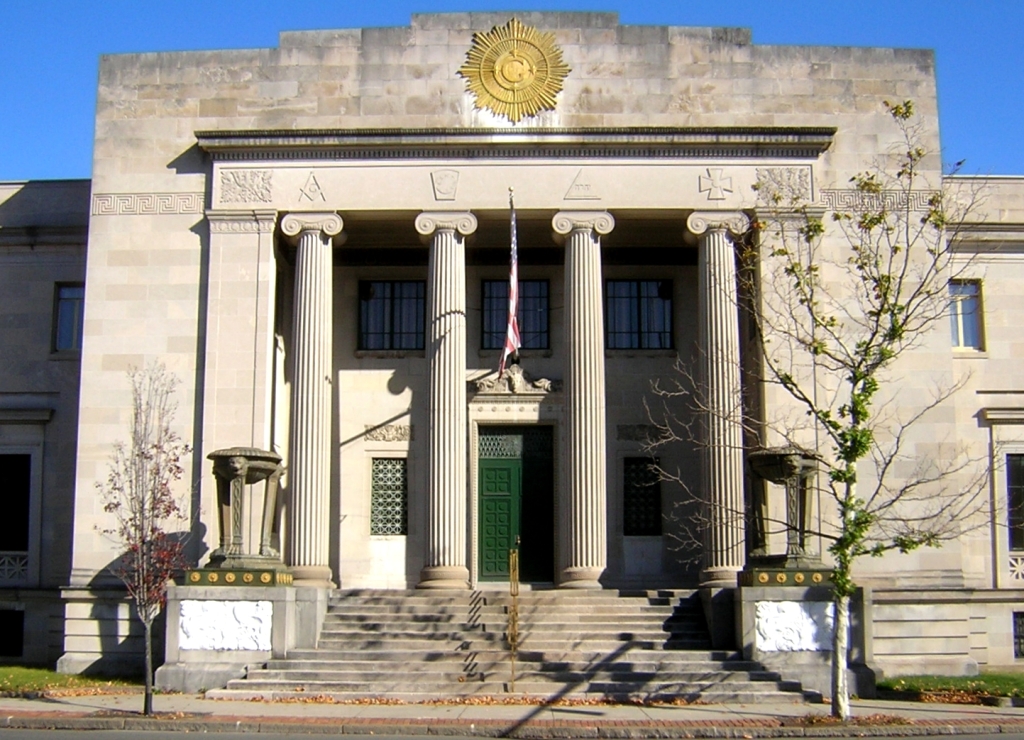
LXXI: He is a wise Brother who knows how to conclude a speech when he has said all that is pertinent to the subject.
XCIII: The great secret for improving memory, may be found in exercise, practice, and labour. Nothing is so much improved by care, or injured by neglect, as the memory.
XCVII: As the Lodge is opened with the rising sun, in the name of T.G.A.O.T.U., and closed at its setting in peace, harmony, and brotherly love, so, if you have any animosity against a Brother Mason, let not the sun sink in the West without being witness to your reconciliation. Early explanations prevent long-continued enmities.
* “Know Thyself.”
Excerpt from: Oliver, George (1782-1867); The Book of the Lodge; reprint of the third edition by Aquarian Press (Masonic Classics Series), of Thorsons Publishing Group, Wellingborough, Northamptonshire, England.
The Feminine of Freemasonry

There are many, many Freemasons who would note that there is nothing about Freemasonry that is feminine. It is a masculine fraternity in their eyes, where men get together to make “good men better,” and the term “fraternity” itself indicates, to them, a wholly male organization.* While that might be true for some Masonic Orders, it is certainly not true for all.
As we’ve previously discussed, Freemasons are men and women, of all races, creeds, and religious backgrounds. As we’ve also noted in the earlier article on Gender and Freemasonry, gender has far more to do with the essence of “things” than it does with sexual aspects of humanity. Let’s lift the idea of Freemasonry as being purely masculine, and look the world of Hermetic principles and gender. Where does the Feminine find itself within Freemasonry?

We are speaking here beyond titles. Masonic titles are in most languages gendered. There is “Brother” and “Sister” both of which have a gendered connotation. However, they are titles, and while there may be the open division between physical gender in some Masonic Orders, in at least one order, all members are designated “Brother.” Why? First, we have to remember that a title is nothing more than an honorific designation – in this case, it designates a member of a Freemasonic order. It is not a designation of gender any more than “Doctor” is a designation of gender. There is baggage we all have around titles that have gender associations; there is a reason most people never refer to stewardesses any longer on flights. Actors are actors, not actors and actresses, as waiters are waiters, not waiters and waitresses. We have begun tearing down the divisions of gender and working toward the idea of unity. We designate each other with the best word we can for Freemasons – Brother.
However, as I noted, this discovery goes beyond title. If we view the Lodge Room, the Temple, as a receptive place, it is a container and vessel for creation. Ergo, the Temple is feminine. It is receiving humanity, the Brothers (masculine energy), to build something. Masculine is outgoing and active. It requires a balance to hold its nature to form. It requires a Temple that can handle that energy and transform it. Is there any doubt why the Masonic Temple and its accoutrement should not be in its best upkeep and fitness? We want a healthy mother to be able to birth a healthy child. Is this not the same?

As the Lodge is feminine, so to I believe, is the ritual. The ritual form, written and memorized, requires action to give it life. It requires an active, outward principal to give it life. Here to again, the Brothers of the Lodge are the masculine principle, taking thoughtforms and words and creating intended action in three dimensional space. Ritual requires proper and strong expression (masculine) of imagination (feminine); both are necessary to enact a whole ceremony.
At many times during different rituals, an officer changes polarity from masculine to feminine. There is a shifting flow to Masonic ritual that encourages its adherents to explore the energies of both active and passive principles. There is also a neutrality in the Lodge that is carried by significant officers; the balance is required to ensure one gender does not dominate. There is always, like the Sefirot of the Kabbalah, a middle path, a neutral state in Freemasonry that guides the poles and the swing of the spiritual, mental, emotional and physical pendulum. That is, for every pair of floor officers, there is a neutral body to perhaps bring balance to the erratic nature of the human embodying the office. Let me explain.
The officer that receives a candidate, a guide if you will, is always in the masculine aspect of their office. They need to care for and have regard for their charge. They are the voice of the neophyte when they cannot speak. The candidate is feminine – they are receiving the gift of the ritual, and incorporating it into their person. They must use imagination to connect to the offering. Here, again, it is of no consequence what the physical gender of a person may be; we all must learn to tap into our receptive nature to be a vessel for creation of any kind. After the candidate has completed their ritual, the officer in question will fall back to their intended place in the structure of the Lodge. That may be a receptive principle, feminine, to their counterpart’s masculine, directive role. The moon with its rays of reflected sunlight guides the night but eventually, the sun, the primary assertive principle, returns to assume its directive place in the heavens.
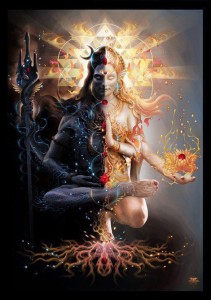
It is important to note here that the Sun has not always assumed the mantle of masculine and the Moon has not always been feminine. In order, pre-Sanskrit-based language, the denomination was reversed; we find this in Babylonian, early Egyptian, and earlier mythologies where the Sun was represented by feminine avatars. This subject is far too dense to dive into here; suffice to say that in the most recent times, the gender of these celestial bodies has changed and it might be worth noting that the attributes of feminine are found in the Sun, while attributes of the masculine may be found in the Moon.
Returning to the officers, we find the masculine, feminine, and neutral manifested in the three main officers of a Lodge. The W.J.W. is indicative of mid-day, when the sun is at its highest. This speaks of the dominant and assertive nature of that office; whereas, the W.S.W. is the sun as it recedes into darkness, It is the coolness of the moon, of night, of dreams and reception. One might dismiss their attribute, will or strength, as being a purely masculine trait but this is not the case. The feminine here is about transparency and about seeing the Other; the W.S.W. sees the entirety of the Lodge and is responsible for its voice. There is a calm confidence in their presentations to the Lodge – here is what has been made and it is of us.
It is clear that one cannot speak of the aspects of gender in a vacuum. We must reference one or the other to illustrate the differences and provide opportunities to think about principles which are not easily familiar to us in our common lives. In the next part, we’ll discuss the Masculine aspects of Freemasonry in more detail, in balance with the neutral lines that demark the place of balance, the center point were perhaps a greater vision of unity may be achieved.
* However, this commonly held belief, ie. that fraternities are wholly male organizations is erroneous. Though many people use their term “fraternity” to refer exclusively to men’s groups, many women’s groups officially call themselves fraternities. For example, the earliest chartered collegiate female fraternal organizations:
1. Kappa Alpha Theta 2. Kappa Kappa Gamma [Both Fraternities were founded in 1870], 3. Alpha Phi Fraternity [1872], 4. Delta Gamma [1873], 5. Gamma Phi Beta and 6. Sigma Kappa [Both founded in 1874], etc., as well as other mixed Fraternities, which admit both men and women at such colleges as Wesleyan and UMASS.
Gamma Phi Beta was the first collegiate women’s organization to be called a “sorority,” a term coined by Latin professor Dr. Frank Smalley at Syracuse University. The terms “sorority” and women’s “fraternity” have since been used interchangeably.
The Edge of The Universe

In Freemasonry, it explained that the “extent of a Lodge” covers the whole of existence, rising to the heavens, to the depths of the earth, east and west to each horizon, and north and south the same. This is the width, breadth, and depth of a Masonic Lodge. This is emblematical of the Temple of Humanity, but truly not just humanity. The Lodge is all of creation, edge to edge. If this is so, then the whole of the entire universe is a Lodge, and all of the entirety of the universe are its officers and workers.
Everything? So it would seem.
We also know that a Lodge is not a Temple. The Temple is the place where the Freemasons meet, to perform ritual, enjoy brotherhood, and revel in sacred space. The Lodge is the body of Freemasons that make up the Fraternity. Plainly, it would seem that the Lodge is not just Freemasons but truly all life, organic, inorganic, and all matter within the known universe. Is it any wonder that the Freemason creed is to study the hidden mysteries of nature and science? Hidden, it seems, is the operative word. No pun intended, I assure you.
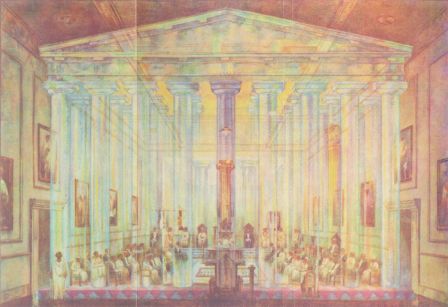
Yet, I think Freemasons may rarely study either. Many are content to execute ritual with good friends, and for many, that is the whole of Freemasonry. Some are involved in activities outside themselves, such as service to their Order and to other non-profit organizations, which are necessary activities. New Masons may observe and listen; yet, there are steps to real study that need to be followed to find understanding. This study and exploration continues well beyond the Third Degree. This is not meant as a condemnation of those good works; it is but a passionate appeal to seek for more.
A Freemason’s study entails curiosity, reading, experimenting, testing, theorizing, and play. It requires creativity and intuition to explore that creativity, looking for new ways to be in and of nature. It involves art, engineering, science, and math. It involves all the liberal arts. There is so much depth the foundational principles of Freemasonry and we only have to delve further to decant vast pools of mystery where we can drink direct understanding.
Indeed, most humans rarely look beyond their own bodies, and sometimes not even then, to study nature and science. We are accustomed to people telling us what to see, hear, and do. This is not to say their input is incorrect or malicious. It is their opinion based on evidence to their eyes. It is based on their own perception of the universe. Every perception, including our own, is only a shadow of perhaps all there is, and we need to remember that when listening and observing. The ideas we come up with from observing how nature works, by the vehicle of science, is a far better path towards wisdom. This is why ancient philosophers are so fascinating. It the not-so-distant past of humanity, a mere two thousand years, we were focused on the union of these two methods – observing nature and theorizing on its state – to understand life. Philosophers would not have separated the two ideas; nature taught, philosophers sought to understand, test, and validate their findings.
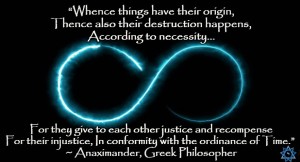
They were a curious lot, and for hundreds of years helped humanity steer itself toward a union between itself and the rest of the universe. They were often wrong; yet, even today we find them often right. Democritus, “Father of the Atom,” understood that “the world is made of up of granular particles.” Today, his work has informed Einstein as well as many modern quantum physicists. We recognize that the world is made up of grains, atoms, and their constituents are also granular.
These great thinkers are not limited to just the well-known philosophers like Plato, Aristotle, and Socrates. In fact, I do not believe we can truly understand these three unless we take steps to understand their predecessors and successors. Zeno of Citium, in 300 B.C.E. taught that universal reason, logic, is the foundation of all goodness in life and that living a life of reason was humanity’s purpose. Epicurus, with his principles of pleasure and happiness informed Lucretius’ work On the Nature of Things, which has also informed many modern scientists. Three hundred years earlier, Anaximander, a student of Thales of Miletus, became what we now believe to be the “first” philosopher, as Thales’ writings have ceased to survive.
“Anaximander invented the idea of models, drew the first map of the world in Greece, and is said to have been the first to write a book of prose. He traveled extensively and was highly regarded by his contemporaries. Among his major contributions to philosophical thought was his claim that the ‘basic stuff’ of the universe was the apeiron, the infinite and boundless, a philosophical and theological claim which is still debated among scholars today and which, some argue, provided Plato with the basis for his cosmology.”1
The past informs the future and sometimes, it informs the far future if we pay attention. Carlo Rovelli, in “Reality is Not What it Seems,” states: “It is only in interactions that nature draws the world.” Or, “The world of quantum mechanics is not a world of objects: it is a world of events.” Rovelli sees the world as Anaximander did, as an eternal flow between events; these events may be the life of a human being or a rock, not as fleeting as that of the quantum processes of creation.
In Lucretius’ discussion about the existence and composition of space, he poses what we now know as the Javelin Argument:
“For whatever bounds it, that thing must itself be bounded likewise; and to this bounding thing there must be a bound again, and so on for ever and ever throughout all immensity. Suppose, however, for a moment, all existing space to be bounded, and that a man runs forward to the uttermost borders, and stands upon the last verge of things, and then hurls forward a winged javelin,— suppose you that the dart, when hurled by the vivid force, shall take its way to the point the darter aimed at, or that something will take its stand in the path of its flight, and arrest it? For one or other of these things must happen. There is a dilemma here that you never can escape from… Lastly, before our eyes one thing is seen to bound another; air is as a wall between the hills, and mountains between tracts of air, land bounds the sea, and again sea bounds all lands; yet the universe in truth there is nothing to limit outside.”2
We now theorize that with Loop Quantum Gravity, a form of quantum theory about how the universe is constructed at the quantum level, spacetime is a network that creates itself, as the universe is expanding. While we may believe there is an edge to the universe, it is at the quantum level unbounded in that it has a constant creation. According to Claudia de Rham, theoretical physicist at Imperial College, “General relativity yields the predictions of black holes and the Big Bang at the origin of our universe. Yet the “singularities” in these places, mysterious points where the curvature of space-time seems to become infinite, act as flags that signal the breakdown of general relativity.”

Additionally, Juan Maldacena, a quantum gravity theorist at the Institute for Advanced Study in Princeton, New Jersey, has said, “In quantum gravity, space-time itself behaves in novel ways. Instead of the creation of particles, we have the creation of universes.”
If the foundation stones of Freemasonry are these ancient philosophers, it behooves us to understand them so we have a foundation to understand the nature of humanity in order to perfect it. In fact, we require their knowledge to understand the nature of all things, so that we may remember whence we came and that of which we are made. To understand a thing is to know it. Can we understand ourselves if we do not understand nature? We do not stand apart. We are the universe in all things. As NASA has said,
“The hydrogen in your body, present in every molecule of water, came from the Big Bang. There are no other appreciable sources of hydrogen in the universe. The carbon in your body was made by nuclear fusion in the interior of stars, as was the oxygen. Much of the iron in your body was made during supernovas of stars that occurred long ago and far away. The gold in your jewelry was likely made from neutron stars during collisions that may have been visible as short-duration gamma-ray bursts or gravitational wave events. Elements like phosphorus and copper are present in our bodies in only small amounts but are essential to the functioning of all known life,”
and have come from exploding white dwarfs and massive stars.3
To the Freemason, then, there are ever things to explore and understand. In fact, we might even say that we are co-creators in the universe, as it constantly growing and developing. The breadth, depth, and width of our “Lodge” is on the move, and we have the past and the future to explore. Spacetime is inconstant, creative, and evolving, and there is a wonderful eternal now from which to draw our study of nature and science. Perhaps that is a subject for another time. Again.
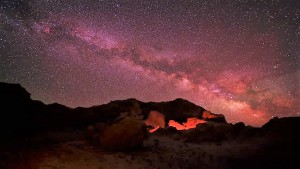
Notes:
1 – August 21, 2020, https://www.ancient.eu/Anaximander/
2 – August 22, 2020, https://oll.libertyfund.org/titles/carus-on-the-nature-of-things/simple#lf1496_endnote_nt239
3 – August 09, 2020, NASA https://ift.tt/2DCCwin
The Two-Headed Eagle of The Ancient and Accepted Rite
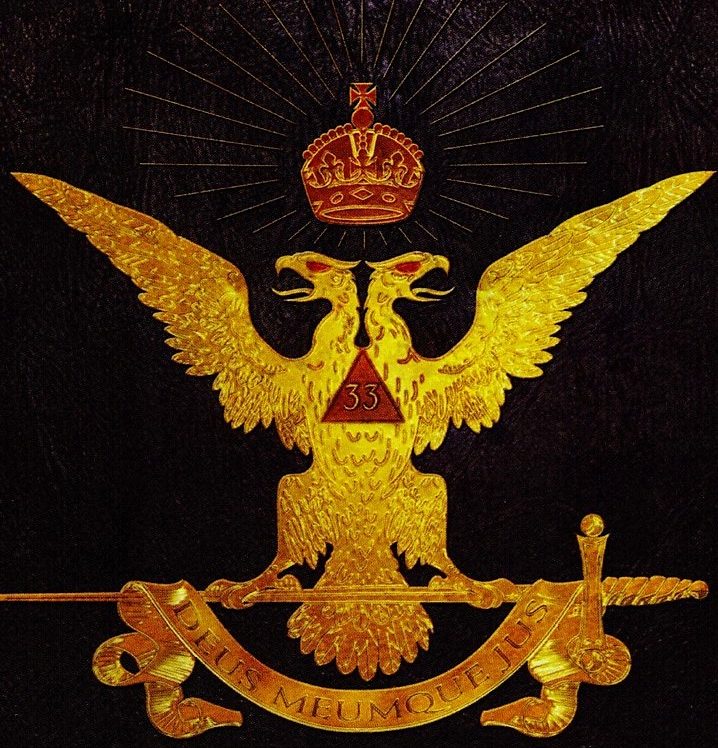
By Bro... W. J. Chetwode Crawley
The most ornamental, not to say the most ostentatious feature of the Insignia of the Supreme Council, 33° of the Ancient and Accepted [Scottish] Rite, is the double-headed eagle, surmounted by an Imperial Crown. This device seems to have been adopted sometime after 1758 by the grade known as the Emperors of the East and West: a sufficiently pretentious title. This seems to have been its first appearance in connection with Freemasonry, but the history of the High Grades has been subjected such distortion that it is difficult to accept unreservedly any assertion put forward regarding them. From this Imperial grade, or with this Imperial grade, the Two-headed Eagle came to the “Sovereign Prince Masons” of the Rite of Perfection. This Rite of Perfection with its Twenty-five Degrees was amplified in 1801, at Charleston, U.S.A., into the Ancient and Accepted Rite of Thirty-three Degrees, with the Double-headed Eagle for its most distinctive emblem.
When this emblem was first adopted by the High Degrees, it had been in use as a symbol of power for five thousand years, or so. No heraldic bearing, no emblematic device in wear to-day, can boast such antiquity. It was in use a thousand years before the Exodus from Egypt, and more than two thousand years before the Building of King Solomon’s Temple.
The story of our Eagle bas been told by the eminent Assyriologist, M. Thureau Dangin, in the volume of Zeitschriftfür Assyrliologie, 1904. Among the most important discoveries for which we are indebted to the late M. de Sarzec, were two large terra-cotta cylinders, covered with many hundred lines of archaic cuneiform characters. These cylinders were found in the brick mounds of Tello, which has been identified, with certainty, as the City of Lagash, the dominant center of Southern Babylonia, ere Babylon had imposed its name and rule on the country. The cylinders are now in the Louvre, and have been deciphered by M. Thureau-Dangin, who displays to our wondering eyes an emblem of power that was already centuries old when Babylon gave its name to Babylonia.1
The cylinder in question is a Foundation Record, deposited by one Gudea, Ruler of the City of Lagash, to mark the building of a Temple, about the year 3000 B.C., as nearly as the date can be fixed. The Foundation Record was deposited just as our medals, coins, and metallic plates are deposited to-day, when a Corner-stone is laid with Masonic Honors. It must be borne in mind that in this case, the word Corner-stone can be employed only in a conventional sense, for, in Babylonia, all edifices, Temples, Palaces, and Towers alike, were built of brick. But the custom of laying Foundation Deposits was general, whatever the building material might be, and we shall presently see what functions are attributed, by another eminent scholar, to the Foundation Chamber of King Solomon’s Temple.
The contents of the inscription are of the utmost value to the Oriental scholar, but may be briefly dismissed for our present purpose.
Suffice it to say, that the King begins by reciting that a great drought had fallen upon the land. “The waters of the Tigris,” he says, “fell low and the store of provender ran short in this my City,” so that he feared it was a visitation from the Gods, to whom he determined to submit his evil case and that of his people. The reader familiar with the Babylonian methods that pervade the Books of the Captivity, will not be surprised to learn that the King dreamed a dream, in which the will of the Gods was revealed by direct, personal intervention and interlocution. In the dream there came unto the King “a Divine Man, whose stature reached from earth to heaven, and whose head was crowned with the crown of a God surmounted by the Storm Bird that extended its wings over Lagash, and the land thereof.” This Storm Bird, no other than our Double-headed Eagle, was the Totem, as ethnologists and anthropologists are fain to call it, of the mighty Sumerian City of Lagash, and stood proudly forth the visible emblem of its power and dominion.
This Double-headed Eagle of Lagash is the oldest Royal Crest in the world. As time rolled on, it passed from the Sumerians to the men of Akhad, from the men of Akhad to the Hittites, from the denizens of Asia Minor to the Seljukian Sultans, from whom it was brought by Crusaders to the Emperors of the East and West, whose successors to-day are the Hapsburgs and the Romanoffs, as well as to the Masonic “Emperors of the East and West,” whose successors to-day are the Supreme Councils, 33°, that have inherited the insignia of the Rite of Perfection.
Such is the accredited account of the successive flights by which the Double-headed Eagle winged its way from the Tigris to the Danube and the Neva. But it is quite possible that when the Mediaeval Warriors brought home the Storm Bird, they brought it to that nest not for the first time. We have said above that Lagash was the center of a Sumerian people in the year 3000 B.C. It has been established that the Sumerians were an Iranian people, quite distinct from the warlike men of Akhad, who were of Semitic descent. Sometime after the year 2800 B.C., the fiery men of Akhad squeezed out the Iranians, and Babylonia became to all intents and purposes a Semitic Kingdom for the time. The Sumerians appear to have followed the Iranian line of migration westwards and, very likely, brought with them the remembrance of their guardian Bird of the olden time. Hence, the Storm Bird from Mesopotamia, with its double-head and outstretched wings, may not have seemed altogether strange to the Slavs, or the Teutons, or the Celts whose dim ancestry may have dwelt beside the Tigris. The emblem may have appealed to some vague sub-conscious inheritance of the kind that latter-day psychologists stigmatize as vestigial retro-reminiscence. Verily, the nomenclature is germane to “that blessed word Mesopotamia.”
Reverting to the text of the inscribed cylinder, we gather that the Master of the Storm Bird was appeased by the King undertaking to build him a Temple, and in response to the King’s petition inspired him and his builders with a Heaven-born plan. A ‘similar celestial origin is ascribed, commonly enough, to the more magnificent Temples of the Ancient East; for instance, to the great Temple of Horus at Edfu, built by the Pharaoh, under direct inspiration of the god Im-Hotep.2
But this particular revelation to Gudea is noteworthy, because the circumstances of the revelation bear a strong family resemblance to those of the disclosure of the dimensions of the Tabernacle to Moses on Mount Sinai, as described in Exodus xxv., et seq. The cuneiform text is opportunely illustrated on this point by the discovery of a fine basalt statue of Gudea, buried for ages in the same mounds of Lagash. He is represented in the sitting posture common to Oriental statues of Great Monarchs, and he holds on his knees what is now plainly seen to be a draughtsman’s tablet, with the design inscribed on it, while hard by are the graver’s tools and scale: for all the world like a Tracing-board, Gauge, Skirret and Pencil of to-day. The mise-en-scène has an indefinable resemblance to the Frontispieces with which the engravers of the eighteenth century were wont to decorate the Pocket Companion and similar books.
The cuneiform inscription goes on to describe the ceremony of laying the cornerstone, with a thousand details of inestimable value to the archaeologist, but in no way bearing on the story of the Double-headed Eagle.
These things came to pass, under the wings of the Storm Bird, in Lagash of the Sumerians, and were there written down, more than a thousand years before Abram, the Hebrew, dwelt in Ur of the Chaldees.
Notes
1 Zeitschriftfür Assyriology Strasburg…, 1904: vol.xviii, p. 119; Le Cylindre de Gu-de-a, par Fr. Thureau-Dangin.
2 The old temple at Edfu, built for the worship of Horus, son of Kneph and Athor, was explored by Mariette Bey, and is reputed to contain an inscribed tablet or slab, on which is delineated a geometrical approximation to the ratio of the diameter to the circumference. Scientific readers will understand the ages upon ages that must have intervened between the dawn of geometrical conceptions and the period at which such a constant could begin to appear practicable, or desirable, or even conceivable.
* Orginally published in Ars Quatuor Coronatorum. vol. xxiv (1911) Quatuor Coronati Lodge No. 2076. pp. 21-24.
Thinking Better
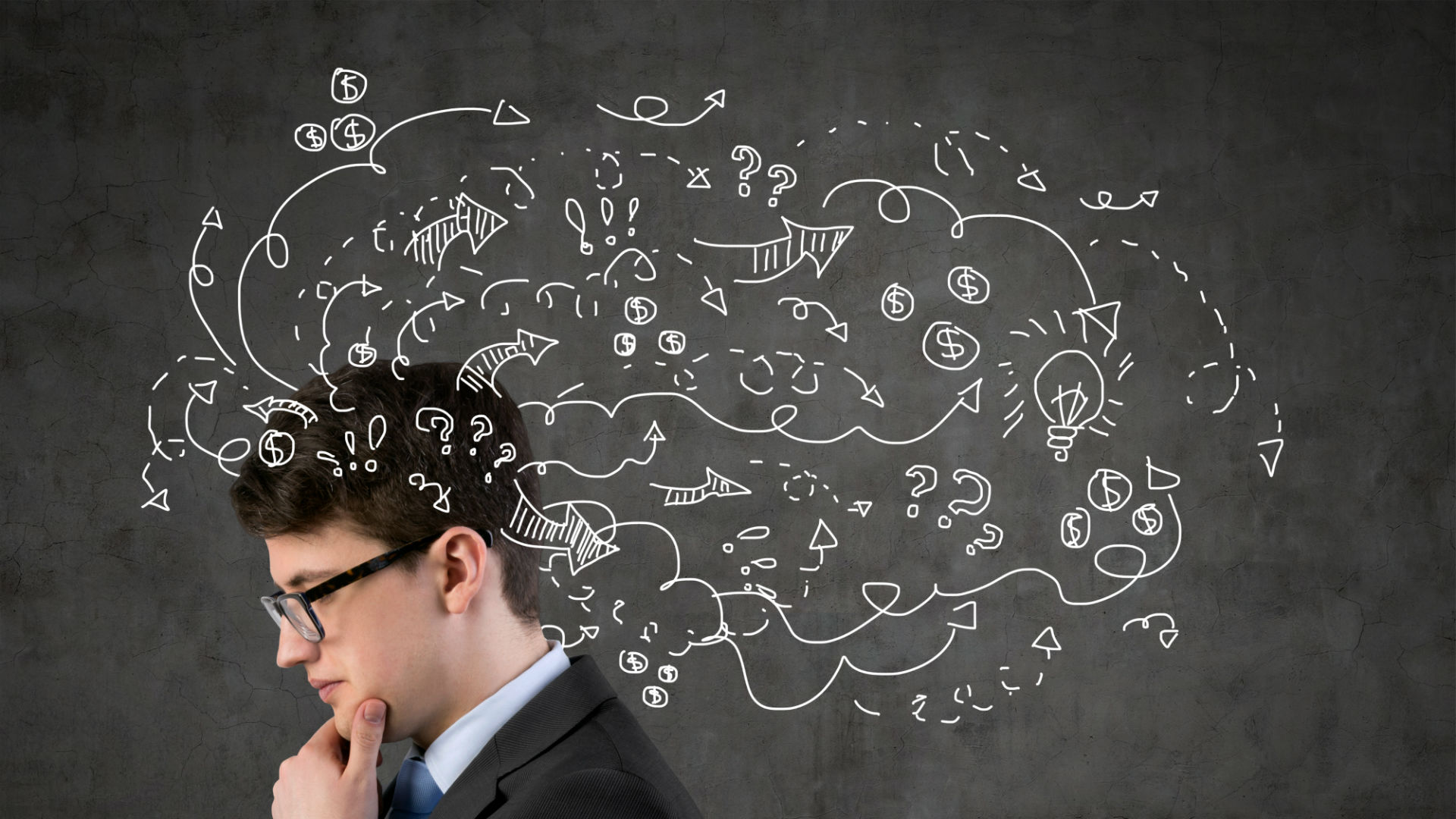
At work today, I was faced with the unfortunate episode that happens to everyone at least once. That unfortunate episode was misunderstanding – poor communication resulting in confusion. I had requested that a team alter the way they were performing an action. I made the mistake of requesting it of the entire team. It was taken as a mandate or edict, and one I had no right to make or demand. Having working with these people for years, I was taken aback. Neither was it my intention to demand or mandate. It was a shock to hear that my intentions had been so miscommunicated. What had I done wrong to be so misunderstood?
In this way, I learned. I believe they had no bad intentions; this situation was just a missed opportunity for stronger bonds and communication between us. I could easily hold a grudge or condemn them for being childlike in their response. Yet, neither of those are appropriate actions to take, either for me, or against people who mean well at their core. And, naive as it may sound, I believe people will gravitate toward doing “right” or “positive” or even “good” in any given situation.

As part of a larger society, we all want to work toward being at peace with our neighbors and the world in general. No, not everyone but I choose to believe the positive in mankind.Regardless of the “what” of the request, I was disappointed that people chose to believe “bad” intention rather than a “good” intention. How could a plea for help turn into an edict? I looked to myself, to see if I could have worded my request better and it was clear, I could have done better.
I find that these challenging communication situations are easier for me to handle as a Freemason. When I wasn’t a Freemason and did not have that foundation, I struggled to find framework in how to move forward without being “hurt.” Now, I do my best to also see their response as positive rather than negative. Sometimes, it is still difficult. As Freemasons, we work hard to not believe ill or malintent of fellow Freemasons; that same thinking goes for the people in my life who are not Freemasons. I can’t conceive of thinking differently because the persons are or are not Freemasons. I treat all as equally as I am able, even with my inevitable biases. I think I hold my fellow Masons to a higher standard because they are Freemasons; in many ways, they really do know better.
Yet, we all have gaps in our education. It’s up to our fellow Freemasons to help us become the best version of ourselves and it’s our job as Freemasons to hold ourselves accountable. I am better for making mistakes and having my Brothers correct me, help me, assist me toward seeing situations and myself differently.

Where this has led me is to really striving to think through my passionate first responses to being ‘wronged’ and take a different approach.
Freemasonry teaches that we should endeavor to never misjudge a brother or to willfully misunderstand him. I think, in Co-Masonry, where family members or friends may be fellow members, teaches us to not segregate that treatment to a single group. When your wife or husband is a fellow Freemason, you take these lessons from the Lodge into your home. They can’t help but spread beyond the border of your front door. When everyone “plays by the same rules,” it makes it easier to be truthful and authentic with your reactions. You grow because you are able to absorb the lesson, let go of the ego, and move into how you can communicate better.
When you do take these principles out into the world, it’s disappointing to be reminded that not everyone plays by those same rules. This lack of “thinking better” creates the nasty politics of business culture and the fear of political discussions with strangers. It twists us into politically correct pretzels, attempting to hide what we really think and feel, and never really communicating. We have seen this in our recent upheavals in the United States. It seems easier to hate than to understand, and easier to believe ill in people than to believe well of them. I think many people just want to be heard, and listening to them requires we check our personal agendas and self-importance at the door. The lack of “thinking better” brings us to being deadlocked in negotiation or discussion, rather than truly solving problems.

It’s difficult to think well of someone who is bringing up their “issues” about us or has difficulty with something we did. I find myself hurting at the thought of rejection and the idea of a personal attack. I can be emotionally roughed up by someone thinking poorly of me. I think most of us would be, if we know what we’ve done or said to be in the spirit of cooperation rather than being malicious.
Conversely, it’s also a challenge for me to not be a child in return, to lash out and hold that grudge like some four-year-old child. That is where I become grateful for Freemasonry and the challenge to reframe the situation into a learning experience for me. I can push through the grudge and bring it back to “thinking better.” It’s more peaceful for me and it certainly keeps the door open rather than slamming it shut in their face or to my future experiences with them.
Harmony, to this Freemason, is a shining goal, where the spirit of cooperation and unity produce amazing results in our rituals and in our lives. It seems to me that to focus on “thinking better” is what helps bring us into that harmony; not just in our Lodge rooms but in our lives. With a little intent, we can bring this consonance to all of the people we touch, a greater humanity. Imagine, a world of thinking better: makes you smile, doesn’t it?
“Attitude is a choice. Happiness is a choice. Optimism is a choice. Kindness is a choice. Giving is a choice. Respect is a choice. Whatever choice you make makes you. Choose wisely.” ― Roy T. Bennett, The Light in the Heart
What Would Your Sentence Be?

One dark, cold Winter night, in the pine forest near the foothills of the Rockies, a small rabbit runs across a snow-littered meadow. His small feet crunch the rocks as he makes a break for his warren. In the deep silence, a sudden flash and the night becomes day for a brief moment. Seconds tick by as the light rises and slowly fades, an eerie backdrop to the silence. Minutes later, a great tidal wave of energy flattens the forest, the rocks, the warrens, the sleeping life that will continue to sleep. Forever.
In the wake of this powerful destruction, debris falls from the sky, littering the once verdant land with the detritus of its previous inhabitants. Plastic, wood, ash – all drifting in the growing silence. A single white piece of paper, seemingly untouched by the devastation, floats down, swinging wide in the light wind until it reaches the ground. It has the scratches of some writing embedded in its fibers.
What does this writing say?
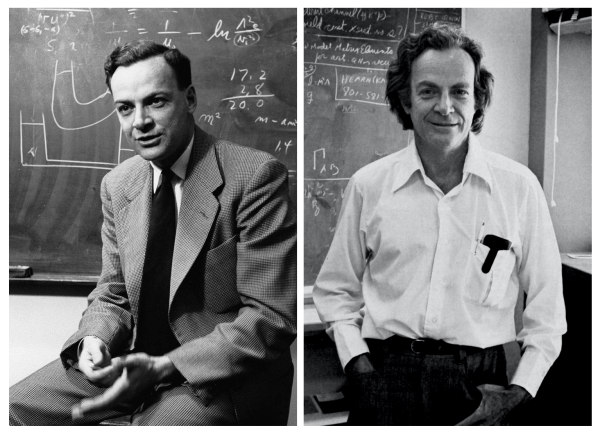 This is the question that Richard Feynman posed to his physics students on the first day of his new physics curriculum at CalTech in 1961. This question is highlighted in a recent Radiolab episode, entitled “The Cataclysm Sentence” as well as in his collected lectures, called “The Feynman Lectures on Physics.” Rather than teaching his students the history of physics, he wanted them to think critically, creatively, and for themselves.
This is the question that Richard Feynman posed to his physics students on the first day of his new physics curriculum at CalTech in 1961. This question is highlighted in a recent Radiolab episode, entitled “The Cataclysm Sentence” as well as in his collected lectures, called “The Feynman Lectures on Physics.” Rather than teaching his students the history of physics, he wanted them to think critically, creatively, and for themselves.
He posited this question:
If, in some cataclysm, all of the scientific knowledge were to be destroyed, and only one sentence was passed onto the next generation of creatures, what statement would contain the most information in the fewest words?
His own answer to that question is covered in both places; the twist that Radiolab put on this question was to ask writers, artists, musicians, and contemporary scientists – what would your sentence say?
Feynman’s answer is at once interesting and a cultural legacy. Here is what he said:
If, in some cataclysm, all of scientific knowledge were to be destroyed, and only one sentence passed on to the next generation of creatures, what statement would contain the most information in the fewest words? I believe it is the atomic hypothesis that all things are made of atoms — little particles that move around in perpetual motion, attracting each other when they are a little distance apart, but repelling upon being squeezed into one another. In that one sentence, you will see, there is an enormous amount of information about the world, if just a little imagination and thinking are applied.
We could take time to unpack his response, or we could delve into our own. Or, we could wander around the purpose of such a sentence, and how might a Freemason answer.
What would the purpose of such a sentence be? What sort of creatures would pick it up? I imagine that this thinking was once applied to the study of Lemuria or Atlantis, and what their civilizations had left for us. From Plato, we learn of Atlantis, which existing approximately 11,000 years ago. It is considered a myth, a metaphor, a fact, and all things in between. In truth, we have no writings existent from Atlantis, and only Plato (and his character’s word) that it existed. Lemuria, an even fainter impression of a culture and continent, is said to have existed up to 52,000 years ago, in the Indian Ocean, and fell to ruin by Nature’s hand around 16,000 B.C.E.. In this case, the Tamil’s claim that this land, Kumari Kandam, was the “cradle of civilization” and that it was, like Atlantis, a thriving civilization but to theosophists, it was the place where humanity took form. Again, we have Tamil folklore and speculation by both theosophists and 19th C.E. anthropologists but we have nothing written directly from this civilization.
 In both cases, no such miracle sentence was imparted to us, no wisdom floating to us through the ages. We might imagine that Plato was telling us that Atlantis’ sentence was “Don’t get greedy.” From Lemuria, it might be “Experience everything as human,” or perhaps “Become.” As their worlds were ending, did any of them think of another race of humans? Would we?
In both cases, no such miracle sentence was imparted to us, no wisdom floating to us through the ages. We might imagine that Plato was telling us that Atlantis’ sentence was “Don’t get greedy.” From Lemuria, it might be “Experience everything as human,” or perhaps “Become.” As their worlds were ending, did any of them think of another race of humans? Would we?
Feynman’s question was specific in that he didn’t specify “humans,” but creatures. Creatures. This presupposes they would understand whatever language was written down or that they would understand the reference. In the Radiolab episode, the answers that artists and philosophers provided were at once strange, funny, serious, and deep. The idea here is that the sentence “jump starts” the next “human” race, or race of advanced creatures, whatever that might be.
CAITLIN DOUGHTY: For me, it’s something like you will die, and that’s the most important thing.
ESPERANZA SPALDING: …The willingness to respond creatively to fear, without trying to eradicate the source of the fear.
CORD JEFFERSON: “The only things you’re innately afraid of are falling and loud noises. The rest of your fears are learned and mostly negligible.”
MERRILL GARBUS: [singing] Evolving over millennia. We learn to fly. We’re nourished by the fruits of the Earth. Inspired by each other’s music. But we failed as a species. Injured the very hands that fed us, when we chose fear as our ruler. When we could not grasp being mere fractals in one collective being. In the end there was no “we.”
JENNY ODELL: All of human effort is meaningless, as he puts it. So he says humanity knows nothing at all. There’s no intrinsic value in anything and every action is a futile, meaningless effort. (Speaking of a Japanese farmer who created “Do Nothing Farming.”
ALISON GOPNICK: Why?
REBECCA SUGAR: …And maybe the ultimate goal would be to just devote oneself fully to creating the life that feels the best on this world in the time that we have.
JAMES GLEICK: The moon revolves around the Earth, which is not the center of the universe, far from it. But just one of many objects, large and small, that revolve around the sun which in turn, is one of countless stars mostly so far away that they’re invisible, even on the clearest night. All traveling through space on paths obeying simple laws of nature that can be expressed in terms of mathematics. Oh and by the way, there is no God.
JARON LANIER: I would give them nothing….It’s redundant. Like, all of that kind of information is just the stuff that’s out there waiting to be discovered in nature anyway, so we don’t have to do anything. If people apply themselves they’ll rediscover all that stuff. So it’s not like we’re special. Letting them get it in their own good time might be better for them, so what have we actually added? Perhaps we’ve only taken away.
Since I listened to this episode and looked into Feynman’s life, and subsequently, delved into Physics and thought experiments, and the meaning of humanity, the answer on the piece of paper that I write has to be something that would be unique to the creature reading it. In this, I think Freemasonry, and really mystery schools overall, has the far view. If we’re working to the perfecting of humanity, we know we have a long, long road ahead, and possibly many lifetimes. Freemasonry looks to the soul of humanity itself, and works to ascertain its perfection. What would we leave to the next generation of souls to inhabit the universe? Maybe we can’t even say until we’re at the end of our own existence. My hope is that is farther away than closer.
 My thoughts stray to what I learned from long-dead philosophers in Greece, precursors to modernity, leftovers from Atlantis. They didn’t know me, and their civilization has perished. What did they leave me, to provide me hope to carry on? My sentence would be “nosce te ipsum.” It transcends everything.
My thoughts stray to what I learned from long-dead philosophers in Greece, precursors to modernity, leftovers from Atlantis. They didn’t know me, and their civilization has perished. What did they leave me, to provide me hope to carry on? My sentence would be “nosce te ipsum.” It transcends everything.
I’m curious to know – what would your sentence be?
The Trestle Board
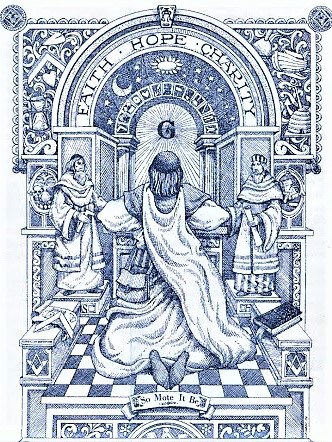
By Bro... Paul R. Clark
DR. CHARLES PARKHURST in saying “To call things by their right names is always a direct contribution to wholesome effects” should receive credit for enunciating a philosophical gem. When a manufacturer seeks an economical distribution of his products, he doesn’t call a spade a shovel or “pussyfoot” down some side alley, timidly and fearfully, trying to develop vital facts, lest he uncover unpleasant truths which might materially change his pre-conceived ideas or notions.
Economical merchandising on a national scale is a problem so complex we can’t afford to shrink from the broad highway, lead us where it may. Merchants willingly spend thousands of dollars in developing facts to secure a clear picture of conditions as they are, not as they would like to find them. “A fact is a fact, whether you like it or not.” Unbiased opinions are difficult to get, because “an opinion changes with what you had for dinner.” So, we find merchants seeking facts. When unpleasant truths stalk into the conference room, business men welcome them and call them by their full names, and consider themselves fortunate indeed if they clearly uncover weaknesses in their products or their merchandising plan.
Many successful business men are members of long standing in the Masonic Fraternity. I am persuaded that, if given an opportunity, they might apply some of their hard-earned experience towards the solution of our Masonic problems.
I HAVE a close friend, a Mason, who is a large manufacturer of pianos. He is not lulling himself to sleep with clever slogans or advertisements in nationally circulated publications, nor with prettily worded or high sounding phrases when discussing his problems with his directors or stockholders.
The radio, the automobile, and the moving pictures are great, gaunt realities which overturn old traditions or customs of the piano trade and demand recognition. Turning his back on them, “ostrichizing” them by sticking his head in the sand, or parking his intelligence outside will not get him to “first base.” The changing habits of the present generation, and the new problems of this wonderful, but complex, 20th century are introducing conditions which must be called by their right names.
When pointing out some of the shortcomings of the average Blue Lodge, I am reminded of the story of the boy, returning from college, who nervously says to his father, “Dad, after all, the real thing in college is the social atmosphere. The real values lie in the social opportunities and – “Dad impatiently interrupts him at this point with the rather caustic remark, ‘What did you flunk in this time?'”
Nothing can be gained by denying the fact that too large a percentage of our brothers flunk in Freemasonry, as far as the Blue Lodge is concerned. A pitifully small percentage of those brothers who are Masonically insolvent take sufficient interest constructively to criticize the Craft, let alone discuss and try to find a solution to many of our Masonic problems. Those who haven’t flunked, like Dad, shouldn’t be too severe on the “boys” who might be justly accused of not studying or taking interest in the Craft. The boy who flunks in college is not always entirely to blame. The teachers, the parents, the curriculum, the atmosphere in the home, and the conditions under which he studies, all are contributing factors in his failure.
If newly made Masons, whom I am calling “the boys,” do not attend lodge and therefore do not take a deep interest in Freemasonry, the inevitable conclusion must be that the Fraternity or the atmosphere in the Masonic classrooms may be partially at fault. Supposing we approach it from this angle, not that the fault lies entirely with the Craft, but possibly the major part of the responsibility may lie with our Masonic leaders who do not recognize that conditions have changed considerably in the last twenty years.
SOMEONE has said that the difference between a Mack truck and a 20-mule team is the difference between coordination and persuasion. Human groups, like mules, to produce the best results, have to be organized and coordinated, as well as persuaded. Individual Blue Lodges may be efficiently coordinated fifty years hence, but I have my grave doubts. It seems to me that it is going to be a long up-hill pull.
In the Masonic Fraternity we find that the Blue Lodge, maintaining a separate and distinct identity and organization, to a great extent is a law unto itself. It is susceptible to coordination, but not subject to it. The Master may accept suggestions from the Grand Lodge or be may not, but the line of demarcation between the Grand Lodge and the individual Blue Lodge is quite rigidly fixed. The Blue Lodge requires considerable persuasion, with the hope that eventually the lodges may be coordinated, but it is evident that the latter is not possible without the desire on the part of the individual Blue Lodges. The lack of a national Masonic policy is a great weakness, but the independence of the individual Blue Lodges is a calamity, if considered from the standpoint of coordinating the Blue Lodges in any one state of these United States.
Most of us will admit that the average Blue Lodge is without a safe, sane, and well planned “selling campaign.” Further, it is just as evident that the Master of any individual Blue Lodge, if he has succeeded in vitalizing the lodge, can leave no authorized machinery to carry the policy on into the succeeding years. So the Blue Lodge is like Grandmother’s crazy quilt – it is a patchwork of individual ideas, with no blending or continuity of policies from year to year. The Master can and often does “carry on,” “follow through,” “step on the gas or apply the brakes” at will. This would discourage one of those wooden Indians that stood outside of cigar stores when we were boys – let alone a clear thinking executive or leader who knows that “Rome was not built in a day,” and that the selling of ideas and persuading the Masonic Fraternity is a problem not of a few months but years.
WE MUST build the foundations now and not be discouraged if the temple is not completed within our lifetime. The habits of the crowd, mob psychology, when applied to our Masonic Institution, are rather mundane phrases – and to the Masonic idealist a little unpleasant, if not irritating. Many of our Masonic Daddies are not unlike some parelits, who refrain from discussing social problems with their children. We have a little false modesty, and we feel that there is something wrong with anyone who criticizes an institution as old as the Masonic Fraternity; but we men of lawful age who are well qualified should not shrink from “calling things by their right names.” If we haven’t the backbone to face an unpleasant truth, we are second cousins to a moral jellyfish – nor, then, can we expect to enlist the services of men of recognized leadership and executive ability to guide our lodges.
Historical review, symbolism, and ritualistic repetition have their place in every Masonic lodge; but, when these clog the wheels, even though they are absolutely essential in the initiations of the first three degrees, it is time to consider the psychological effect that these have on he “brothers on the right and left.” Our Masonic diet is unbalanced, and we devote too much time to symbolism and repeating rituals.
Some of our lodges would be better off if the Trestle Board could be misplaced for at least six months of the year. Many Masons, with whom I have discussed this, do not hesitate to face the truth and freely acknowledge the fact that a full Trestle Board is more often a menace than a blessing.
“Grinding out rubber-stamp-Masons” is not unlike letting down the gates at Ellis Island. We found that an unassimilated immigrant was a real menace. A brother who has been raised to the Sublime Degree of Master Mason, unless he absorbs Freemasonry, is far from being a tangible asset to the Fraternity. Yet, how many times we hear men in the ante-room and speakers in the Fast talk about the potential possibilities of these bankrupt Masons?
And, we go blithely on raising Masons and then watching them sink back into Masonic oblivion. This is the nearest thing to perpetual motion that any man ever conceived.
A COMMUNITY with five Masonic lodges of 150 members each is richer and better off Masonically than with one lodge of 750 members. If these five lodges select men because of their social likes or dislikes and then limit the memberships; I wonder if your imagination can grasp the possibilities! The personal touch, the opportunity for developing real Masonic brotherhood in a small lodge of 150 members, composed of brothers who have similar hopes and aspirations and who would mix more intimately, opens up new and unexplored possibilities; nor does this idea in any way violate the universality of Freemasonry. The Grand Lodge certainly does not object to forming new lodges; but, when the Master hugs to his breast the tradition that to be successful the lodge must be big, and that a full Trestle Board and a long waiting list are an indication of goodness and virtue, it seems to me that the Masonic Fraternity is chasing rainbows – and the pitiful part about this is that so few of us seem to realize it.
Can we not see the futility of striving for volume, for big crowds, for a large, unwieldy Masonic mass, few of which are able to appreciate what it is all about? If we padlocked the doors and put the Trestle Board on the shelf for a while and then attempted to draw those who profess to be Master Masons (and who are so technically) back into the lodge, we would get results that would surprise us.
THIS summer a derby was held in Kentucky, at which 80,000 people were present. At this event there were more airplanes than there were automobiles twenty years ago. The American people spend more than $1,000,000 a day on radio equipment and accessories, yet three years ago the radio was an experimental toy indulged in by few people. Can the Masonic Fraternity expect to continue with the same methods that were used successfully by our fathers, in view of the disturbing influences that are being recognized by our schools, colleges and churches from one end of the land to the other?
The average Mason may have a very high code of ethics, but his Masonic obligation to attend the meetings has been diluted by these distracting and disintegrating influences – and we are in competition with some very potent undercurrents which the Blue Lodge must acknowledge. If we stop “grinding out Masons on a tonnage basis,” which takes so much of our time, we can devote some attention to the real worth-while things and bring out the richness and depth of Freemasonry, which have never been really uncovered to the Masonic masses. A lodge with a limited membership would at least have time to develop Masters of Masonry instead of “grinding out half-baked Masons,” who become Masonically insolvent due to this moth-eaten tradition that seems to grip the average Masters to strive for bigness and volume continually.
If we limited our Blue Lodge membership and devoted some of the time now consumed in working the three degrees to selling Masonic ideas to the brothers on the right and left, those who profess Freemasonry might practice it more diligently. We need better Masons, not more Masons. We have every reason to be proud of our achievements, but we ought to be honest enough with ourselves to acknowledge our faults and to try to correct them. Volume production, with no consistent policy to keep our brothers in Masonic intercourse, is a fault which we do not fully recognize; and our failure to accomplish results is blamed on general conditions.
IF THE Blue Lodge’s chief function is to graduate Masons to the so-called “higher degrees,” then I would say, “Let’s speed up the machinery, because it is very efficient and is producing results.” If, on the other hand, the attendance in the Blue Lodge is the barometer of its success, then it is quite evident that we have much to be concerned about. Limiting the Blue Lodge membership may not be the only remedy, but isn’t it reasonable to state that this would allow a lodge graciously to do what every Blue Lodge does to some extent? By following a policy of this kind, it seems reasonable to suppose that we would have greater opportunities for increasing the interest of those who have already joined the Craft and are wondering what it is all about.
– Originally published in THE MASTER MASON – MAY 1926
Shakespeare and Freemasonry
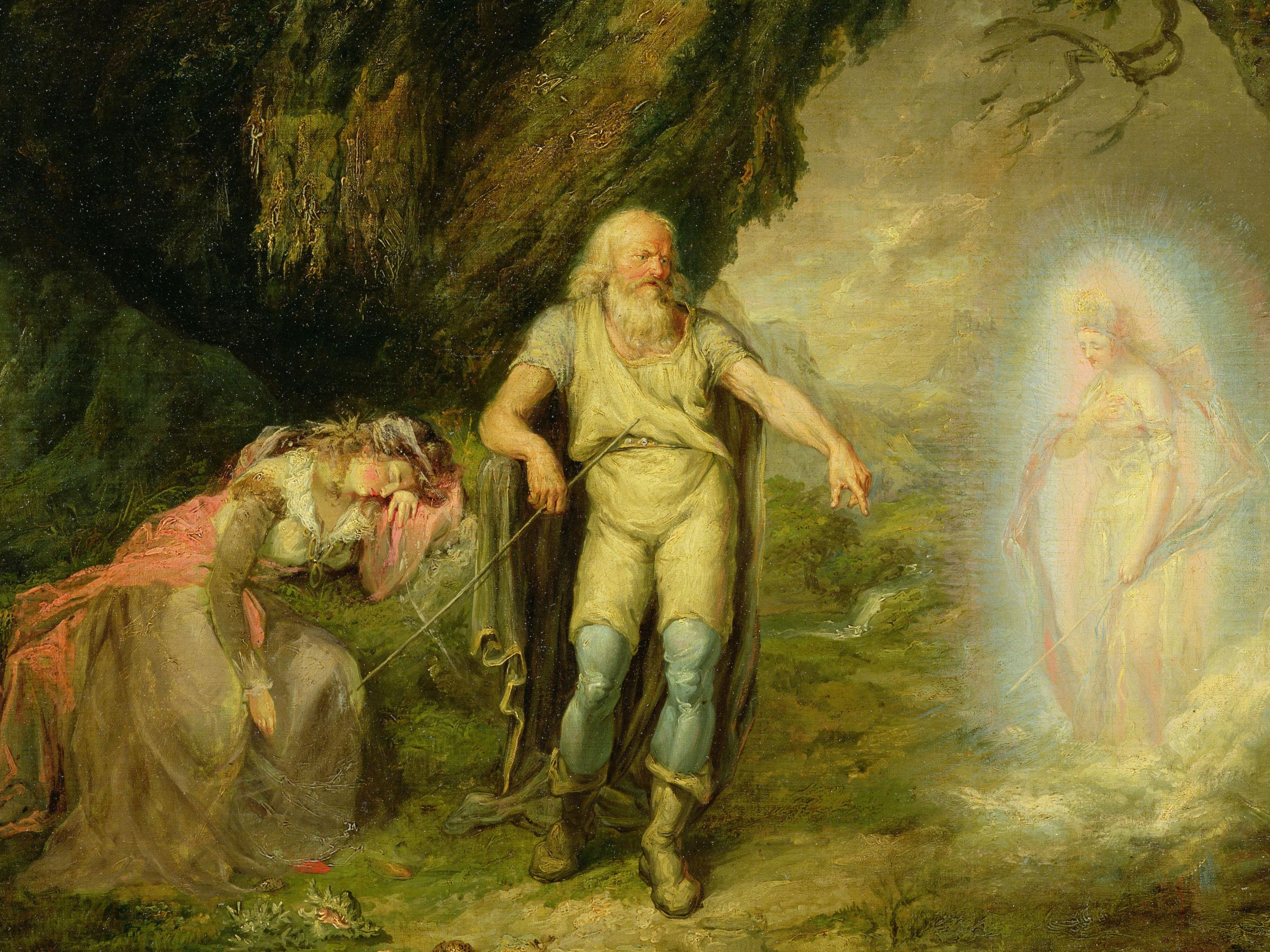
We have set it down as a law to ourselves to examine things to the bottom, and not to receive upon credit, or reject upon probability, until these have passed a due examination.
~ BACON’S NATURAL HISTORY.
SPECULATE: To consider by turning a subject in the mind and viewing it in its different aspects and relations; 2. In philosophy, To view subjects from certain premises given or assumed, and infer conclusions respecting them a priori.1
~ WEBSTER’S DICTIONARY
ANYTHING proposed at this late day as a new contribution to the history and purpose of Freemasonry should be accompanied by the best of credentials. And, yet, the very fact of its being new may preclude almost any evidence except what it bears within itself; so that the most one can do is to state what appears to be a truth, show how it has become such to him, and then rely upon it being apprehended by others.
In offering to the Craft this essay, which in its main proposition may seem altogether new, and perhaps revolutionary, all that is asked for it is the application of a primary Masonic rule of action. A strange brother coming into a community is not received as such on his own representation, but neither is he discarded. Let the same method by which he is duly accepted as a member of the Fraternity be applied to the views here expressed. It is the only way in which they will become true to other persons.
Should these views appear to any reader like an attempt to overthrow some of the most ancient landmarks of the Fraternity, the assurance is given that such is not the writer’s purpose. Rather it is an effort to restore to the Order the original patent or charter of Freemasonry, thus making it possible to verify or correct all its landmarks.
THE PURPOSE OF FREEMASONRY
In reflecting upon the work in Lodge meetings, and its exemplification in the lives of brethren, these questions often presented themselves:
- What is the purpose of it all?
- Is its full purpose understood?
- Are the results commensurate with the ideals of expectations?
And to answer these questions was not an easy matter. There is a feeling abroad, which must be wide-spread, as its expression can be traced through many Masonic journals, that something is wanting in the working of the Order; either there is a misconception as to its origin and object, or errors have crept into the exposition of the work. At any rate it seemed worth some study to ascertain whether there might not be a reasonable explanation for such conditions.
It is apparent to many of the most zealous and loyal Masons that the discussions and uncertainty as to the origin of their Order is placing it on the defensive, and is a handicap to its progress. In these days of libraries and general reading, the influence of standard works of popular education cannot be ignored. At the beginning of the article on “Freemasonry,” in the New International Encyclopedia, after a passing reference to the claims made for the antiquity of the Order, the statement is made that:
…the Order, however, is now considered to have been instituted about the early part of the eighteenth century – the pretensions put forth to a date coeval with the building of the Temple at Jerusalem, with King Solomon as its first Grand Master, being considered by those who have thoroughly investigated the subject as not worthy of credit.
In the new Encyclopedia Britannica, the article on “Freemasonry” was written by William James Hughan, recently deceased, a recognized authority on questions pertaining to Masonry. After noting that the Mother Grand Lodge is that of England, which was inaugurated in the metropolis on St. John Baptist’s day, 1717, and that a Grand Lodge was founded in Ireland in 1725 and in Scotland in 1736, he states:
It is important to bear in mind that all the regular Lodges throughout the world, likewise all the Grand Lodges, directly or indirectly, have sprung from one or the other of these three governing bodies named… It may be a startling declaration, but it is well authenticated, that there is no other Freemasonry, as the term is now understood, than what has been so derived. In other words, the Lodges and Grand Lodges in both hemispheres trace their origin and authority back to England for working what is known as the Three Degrees, controlled by regular Grand Lodges.
Yet, in face of all this the general work and reputation of the Order is based on the assumption that modern Freemasonry is something very ancient.
Studies extending over a number of years led to a generalization so remarkable that at first it seemed incredible, as no doubt it will to many other persons; but it grew so clear and definite, accounting for an origin of the Order consistent with the known facts, furnishing a reasonable explanation for the difficulties which beset it, and giving such an exalted conception of Freemasonry, that its truth could scarcely be questioned.
ARE THE TEACHINGS OF SHAKESPEARE AND FREEMASONRY IDENTICAL?
A point was reached where there was no avoiding the conclusion that the teachings and purpose of Shakespeare and Freemasonry are identical; that their origin was coincident, or nearly so, the Order being designed to prepare a special body of men to exemplify in actual life the principles embodied in the plays; and, reciprocally, the plays being intended to supply, with concrete illustrations, correct rules of conduct and life; and that both are parts of the grand and comprehensive philosophical scheme of Francis Bacon to regenerate the world and unite mankind into a universal brotherhood.
This view of Freemasonry places it at the very top of that vast scheme, making the institution a necessary integral part of the wonderful plan, without which it would have been incomplete. This view makes the purpose of the Order the sublimest conception of man, this being no less than to secure and maintain the freedom, the welfare and the very preservation of the human race, A little reflection will convince any member of the Order that its work has tended toward that end; but what has been done, notable as it has been, is hardly more than a beginning or earnest of what it was meant to accomplish.
To show how such conclusions were reached naturally is…
a chronicle of day by day,
Not a relation for a breakfast.
and yet it may be possible to give in a reasonably small compass at least an intelligible, if bare, outline of the course which led up to it.
It is but fair to remark that others have had suspicions or intimations of some close relation between Shakespeare and Freemasonry. The Worshipful Master of Bard-of-Avon Lodge claimed Masonic fraternity with Shakespeare, thinking that allusions to Masonic terms and customs are scattered through the plays, but chiefly on the strength of Hubert’s words in King John:
They shake their heads,
And whisper one another in the ear,
And he that speaks doth grip the hearer’s wrist.
That action being symbolic of the Sublime degree.2 Of course, this is but a slight and superficial argument, since such actions are not peculiar to Masons.
Frederick Nicolai, a learned book-seller of Berlin, advanced the belief that Lord Bacon, influenced by the writings of Andrea, the alleged founder of the Rosicrucians, and of his English disciple, Robert Fludd, gave to the world his “New Atlantis,” a beautiful apologue, in which are to be found many ideas of a Masonic character. But in his opinion the Order was not established until 1646, when a number of men met for that purpose. It is worth noting that this is the same year in which the Royal Society was founded. Had Nicolai understood the relation between Shakespeare and Freemasonry, and the part they bear in Bacon’s system of philosophy, no doubt he would have made a different guess.
In the effort to establish the truth of the main proposition – the identity of Freemasonry and Shakespeare – let all questions relating to their history be laid aside for the present, and let attention be directed to their actual nature. Long ago the wise man who, it is believed, knew all about these subjects, said: “The nature of everything is best considered in the seed.” That is, by beginning with the elements of which it is composed. This course is pursued in all the investigations of modern science, and it should be the proper course for Speculative Masonry. That is the significance of the term Speculative.
It will hardly be questioned that the whole system of Freemasonry is the expansion of some principle, some fundamental idea, just as truly as the mighty oak has developed from the germ within the acorn. Now, the germ idea of Freemasonry is contained in one paragraph of the Charges of a Free-Mason (1723), and in the first line:
A Mason by his tenure is obliged to obey the moral law.
And as the embryo of the acorn sends roots down into the ground for the sake of the tree that grows above, so the observance of the moral law is to the end that mankind may be united into one brotherhood – a high ideal, never to be attained, but still the goal toward which to strive.
While the main part of this Book of Constitutions pretends to trace the history of Masonry from the earliest period of the world’s history, the least reflection will convince one that all this has nothing to do with speculative Masonry. Almost all the book having reference to Freemasonry may be said to be in that one paragraph, which is here given:
A Mason is obliged by his Tenure to obey the moral Law; and if he rightly understands the ART, he will never be a stupid ATHEIST, nor an irreligious LIBERTINE. And though in ancient Times Masons were charg’d in every Country to be of the Religion of that Country or Nation, whatever it was, yet ’tis now thought more expedient only to obligate them to that Religion in which all Men agree; leaving their particular opinions to themselves; that is, to be GOOD MEN AND TRUE, or Men of Honour and Honesty, by whatever Denomination or Persuasion they may [be] distinguish’d; whereby Masonry becomes the Center of Unity, and the means of conciliating true Friendship among Persons that must else have remained at a perpetual distance.
This paragraph may be summed up in a single phrase, which fully expresses the vital spirit of Freemasonry – The Majesty of the Moral Law.
Professor Henry Van Dyke has made the splendid generalization that the aim and purpose of the Shakespearean dramas also is to teach the Majesty of the Moral Law. It will be found, when the plays are studied from this viewpoint, that they form a comprehensive and consistent body of ethics or moral philosophy, the term being used in the Baconian sense as embracing politics, ethics, as commonly conceived, and logic; and that this system is entirely in harmony with the teachings of Freemasonry. It may be more exact to say that Freemasonry is a training school to make the realization of this philosophy possible.
Perhaps the simplest and yet most satisfactory definition of Freemasonry is Dr. Hemming’s, that…
Freemasonry is a beautiful system of morals, veiled in allegory and illustrated by symbols.
WHERE SHAKESPEARE AND FREEMASONRY MEET
Shakespeare may be also defined as a beautiful system of morals, veiled in allegory and illustrated by fictitious and historical personages. Further, one play, The Tempest, which stands first in the collected plays, is an epitome, a miniature of the whole. The argument of our main proposition – the identity of Shakespeare and Freemasonry – may be based upon the proper interpretation of this play. One primary idea must be kept in mind: these plays are works of art; works of literary art, which, next to music, is the highest art; and again, in the form of the drama, which is the highest form of literary art.
And as Alfred Noyes has so aptly expressed it, “The content and import of a work of art are not to be weighed in the same way as those of a philosophic system or a work of science.” It is to be realized more as a personal experience, not so much comprehended by the mind as apprehended by the soul. Let it not be thought strange, therefore, if for many persons The Tempest has little significance. For that matter, to how comparatively few persons is Shakespeare anything more than a name. The reason is to be found in our one-sided, unnatural and, in many respects, false education. Others can place themselves where Shakespeare and Freemasonry meet, if they but free their minds from traditions and prejudices.
Hence, to read these plays as mere stories in dramatic form, filled in with many wise reflections, is to miss their real character. The Tempest may be read simply as such a story, and even as having a moral purpose. Sir Edward Strachey says quite aptly that it is “a mimic, magic tempest which we are to see, a tempest raised by art, to work moral ends with actual men and women.”
But he fails to show how it is to bring about such a state in the actual affairs of men, say of our day or of any time. The play contains hints suggesting that it is meant to be of universal application. It will yet be clear that this play can be fairly interpreted as an allegorical drama, summing up the whole method of Francis Bacon’s philosophy, and especially his moral philosophy, as it is to affect in actual life the individual, and all the relations which men and women sustain toward each other, from the primary relations of the family to the highest, which is that of government. And when so interpreted it will be found that it is also the philosophy of Freemasonry.
In a small frame hanging on one of the beautiful marble columns in the Library of the Masonic Temple at Philadelphia, PA., are a number of Masonic Landmarks, which may be accepted as a fair statement of some fundamental principles of Freemasonry. They are reproduced here.
THE MASONIC LANDMARKS
- The Moral Law is Masonic Law.
- Obedience to lawful authority is inculcated by Masonry.
- Masonic qualifications are mental, moral, and physical.
- Masonic preferment is grounded upon real worth and personal merit only.
- Charity should be the distinguishing characteristic of a Mason.
- The will of the majority governs for the good of the whole.
- Secrecy is indispensable in Masonry.
- The Master is the head of the Lodge.
- In his absence, the Wardens preside according to rank.
- The Grand Lodge is supreme in its sphere of jurisdiction.
- The approbation of God is the highest Masonic honor.
Comparing these Masonic Landmarks with The Tempest, it can be seen how they are woven into the word-pictures of the play.
FREEMASONRY AND THE TEMPEST
As the Moral Law forms the first Landmark, so the main theme of the play is illustrated by the story of the violation of the moral law by the false Duke and his confederates, and their repentance; with the result that a reconciliation of all the persons is brought about, and they agree to live in harmony and unity.
The second landmark is the recognition of lawful authority. Now, the very first scene of the play teaches the same lesson. In the first twenty-seven lines is embodied the whole theory of authority and obedience, as the basis of true liberty. Notice, the cheerful obedience of the sailors to the commands of their proper superiors, and the sudden change to sullen opposition to those who had no lawful right to order them about. In the same way it can be seen how the other general abstract principles of Masonry are illustrated as the play progresses.
But it is desired to call special attention to the distinguishing term of Freemasonry – the word Free. Freedom is the enveloping, penetrating atmosphere of the play as a whole, and of every part of it. It is the necessary life-giving principle for the development of the individual and society as therein portrayed. The idea of freedom is present in almost every action of importance throughout the entire play, and forms the theme of a postscript, in form of an apologue. The simple wish of Caliban, type of primitive man, or of the animal becoming human, is for his freedom; and it forms the last wish of Prospero, type of the highest developed man. But above all, the promise of freedom and the hope of attaining it formed the very life of Ariel, and was the spur to all his activity; and Ariel, it is believed, symbolizes the spirit of man.
To analyze the play in detail would make this paper too long. Let this marvelous drama of The Tempest be interpreted as an allegory expressing in the form of literary art what Bacon meant to express in sculpture by the statue of Orpheus, which he erected in his grounds of Gorhambury. The result will show whether it bears such an interpretation and has any relation to Freemasonry.
Bacon inscribed the statue, Philosophy Personified. He interpreted Orpheus as denoting learning, and the ancient fable as a picture of universal philosophy. The music of Orpheus was of two kinds: one that appeased the infernal powers, he applied to natural philosophy, which seeks to understand and control the physical world; the other, which draws together men and beasts, to moral and civil discipline. In other words, Bacon understood Orpheus to have been to the Greeks a civilizing hero, who had induced their ancestors to renounce cannibalism, and taught them the arts and sciences and how to live together. This, Bacon thought, was the true Orpheus music or harmony.
Now, The Tempest presents to us a picture of similar sordid, selfish and warring social conditions transformed into a society where reparation has been made for all injustice, where no man is to “shift” for himself, but where each shall shift for the others, and where, as a result, peace prevails. “The supreme harmony prevails when all things are in harmony with the moral order.”
The events which brought this about culminated in the marriage of Miranda, the admired daughter of Prospero, to the prospective reigning prince. This marriage, with its attendant happiness, is emblematic of the prosperity and peace of a state which would accept Bacon’s philosophy, symbolized here by Miranda. It will be noticed that she is the very embodiment of pity, sympathy for her fellow-men, as Ariel is the embodiment of thought, especially in its highest manifestation, that of the creative imagination.
Herein, lies the explanation of the figure which represents Freemasonry as spanning the world with its arms of light and love and benevolence. It is indeed a picture of an ideal civilization, of a state requiring a high degree of education to be even approximately realized. This is the invisible Temple, continually being built.
The teachings of Freemasonry lead in this same direction, and I submit that the Order was instituted to bring to pass just such a condition of society, in which Masons are to be the living stones. It was meant to be a civilizing force, working throughout the whole world. The universal application of its principles and teachings attest to this fact. These principles in their general form are embodied in The Tempest, while in the other plays they are exemplified as they apply to the manifold conditions of human relations. It should be said that these plays are extra-institutional, something like the post-graduate studies of schools and colleges. They have no immediate connection with the secret work of the Lodge.
Freemasonry is frequently conceived as a religion. The language of the Ancient Charges implies that it may be so considered. Every religion has its body of doctrines, its votaries, and an organization through which, by means of rituals and worship, these doctrines are taught to its followers and disseminated among outsiders. In Freemasonry, the Lodges and the secret work correspond to the religious organizations and their rituals. But Freemasonry has no body of doctrines. Freemasonry is not a matter of belief. Its members are to think and feel and act. And, in lieu of a body of doctrines, I name the peerless plays of Shakespeare as embodying and exempliplying the principles which are to serve as a guide and inspiration of Masons; that is, beyond what is inculcated by the secret work of the Lodges.
FREEMASONRY AND THE WINTER’S TALE
If an explanation is asked how modern Freemasonry was connected with Operative Masonry, the answer is that the ancient Institution was taken as the wild stock on which the new was grafted, exactly as each of the plays was based on some older tale or legend. The process is set forth quite plainly in that charming play, The Winter’s Tale, where the author says:
We marry,
A gentlers cion to the wildest stock,
And make conceive a bark of baser kind
By bud of nobler race; this is an art
Which does mend nature – change it, rather; but
The art itself is nature.3
The great secrecy and mystery which surrounded the early history of the Order was necessary to establish it, but this should no longer hold in our day.
It may be that all this is well known in the higher Masonic circles, but kept hid, like so many other things, from motives of prudence. But if such a course seemed necessary at one time in the history of Freemasonry, it is difficult to see a reason for continuing it. If it is not known, then the conviction is expressed that a careful examination will verify the discovery. And its importance cannot be questioned or exaggerated.
Freemasonry makes a private appeal to all that is best, noblest and most unselfish in man; and to stimulate the interest by a certain amount of mystery, secrecy of symbolism is well and good. But this has its limitations. In these days many men have advanced beyond such a stage in their education. To them the actual truth cannot fail to appeal. It will solve not only the perplexing question of the authorship of the plays, but in large measure their real meaning, and furnish a practical way of relating them to men’s lives, thus making them what they were meant to be – a vital, educating force.
It will explain the tremendous spurt of civilization in England during Bacon’s life-time, and make clear who was the intellectual dynamo that furnished not only the light and power of that wonderful period, but the impulse which led to our present advanced stage of civilization. It will confirm the opinion that Freemasons were meant to be the special guardians and conservators of the richest and noblest treasure intended for the welfare of mankind that the human mind ever collected. It will establish the fact that in modern times lived a philosopher, Francis Bacon, the freest, wisest, tenderest of men, who for three centuries has met the common fate of philosophers – to be misunderstood and maligned – but who planned a scheme of philosophy surpassing all that ever preceded; and who also made provision for its dissemination and preservation among men.
Let Freemasonry acknowledge its paternity, which will be found to have been noble in name and most noble in fact, and claim its inheritance, with its attending responsibilities, and it will have the means to solve the difficulties and dispel the fears felt by many members and expressed so forcibly by the good brother, Bishop Charles T. Williams, of Michigan, when he said:
I have often felt that Freemasonry should be something more than a mere theatrical exhibition, with some technical charity and a good deal of social intercourse; but I do not see just how its moral forces can be effectually concentrated and directed.
It can also meet the criticism, and fufill the prophecy presented by Oswald Wirth,4 who declared that our institution has not yet found itself, that it seeks itself like the youth who is forced to recognize himself, and take knowledge of what he really is. He predicts that an epoch will come forcibly, when all that is respectable will be universally respected – when forms shall be appreciated and scrupulously observed no more by instinct or superstition, but in reason, for what they contain as living.
Let Freemasonry but find itself – and this is possible by the author’s last will and testament, The Tempest – and there is nothing that can prevent it from becoming the world-wide civilizing force which it was designed to be, becoming the most potent factor in dispelling ignorance and superstition, in bringing about a fuller freedom and development of man, and in replacing the selfishness, deceit and inhumanity, which unchecked must eventually destroy our civilization, by the rule of justice and love, which alone can unite mankind into a universal brotherhood.
Written by Bro. William Norman M’Daniel and originally published in THE AMERICAN FREEDOM – JANUARY 1912.
1 a priori, “from the cause to the effect.”
2 John Weiss, Wit and Humor of Shakespeare, p. 248.
3 Act IV, Scene 4.
4 THE AMERICAN FRFEMASON, August, 1911.
Freedom: An Illusion

Do you think you are free? Why do you think this? Does this title anger you? Bother you? Not concern you at all? My contention is, as inflammatory as it may sound, the vast majority of us are not free.
We have rationalizations for why we disagree with this statement. Of course we’re free, of course I can move and think and say what I wish to, I have perfect freedom. Depending on the country in which we live, we might feel more or less of this type of freedom. In extreme situations, we may feel we only have freedom of thought. However, most persons from North America and Europe fall into the “I have freedom” category.
Let’s put these convictions to the test. How do you answer these questions, yes or no?
- I can change my job / career at any time. I have the freedom to choose the work I desire. I never make the excuse of ignorance, limitations, or ability.
- I can attend a meeting or visit with a friend or make time for a hobby any time I would like. I never use the excuse of “I’m too busy.”
- I choose my own beliefs and my own thoughts about how I will act, think, or be from now on. I never use the excuse of “this happened to me in my past.”
- I can speak whatever I’d like to speak, and voice that opinion publicly and to whom I choose. I never censor myself in front of others for any reason.
While not everyone has all of these float to their consciousness, I am guessing that at least one of these statements brought a rebuttal to your mind, if not lips. It’s easy to dismiss these statements in our own minds. I have children, and I can’t possibly make time for a hobby ahead of my children. I can’t change my manufacturing job into a tech job because I don’t know the first thing about computers. I am always afraid of water because I never learned to swim. I am nervous about flying because of airplane crashes. I have no money, so I cannot leave this town/home/relationship.
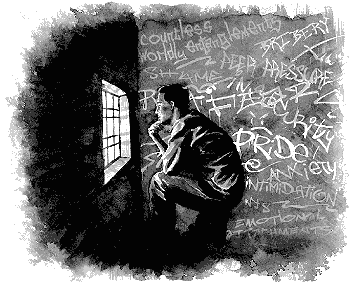 We move through our daily life wrapped in chains. These chains are mental, physical, and emotional chains; visible and invisible, they are equal in their grasp. This is one of the tenants of Freemasonry – that the applicant must be free of mind, body, and soul. But, really, who is free? It is because we can deceive ourselves that we might even apply to an organization that requires freedom. We believe ourselves to be totally and utterly free. However, if you rebutted any of the statements above, with a “well, but….” you are not free.
We move through our daily life wrapped in chains. These chains are mental, physical, and emotional chains; visible and invisible, they are equal in their grasp. This is one of the tenants of Freemasonry – that the applicant must be free of mind, body, and soul. But, really, who is free? It is because we can deceive ourselves that we might even apply to an organization that requires freedom. We believe ourselves to be totally and utterly free. However, if you rebutted any of the statements above, with a “well, but….” you are not free.
This might seem very black and white to some; I do not mean it to be so. I believe Freedom is a journey, and not too far off of the journey of our lifetimes. The search for that which is greater than ourselves is a journey of Freedom, is it not? Most of us live with those chains, in fear, without even thinking about it. We worry so much about the oppressor that we fail to see that the oppressor is ourselves, the things that truly hold us back. Perhaps we can look at the “oppressor” in another way.
I began doing Crossfit (a type of very intense physical weight, endurance, and cardio training) about thirteen years ago. I was not very active before that but I also prided myself on being able to ensure pain, push myself, and move forward through tough exercise and enjoy the success. I began doing the circuits and our trainer continued to increase the intensity. On one particularly gruelling day, we did a circuit of five activities, the last of which was rowing for 1500 meters. We did the circuit three times. Last circuit, last activity, rowing, I was exhausted. I kept telling myself in my head that I couldn’t do it, that I couldn’t make the time. I remember gasping for air, pushing myself to the point of feeling like I was going to throw up right there all over the machine. About 2/3 of the way through, I realized that I had been telling myself that I couldn’t do it. I changed the dialogue, revised the message, telling myself that of course I could do it, that the pain was temporary, and that there wasn’t anything stopping me except my mind. I shifted gears in my brain. It felt almost like a literal shift of gears, as I pushed on to the end. I never threw up. I sweated like a pig, but I made it. I had achieved the goal.
I realized then and there that I was in chains. I was not free and that my own mind had created the illusion that chained me. I could choose differently, if I learned a different way. If I expanded my mind. If I opened to experience.
Choice. That is the activity which binds us. It is also an illusion.
We choose every day. We choose to get up, to go to work, to feed ourselves, to shower, to help our children, to educate ourselves: we choose to do everything we do. We choose to eat cereal when we know that an egg is better for us, because we chose an easier path. We didn’t want to dirty a pan. We didn’t want to take the time. This cereal is good enough. It will be fine. We humans are master rationalizers. We rationalize that we have a choice in the matter when, in fact, we’re really moving to the universal law of entropy. In 1803, Lazare Carnot said, “in any natural process there exists an inherent tendency towards the dissipation of useful energy.” Humans fit nicely into this category.
What we once call choice falls, eventually, to what we deem binding. I have heard the argument time and again that children preclude certain activities. Focusing on education precludes certain activities. “I can’t” is either the response of the enslaved individual or one who has forgotten that he or she has made the choice that put them on their path. What we put first in our lives is that which we deem important. Let’s face it – when you choose to be with one person and shun another, you deem the first person more important to you than the second. Choices involve priorities. There isn’t shame in it. Yet don’t deny it, either. Should your choices be to the exclusion of all else that makes up our lives? Perhaps. Perhaps not. Do you believe you have the freedom to decide? Can you make that choice? Can you live with it and embrace it, without shame or fear of judgment? Priorities change. Can you understand where the chains are, and free them?
 I think humans believe that freedom and choice are linked, and that freedom equates to having a choice. Maybe this is true, and maybe it is not. Here I will contradict myself. I believe that in the paths of our lives, we choose different roads because of who we are at that time. That experience in and of itself forms our destiny. In this, when we choose, we really have no freedom because we are not free from ourselves. We are who we are. If we could do something differently, we would have. We would have chosen differently. We blame parents for not treating us a certain way or teaching us to be different in the world. Yet, they did what they were able to do. If they could have chosen differently, they would have. They are who they are because of their choices.
I think humans believe that freedom and choice are linked, and that freedom equates to having a choice. Maybe this is true, and maybe it is not. Here I will contradict myself. I believe that in the paths of our lives, we choose different roads because of who we are at that time. That experience in and of itself forms our destiny. In this, when we choose, we really have no freedom because we are not free from ourselves. We are who we are. If we could do something differently, we would have. We would have chosen differently. We blame parents for not treating us a certain way or teaching us to be different in the world. Yet, they did what they were able to do. If they could have chosen differently, they would have. They are who they are because of their choices.
We are who we are, and when we come to the door of Freemasonry, at the porch with pillars and high, lofty virtues, we think we have made the choice to be there. We believe that when presented with the option of Freemasonry, we have decided to apply. I say that somewhere, the authors of the application process laugh. They know that the applicant is not truly free but that he has some inking and spark of what it means to be free, and perhaps the knowledge that he is not free but seeking. We are bound by who we are and who we are is a result of the choices we make. When you choose the path of your destiny, you’re all in. There is no turning back, no do-overs. As Joseph Campbell said, “Refusal of the summons converts the adventure into its negative.” Freemasonry is an initiatory, life-changing path. When you arrive at the door, either you are ready or you’re not. The person that shows up is presented a new destiny, if they are ready to take it.
 We humans get very stressed over the “right” path to take. Do we step forward? Do we step sideways? The core of the decision lies within who we are. Do we know that person? Do I understand what motivates, inspires, and enlivens the inner me? Do I truly know myself? Most of us say yes, when the answer is really no. We do not have the courage to embrace our life path and shake off what isn’t us. We circle back, again, to small choices. Rationalizations. The truth that we are truly not free. Freedom really isn’t about choices, I think, but about knowing yourself and being honest with yourself. It is about allowing your choices to be sometimes incorrect, learning, adjusting, and succeeding in whatever you do. Freedom is knowing what you are, owning what you are, and knowing that you cannot be any different than you are. As Oscar Wilde said, “Be yourself. Everyone else is taken.”
We humans get very stressed over the “right” path to take. Do we step forward? Do we step sideways? The core of the decision lies within who we are. Do we know that person? Do I understand what motivates, inspires, and enlivens the inner me? Do I truly know myself? Most of us say yes, when the answer is really no. We do not have the courage to embrace our life path and shake off what isn’t us. We circle back, again, to small choices. Rationalizations. The truth that we are truly not free. Freedom really isn’t about choices, I think, but about knowing yourself and being honest with yourself. It is about allowing your choices to be sometimes incorrect, learning, adjusting, and succeeding in whatever you do. Freedom is knowing what you are, owning what you are, and knowing that you cannot be any different than you are. As Oscar Wilde said, “Be yourself. Everyone else is taken.”
Is the Freemason free? Yes, because he knows that he is not.
The Meaning of Solidarity
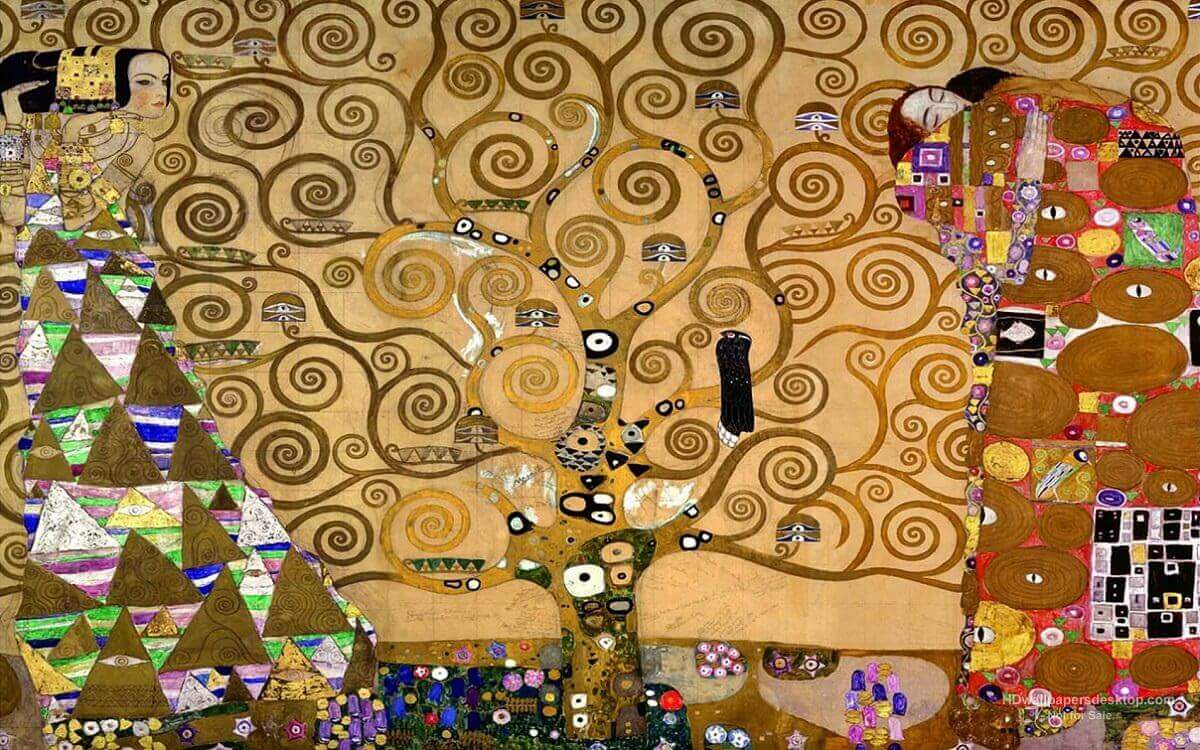
Every civilization is infused with the idea, myth, or story of the Tree of Life. The Tree of Life is the only multi-cultural folklore that has a consistent meaning regardless of ethos or time period. In these stories, the tree is the bringer of Wisdom, and all living creatures – divine and mortal – rest in its branches and leaves. In some cases, as in Ancient Persia, human beings are the structure of the Tree, providing love and wisdom for all humanity and life. In some traditions, the Tree represents the pathways to God or is the manifestation of the divine love of which we are all a part. Life entwines with itself, regardless of species or form, creating a living, breathing connection of all physical manifestation of the universe.
This is solidarity.
From the Secret Life of Trees, we now know that trees –
“of the same species are communal and will often form alliances with trees of other species. Forest trees have evolved to live in cooperative, interdependent relationships, maintained by communication and a collective intelligence, like an insect colony. These soaring columns of living wood draw the eye upward to their out spreading crowns, but the real action is taking place underground, just a few inches below our feet. All trees are connected to each other through underground fungal networks. Trees share water and nutrients through the networks, as well as communication. They send distress signals about drought and disease, for example, or insect attacks, and other trees alter their behavior when they receive these messages.”[i]
This is solidarity.
I do not think it is a coincidence that trees are representative of brotherhood and solidarity. We seem to be familiar with the idea of brotherhood but not of solidarity. Solidarity wasn’t an official word until the early 19th century, when Napoleon used it in his Civil Code. The idea of solidarity, however, has been around since there have been human beings. Solidarity is the unity, or agreement of feeling or action, amongst individuals with a common interest. It is mutual support within a group, whatever that group may be. It derives from the Latin word solidus meaning “the whole sum.” The sum of all the parts.
I’ve been examining the word Charity and the word Solidarity, and in many Masonic rituals, the words are used in the same ritual passages but evoke very different meanings. Charity, in our modern mindset, has the overtones of pity and lack; it implies the helpless in need, the weak needing strength, and the silent needing a voice. Charity is from a perspective of superiority, of have versus have not. For better or worse, our North American culture has turned charity into a near-dirty word. Solidarity, on the other hand, reminds us that action and equality are the motivations toward helping one another.
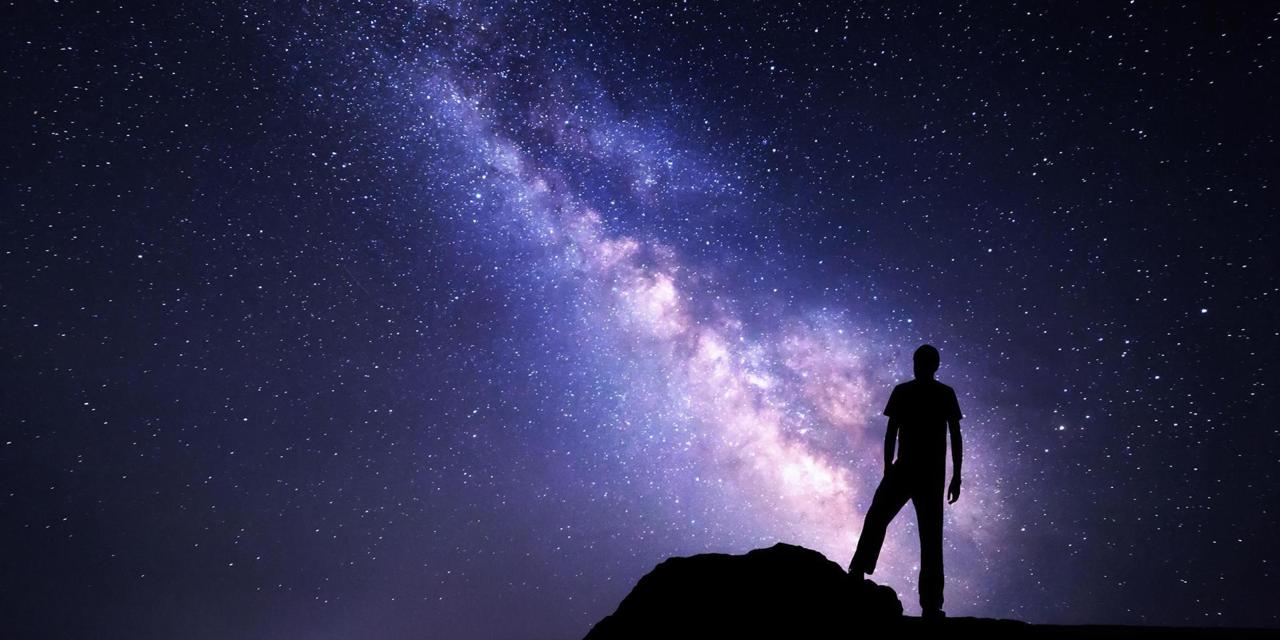 As the trees have informed us, solidarity is “the brotherhood of deeds not the brotherhood of words.”[ii]
As the trees have informed us, solidarity is “the brotherhood of deeds not the brotherhood of words.”[ii]
We have far forgotten that the human race is the only “race” to which we belong. Unity. We have forgotten that the good of the many outweighs the good of the one. Service. We have forgotten that through all the esoteric teachings, through all the world’s religions and philosophies, there stands one truth: we are all one. Humanity.
Humans, being human, have learned segregate and discriminate. We discriminate which clothes should stay in our closet, which friends are good for us, which foods go into our bodies. We segregate our clothes closet by color or function, we segregate our libraries by subject, and we can’t help but judge and segregate those around us. Does a baby not discriminate the non-mother from the mother? Does the herd of cows segregate themselves from the hunters? Humans. Animals. We judge and discriminate and segregate every single day. These words are not evil words. Like the gun or the sword, they are tools to be used precisely and thoughtfully.
We fail in our humanity when we fail to recognize that we discriminate against our fellow human beings with a mindset of fear and hate. There are myriad ways to segregate ourselves, and we do so without asking ourselves why or if it is even in our nature. We might reflect that we were once primitives who needed to band together against nature’s harshest enemies to ensure our survival; and banding together against “other” was necessary. When we banded against other humans, we began a downward spiral that we have been fighting against ever since. And yet, we also realize that the spirit of cooperation can live within us and provide us a better way of life. Albert Schweitzer said, “The first step in the evolution of ethics is a sense of solidarity with other human beings.”
We divide ourselves by age, gender, class, religion, culture, geography, nation, and race. We divide by hair color, eye color, clothing, schooling and hobbies. Someone is either of “us” or “not us.” We do this for many, many reasons – none of which seems valid to me. We see the differences but rather than celebrate them, we choose to fear. We choose fear because we do not see that humanity is one race, one being, one egregore.
We know that “in the beginning was the Word, and the Word was with God, and the Word was God.” Logos, the breath of life in the divine universe, is God made manifest. The original translation of Sahidic Coptic, the saying here is actually “In the beginning existed the Word, and the Word existed with God, and God was the Word.” This Word, Logos, is the exhalation of breath, which is the spirit of animus, the divine will, the supreme knowledge.
According to Rudolf Steiner, once primitive man evolved, he began to utter articulate sounds — the words of speech. This great transformation, of learning to breathe and speak, was of cardinal importance to man. In Genesis (II.7), we read:
“And the Lord God… breathed into his nostrils the breath of life; and man became a living soul.”
This passage describes the period when the gills once possessed by man changed into lungs and he began to breathe the outer air. Simultaneously with the power to breathe, he acquired an inner soul and with this soul, the possibility of inner consciousness, of becoming aware of the self-living within the soul.
“When man began to breathe air through the lungs, his blood was invigorated and it was then that a soul higher than the group-soul of the animals, a soul individualized by the Ego-principle, could incarnate in him to carry evolution forward to its fully human and then divine phases. Before the body breathed air, the soul of man could not descend to incarnation, for air is an element enfilled [sic] with soul. At that time, therefore, man actually inbreathed [sic] the divine soul which came from the heavens. The words of Genesis, in their evolutionary sense, are to be taken quite literally. To breathe is to be permeated with Spirit…When we breathe, we commune with the world-soul. The inbreathed [sic] air is the bodily vesture of this higher soul, just as the flesh is the vesture of man’s lower being.” [iii]
 Humans breathe in spirit. All humans were born to achieve the same purpose – being conscious together. There was no differentiation when we became ensouled – all matter is one – everything that has breath has soul. Who is even to say that rocks do not breathe in their own way? I digress… All living creatures serve the same purpose, as Steiner said, and that is to be permeated by Soul. No race, gender, or any other segregating characteristic were used to determine who would get a soul and who would not. If all are the Word, the divine Logos, then all are one.
Humans breathe in spirit. All humans were born to achieve the same purpose – being conscious together. There was no differentiation when we became ensouled – all matter is one – everything that has breath has soul. Who is even to say that rocks do not breathe in their own way? I digress… All living creatures serve the same purpose, as Steiner said, and that is to be permeated by Soul. No race, gender, or any other segregating characteristic were used to determine who would get a soul and who would not. If all are the Word, the divine Logos, then all are one.
For every Freemason, the call of unification is strong. It is challenging. It is like breathing new air. It is our purpose to erase the lines that divide – in all things. There is one humanity, one country, one earth, one everything. If it is all made of one Logos, it is one. Single. The sum of all the parts. Solidarity.
From an 1888 edition of “The Esoteric” magazine, we find the following paragraph from another book titled “Mysteries of Magic,” by Eliphas Levi.
“According to the Kabbalists, God creates eternally the great Adam, the universal and perfect man who contains in a single spirit. All spirits and all souls Intelligences therefore live two lives at once; one general which is common to them all and the other special and individual. Solidarity and reversibility among spirits depend therefore on their living really in one another -all being illuminated by the radiance of the one, all afflicted by the darkness of the one. The great Adam was represented by the tree of life which extends above and below the earth, by roots and branches. The trunk is humanity at large, the various races are the branches and the innumerable individuals are the leaves. Each leaf has its own form, its special life and its share of the sap but it lives by means of the branch alone as the life of the branch itself depends on the trunk.
The wicked are the dry leaves and dead bark of the tree. They fall, decay, and are transformed into manure which returns to the tree through the roots. The Kabbalists also compare the wicked or reprobate to the excrement of the great body of humanity. These excretions serve as manure to the earth which brings forth fruits to nourish the body thus death returns always to life and evil itself serves for the renewal and nourishment of good.
Death thus has no existence and man never departs from the universal life. Those whom we call dead still survive in us and we subsist in them; they are on the earth because we are here, and we are in heaven because they are located there. The more we live in others, the less need we fear to die.”
A Freemason will find these words intimately familiar. To live in Service, to humanity, not in subjugation, is our purpose. The more we live in others, the more we live in Solidarity, the perfecting of humanity continues. What can be more perfect than becoming the One we were meant to be? This quote above implies that Solidarity extends to not only the living on Earth but to those that have passed to another realm, whether we call it heaven, Nirvana, or even Hell. We are all connected, and life is never ceasing. We take our influence, in some measure, from them – by legacy or intuition – and continue to make them manifest in this realm.
“We are all members of one body and the man who endeavors to supplant and destroy another man is like the right hand seeking to cut off the left through jealousy. He who kills another slays himself, he who steals from another defrauds himself, he who wounds another maims himself; for others exist in us and we in them.”[iv]
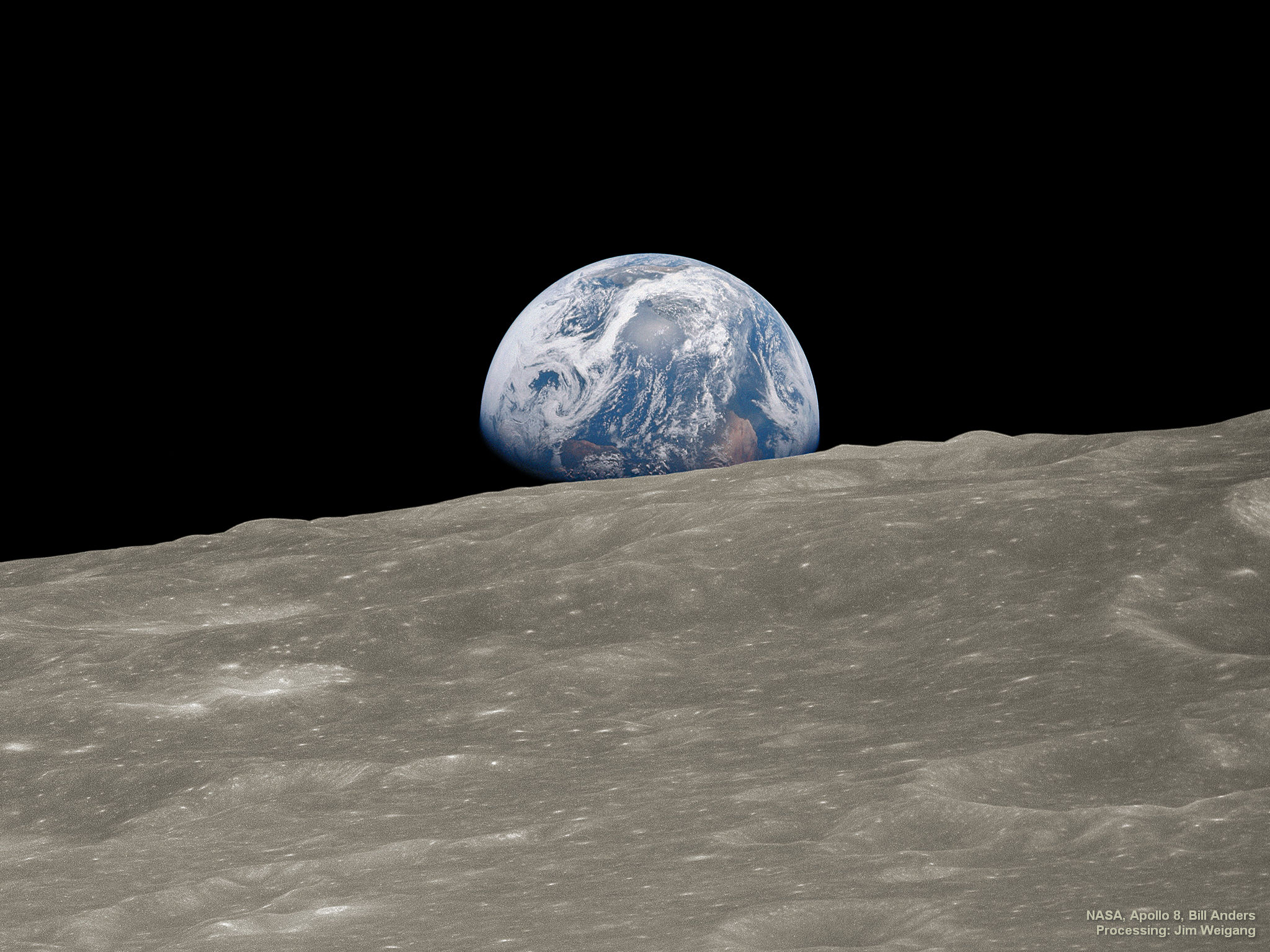 We must, as a species, learn to place ourselves within the life of others else we cease to grow. This work is not for any form of personal gain, no glory, no splendor.
We must, as a species, learn to place ourselves within the life of others else we cease to grow. This work is not for any form of personal gain, no glory, no splendor.
It is truly for in the service of all human beings – what we were, we are, and we will be. If everyone isn’t beautiful, then no one is… Beauty is a way to see the world, not to judge it.[v]
Finally, from Joni Mitchell:
“In a highway service station
Over the month of June
Was a photograph of the Earth
Taken Coming back from the Moon
And you couldn’t see a city
On that marbled bowling ball
Or a forest or a highway
Or me here least of all…[vi]“
This is solidarity.
[i] Hidden Life of Trees, Wohlleben, Peter, March 2018
[ii] Transnational Solidarity: Concept, Challenges, and Opportunity, Helle Krunke, Hanne Petersen, Ian Manners – 2020, from a 2012 article, referenced on June 6, 2020
[iii] Rudolf Steiner, The Logos and The Word, from The Essential Rudolf Steiner, Google Books, accessed June 1, 2020
[iv] Solidarity, The Esoteric, “Mysteries of Magic by Eliphas Levi,” September 1888.
[v] Andy Warhol, Quote
[vi] Joni Mitchell from the song “Refuge of the Roads”
Reforming the Gods?

I was participating in an Esoteric Book study group last week when I heard the phrase, “reforming the gods.” I’ve heard, often, about how God reforms us, how theology can be reformed, but not about how humans reform the gods. It sounded like hubris, to me. What does one mean when they say, “we or he is attempting to reform the gods?”
To reform something is to take it apart, piece by piece, and use the material to create some new form, some new “thing” that is ostensibly better than the old “thing.” To reform the gods, in the simplest of terms, is to take what we know of our gods and create something new from their forms, from their essence. That sounds like no easy task. We are reshaping all that we understand about the gods, or God, and forming it into something we think best. Again, hubris.
The question is, how does the human being reform their gods? Perhaps simple devotion turns into radical fanaticism. Perhaps, they do it through their own misinterpretation of the mores, customs, and dogma of religion or society, forming the rules to bend to their will. Their desires. They mix the idea of the divine will with their own, seeking to meld them, or seeking to justify them?
Joseph Campbell, in The Hero with A Thousand Faces, in the section on Initiation, states:
Totem, tribal, racial, and aggressively missionizing cults represent only partial solutions to the psychological problem of subduing hate by love; they only partially initiate. Ego is not annihilated in them; rather it is enlarged; instead of thinking only of himself, the individual becomes dedicated to the whole of his society. The rest of the world…is left outside his sympathy and protection because (it is) outside the sphere and protection of his god. And there takes place, then, that dramatic divorce of the two principles of love and hate which the pages of history so bountifully illustrate. Instead of clearing his own heart the zealot tries to clear the world.
In thinking about this, I wonder if the way humans use language to express their thoughts affects our theology in much the same ways that language and biology and culture are inextricably linked. We may think there is evolution of biology but isn’t there evolution of culture as well? And if they are both evolving, we, as humans and as part of it, are evolving language to keep pace. It makes sense that our theology would evolve to survive. Surely it is adaptation that creates the lineage, not merely perseverance. Yet, evolution comes in many forms, and we know species have evolved themselves extinct: not their their own will but by the vehicles of adaptation to hostile and temporary environments. Extremes cannot last.
 Freemasonry, in some odd ways, has not yielded to that adaptation of culture and language; yet, in some ways, it has. We have the dusty Freemasonry of old which contains the ritual forms unchanged from time immemorial. It is the ritual kept pristine, trappings kept shiny, and only the briefest whiff of questioning outside of the aforementioned monitors and rituals. It is a Freemasonry that is solid in its roots but has nothing above ground where the Light can shine on it.
Freemasonry, in some odd ways, has not yielded to that adaptation of culture and language; yet, in some ways, it has. We have the dusty Freemasonry of old which contains the ritual forms unchanged from time immemorial. It is the ritual kept pristine, trappings kept shiny, and only the briefest whiff of questioning outside of the aforementioned monitors and rituals. It is a Freemasonry that is solid in its roots but has nothing above ground where the Light can shine on it.
Then we have a Freemasonry that is on the cusp of something larger than its predecessors. Like evolution, institutions keep pace with culture. In this, Freemasonry is global. It is foundational that Freemasonry uses symbols to communicate – a global language. It has been carried to many places by traveling Freemasons, establishing Lodges wherever they rest. It cannot help but be global, and even the dusty “old” Freemasonry is global. This means it must evolve to the pressure from waves of global cultural epigenetics. If it does not, it goes the way of the dinosaur – remembered in tar pits and gasoline tanks, museums and historical sites. It will become the backbone of a new Freemasonry which seeks to live up to its lofty goals of tolerance, solidarity, equality, and liberty for all human beings. This includes people of all races, creeds, genders, sexual orientation, and ages. The basic virtues of Freemasonry hold to the quality of the person, not these divisive human characteristics. This is a Freemasonry that is building itself on the roots of the old, pushing up through the dirt, and beginning to grow in the sun.
Campbell, in the same chapter makes the case.
Once we have broken free of the prejudices of our own provincially limited ecclesiastical, tribal, or national rendition of the world archetypes, it becomes possible to understand that the supreme initiation is not that of the local motherly fathers, who then project aggression onto the neighbors for their own defense. The good news, which the World Redeemer brings and which so many have been glad to hear, zealots to preach, but reluctant apparently to demonstrate, is that God is love, that He can be, and is to be, loved, and that all without exception are his children.
The trappings of religious dogma are “pedantic snares” which need to be kept “ancillary” to the main virtues of the message. Yet, we humans struggle with this. We struggle every day to interpret and misinterpret the meaning of philosophical and religious text, holding onto what Dr. Wayne Dyer called “an erroneous zone” that inhibits how we function in life. We can’t think differently and when change does come, the adaptive change to flow with evolution, we balk.
 Some of the Freemasonic Lodges, in the wave of the COVID-19 pandemic, altered their formats. Some shuttered and closed for the duration, their members being higher risk than the average population. Others went to doing online independent study sessions, one-offs, and some did podcasts. These are some good adaptations, evolution created by the younger and more tech-savvy population. Those that are in touch with cultural changes.
Some of the Freemasonic Lodges, in the wave of the COVID-19 pandemic, altered their formats. Some shuttered and closed for the duration, their members being higher risk than the average population. Others went to doing online independent study sessions, one-offs, and some did podcasts. These are some good adaptations, evolution created by the younger and more tech-savvy population. Those that are in touch with cultural changes.
Other Masonic Lodges and Orders adapted even further. Short rituals have been created for some Lodge get-togethers that, while not regular meetings with ritual, gathered everyone together on a teleconference to discuss relevant essays and writings. It is “the short form” of a meeting that maintains consistency and yet adapts to the world needs. Brothers still share fraternal talk, brotherly love, and some relief from the ills that surround us all. Masonic philosophical talks, for one group, went from being in-person, to online, with an even greater attendance – up to 100% more individuals registered than in previous meetings. Discussion and debate are lively and energizing, allowing people to take away greater ideas than they had at the beginning of the meeting. This doesn’t supplant the ritual of Freemasonry nor the need for integration of mind, body and spirit into the form of Freemasonry. It is adaptation to survive, to thrive, in a world of fear and chaos and change.
I don’t see that a Freemasonry which adapts and flows with the world needs is a Freemasonry attempting to reform their gods. On the contrary; it is ensuring that Freemasonry isn’t dogma, that it’s not allowed to stall and collect dust, thereby ensuring its demise. We have to allow for change, for evolution, else we are destined to fall to an extreme, then wither and die. No. Sometimes it takes a pandemic to wake up, change the path we’re on, and try something new. It is thoughtful change, slow but progressive, which keeps the blood pumping and the cells growing. Perhaps it is the cells and blood that instigate the change, Darwinian-style, to create the new culture. It doesn’t take a Duchovnyian leap of logic to figure out that we need to adapt lest we die.
Freemasonry is dead. Long Live Freemasonry.
Combating Ignorance

“It is only necessary to make war with five things; with the maladies of the body, the ignorances of the mind, with the passions of the body, with the seditions of the city and the discords of families.” – Pythagoras
Science is not a philosophy or a spiritual path; it’s a way of behaving in the world. It is a way of thinking that encourages logic, reason, information and communication in such a way as to explore the world in wonder and discovery.
It is unfortunate that polarization and nationalism, tribalism if you will, have made “fake news” and “alternative facts” part of our everyday life now. It is a reality with which we must learn how to navigate. It is not only learning to dig through facts and figures, research and media hype, but it is learning that we must, sometimes, unlearn. It begin with the idea of “we must know” is a fallacy. What we must do is begin to swim in our own ignorance and be cognizant of what we do not know.
To be blunt, if we want to fight ignorance, we must start with our own.
 We listen every day to people who, by virtue of their self-appointed “knowledge,” without the science or experience to back it up, discard the rigorous work that scientists have done to establish or debunk our knowledge of nature. Chemists, astrophysicists, climatologists, oceanographers, biologists, geneticists, and nutritionists have all been sidelined when their messages did not fit the narrative of corporate interests or media hype. Those that seem to have the most money, most market share, or most “brand” have the last say. We separate the educated as elitists and the corporate interests as “the common man.” Who would have our best interests at heart?
We listen every day to people who, by virtue of their self-appointed “knowledge,” without the science or experience to back it up, discard the rigorous work that scientists have done to establish or debunk our knowledge of nature. Chemists, astrophysicists, climatologists, oceanographers, biologists, geneticists, and nutritionists have all been sidelined when their messages did not fit the narrative of corporate interests or media hype. Those that seem to have the most money, most market share, or most “brand” have the last say. We separate the educated as elitists and the corporate interests as “the common man.” Who would have our best interests at heart?
To be very clear, expertise is not the same thing as elitism. A real expert and scientist knows where their knowledge boundaries lie. They know that they know less than they have researched, and are on a quest to explore. They are developing theories and testing them, asking what didn’t work and what did. They know that the fruits of their labors may take years, decades, to bear truth, and most likely lead to more questions.
Elitism, on the other hand, is “…the belief or attitude that individuals who form an elite—a select group of people with an intrinsic quality, high intellect, wealth, special skills, or experience—are more likely to be constructive to society as a whole, and therefore deserve influence or authority greater than that of others.” They are the self-appointed leaders or gurus that have the answers. A scientist may be an elitist, but that is not a reflection on science but on the character of the individual. Or lack thereof.
Having just finished the documentary, “Behind the Curve,” on Netflix, I found it extremely interesting to listen to both sides of the debate on “flat earth theory.” There are those in the Flat Earth community who truly believe what science has let them down, that they have the truth and the science to back it up. What was extremely interesting was to hear the scientist’s remarks about this group of contrary thinkers. There was no condescension or elitism of any of the scientists interviewed. There was no pity or condemnation. It was a true desire to not ignore or sideline the discussion but to engage in it; it was about bringing people together rather than considering it an “us” and “them” situation. This was not about belief and fact; it was about education. Knowledge. Combating ignorance.
Freemasonry has an interesting take on the ideas of nature and science as they are combined with philosophy and a search for Truth. It is one of the few places that it seems both can come together, to discuss and debate with a very open narrative. Science is valued as much as the experiential; physics and metaphysics co-exist in conversation and thought. Nothing is off limits. These conversations, whether in a Lodge meeting or in social gatherings, at study groups or philosophical study centers are the ways we fight ignorance, if we are willing to listen.
 I recently attended a study group where the topic was considering whether or not humanity had an influence on climate change. I was dead certain that humans influenced nature’s cycles; how could it not? There are seven billion people in the world, occupying space, consuming resources, and polluting the world around them. It was a belief and I knew it. However, I challenged myself to come with an open mind and not not make a judgment before entering the room. I am not, by training, a climatologist, meteorologist, geologist, or any other kind of -ologist. I know high-school level geology, and freshman college science. Let’s face it, I know nothing. What I did was bring in my own attitude and readings from media and pseudo-science journals, aimed at producing a message swinging one way or another. Being out of school for many years, I also felt the pride of age – I knew something of the world, darn it. I really felt like “know thyself” was part of my vernacular.
I recently attended a study group where the topic was considering whether or not humanity had an influence on climate change. I was dead certain that humans influenced nature’s cycles; how could it not? There are seven billion people in the world, occupying space, consuming resources, and polluting the world around them. It was a belief and I knew it. However, I challenged myself to come with an open mind and not not make a judgment before entering the room. I am not, by training, a climatologist, meteorologist, geologist, or any other kind of -ologist. I know high-school level geology, and freshman college science. Let’s face it, I know nothing. What I did was bring in my own attitude and readings from media and pseudo-science journals, aimed at producing a message swinging one way or another. Being out of school for many years, I also felt the pride of age – I knew something of the world, darn it. I really felt like “know thyself” was part of my vernacular.
I admit to the conversation bringing my opinion around to a more moderate view rather than to a specific “side” of the debate. The presenter discussed scientific findings I had not considered, and geologic facts of which I had absolutely no knowledge. I learned about ice ages, findings in the melting of current glaciers, ice core samples, geologic time scales, and historical facts of global significance. I won’t say that my mind was changed; I will say that I walked out with a broader idea of questioning what I have been told, and learning the truth for myself. I learned that what I had was a belief, not evidence. If I was going to change my ignorance, I needed to do the work. Myself.
This is where, to me, the collision of science and Freemasonry are at their best. Freemasonry is a mystery school – an initiatory rite that brings about the idea that the human being is nature and the best way to understand nature and the mysteries of life and death, is to study nature. How to study nature? Ancient Greek mystery schools according to Blavatsky are “not a unique system but, based on the spiritual structure of the universe,” of which it is important to understand Nature. They are inextricably linked, the Spirit and Nature, perhaps even one in the same. Freemasonry, as a modern descendant of these mystery schools seeks to take the core of nature and spirit, and propel the human into learning that both reside within humanity, and it is the Freemason’s job to not only continue to seek truth but to also seek Truth. It is to always ask questions, from knowing yourself to knowing the world, and doubt everything. It is a respect for the scientific process as much as it is for our own process. We are seven billion experiences and all are equally valid. Else, why are we having them?
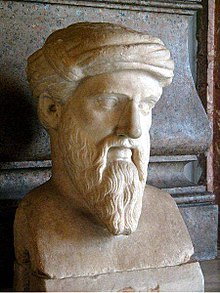 For the ancient philosophers, ignorance was the opposite of good. To both Aristotle and Plato, no one does wrong willingly but only out of ignorance. Socrates had his own methods for combating ignorance, and many of these principles can be found in Freemasonic ritual and education. From continuous learning and making a daily advancement in education to providing education rather than criticism, the Freemason becomes a scientist of the world. Freemasons build on Socrates idea that one should “know thyself” in that they are lacking in knowledge, and that we have no idea what is best for others. The center point is the key to balance in all things but especially to combating ignorance. A measured approach, curious yet mindful. Lastly, I think Socrates was most right when he said that ignorance is inevitable. When Socrates said “I know nothing except the fact of my ignorance,” what he was saying was that he was not ignorant of all things but that he was aware that he was ignorant of all things. He knew that he would be forever ignorant and it was only through perseverance that he could become “good.”
For the ancient philosophers, ignorance was the opposite of good. To both Aristotle and Plato, no one does wrong willingly but only out of ignorance. Socrates had his own methods for combating ignorance, and many of these principles can be found in Freemasonic ritual and education. From continuous learning and making a daily advancement in education to providing education rather than criticism, the Freemason becomes a scientist of the world. Freemasons build on Socrates idea that one should “know thyself” in that they are lacking in knowledge, and that we have no idea what is best for others. The center point is the key to balance in all things but especially to combating ignorance. A measured approach, curious yet mindful. Lastly, I think Socrates was most right when he said that ignorance is inevitable. When Socrates said “I know nothing except the fact of my ignorance,” what he was saying was that he was not ignorant of all things but that he was aware that he was ignorant of all things. He knew that he would be forever ignorant and it was only through perseverance that he could become “good.”
The Proper Balance of Masonry: The Greater and the Lesser Mysteries
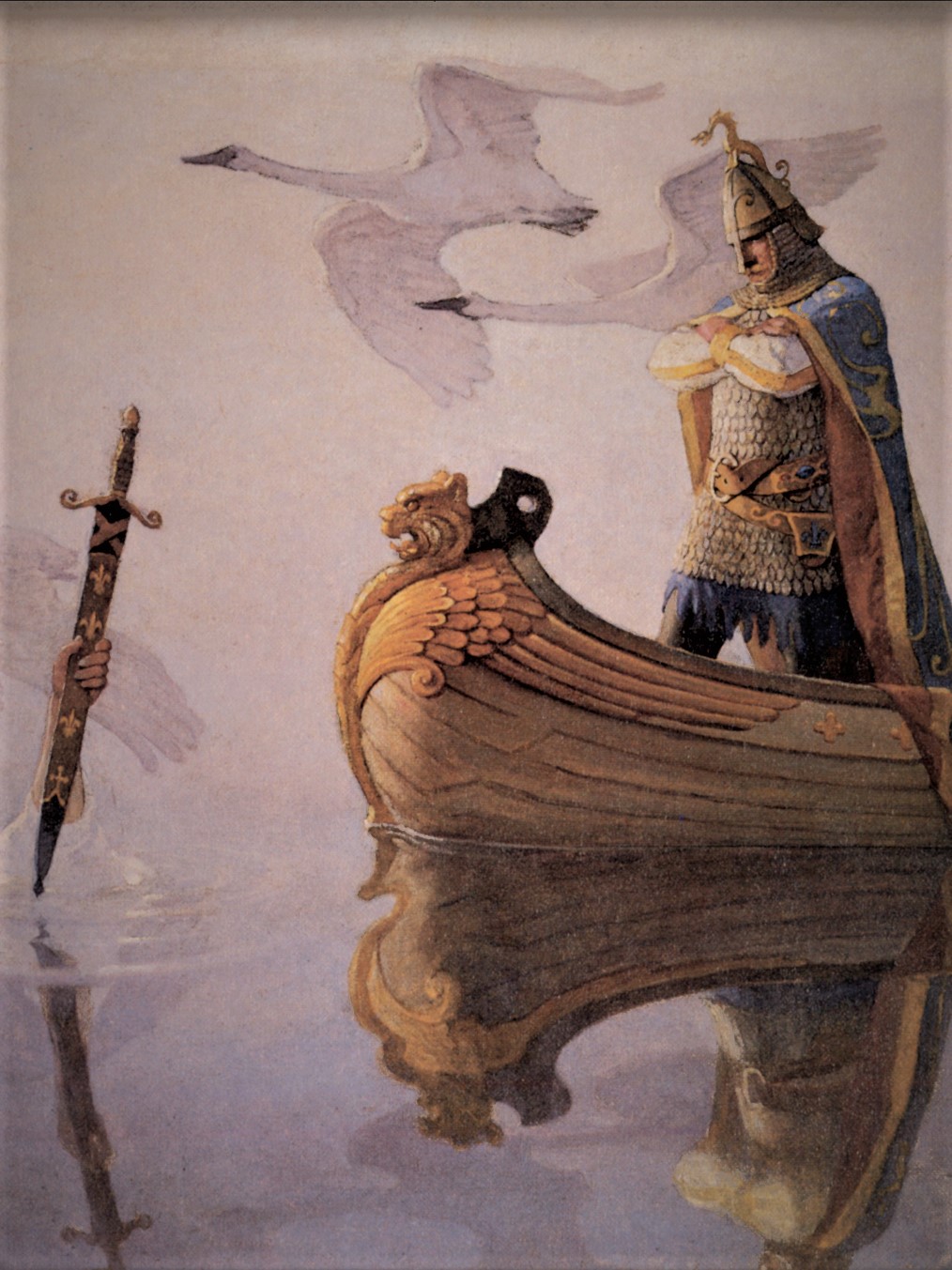
“I THINK you are making a mistake,” writes a kindly brother, “in unsparingly condemning that phase of Masonry that is concerned with ritualistic performance.”
He continued:
Is it not true – an unpalatable truth, perhaps – that for most of us this ritualism must remain as chief aim and purpose of our connection with the Fraternity?
We know that there is an intellectual side to the Institution, where the scholar and the student find highest satisfaction. But why should those who have not yet reached that high plane, or who may not be able to appreciate the full value of these advanced studies, be denied such pleasure and such profit as is available to them in lower paths?
“I THINK you are making a mistake,” writes a kindly brother, “in unsparingly condemning that phase of Masonry that is concerned with ritualistic performance.” He continued:
SEEK AND YE SHALL FIND
MY kindly critic gives opportunity to discourse briefly upon the proper balance of Masonry. It is true that in these pages, as elsewhere, the editor has urged insistently the higher imperatives, as those which should have dominating force in the world of Masonic thought and action. He would hold out to all brothers the intellectual promise, rather than show in grosser terms the rewards and satisfactions of the Craft. He would have every Mason enter upon the quest “for that which was lost,” though convinced that few there be who shall achieve to complete object of the search.
AS from King Arthur’s table, many valiant knights arose, with high resolve to seek the Holy Graal – men bold of heart and true of soul – though only to the few was granted vision of the chalice sacred, mystical. And yet, if so I read aright these meaning stories of the past, the knights that travailed long in places perilous, doing bewhiles great deeds of fealty and of faith, although denied the precious thing for which they fought and prayed, were made the better, braver, nobler, even because they were accounted to have failed.
The properly balanced Masonry is that which gives full place and scope to all the workmen. The Master who draws designs upon the trestle-board may not speak with contempt of those who labor faithfully in the mountains and the quarries. He may indeed seek for disciples and scholars among the more eager and ambitious, who are most likely to profit by his instructions. These, indeed, he will urge to higher things, knowing full well that the great cause is to be advanced most surely and speedily by men trained to highest capabilities of head and heart.
But in Masonry, as in the world without, there must ever be the greater number content with tasks of lesser thought. Yet to them – to all – should be unrolled and explained the full plans and meanings of the structure to which their toil and skill are dedicated. They should gain significance of the timbers and the stones upon which their labor is expended. Such brethren are not mere wage-workers, put by task-masters to their various toil. They are free Craftsmen, and should receive instruction, increasing ever with their understanding.
So, for the Temple of Humanity and Brotherhood should Wisdom put forth ever nobler effort, with Strength evident in the mass and Beauty showing in every detail.
WHERE PROPER BALANCE LIES
I KNOW of no other comparison for Masonry than the great religious systems of the world, past and present. From them we may, perhaps, learn where proper balance lies, where associative effort before has failed, and where and how best purpose has been served. So, we find that, wherever in the world’s history an organized system has made successful appeal to the masses of men, there has ever been ample allowance for the varying capacities of adherents.
The exoteric, outward showing is for the greater number – for that larger body of worshipers content to remain in the outer court. Where subtler wants are not felt, the higher spiritual sufferings would be unmeaning. It is enough for such exoteric religion that the norms of conduct be established, and that fear of punishment or hope of reward shall be so adjusted to unawakened intelligences as to enforce compliance therewith. I know that this will be called superstition, and in no way to justify comparison with aught in Masonry. But superstition, as I take it, has two distinct meanings.
To the man who has advanced beyond the necessity for grosser compulsions, the term represents no more than do the old definitions and enforcements of the common law, altogether superseded by higher mandates. The outworn things are for him valuable as records of the spiritual evolution through which he himself, or his ancestors, have passed. But for the unlearned and unleashed radical the word “superstition” stands for such things as he will not and can not seek to understand, which he is concerned only to revile ignorantly, and to proclaim his refusal of obedience.
For him, the commands of ancient force no longer hold, not that they are without reach or meaning, but that his soul has gained only to a stage of irrational rebellion against authority. Like an immature boy, such a one seeks only to express a newly-sensed independence, being altogether unaware of the eternal compulsions.
TRUE MASONRY: EXOTERIC AND ESOTERIC
WHEN I hear “superstition” cried the loudest, in matters of faith or symbolism, l am inclined to linger longest, that so I may hope to discover something more of what has been preserved from an ancient time, and is today found worthy of the adherence of men. For whatever endures has in itself the heart of Truth. And, likewise, what is true of religious symbolisms and observances, is true of Masonry in its exoteric form. There is a superstition, perhaps, of the fraternity, and it may be regarded from the same standpoints as mentioned above. The radical by condemning and rejecting indiscriminately, loses much of highest value. It is only by providing and maintaining the proper balance, by serving the needs of the greatest possible number of men, embracing the broadest range of intellectual capacities, that this or any like institution can hope, to achieve and hold real meaning in the world.
The brother who can only grasp the outward phases of Masonry will certainly receive all that can have use for him. Go into your anterooms after the conferring of degrees, and answer if this is not true. Hear those who are grateful and appreciative after receiving the Master’s degree, and have been impressed for good, though no hint even of the esoteric has come to them.
The true learner will, from that point, still seek and find; will ask and receive; will knock, thereafter, at many doors, hidden oftentimes, and these will be opened to him. But also for him who chooses to remain in the outer court, to be satisfied with sensuous observances, there is gain, nicely calculated to capacity. For those having ears to hear, there are things cryptic, mystical, and well worth the hearing. For those who are content with the ringing of bells, the bells will ring, and in beautiful harmony. It might perhaps be permissible to compare Masonry of the Lodges – the Masonry of routine and of ritual – with those old chthonic religions, while the real esotericism of the Craft rises to the region where subtle inspirations are received and understood by highest processes of thought.
In answer to my brother, I esteem very highly that one who finds in ritual his best enjoyment, though I will not cease to urge upon such a one that he should use this ritual as a guide to upper paths. But Masonry, even in its simplest requirements, demands more than that one should go and remain upon the tread-mill of verbiage, making no advancement upward or forward. If advancement is made, whether by means of ritual, or by study or by intuitive process, be that advancement less or more, in so much is Masonry honored and benefited, and by so much has the individual brother made his gain.
~ “The Proper Balance of Masonry: The Greater and the Lesser Mysteries,” THE AMERICAN FREEMASON, May 1912.
Jacques de Molay: The Last Grand Master of the Knights Templar

by Bro. Lorne Pierce, Past Assistant Grand Chaplain A.F.& A.M. Ontario
Originally Published in 1949, this article answers the following questions: 1) Who were the Knights Templars? 2) What happened on October 13, 1307? and 3) How and when was that date avenged?
THE origin of knighthood is lost in the dim past. In early England, a knight seems to have been a youth who attended a member of the court; it was a position of honor and of service and might lead in time to Royal recognition and rank. In Germany, the early knight may have been regarded much in the same way, a disciple. In both countries the knights were obviously ambitious and high-spirited youths as one might expect. It was in France, however, that the idea of chivalry arose, and this conception quickly spread throughout Europe. Some knights had made themselves useful to Earls or Bishops, that is the principal landlords and magnates and military chiefs of the realm and might be classed as superior civil servants in times of peace, becoming leaders of the armies, both secular and religious, in times of war.
There were, of course, many foot-loose knights wandering about Europe in quest of adventure, but on the whole a knight was a responsible link in the Feudal chain reaching from the king to the peasant. In time the ideal of chivalry came to prevail, and the high honor accompanying it seems to have derived from prehistoric Teutonic custom. The candidate had to submit to a rigorous investigation of his character and qualifications. Then the community turned out to welcome him with fitting ceremony and investiture with sword and shield, with belt and sword, or with gilt spurs and collar, usually by the knight’s father or some exalted personage. In time t hose who had fought against the Saracens became preeminent and were accorded rank and dignity independent of birth or wealth.
The Knights Templar, or Poor Fellow Soldiers of Christ and of the Temple of Solomon, was one of the three out-standing military orders of the Middle Ages in Christendom. The brotherhood was founded, about 1118, by Hugues de Payns, a nobleman residing near Troyes, in Burgundy, and Godefroy de St. Omer (or Aldemar), a Norman knight.
Their original purpose was to protect pilgrims to sacred places, more especially those who sought the Holy Sepulchre. At first, there were eight or nine Knights Templar. They bound themselves to each other as a brotherhood in arms, and took upon themselves vows of chastity, obedience and poverty according to the rule of St. Benedict. It is also recorded that they pledged themselves to fight against ignorance, tyranny and the enemies of the Holy Sepulchre, and “to fight with a pure mind for the supreme and true King.”
Baldwin I, King of Jerusalem, assigned them accommodation in his palace, which stood on the site of the Temple of Solomon. In this way their name, Templars, was derived. At first the knights wore no uniform or regalia, nothing in fact save the cast-off garments that were given to them in charity. It was the poverty, sincerity and zeal of the order in its first years that endowed it with importance. They sought out the poor and the outcast, the excommunicated as well as the unwanted, and shepherded them within their fold.
Hugues de Payns, accompanied by several of his knights, returned home in 1127 for the purpose of securing adequate ecclesiastical sanction for some of the special privileges which the order had usurped. Among the very special privileges was immunity from excommunication, which threatened a good deal of trouble. Bernard of Clairvaux, the greatest abbot of his day, received Hugues de Payns, and not only praised the Knights Templar, but went much further. The future St. Bernard did not attend the Council of Troyes in 1128, at which the Rule of the Temple was drawn up, but he seems to have inspired it – the constitution, ritual, discipline and very core of the order.
Finally, there got abroad the idea, that in the rule of the order there existed a “secret rule,” and a legend speedily grew up around this “lost word.” In time this was the undoing of the order. The whole Rule of the Temple was probably never written out, its more essential parts being conveyed by word of mouth, by symbol and sign, and protected by proper safeguards. The point of importance was, that the order now had ample acknowledgement and authority, and from this moment onward power and treasure flowed into its hands in an unending and broadening stream.
The Templars and the Crusades are forever associated in history and legend. The Templars, in an astonishingly short time, spread over Christendom. They had thousands of the fattest manors in the Christian world. They became the bankers of the age, the money exchange between Europe and the East, the trust company of the time.
They provided loans to princes, dowries for queens, ransoms for great warriors, safety deposit vaults for the treasure of emperors and popes. Their chapters were the schools of diplomacy of the time, training grounds for prospective rulers, colleges in commerce and finance, sanctuaries for all who needed protection, high or low. It was inevitable that they should attract to themselves the envy of the less fortunate orders and guilds. In time, in fact before the death of St. Bernard, in 1153, they had not only received the tribute of kings and cardinals in the form of lands and treasure, but they freed themselves from the necessity of paying tax, tithe or tribute to any power, prince or pope, which privilege they claimed as defender of the Church. This was enough to bring upon themselves the inevitable reckoning for overreaching ambition, but they went further, very much further. They not only claimed exemption from excommunication but claimed exemption from all papal decrees except those specially aimed at them by name, and they owed allegiance to no power or authority on earth except their own head, the Bishop of Rome. They had become a separate social, economic, political and religious order, cutting across and transcending kingdoms, principalities and archdioceses, with only the Vice-gerent of God superior to their Grand Master.
The enormous powers of the Knights Templar were bound to be challenged by the popes as well as kings who demanded loyalty within their realms. The order found itself in increasingly compromising situations, the victim of treachery on the part of kings and princes of the Church, or the instigator of trickery and subterfuge on its own part to preserve its powers. The King of France, Philip the Fair, set out to unite the Hospitallers and the Templars into one grand order, The Knights of Jerusalem, the Grand Master of which was always to be a prince of the royal house of France. The Grand Master of the Knights Templar invariably was Master of the Templars at Jerusalem, and in Cyprus after the loss of the Holy Land to the Turks. He came in time to live in a sumptuous manner, befitting his great wealth and vast powers. In th e field, during the campaigns, he occupied a great tent, round, with the black and white pennant flying above its high peak, bearing the red cross of the Templars. Regional Grand Commanders were accorded similar honors, and no one took precedence over them except the Grand Master, when he was present.
We know little concerning the initiation ceremonies of the Knights Templar. Probably there was some cleansing ritual, robing in white, the all-night vigil and Holy Communion, gilt spurs, sword or other gift of honor, and finally the oath and accolade. Certainly, the order was a Christian institution. Their war-cry – Beauseant! – also inscribed on their banners and pennants, pledged loyalty to their friends and promised terror to their foes. Likewise, both a prayer and a pledge were the well-known words:
Non nobis, Domine, non nobis, sed nomini tuo da gloriam.
Not unto us, O Lord, not unto us, but unto Thy Name be the glory.
Jacques de Molay was the twenty-second and last Grand Master of the Knights Templar. He was born about 1240 at Besancon, in the Duchy of Burgundy, and was of noble but poor family. He was admitted to the order of knighthood, in 1265, at Beaune and proceeded shortly to the Holy Land, under the Grand Master William de Beaujeu, to fight for the Holy Sepulchre. Jacques de Molay remained in the Holy Land for many years, for he was still with the order in Jerusalem when, about 1295, he was elected Grand Master upon the death of Grand Master Gaudinius – Theobald de Gaudilai. After the loss of Palestine by the Templars, de Molay took his few remaining knights to the Island of Cyprus. In 1305 he was summoned to a conference with the Pope, Clement V, who stated that he wished to consider measures for effecting a union between the rival Templars and Hospitallers. A long and bitter feud had existed between the two great orders.
However, both had agreed not to accept disciplined members who might desire to transfer their allegiance from one order to the other. Also, in battle, it was permitted members who became hopelessly separated from the main body of one order to rally under the cross of the rival order if near.
Jacques de Molay, accompanied by sixty knights, made a royal progress westward. He called upon the Pope who consulted him regarding a further Crusade, and de Molay requested an investigation into charges that were already being openly made against the order. Finally, he arrived in Paris with kingly pomp. Philip the Fair, King of France, suddenly arrested every Knight Templar in France, October 13, 1307, de Molay and his sixty friends among them. They were brought before the University of Paris and the charges read to them.
De Molay spent five and a half years in prison. Of those arrested, one hundred and twenty-three knights of the order “confessed under the torture of the Inquisition.” Some confessed that at the initiation ceremonies they had spat upon the Crucifix. When the Grand Master’s turn came he likewise confessed, apparently to bogus charges prepared beforehand by the Inquisition, fearing torture, but he denied the charges of gross practices indignantly, and demanded audience with the Po pe. Th e Pope himself believed the Templars were guilty, at least on some of the counts, but he resented the intrusion of Philip in what he regarded as his own special precinct, in spite of the fact that he largely owed his papal tiara to Philip.
Many retracted their confessions regarding their indignity to the Crucifix, only to be burned at the stake. Many who returned to their homes throughout Christendom, recanted, but the Inquisition followed them, and they burned.
Despotism, naked and cruel, without scruple or any capacity for shame, had broken loose upon the world. It was a new and bloody technique that proved vastly effective in the hands of tyrants – both secular and religious. Civilization was to hear a good deal about this arbitrary rule, this summary and vindictive totalitarianism, without conscience, hungry for power, wholly wicked, completely mad. In 1311, Clement and Philip became reconciled, which prepared the way for the final act in the tragedy.
The next year, at Vienna, the Pope condemned the order in a sermon while Philip sat at his right hand. Later the inevitable occurred; the Knights Templar were broken up. Much of their treasure was given to the Knights of St. John, but Philip the Fair and Clement V reserved land and treasure, castles and Abbeys for themselves and their friends.
No full hearing seems to have been given to all the charges, or any comprehensive judgment handed down on the order as a whole. However, in 1314, Jacques de Molay, whose fear had made him a pathetic figure, and whose craven “confessions” contrary to the oath of his order had sent hundreds to their death, again confessed, again recanted his confession, again confessed, each time shrinking miserably in stature both as a man and Grand Master and having humiliation and utter disgrace heaped upon him for his pains.
Finally, after the long imprisonment and tragedy and sorrow of it all, he was led out upon the scaffold in front of Notre Dame in Paris, in company with his friend Gaufrid de Charney, Preceptor of Normandy. The papal legates were in attendance and a vast multitude of people filled the square. He was to confess by arrangement and hear the legates sentence him to life imprisonment. Jacques de Molay finally atoned. Instead of confessing he proclaimed the innocence of the order. King Philip the Fair did not hesitate or consult with the Pope’s legates; he had de Molay burned forthwith, “between the Augustinians and the royal garden.” Guido Delphini was burned with them, and also the young son of the dauphin of Auvergne.
With his dying breath Jacques de Molay shouted to the multitude that King and Pope would soon meet him before the judgment seat of God. The common people gathered up his ashes, and before many days it was as de Molay had foretold, Both Clement V and Philip the Fair were dead.
The immortal Dante maintained the innocence of the Knights as did many another famous contemporary. Today, it is generally admitted that the Inquisition went to the poor knights in prison, told them that their officers had confessed to spitting upon the Crucifix, and then wrung from them “confessions” by the most brutal of all institutions. The confessions are all discounted. The evidence against them was from their rivals, the Dominicans and Franciscans and others, all worthless.
The Order had long held the Turk in check and kept alive the dream of a united Christendom. It had given to the world the idea of the chivalrous man as a religious man, the servant of his state not ashamed to own his God. It had paved the way for the large part laymen were to play in the religious life of the nations. It was the school of diplomacy and commerce, of international finance and opinion. Those who destroyed the order opened the way for Turkish conquests in the West. They also made known th e horrors of despotism, of trial by pogrom and purge, which kindled again in the wicked days of St. Bartholomew’s and in the mad days of the French Revolution – the cult of cruelty, that ran its course even in the New World with witch-huntings and burnings, and that is not yet dead. It has been said that the thirteenth of October 1307, was a day of humiliation for the whole race. If the world remembers, and recovers its sense of shame, its capacity for indignation, it may not have been in vain.
The Middle Ages were past, and deep rivers of Christian blood had flowed for two hundred and fifty years, before the Turk was expelled from the Spanish peninsula. Under Don John of Austria the Mediterranean states, organized into a league, sent an armada of two hundred ships against the Turkish fleet that had sailed westward from Cyprus and Crete. Christian met Saracen off Lepanto, October 7, 1571, broke the naval power of the Turks forever and set barricades to their western expansion to this day.
Thus, was October 13, 1307, at last avenged. Nearly every European state and noble family was represented. There was also present a humble Spaniard who had his arm shattered but who lived to write a book, with his one good hand, the novel Don Quixote, that laughed the last dregs of a corrupt and bogus chivalry out of Europe. He died in 1616, the year our Shakespeare died, and an era ended. The era of the common man followed; a new day had dawned.
Masonic Mottoes: Deus Meumque Jus

Freemasonry has various mottoes, which represent the principles of our great tradition. Among these is Deus Meumque Jus, which often appears prominently on Masonic Regalia, most notably that of the 32nd and 33rd degrees. A phrase being featured so prominently on Regalia for the highest degrees implies tremendous significance, but what does it mean?
Let’s explore the possible meanings of this motto, and the role it plays in the Masonic life.
God and My Right
The latin phrase Deus Meumque Jus roughly translates to “God and My Right”, or as some have put forward, a more accurate translation might be “God and My Moral Rightness.” Deus is simple enough to translate, a familiar Latin word for God, as we often hear in Catholic recitations of Latin translations of the Bible. Jus has the same Latin root as Justice and relates to law, and Memque is a form of Meus, which is the adjective “my.”
The actual history of the phrase is rather long and complex, and won’t be the focus of this article. Suffice it to say, in the words of one Masonic writer:
…the motto is the Latin version of a French phrase that originated in England and used in a Masonic degree system named after Scotland that descended from French sources by way of Haiti with the help of a Dutch trader through Jamaica and eventually almost completely redefined in the United States.
It’s also associated with the number 33, as it is usually featured on the 33rd Degree’s Regalia, and the inside of the ring worn by 33rd Degree Masons. Significance is ascribed to the number 33 in a variety of ways, it being sacred in religions ranging from Christianity to Hinduism, and there being 33 vertebrae in the spinal column, to name a couple. However, today we’re focusing on the phrase itself.
What Is This Right?
Everything in Freemasonry, especially in the more mystical Universal Co-Masonry, carries significance beyond its literal or historical definitions, or translations. There are many possible interpretations of the meaning behind Deus Meumque Jus; historically, it has some connection to the concept of the Divine Right of Kings, in which case it would mean “my right to rule is derived from God.” However, given the role of Freemasons in the institution of democracy in the Western world, it seems hard to believe that it’s meaning in the fraternity has much connection to justification for monarchy.
The interpretation “God and my moral rightness” is more in alignment with the origin of the latin translation, and would mean the interpretation would be more along the lines of connecting one’s relationship to the Creator to moral uprightness. However, this concept alone is unsatisfying; after all, don’t all people who believe in a higher power connect their morality to that concept, in some way or another? Why would this then be a special phrase reserved for the highest degrees of Freemasonry?
Divine Right to Rule the Inner Kingdom?
Perhaps a more profound interpretation of this phrase might be that it represents an inner reign of the divine, within each individual Mason. Aspects of the structure of Masonic Ritual indicate an outer mirroring of inner elements of one’s being, and a very clear hierarchy and order to them. Without spoiling too much for the as-yet uninitiated, the gist of this concept is that the functioning of the Lodge and Masonic ritual lays out a blueprint by which the various aspects of the self may be “put to order” so that the lower aspects of self are made to be the servants of the divine within.
Viewed through this lens, Deus Meumque Jus would be inward law and order (Jus) established within the self (Meumque), by the divine self (Deus) as the Sovereign.
Yet another interpretation would be something more along gnostic lines, and given gnosticism’s role in the Esoteric traditions informing Freemasonry, it’s not such a stretch to apply this lens, as well. From a gnostic perspective, Deus could pertain not only the inner divine spark, but also to the demiurge which gnostic thinking generally believes to be the creator of the material world in which we find ourselves. In this interpretation, perhaps the Right being referred to may be less about divine authority within the self, and more about one’s Right to transcend the trappings of this flawed material creation of the demi-urge, to realize the potential contained in one’s divine spark, via gnosis.
Actually, these two more mystical interpretations are not entirely incompatible. One could say that the inner sovereignty over one’s own lower nature, and the right to transcend a demiurge-designed reality are one and the same. After all, the primary way in which we are ensnared in the physical world, according to gnosticism, is via these bodies and their lower natures. To be Sovereign over them would mean to transcend them.
Tradition, Transcendence, or Both?
While the phrase Deus Meumque Jus has a complex history and is embedded in a long tradition relating to monarchy and various esoteric societies, it also has tremendous symbolic significance. We could even relate it to the Yogic concept of gaining complete control of all the lower aspects of the self, even the nerve centers which control breathing and the heartbeat, as part of the process of one’s advancement towards Liberation. Perhaps there are correlations between the Western Gnostic concept of inner sovereignty, and this Eastern correlate.
What is the true meaning of this Masonic motto? The only way to find out is to become a Freemason, and progress through the degrees, for only in the Masonic ritual is the true meaning revealed.
Truth and Belief

By The V. Ills. Bro. George S. Arundale 33o
I said that I would tell you something of the truths I hold, not of all the truths I hold, but of those which are at the foundation—my ultimate truths. There is, I feel, one truth of truths, one truth which includes all others—the Unity of All Life. We know science has demonstrated that life is everywhere, though the word ”life” is not so easy to define; shall we say ‘’growth,” “unfoldment”?
In every kingdom of Nature, life is all-pervading. Even that which we call death is only change. We know that not only do our individualities persist after death, but also that the physical body, whence the individuality has departed, is not in itself dead, though it disintegrates.
Every particle of nature is life, whether, for purposes of our own, we call it “dead” or “alive.” But what is more, is that this all-pervading life is essentially one, whatever its form—the same fundamental characteristics everywhere, as science again knows. Here these characteristics sharper, keener, more definite, more sensitive, more complex; there these characteristics duller, simpler, vaguer. But the same vital principles, the same type of reaction to external stimulus.
THE KINGDOM OF NATURE
In every kingdom of Nature, there is some kind of feeling or sensation, some kind of happiness, some kind of fear, some kind of disease or illness, some kind of death. It sounds too strange to be true, yet science asserts these facts. They can be demonstrated by physical experiments.
We do not generally associate these conditions either with the mineral, the vegetable, or the animal kingdom; but that is our ignorance. We must readjust ourselves to the fact of the Unity of all Life, which means the Brotherhood of all Life, and when we say Brotherhood we contact the second great truth, the logical sequence from the first. It is that life grows, evolves. No stopping still. And we begin to talk of a ladder of this growing, of a ladder of evolution, with rung upon rung marking the different stages of growth, or of expansion.
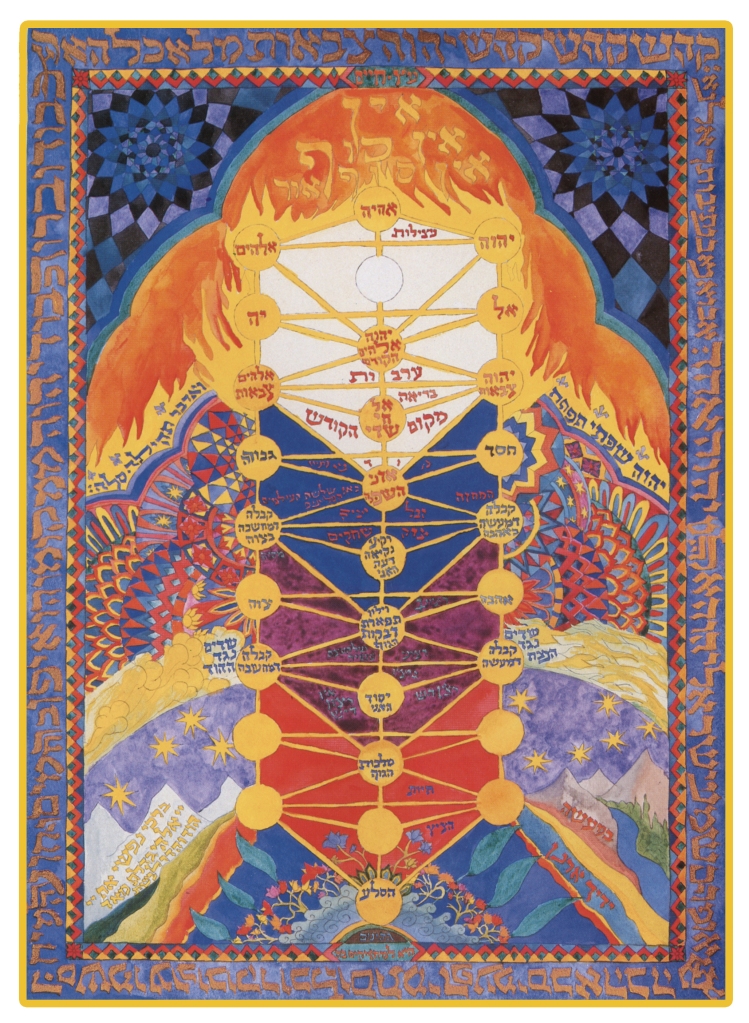
Hence, each kingdom of Nature represents a stage of growth or unfoldment. Dull characteristics of life in the mineral kingdom. Less dull characteristics, increasing sensitiveness, in the vegetable kingdom. Still greater sensitiveness in the animal, greater definiteness, more power of movement, increased complexity of unfoldment. And then the human kingdom in which you and I are.
We probably know more or less what it is that makes us different from animals mind, for one thing, conscience for another, bigger purpose for a third, and so on. But the same life, just as there is the same life in the acorn as in the oak. Nourishment may be derived from outside, but it would be of little use unless the acorn could take it in, had the sagacity to assimilate it.
What do we conclude from all this? Surely that the human kingdom is not the final stage of growth. If kingdoms below us, why not kingdoms beyond us? Do we know nothing of them? No, nor do most animals know aught of the human kingdom. But some animals do, and I claim that some humans know of kingdoms beyond the human. Perhaps Angels belong to one of these. Perhaps the great Teachers and Saviors of the world belong to one of these.
THE BROTHERHOOD OF MANKIND
“Seek and ye shall find; knock and it shall be opened unto you.”
Ought we not to try to understand a little more what this brotherhood means—brothers younger than ourselves, our brothers the animals, as Saint Francis so beautifully realized and practiced; our brothers the trees, the flower, the shrub, the grass, yes, and the weeds, and the prickly pear; our brothers the stones, the humble youngest brother stones and the flower of the mineral kingdom—the diamond, the ruby, the sapphire, the emerald. Read what Ruskin says about the lives of these beautiful brothers in his “Ethics of the Dust.” But all this is about younger brothers.
There are our equal brothers, our human brothers, some, perhaps, not quite so old as others, but less distance between them than between us and our animal, vegetable and mineral brothers. No distinctions of race, or creed, or caste, or sex, or color, make any difference. These are all superficial.
Sometimes in our pride, we like to think ourselves superior. Sometimes we think people inferior because they look different from ourselves, eat differently, dress differently, sleep differently, live differently, feel and think and speak differently. That is merely a passing phase of self-preservation. What we are and have we like best; it is largely habit, and no doubt it is, to a certain extent, though not merely as much as we think, best for us. But then we begin to make the fatal mistake of imagining that it is therefore best for everybody else, and that people who have different things have worse things—a different religion, therefore a worse religion; different customs, therefore worse customs, a different nationality; therefore, a worse nationality. Very childish, and very untrue, of course; but not unnatural at a certain stage, though by this time the world ought to be quitting some of its childish ways.
ASCENDING THE LADDER
Now, if there are our younger brothers and our equal brothers, logic demands that there shall be elder brothers, some a little older but not much, some considerably older, some far older, so much older that we cannot imagine their human origin, it is so far back. The Great Saviors are our Eldest Brethren.

The life so perfect and magnificent in Them has been on every rung of the great ladder of life, and now has reached, well, I dare not say the topmost rung—who shall set a limit to God’s omnipotence—but on a rung far removed from our own, so far removed that for us it is the top: we can see and dream no further. And, yet, mark you, there are the two great lines that hold the rungs together, stretching from the bottom, as we must call it, to the top as we must equally call it—one ladder, one path, one origin, one goal. We look beneath us and see where our footsteps have been placed. We gaze above us and perceive the places on which our feet have yet to stand. And on each rung we see the clinging life, stretching ever upwards to the rung above.
I do not think I want or need any more truths. This unity, this evolution, this immeasurable and transcendent brotherhood, this certainty, this purpose, this power—what more do I need to make life intelligible and wonderfully worth living?
WHAT IS GOD?
Do I need God? All is God. I have been speaking of God all the time. I am God. You are God. The animal is God. The vegetable is God. The mineral is God. God is the ladder, God the rung, God the growth, God the origin and end, if end there be.
What do I mean by God? I mean Life. Is there a Person God? I do not know, nor need I care, for there are Those on rungs above me Who are enough Gods to give me all that God could give. Perhaps the sun, the Giver of Life, perhaps He is God; but who shall say He is God the ultimate? And who need care. His sunshine is our growth, come that sunshine whence it may.
Do I need to say that God is Love? When I know the brotherhood, I know love. Only as I am ignorant of the brotherhood of life are my eyes blinded to the all-pervading love. Love is everywhere. Life disproves this, you say. I say to you:
“Know the brotherhood of life, and you shall perceive the Love of God.“
Do I need to say that God is justice? When I know the brotherhood of life I know His justice. Only ignorance blinds me to His justice.
TO KNOW TRUTH
Hard to believe? Hard to understand? Truth needs ardent wooing, my brothers, relentless pursuit, tireless search, unfaltering desire.
“To know Truth, you must unflinchingly examine your beliefs, your opinions, your conception, your prejudices, and your orthodoxies in the clear light of your most exalted self, your highest self.“
When you are at your noblest, how do all these things strike you? When you merge your lower self in the greater self under the transmuting magic of wondrous music, of noble utterance, of soul-stirring landscape, of sight or hearing of fine heroism, do you not for a moment, even if only for a moment, feel one with all the world? Do you not feel your brotherhood with all? Do you not feel as if you could do anything for anybody? Do you not see ns petty much that in the lower self you thought as right and proper? Do you not feel, just for the moment, as if you could do great things, were dedicated to a noble mission and exalted purposes?
Such, my friends, is the real you, the you that can climb, must and snail climb, rung after rung beyond the one on which you stand. In such a self, not only do you know these truths of which I have been speaking, you have become these truths; you are these truths. And you perceive how gloriously worthwhile it is to climb, if such are the heights which shall be reached, if such the glory into which you enter. The vision fades, perchance, as the magic ceases. But, nevermore, can you stay where you are.

ONWARD AND FORWARD
Evermore must you climb, and you know that the Truth of truths—the Unity of Life—means that we climb together, that we cannot climb alone, and that, therefore, there is no climbing save as we aid others to climb. We climb as we seek the feet of Those who are stretched on the Cross of Loving Sacrifice.
May each one of us become a Cross of Loving Sacrifice! For the Way of the Cross is the hope of the world!
As Above, So Below: The Soul’s Evolutionary Trajectory Reflected in Freemasonry

What is the purpose of life, or perhaps beyond life, or existence itself? How one answers this question will depend on one’s beliefs, ranging from nihilism to religious concepts of salvation and the afterlife. In Freemasonry, we don’t impose or require any particular belief regarding the purpose of life on the grandest scale, although we do focus heavily on the improvement of each individual, what some might call personal evolution. Ultimately, each Mason has his or her own beliefs, and come from a variety of religious backgrounds.
What is the relationship of this focus on personal development to various possible higher, metaphysical concepts of life’s purpose, or the soul’s trajectory?
God and Telos
It’s very interesting the ways that a concept of a higher power are connected to personal betterment and evolution. This is one of the reasons for the requirement of a belief in a higher power for entry into Freemasonry, because the opposite of this belief, materialism or physicalism is also intrinsically nihilistic, though some may feebly attempt to deny it. To believe in God or the Divine is to believe in a purpose to Creation, a concept known in philosophy and theology as teleology, from the Greek word telos, meaning “reason, purpose, or end.”
If we, and the universe we emerged from, simply happened and were not somehow created as the modern materialist orthodoxy insists, this means that we and the world are essentially an accidental, pointless mess of dust blowing in the cosmic wind, meaninglessly. This is a particularly bleak worldview, which in spite of its many philosophical problems, has risen to prominence in the academic and intellectual culture of the West. Freemasonry is diametrically opposed to this view, in that one of the very few beliefs our diverse group does share is the belief in a higher power, and the Telos which that belief implies.
The Many Faces of Telos
While we may all share a belief in God (or something like it) and Telos, the individual and sectarian concepts among various Brothers of what exactly that teleological purpose of our existence is can vary widely. This will depend on how we conceptualize God or the Divine, and the purpose for which we were created. Some of the most common teleological differences are between Abrahamic religions, those of the East, and more nature-based spiritual traditions.
Abrahamic faiths like Christianity, Islam, and Judaism, for instance, tend to focus on some sublime end, usually an afterlife, or a time in the future when the dead will be raised and live in a more Earthly paradise. In either case, it’s generally believed that our purpose is to serve and worship God, and to eventually enjoy the heavenly state individuals have earned by having chosen to live for their Creator. Usually, they believe we live only one life, and then proceed to eternal reward or punishment.
Eastern religions, on the other hand, such as Buddhism or Hinduism, tend to believe that our souls evolve over many, many lifetimes and eons, perhaps even existences on other worlds, or in other dimensions. While they generally believe in heavens or hells, these are all temporary states which a soul may pass through. The ultimate goal is to be completely free of our illusions, and to realize our unity with God, or the Ultimate Reality.
Nature religions such as Shamanism, Taoism, or Paganism are an interesting case, as they focus more on our position in relation to the natural world, usually conceived as a grand living entity, and the various spirits and ancestors which inhabit the non-physical realm. Still, there is often a sense of Telos, if not in a trajectory towards an end, at least towards some idea of balance or harmony.
Unity in Teleological Diversity
One of the chief benefits of Co-Masonry is its adaptability and applicability to life, regardless of what faith and individual Telos a person adopts. The virtues which are taught in Masonry, such as personal discipline, honor, universal brotherhood, truth, equality, and justice are all qualities which contribute to any concept of Telos that one might identify with. Whether you believe that your destiny is heaven, enlightenment, nirvana, or simply cosmic harmony, the qualities and skills which Freemasonry encourages are pragmatic and conducive to those ends.
It’s truly a magnificent feat which our Brothers before us achieved, by combining the common elements of moral philosophy and sacred teachings from so many traditions, to create a common path which could encompass all believers and seekers, to work together in Brotherhood towards the betterment of the human race.
(Photo source: Ian Schneider via Unsplash.com)
The Meaning of Masonry
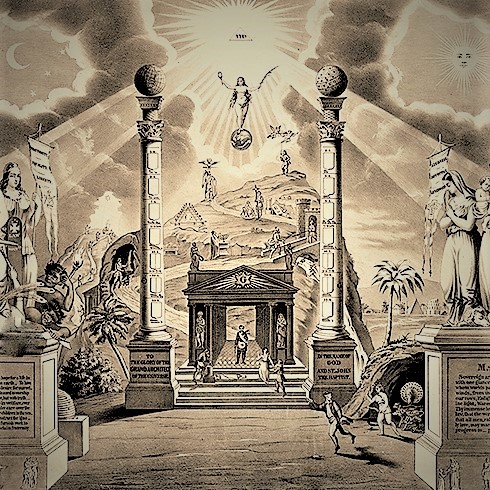
Such, my brethren, is the subject on which I have been requested to address you. Some who have the interests of Masonry at heart, have thought it was possible to say something upon this subject that might tend to remove erroneous impressions, to increase union and harmony among Masons, and to persuade society at large that its well-being and progress are, to some extent, involved in the advancement and prosperity of Masonry. They have demanded that I should say that something; and, though unaffectedly reluctant to do it, my obligation as a Mason bars against me all the avenues of escape, and compels disinclination to yield to the imperative mandate of duty.
It would need no argument to show that to the Masonic Order itself, as to any other order or association, however unpretending and unimportant, intestine dissentions, struggles for the possession of power, jealousies and heart-burnings must necessarily be harmful, retard its growth and progress, repel those who, if it were at peace with itself, would seek to approach its doors; and at first diminish and ultimately destroy its capacity for usefulness. If this were all that I desired to establish, I might say so much and at once conclude.
But we, my brethren, do not believe that this is all. We think that the highest interests of Society, and of the community in which we live, and, perhaps, even interests wider and more general still, those of the Nation, and of humanity at large, are affected and injured, in that which affects and does harm to Masonry. We think that the world without our Temples is deeply interested in the continuance or restoration of peace and harmony within; and that every Mason who encourages or by apathy permits dissentions within the walls that veil our mysteries from the world’s eyes, is an enemy, not of Masonry only, but of that world’s advancement and prosperity.
It is indeed true that the world at large, the statesmen and the men of business, are not in the habit of attaching much importance to the peaceful operations, the active efforts and silent influences of Masonry. Some even think evil of the order; to others its pretensions are the subject of mirth and food for ridicule; while probably the general impression is that it is a harmless and inoffensive association, rather laudable for its benevolent propensities, its charities, and the assistance its members mutually lend each other; but one in which the world at large is in no wise interested, one whose ceremonies are frivolous, its secrets mere pretense, its titles and dignities absurd, and its dissentions mere childish disputes for barren honors and an empty precedency, fit only to excite the pitying smiles of the grave and the sarcastic laughter of the ill-natured.
Nor is it to be denied, that there is warrant for this, in the unfortunate proclivity of over-zealous and injudicious brethren to make the history of Masonry remount to the time when Adam, in the Garden of Eden, was Grand Master; to invent fables and manufacture traditions; to invest with a mysterious sanctity the trite commonplaces that all the world is at liberty to know; to give interpretations of symbols that every scholar knows to be untrue and every man of sense knows to be vapid and trivial; in the vain parade of sounding titles and glittering decorations; and more than all, in the angry disputes which rend the bosom of the Order, accompanied with bitter words, harsh epithets and loud denunciations, that give the lie to the combatants’ claim of brotherhood, in regard to questions that to the world seem trifling and unreal.
Is society really interested in the peace and progress of Masonry? Has the world a moral right to demand that harmony shall govern in our Temples? Is that a matter which at all concerns the community? How grave and important are the interests that by our mad dissentions we recklessly put at hazard? And by what means are peace and harmony to be restored and maintained?
Such are the questions which it is demanded of me to consider. To do so, it is evidently necessary first to settle what Masonry is, and what its objects are, and by what means and appliances it proposes to effect those objects.
The well-being of any nation, like that of every individual, is threefold, — physical, moral and intellectual. Neither physically, morally, or intellectually is a people ever stationary. Always it either advances or retrogrades; and, as when one climbs a hill of ice, to advance requires continual effort and exertion, while to slide downward one needs but to halt.
The happiness and prosperity of a people consist in advancing on each of the three lines, physical, moral and intellectual, at once; for the day of its downfall draws nearer, even when its intellect is more developed and the works of its genius are more illustrious, and while its physical comforts increase, if its moral progress does not keep pace with its physical and intellectual; and yet without the last, the two first do not mark the loftiest condition of a great people.
That institution deserves the title of “public benefactor,” which by a system of judicious charities and mutual assistance diminishes the sum total of haggard want and destitution, and relieves the public of a portion of a burden which the necessities of the poor and shelterless impose upon it; for it thus aids the physical advancement of the people.
It still more deserves the title, if in addition, it imperatively requires of its members the strict and faithful performance of all those duties towards their fellow-men as individuals, which the loftiest and purest morality enjoins; and so is the potent auxiliary of the laws, and the enforcer of the moral precepts of the great Teacher who preached the Sermon on the Mount: for thus it labors for the moral elevation of the people.
And still more, if its initiates are also, and of necessity, devoted to the true interests of the people; if they are the soldiery of Liberty, Equality, and Brotherhood, and at the same time of good government, of good order, and of the laws, that made by the representatives of all, for the general good of all, must be implicitly obeyed by all: for thus again it aids in elevating still higher the moral character of the people.
And most of all, in addition to all this, it strives to elevate the people intellectually, by teaching those who enter its portals the profoundest truths of Philosophy, and the wisdom of the Sages of every age; a rational conception of the Deity; of the universe that He has made, and of the laws that govern it; a true estimate of Man himself, of his freedom to act, of his dignity and his destiny.
I mean to speak only of what Masonry teaches; and to set up no extravagant pretensions on its behalf. that its precepts are not fully obeyed by its initiates, in no wise detracts from their value or excellence; any more than the imperfect performance if its votaries detracts from the excellence of religion. The theory and the intentions of every man that lives are better and purer than his practice, – I do not say they are unfortunately so; for it is one of the great kindnesses of Providence, and a most conclusive proof of God’s existence and infinite benevolence, that the worst as well as the purest of men has ever which he must perforce always struggle to reach, an ideal and exemplar of a rarer excellence than he can ever attain to, strive and struggle as he may. It has been well and truly said, that even Hypocrisy is the involuntary homage which vice pays to virtue.
That Masons do not live up to the teachings of their Order proves only that they are men; that, like other men, they are weak with the frailties of feeble human nature; and that in the never-ceasing struggle with their passions and the mighty circumstances that environ us all, it is often their lot to be discomfited. If the doctrines of Masonry are good, they of necessity have their effect, and are never taught in vain. For not in vain are the winged seeds of Truth ever sown; and if committed to the winds, God sees to it that they take root somewhere and grow.
A Lecture on the Evil Consequences of Schisms and Disputes for Power in Masonry, and of Jealousies and Dissensions Between Masonic Rites by Bro. Albert Pike
_____________________________________________________
Provided Courtesy of www.phoenixmasonry.org
The Masonic Chisel: A Resolution Not Just for New Years
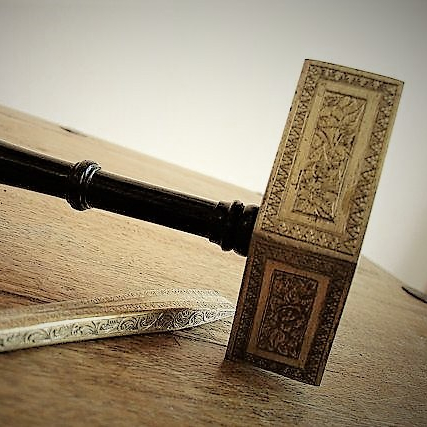
As the Christmas season draws to a close and we get ready for New Year’s parties and countdowns, yet another tradition comes to the forefront of our minds: New Years Resolutions. These yearly promises from ourselves to ourselves are taken more seriously by some than others, and we may make jokes about how they only last so long, perhaps only a week. Yet, the idea that we should set goals for ourselves, whether to take on new endeavors or remove unnecessary or unhealthy aspects of our lives is something which we should make last all year, much like the love and generosity of Christmas.
In Freemasonry, the symbol of the chisel represents discipline and education. Just as the chisel removes unneeded stone to reveal the jewel, form, or sculpture within, so can personal discipline remove those things which tarnish and distort our latent potential, and education can likewise chisel away our own ignorance, and reveal our inherent virtues.
Rough and Perfect Ashlars
 The journey of a Mason is often compared to the creation of a perfect from a rough ashlar, a polished stone from a rough and imperfect one. The chisel is the primary symbolic tool in that endeavor, in that it is what removes the excess stone until the surface is smooth. An ashlar is a rectangular stone used in walls with a flush face. Just as we are said to be making ourselves into stones in the temple of God, so is the smoothing of the self meant to make those stones that we are fit perfectly, and serve their purpose in the temple.
The journey of a Mason is often compared to the creation of a perfect from a rough ashlar, a polished stone from a rough and imperfect one. The chisel is the primary symbolic tool in that endeavor, in that it is what removes the excess stone until the surface is smooth. An ashlar is a rectangular stone used in walls with a flush face. Just as we are said to be making ourselves into stones in the temple of God, so is the smoothing of the self meant to make those stones that we are fit perfectly, and serve their purpose in the temple.
The removal of excess stone is the purpose of the chisel, and the removal of excess aspects of ourselves forms a major part of the personal discipline required to excel at life, to fulfill our personal destiny and serve our purpose. The uncivilized or ineffective person is much like the rough stone, with various unnecessary protrusions, such as a tendency to anger, drink to excess, speak with too loose a tongue, or engage in sloth activities such as watching television or scrolling social media for hours.
As we hopefully see from the 24-inch gauge, we have only a certain number of hours in the day, and to fritter them away on excess activities that contribute little to nothing to the labor of our evolution is a waste. Likewise, if we speak or behave in ways that are inappropriate, out of anger or even simple gossiping, excess aspects of our being spill over into the lives and minds of others, leading to unnecessary problems, and more waste of time. These are examples of the kinds of rough, protruding aspects of the self we are meant to chisel away from our lives, through discipline and self-control.
Education Removes Erroneous Beliefs
Informing ourselves with knowledge is likewise an important aspect of our development, yet how does this correspond to the chisel? If we reflect on it a bit, we can see that every piece of knowledge learned is the removal of some ignorance. After all, if we do not know certain things for certain, our minds will surely fill in the blanks, even if only with guesses or superstitions. We cannot help imagining what might be true until we know what is true, and so it is these baseless stray imaginings that are eliminated with the chisel of Masonic education.
We should also find that these two aspects of the chisel go hand in hand, for surely as we educate ourselves, our behaviors will also change. In a sense, it is always the darkness of ignorance which leads us to engage in lazy behaviors, for instance, even if on some level we know we shouldn’t. At that moment, at least, we forget or neglect, and simply indulge our baser nature’s desire to be stimulated and inert. Likewise for inappropriate anger, gossiping, and similar things. So, going beyond education, it is knowledge and remembrance which are truly required to eliminate these aspects of ourselves.
From New Year to New Day
Why do we choose to make declarations of improvement only once a year? While it’s fine to have a day to remind us all of the importance of this practice, we really should be tweaking and making changes to our lives every single day. Such is the evolutionary process, the way to change ourselves into something better than we have been, day by day. In Universal Freemasonry, we are taught to do precisely this, using the working tools as symbolic reminders of what it takes to become our ideal self, or as near to it as can be managed in this life.
What is your New Year’s Resolution?



